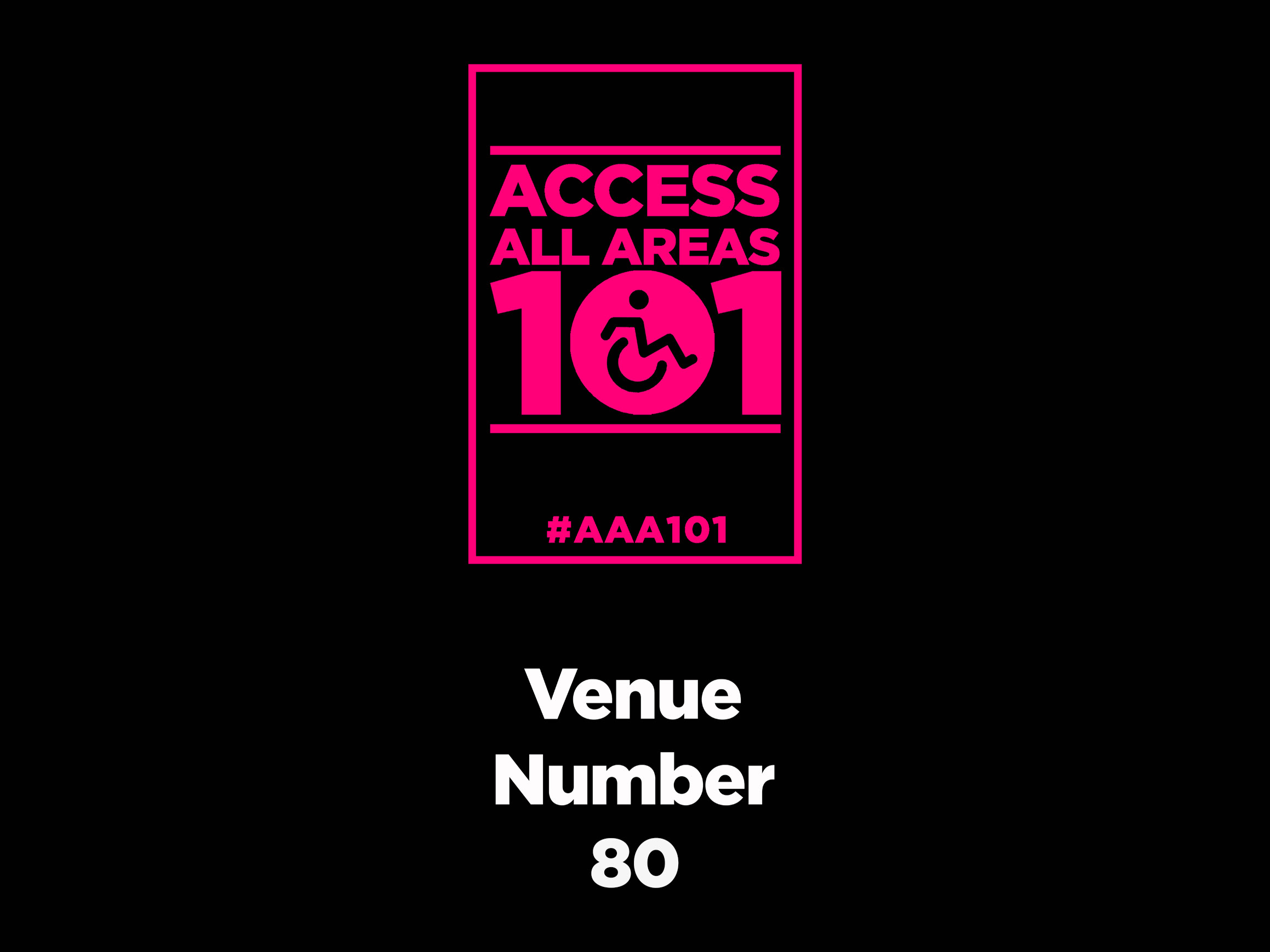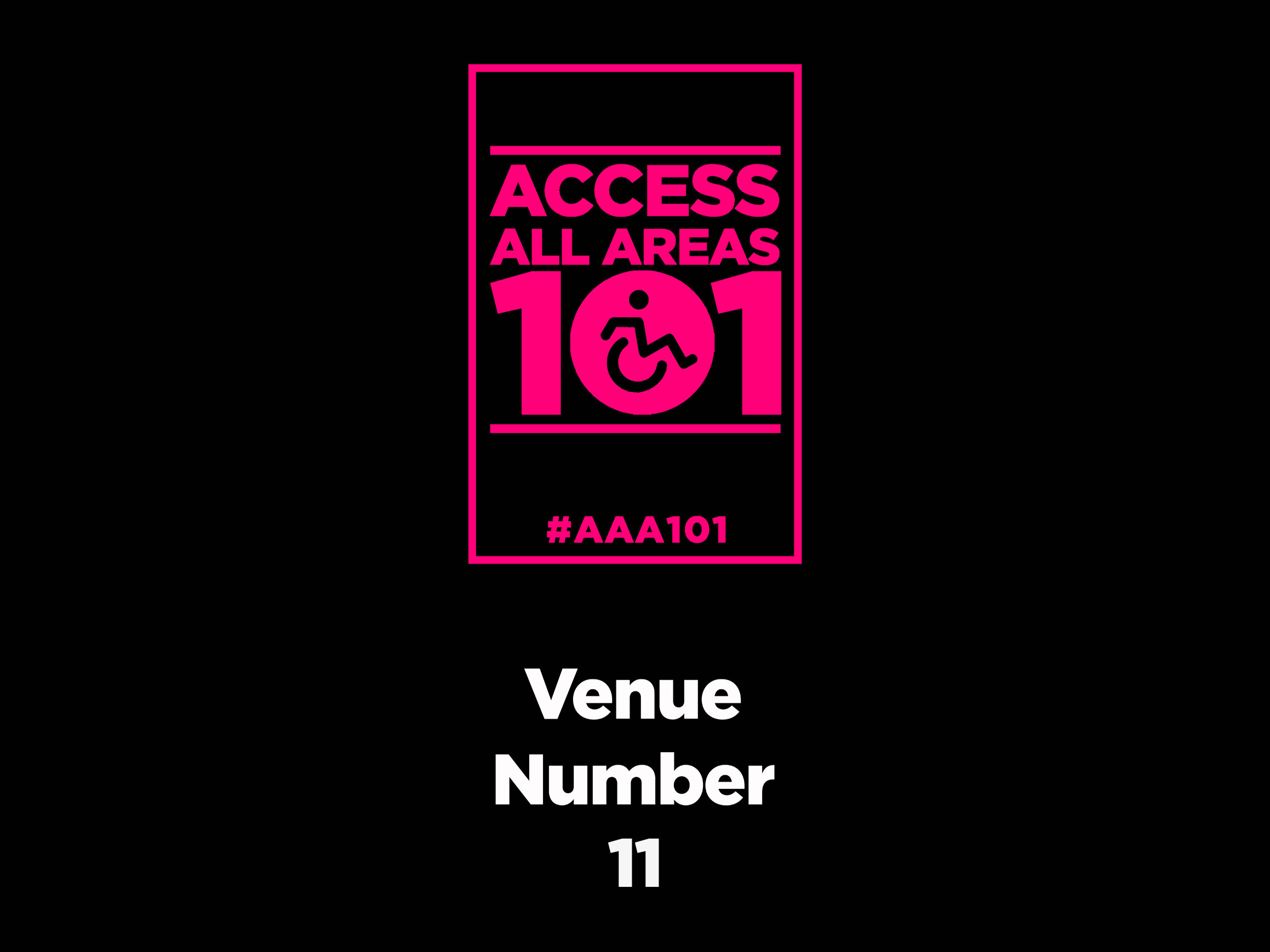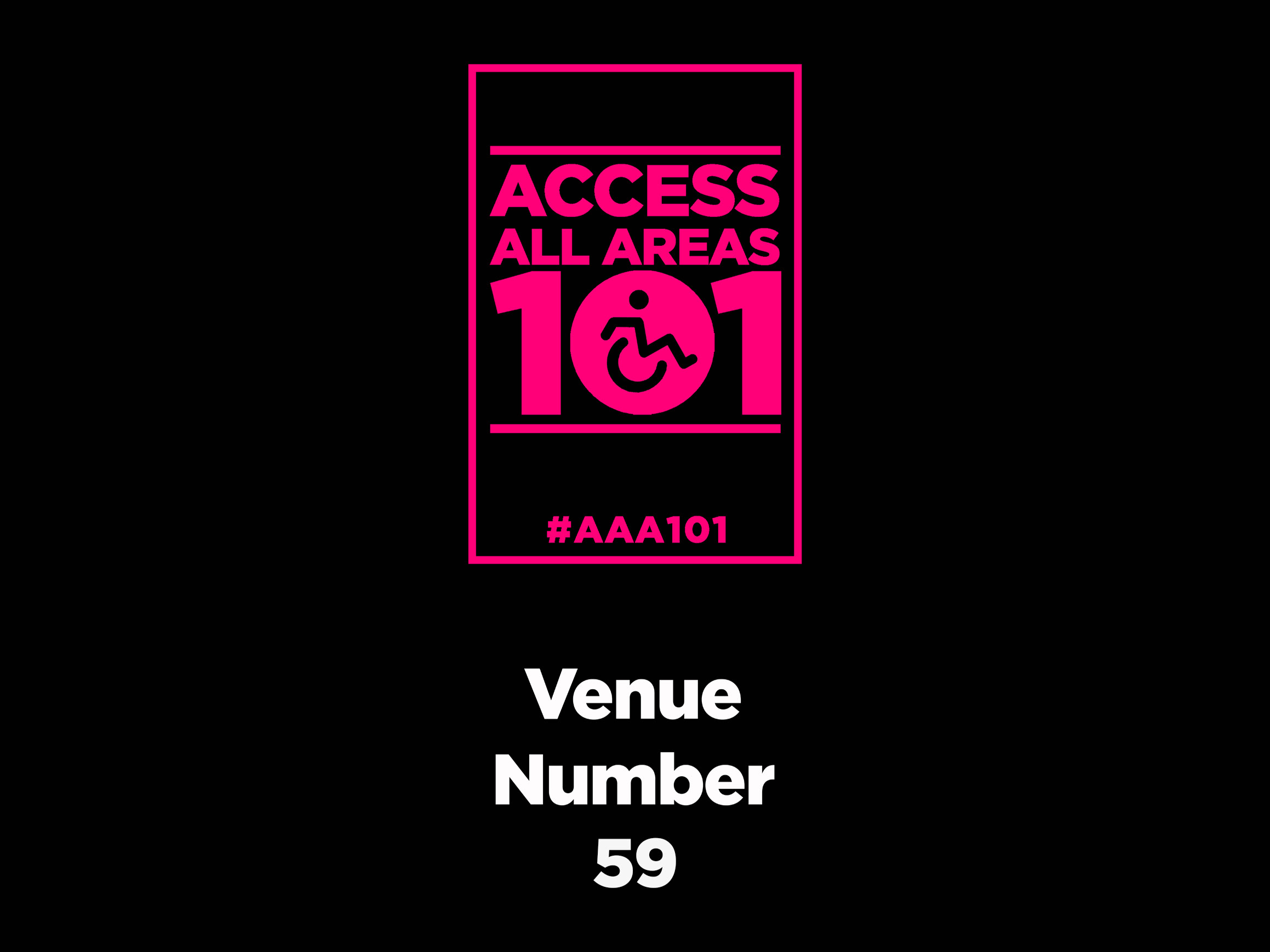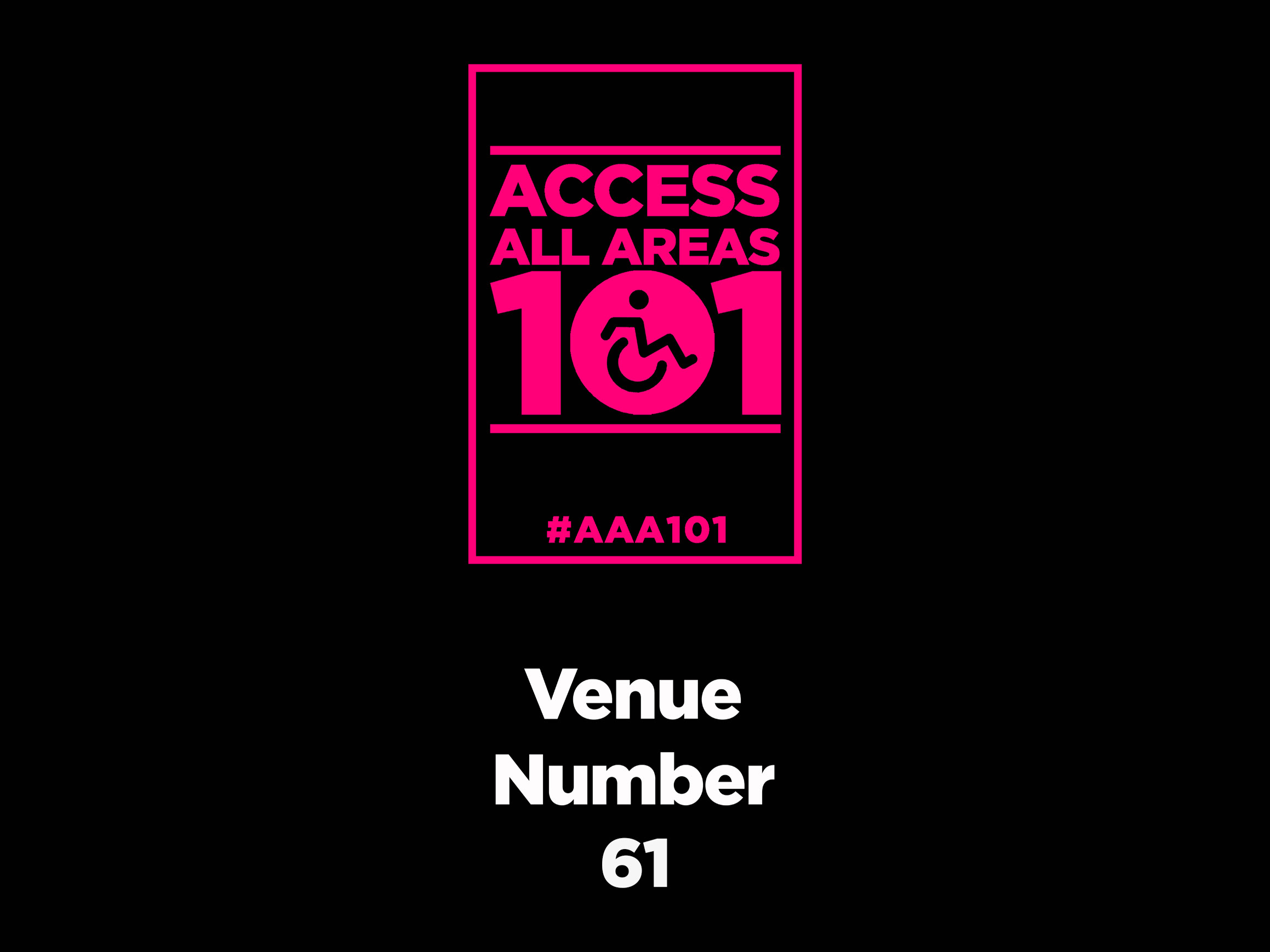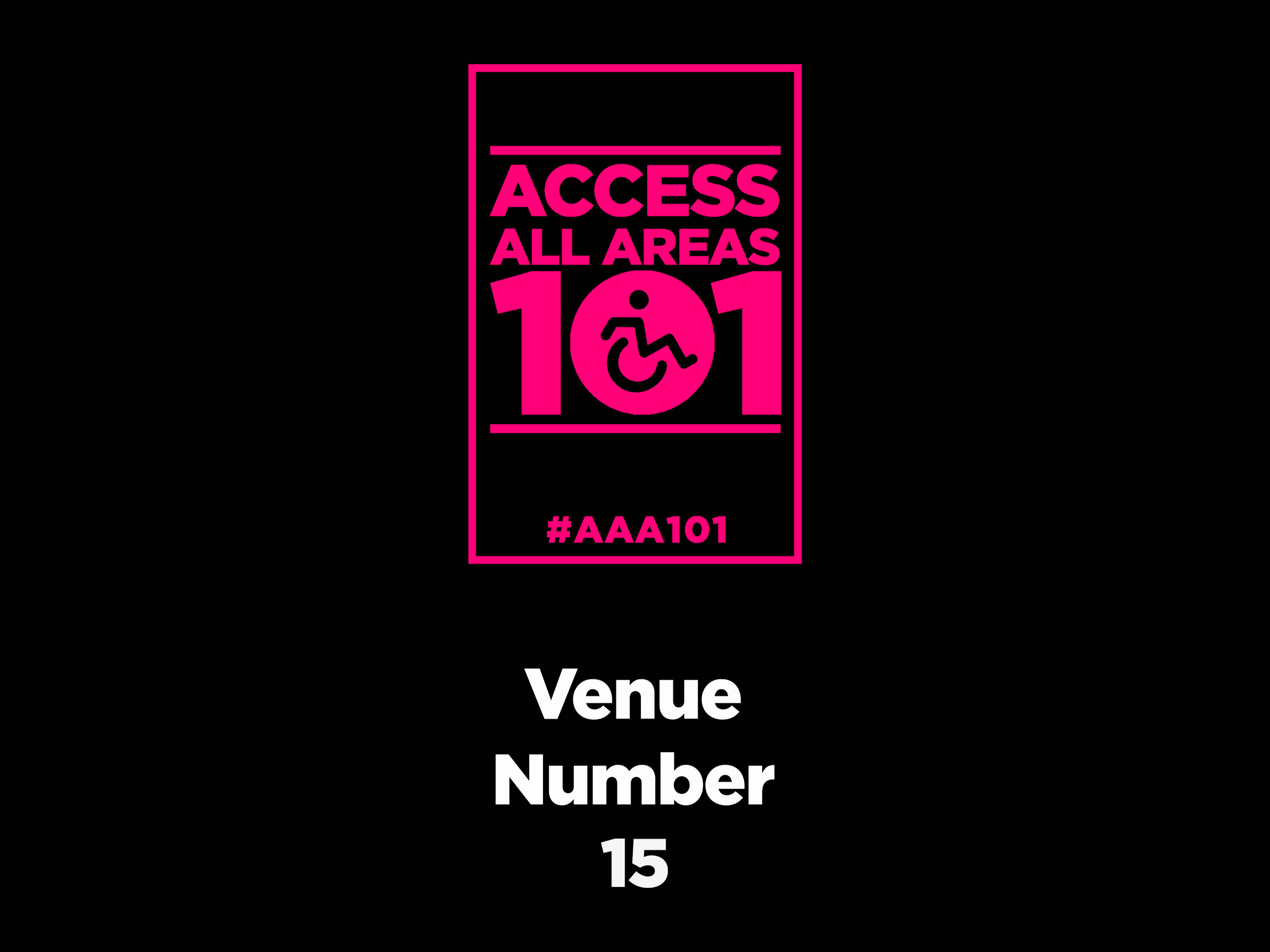A stadium built as the home to the 2012 Olympic and Paralympic Games and now the home to a Premier League football club should be accessible, right? Two out of my three previous visits have been terrible experiences, and I made my feelings known to the venue. Several years later, have improvements been made? Is the access customer experience better? Has it changed my mind that it is actually a good, accessible venue?
BOOKING
Accessible bookings for the London Stadium gigs can be made online through Ticketmaster. There, you’ll have the option to book ambulant disabled or wheelchair tickets, plus a companion seat.
If you have previously booked access tickets with Ticketmaster, your proof of eligibility is stored on file and attached to your account for a set period, allowing you to proceed with booking.
Suppose it’s your first time booking accessible tickets. In that case, you will receive an email within a couple of days of booking, requesting proof of eligibility for the accessible tickets. If you are unable to provide relevant evidence, your tickets may be cancelled.
As with all Ticketmaster purchases, your tickets will be added to your Ticketmaster account. You will receive multiple reminder emails, be notified of any updates in the run-up to the event, and have the opportunity to add your tickets to your Google or Apple Wallet on your mobile device.
Ticketmaster tickets have a dynamic barcode that refreshes regularly, so they can’t be screenshot. At highly populated events, internet connectivity can be very poor, and you may experience issues logging in to your account and accessing your tickets. It is highly recommended that you download your tickets in advance. You will usually receive them up to a week before the event.
In the run-up to the event, the information pages on the London Stadium website were updated with bag policies and event timings. I also received several emails from Ticketmaster directing me to these information pages.
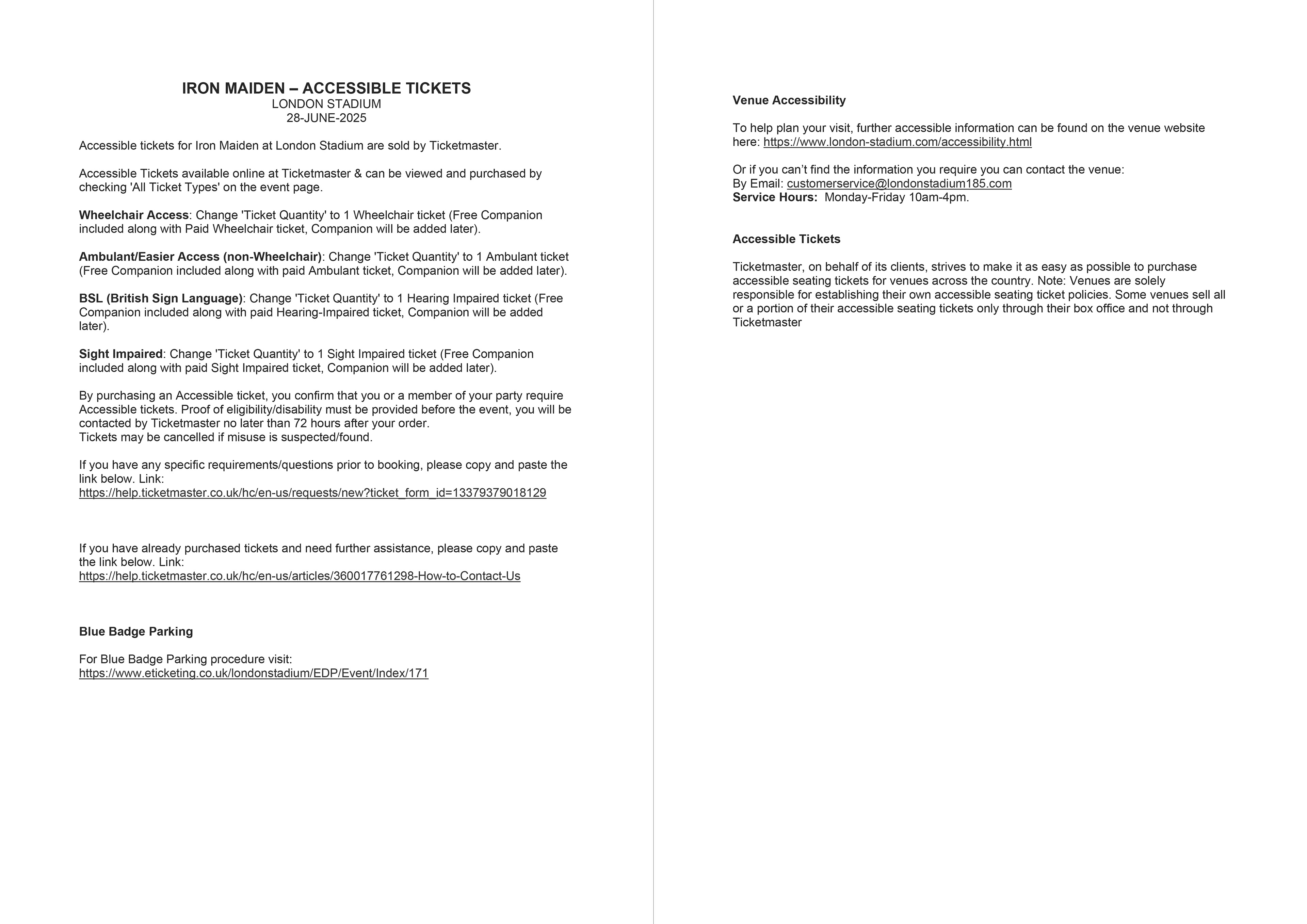

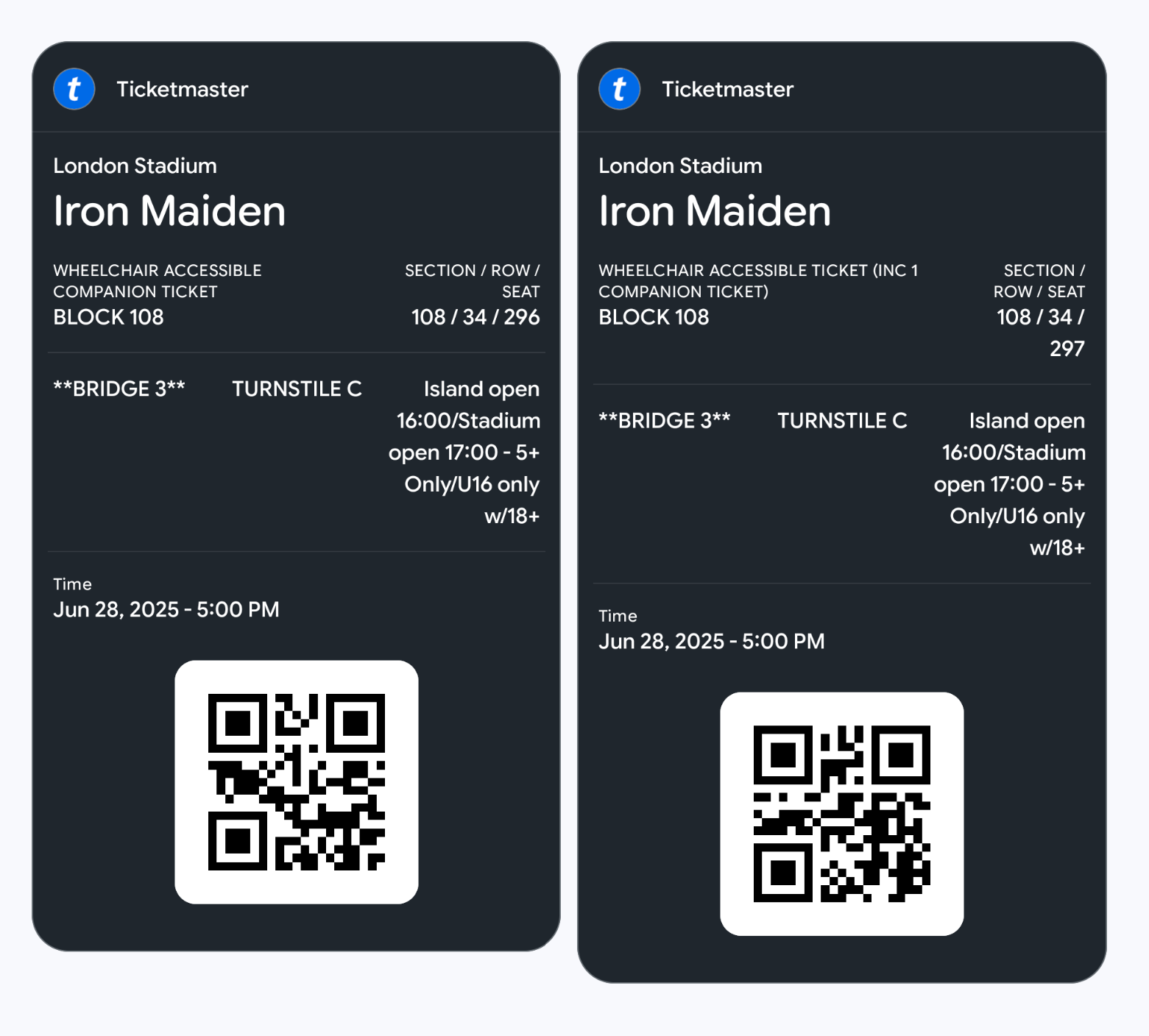
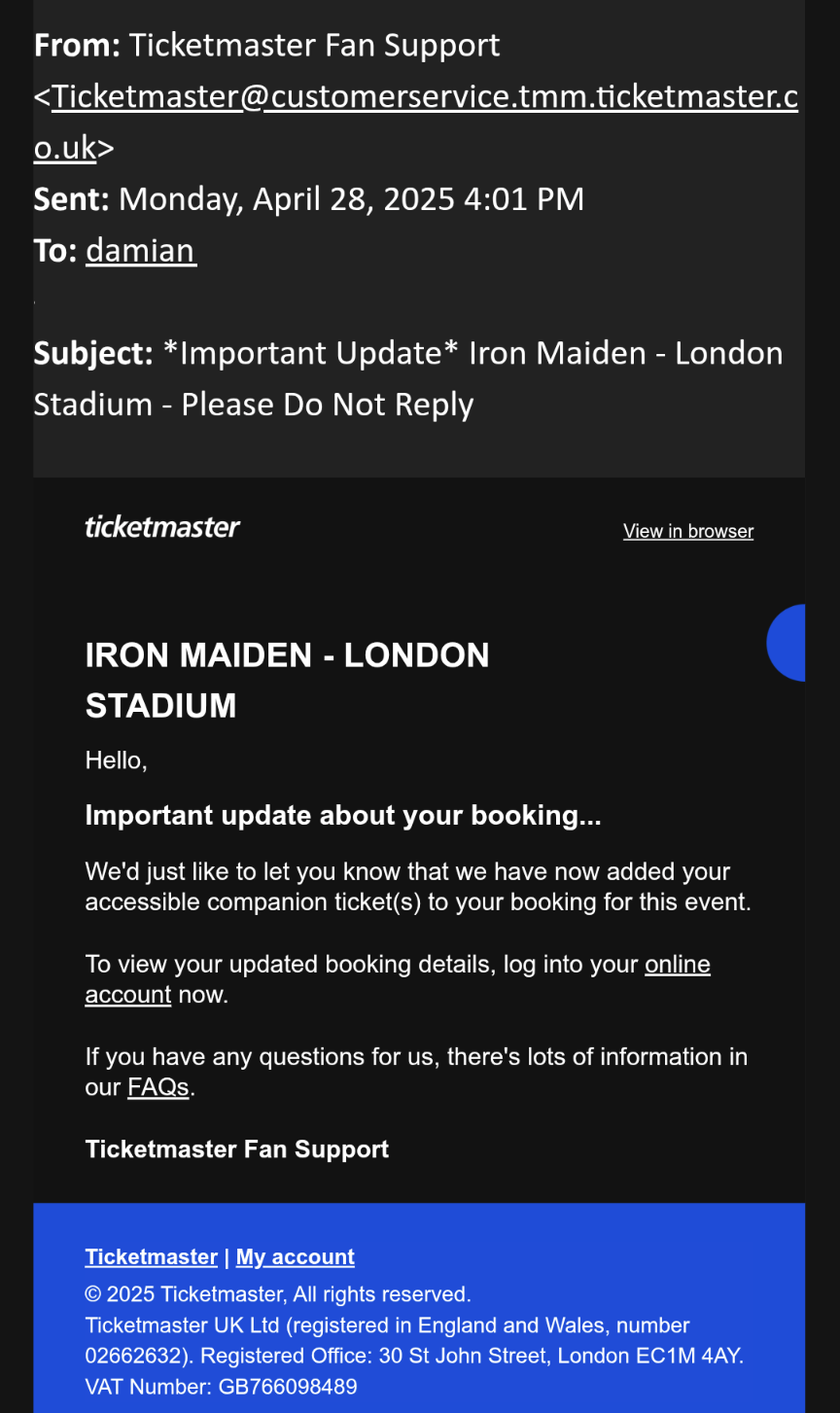


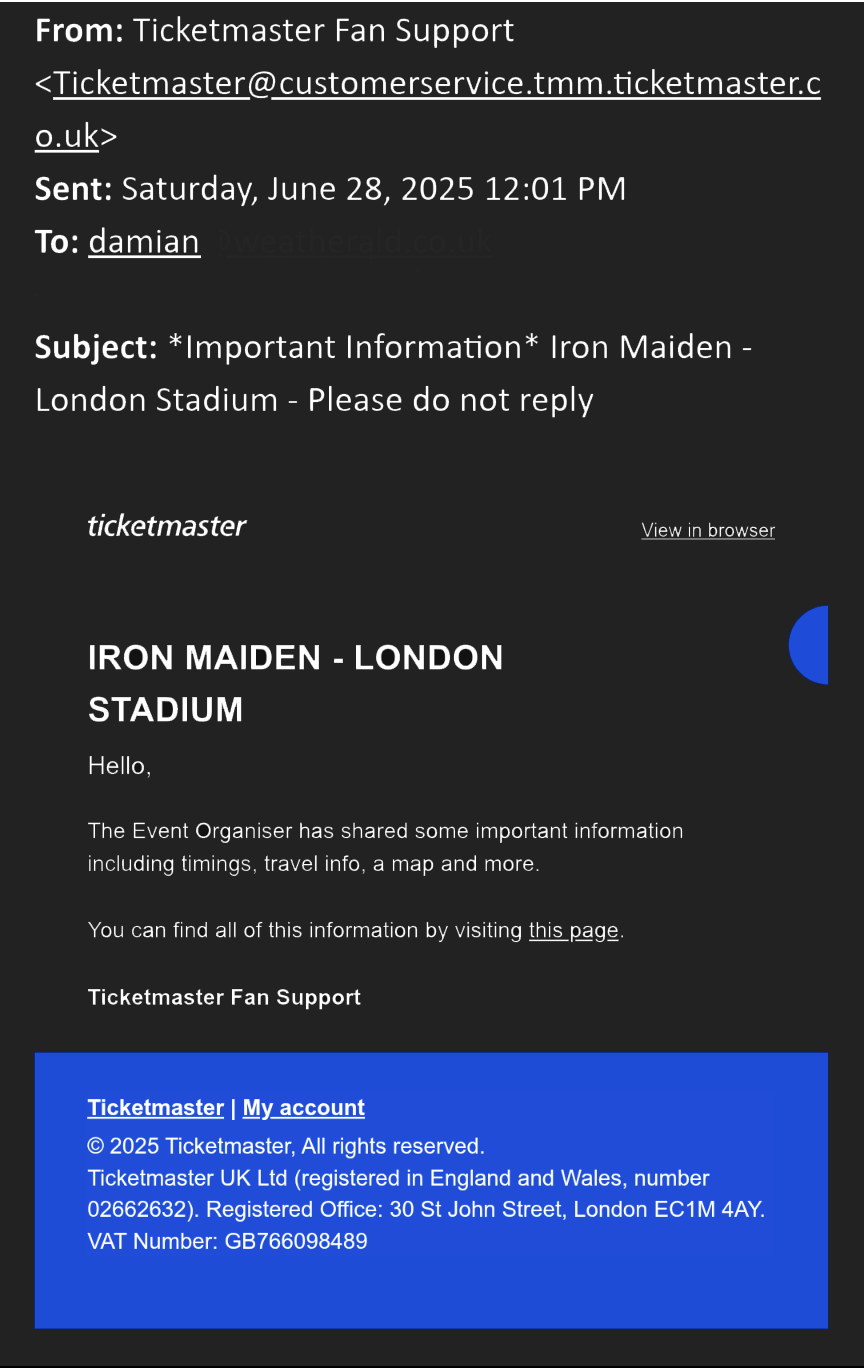
LOCATION AND GETTING THERE
The London Stadium (formerly known as the Olympic Stadium) is situated in the Stratford area of northeast London, in the Queen Elizabeth Olympic Park. The area underwent considerable regeneration for the 2012 Olympic Games. Since then, the area has continued to grow.
With the stadium now home to West Ham United football club and the large Westfield shopping centre, there are good transport connections, lots of accommodation options and no shortage of places to eat and drink.
The stadium is located away from the main shopping area and the significant train and tube stations.
You can walk or roll to the stadium from Stratford and Stratford International stations via the Westfield Shopping Centre. The area around the shops and the Stadium is step-free and relatively flat, and it takes around 20 minutes. However, it’s a nice scenic route on a nice day.
On event days, an accessible shuttle bus service is available. Access customers don’t need to pre-register; you can just turn up on the day.
The pickup point is located on the side of Platform 13 at Stratford station. At the platform, members of the access staff will be wearing blue jackets and holding shuttle paddles, making them easily identifiable.
The buses are wheelchair accessible, but only a limited number of wheelchair spaces are available. There are, however, several buses, so you shouldn’t have to wait long if there’s no space on the bus currently waiting.
The bus driver will assist you onto the bus and secure your chair in place.
The bus route then takes you from the station around to Bridge 3 at the stadium, which is the dedicated accessible entrance.
As you exit the bus, staff will be on hand to offer you directions or any assistance you may need. There is limited seating in the area, and there is very little shade. The day we were there, it was over 30 degrees C, and there was nowhere to hide and wait for the gates to open.
The bus driver also gave us a card. The card contained the necessary information for the return journey, as well as WhatsApp and text numbers to contact during the event if we required any accessible support.
Pudding Mill Lane DLR station is also close to the stadium, on the line between Stratford and Canary Wharf. It is a bit of an uphill walk or push up to the stadium from here, but it’s a less popular route, so it will likely be quieter.
Most stations in the area offer step-free access, with some using ramps for boarding and alighting.
The Elizabeth Line passes through Stratford station. These new accessible trains are spacious and cover a significant distance across London, extending to Reading, Heathrow Airport, Woolwich, and Romford.
The Central and Jubilee Underground lines also serve Stratford station.
Stratford International is a National Rail station served by Southeastern. The services run to and from various locations in Kent as well as St Pancras station in London.
There are a few TFL bus routes that serve the area, running along High Street, just a couple of minutes from Pudding Mill Lane station. Most of the area around the stadium is pedestrianised, and the main roads will be closed on event days.
If you prefer to drive, you can pre-book Blue Badge car parking, situated near Bridge 3, the main accessible entrance. Nothing online states the prices.
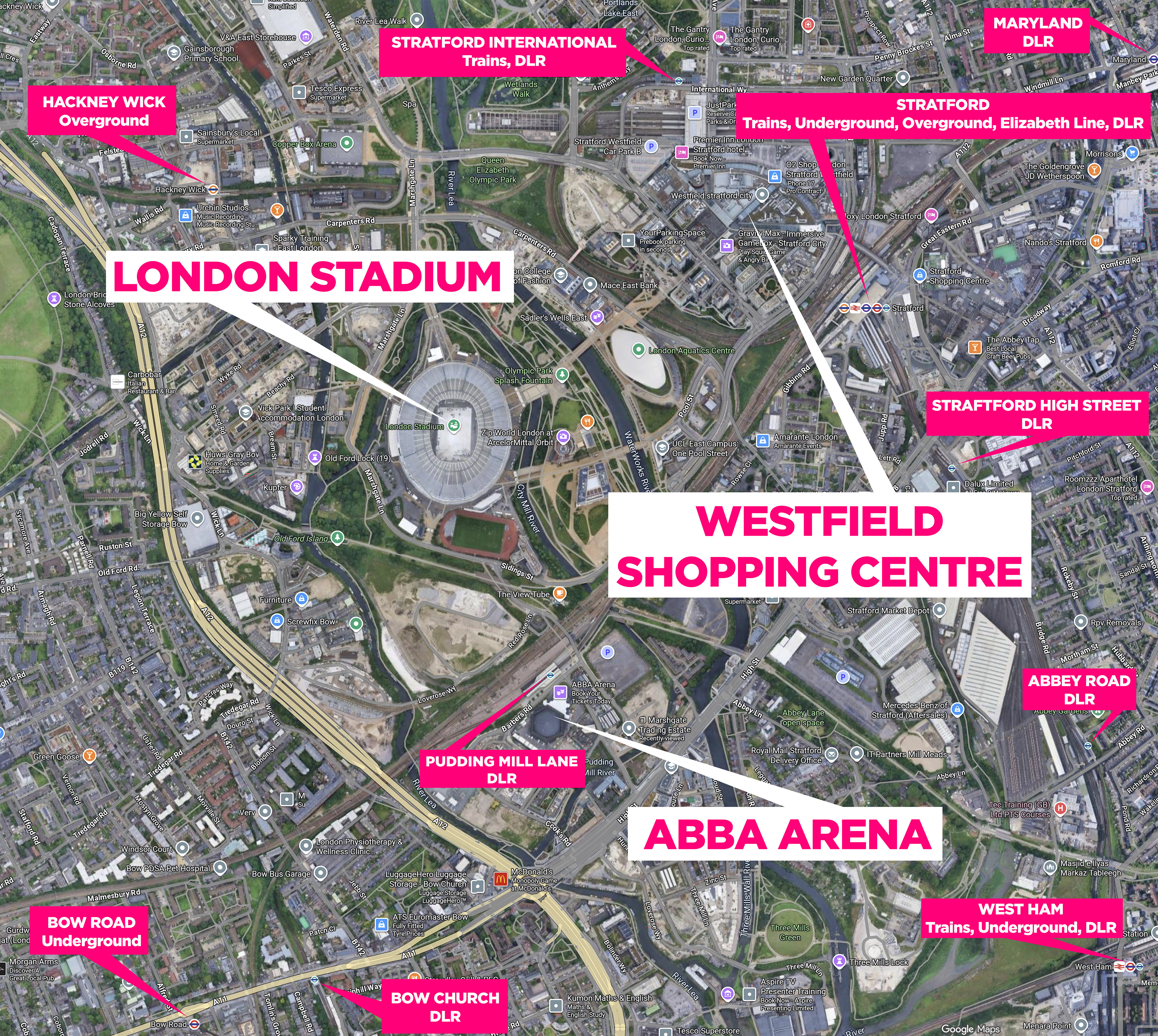

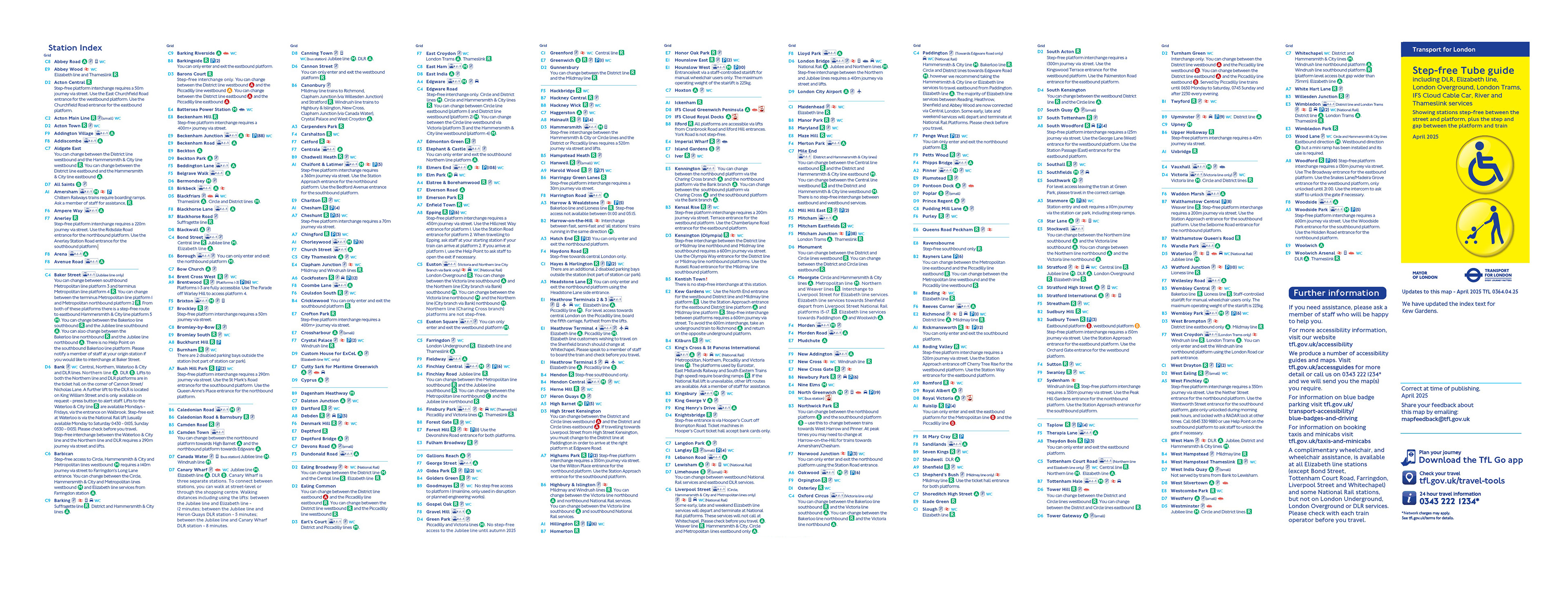
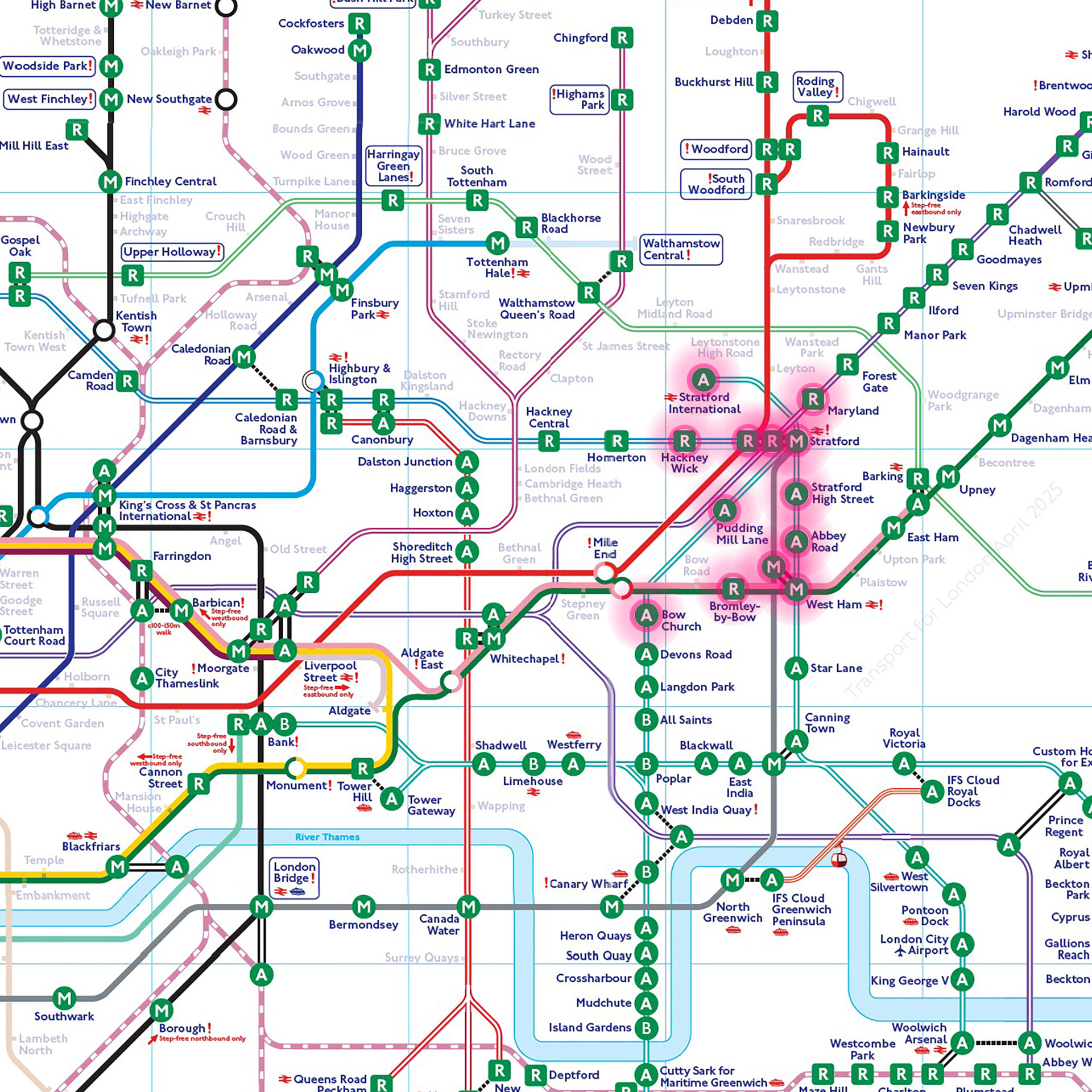
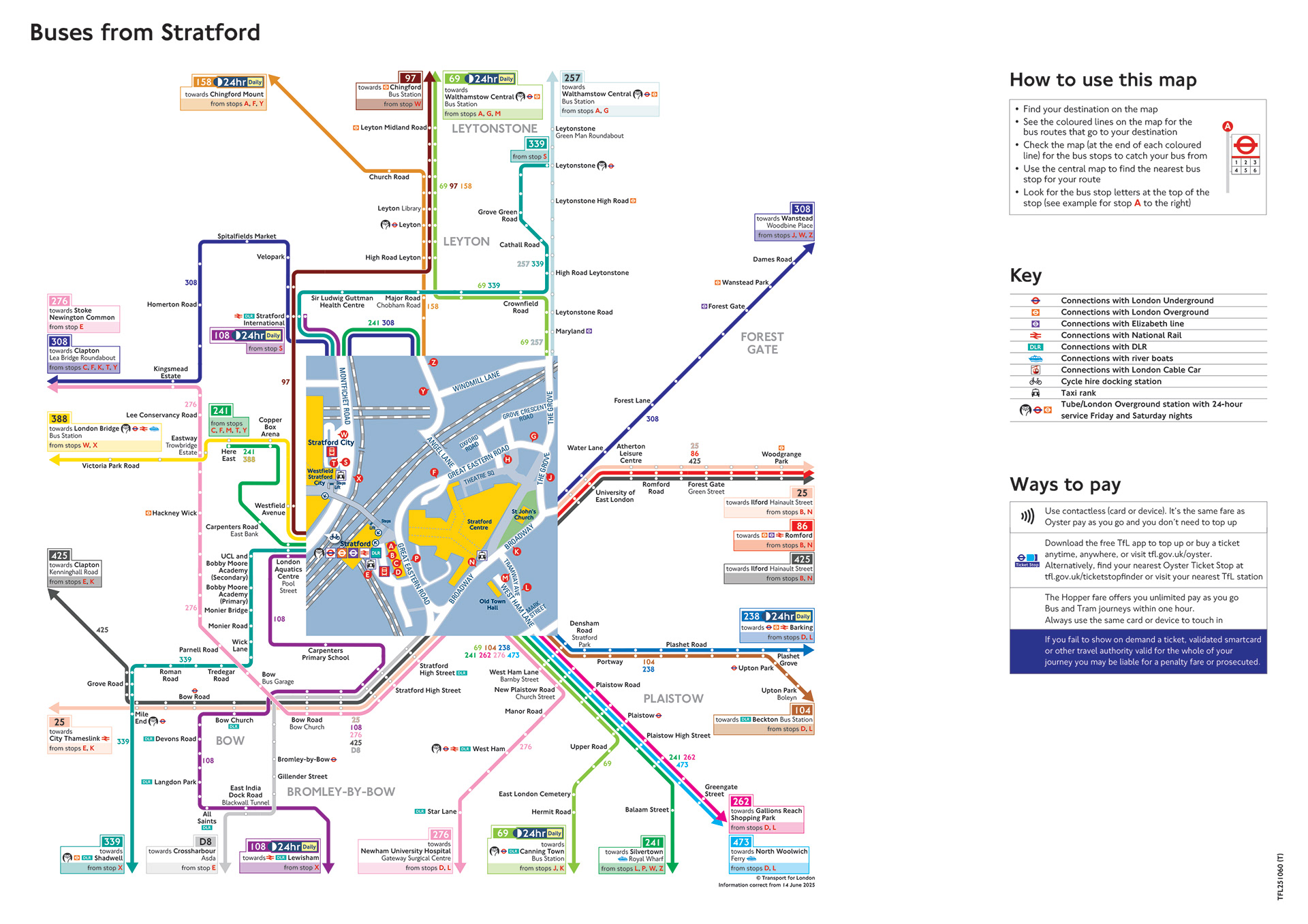
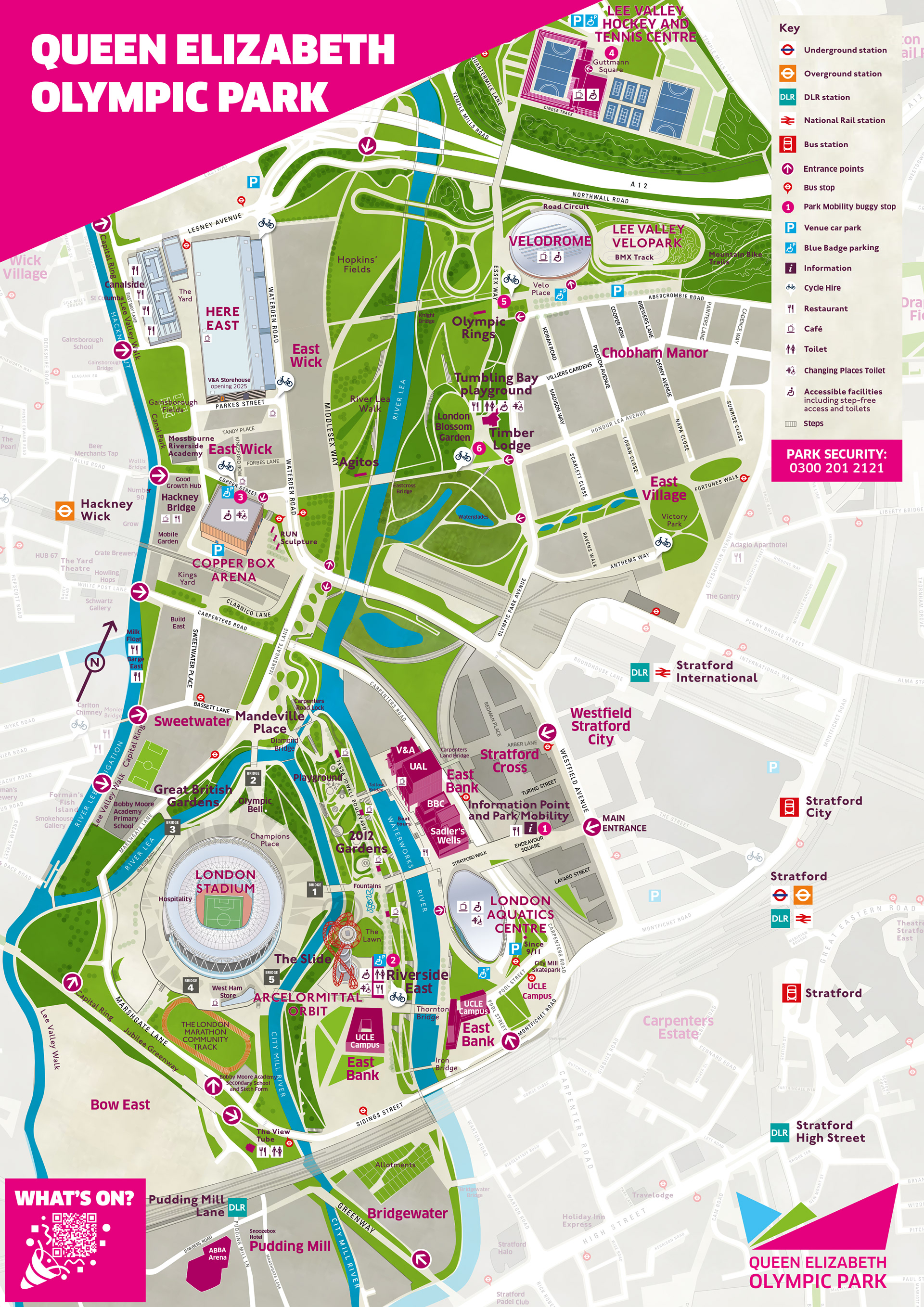
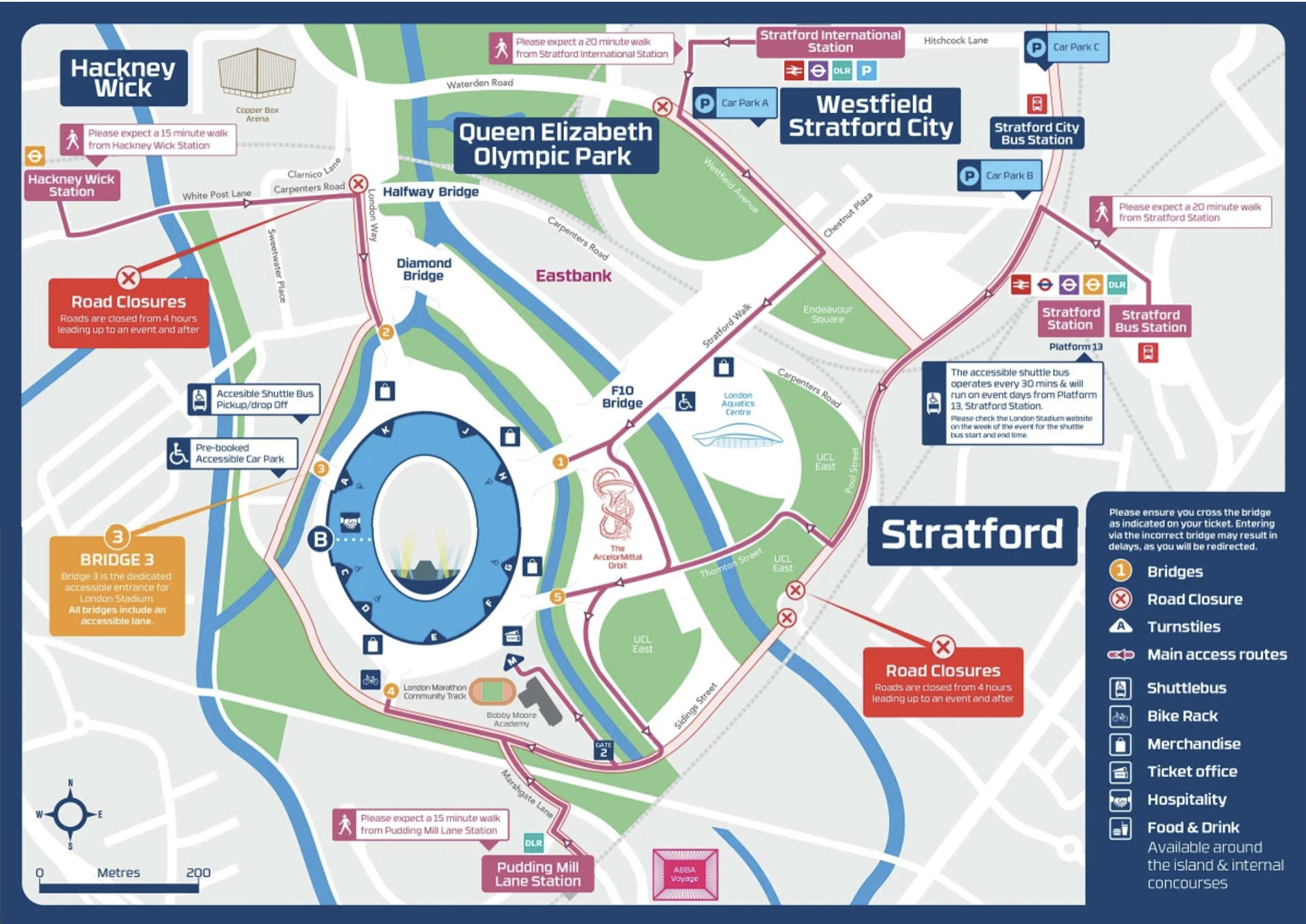

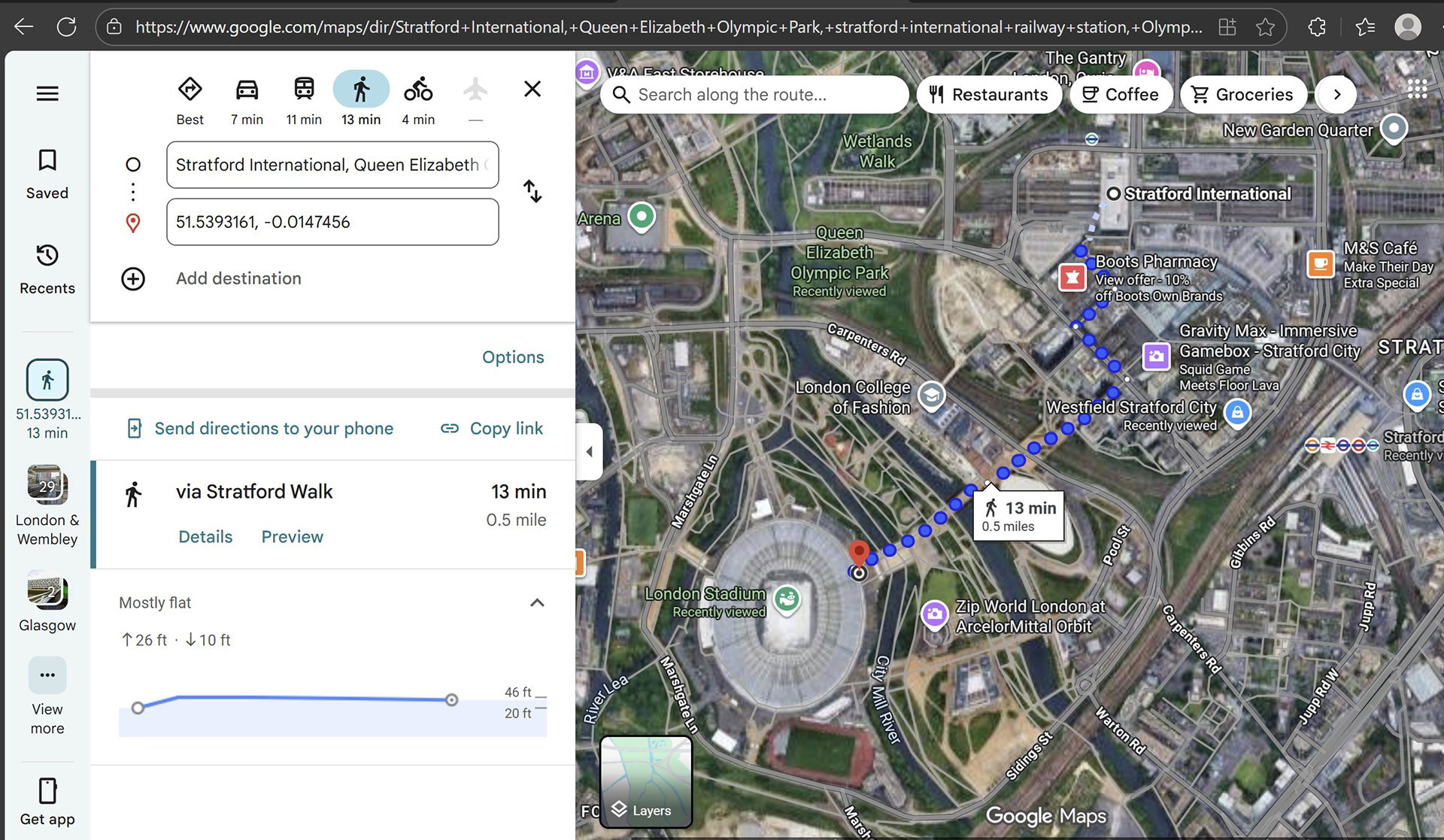

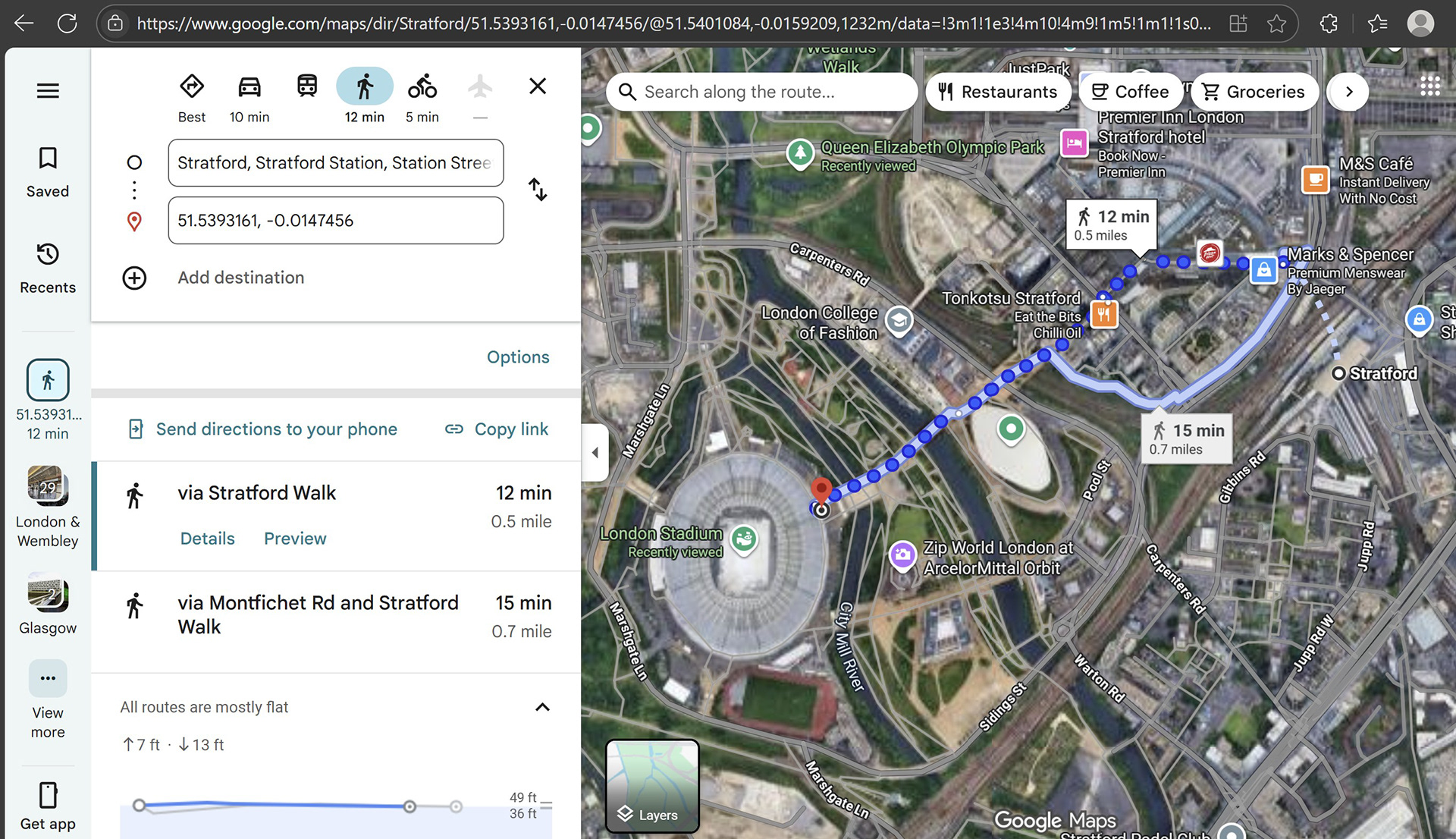
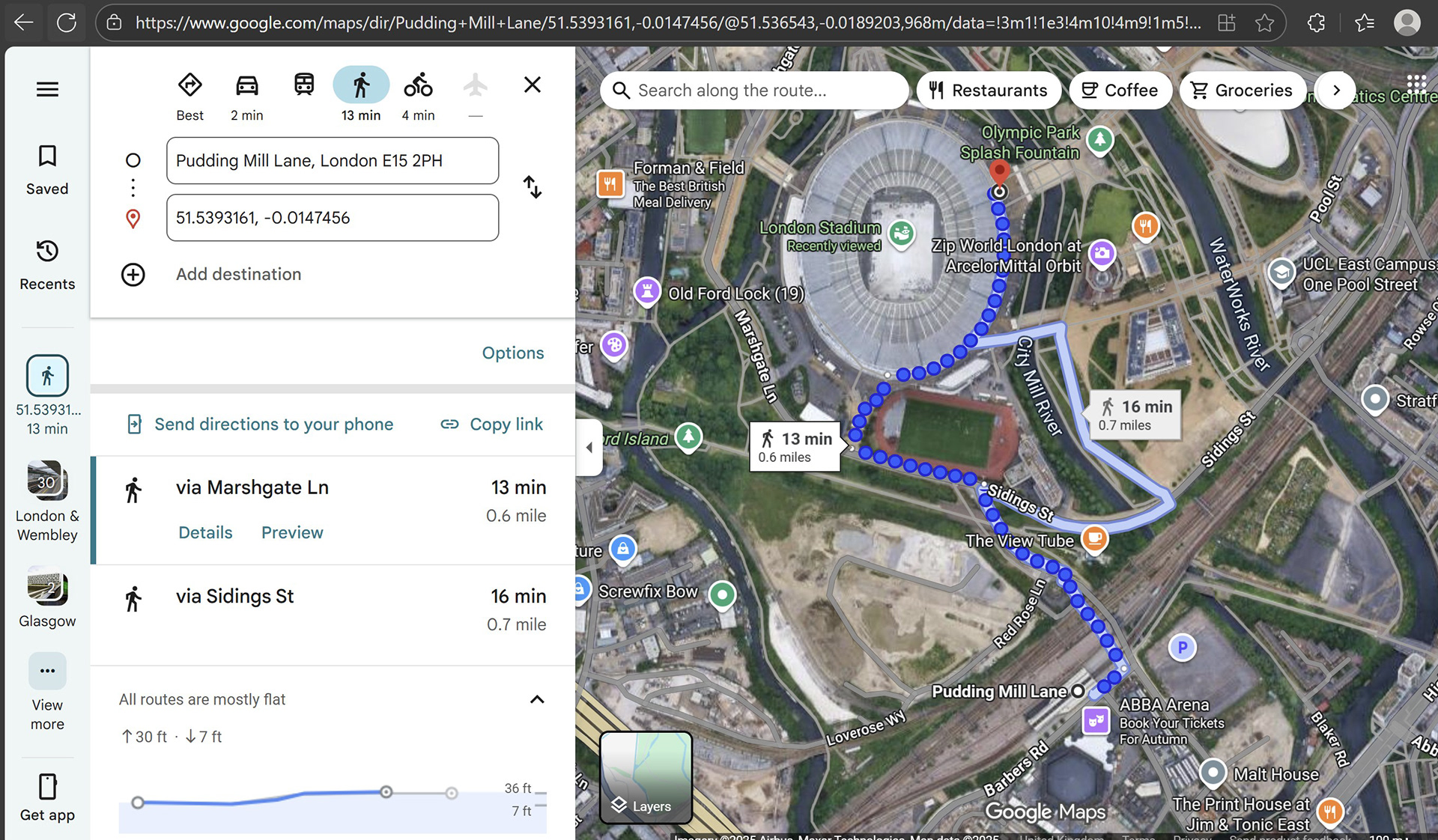

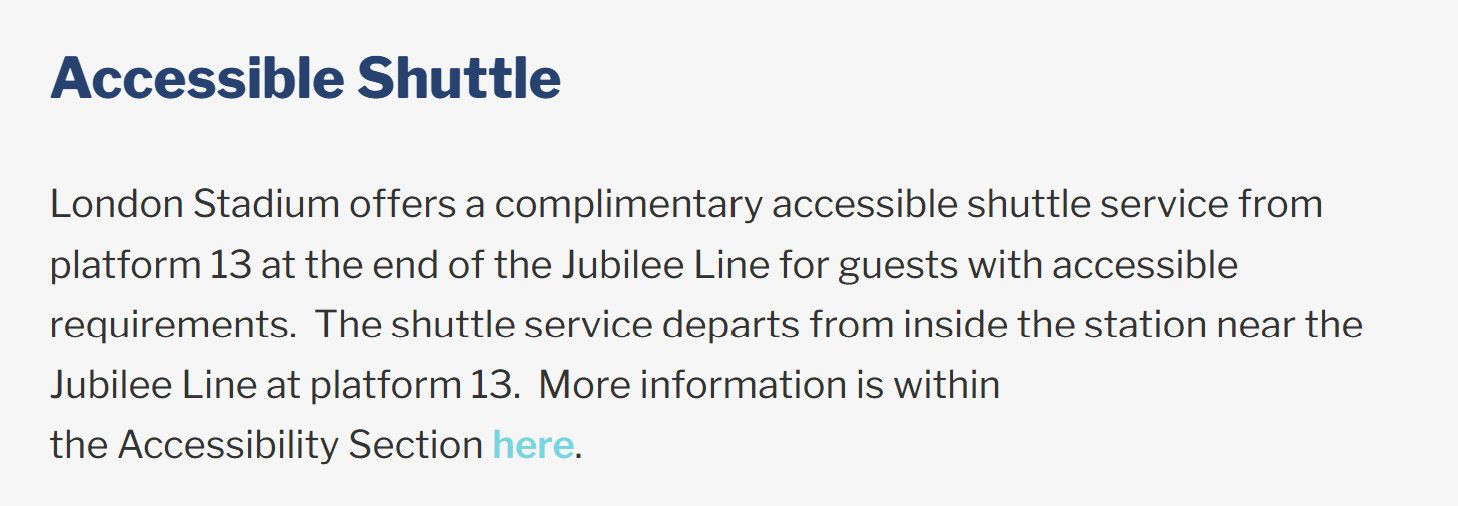

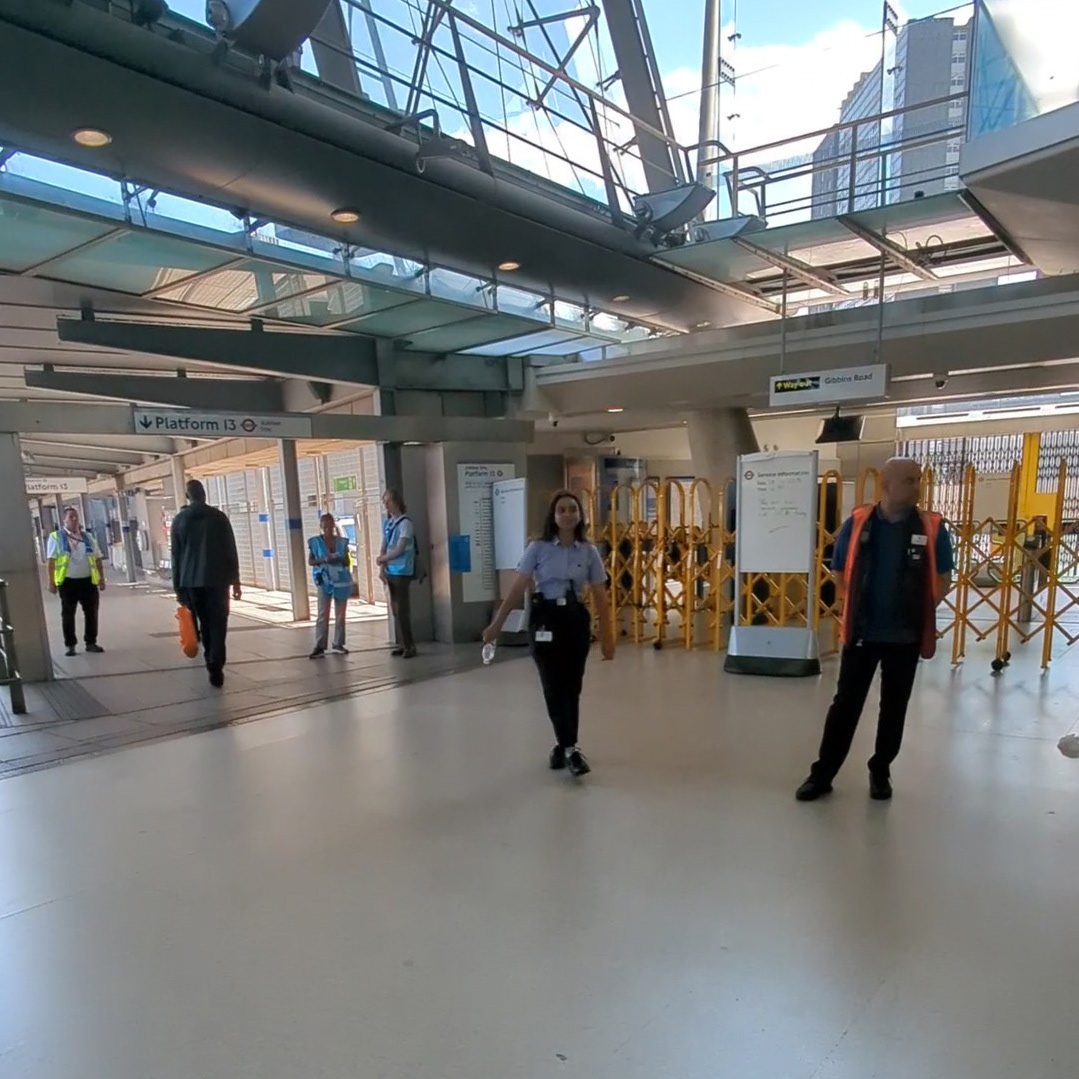
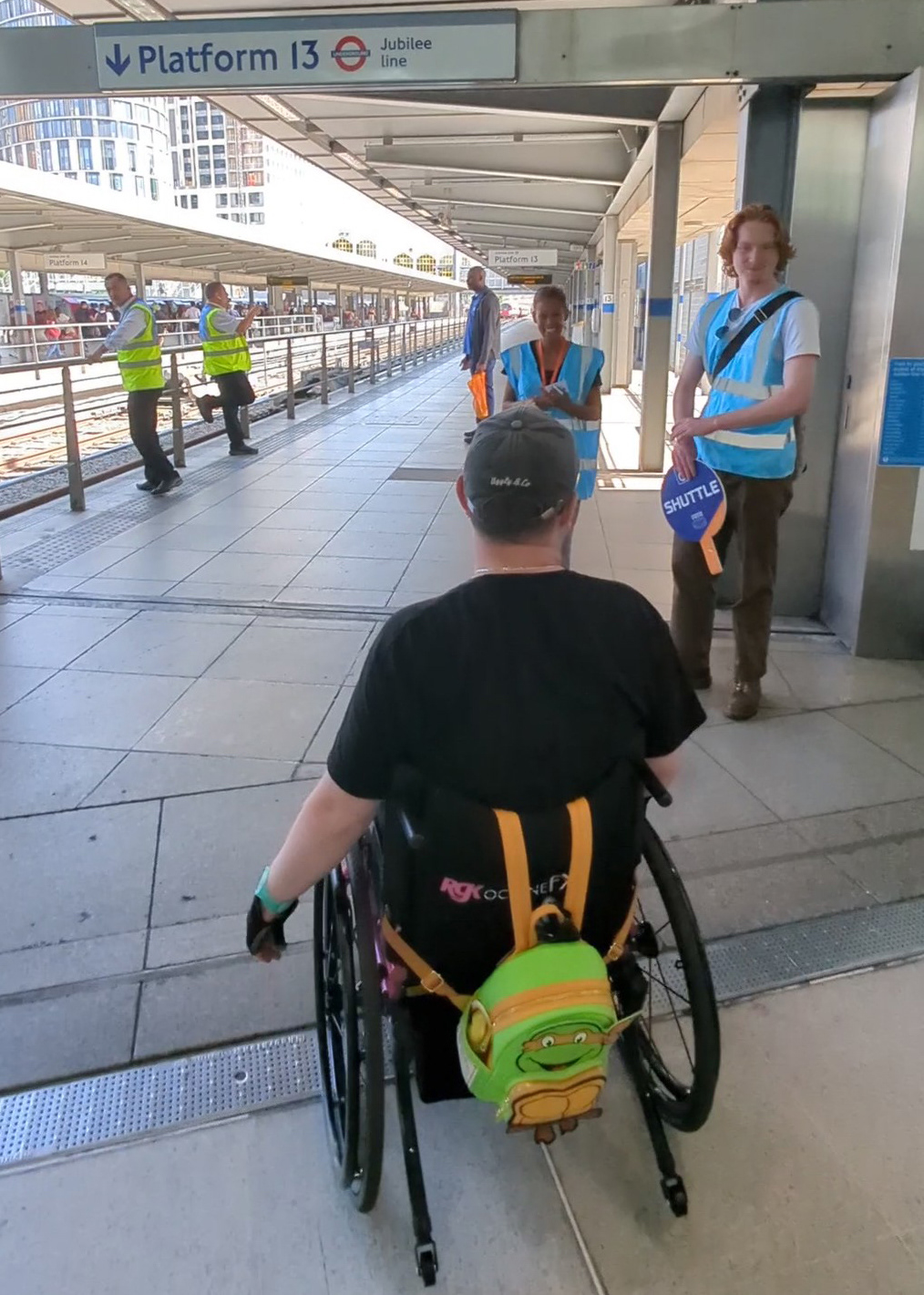
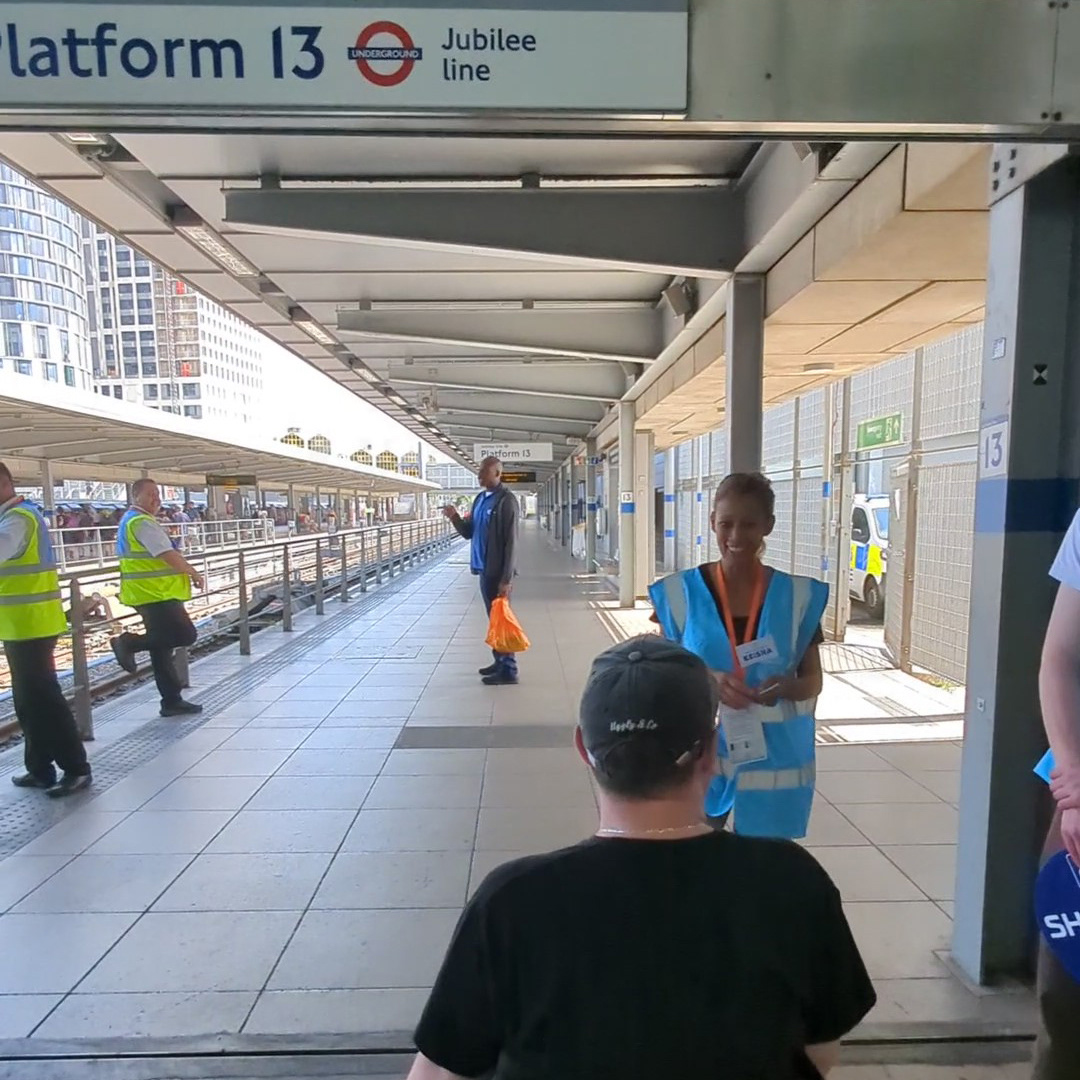
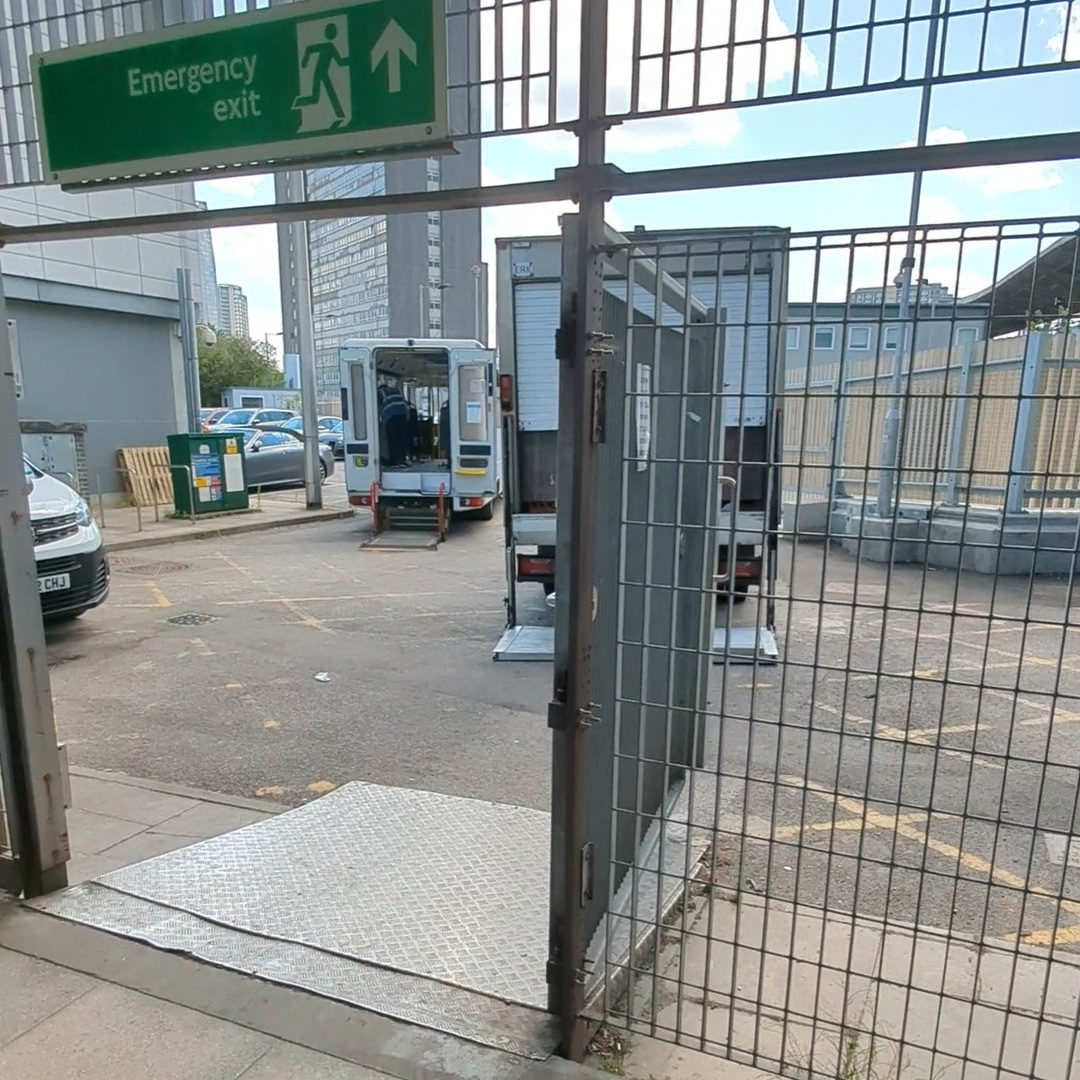
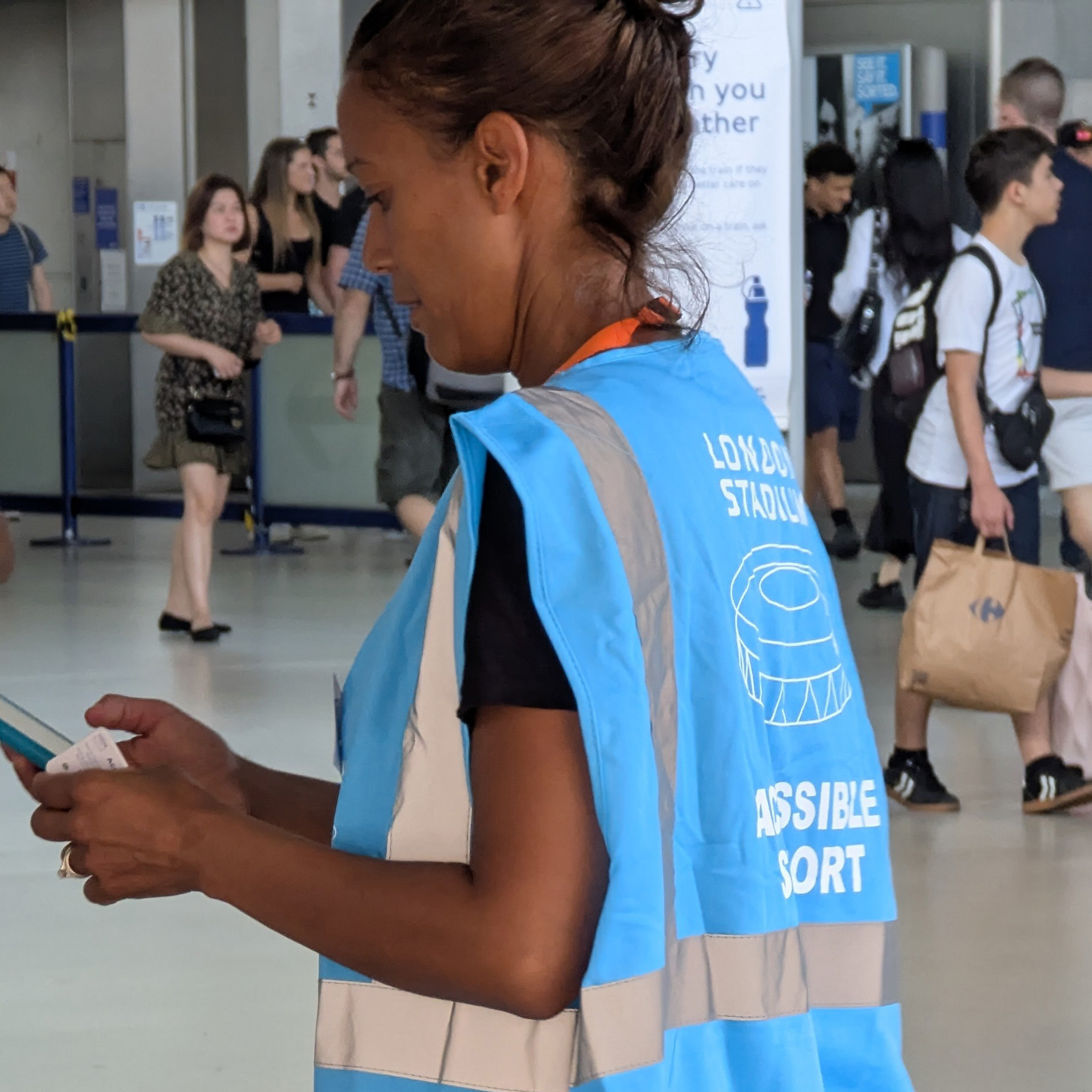
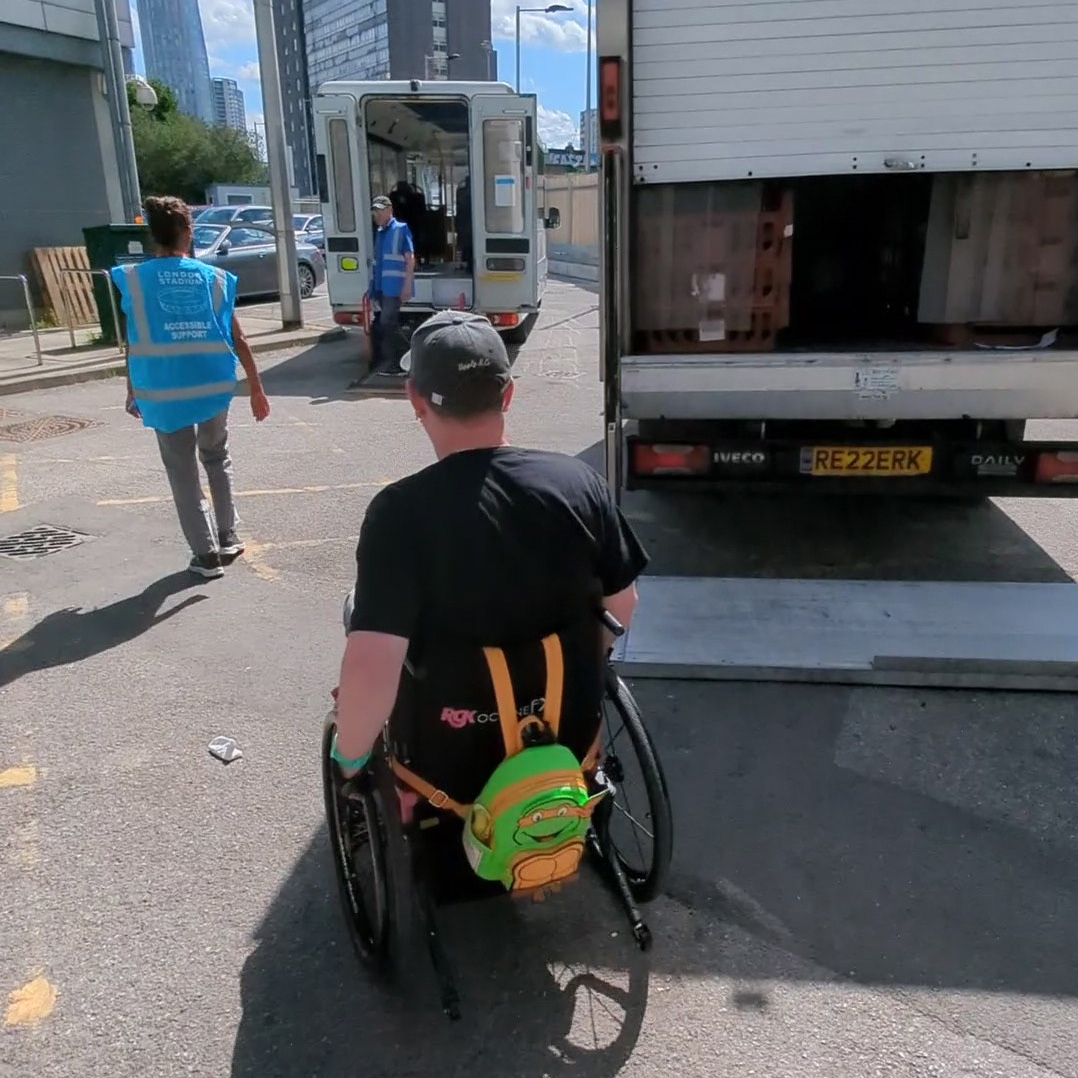
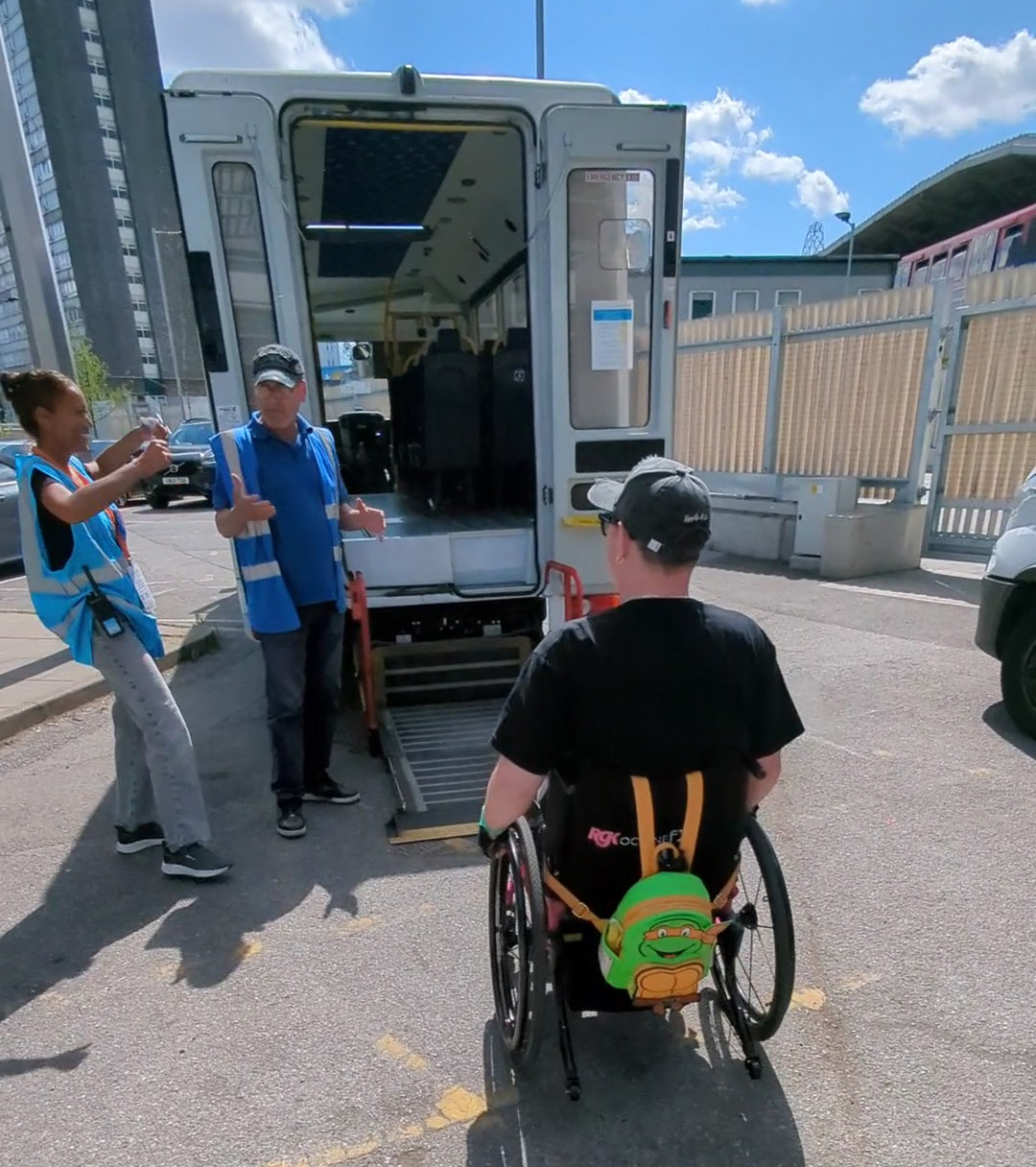

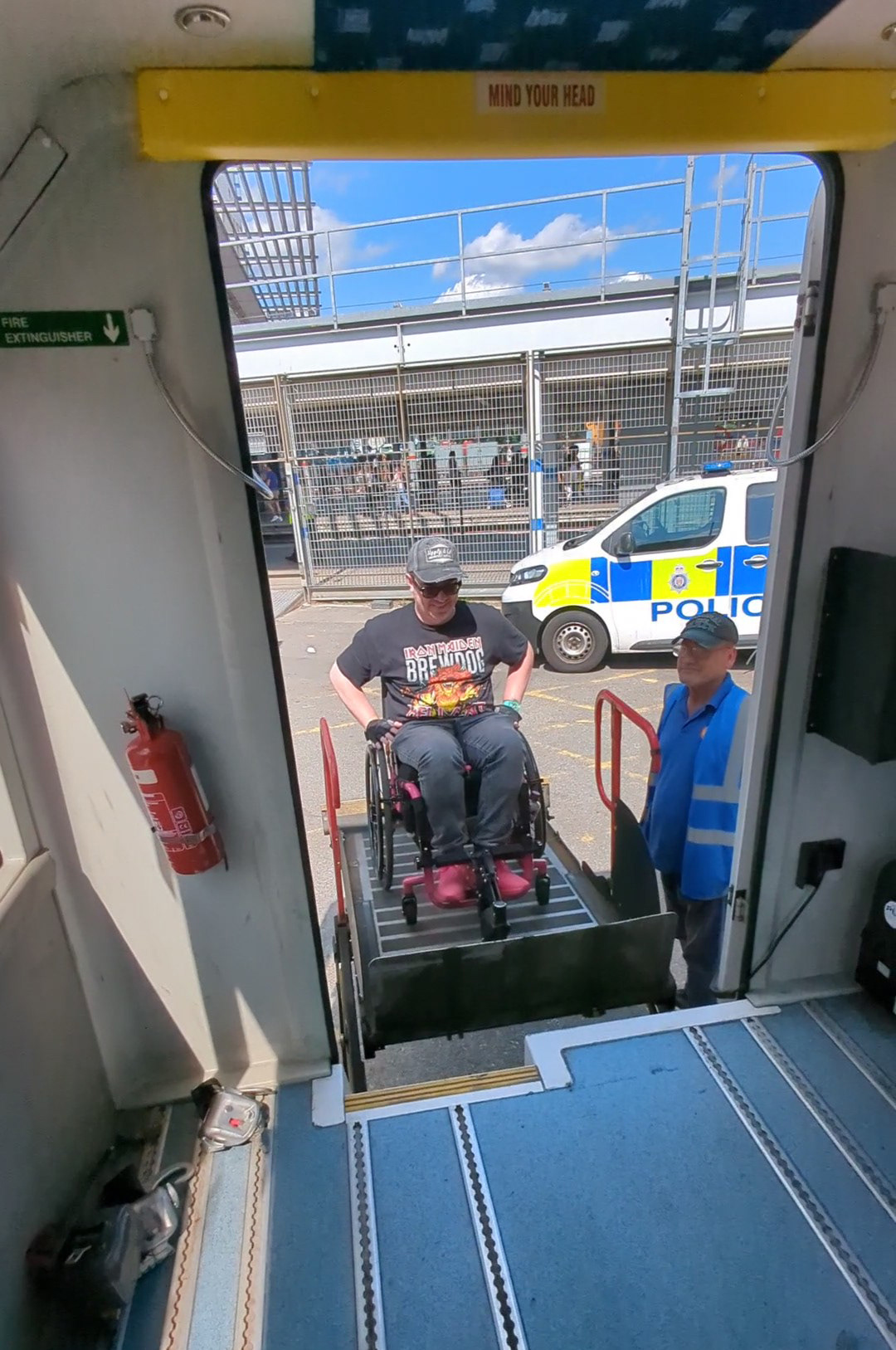
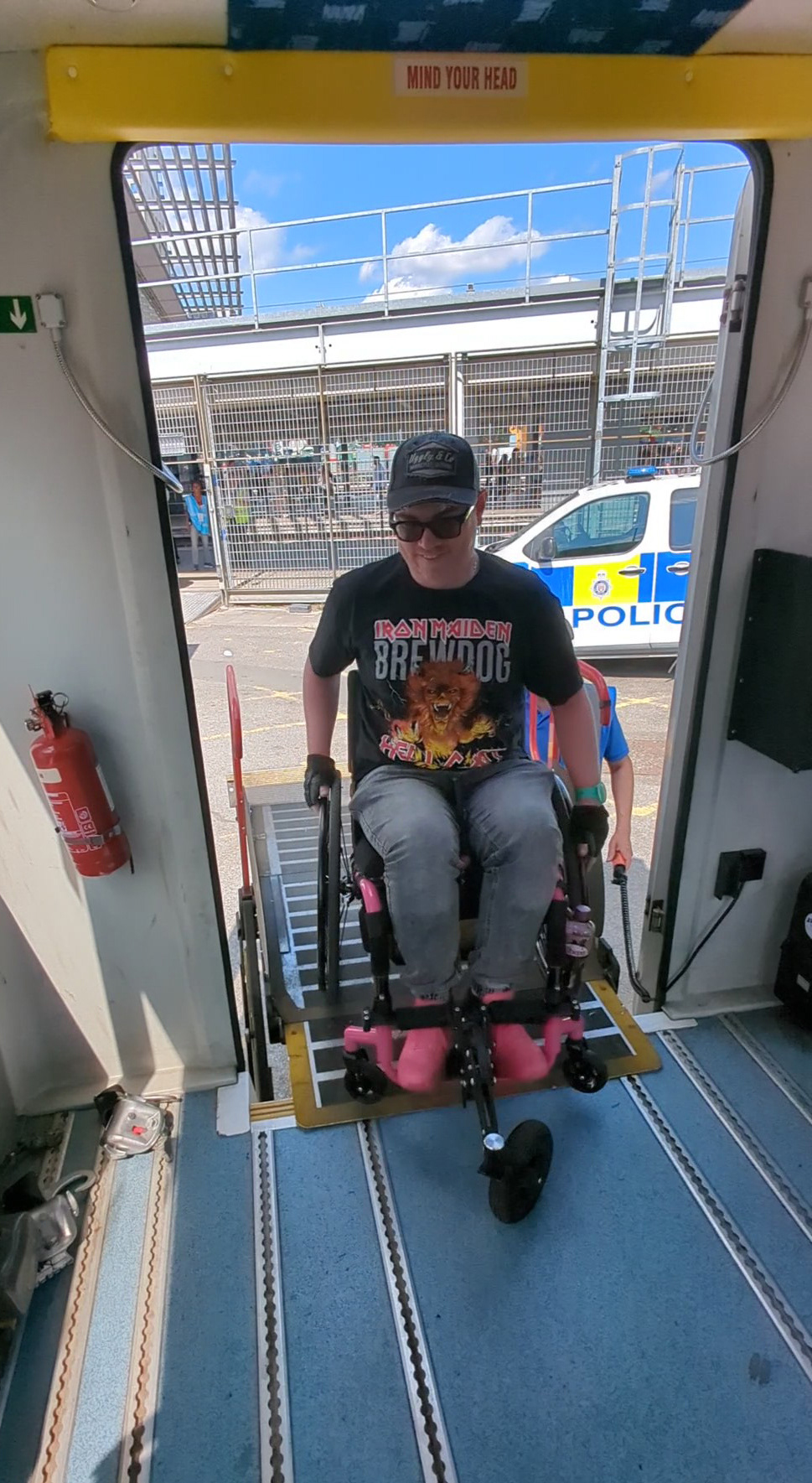
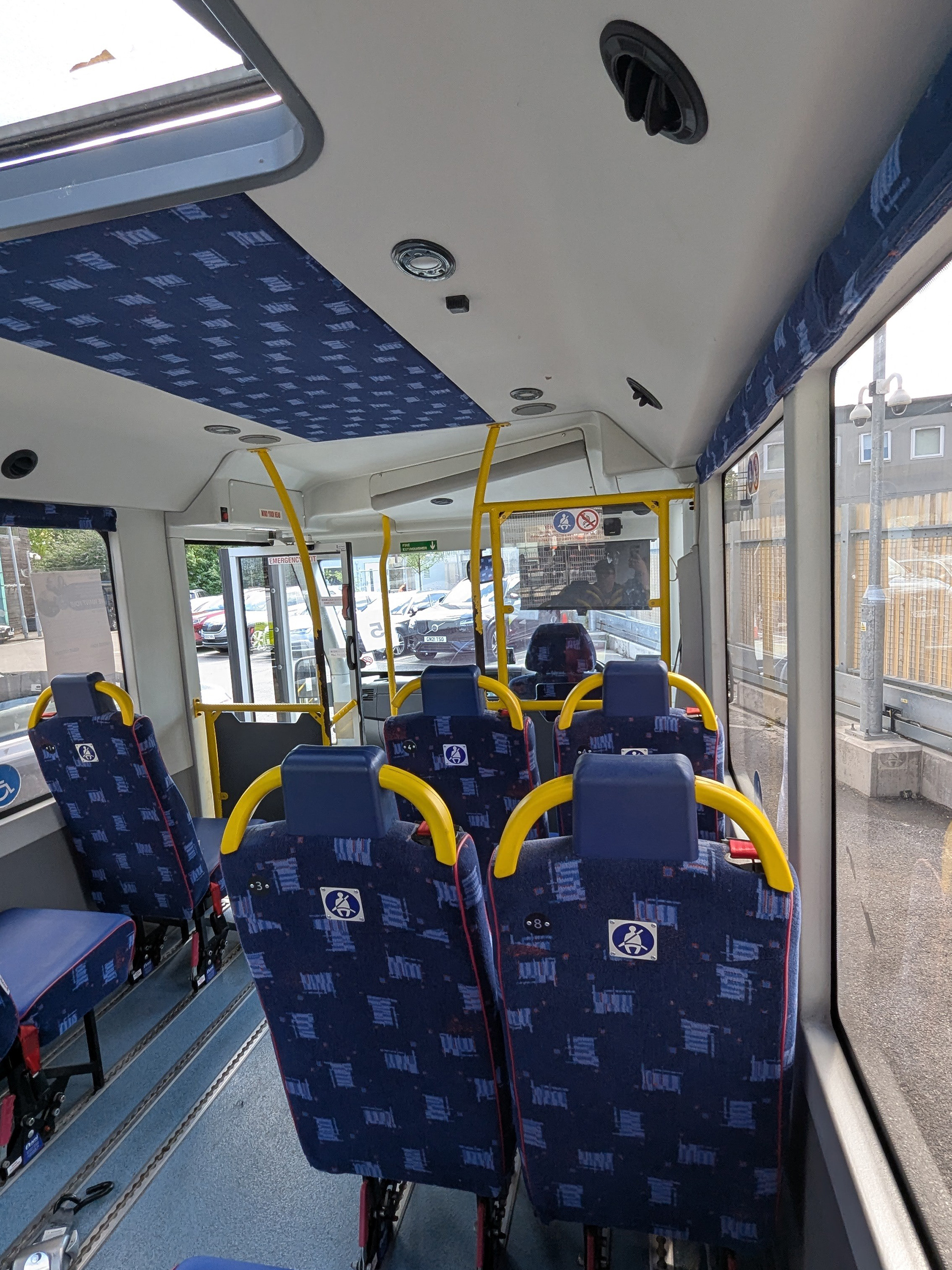
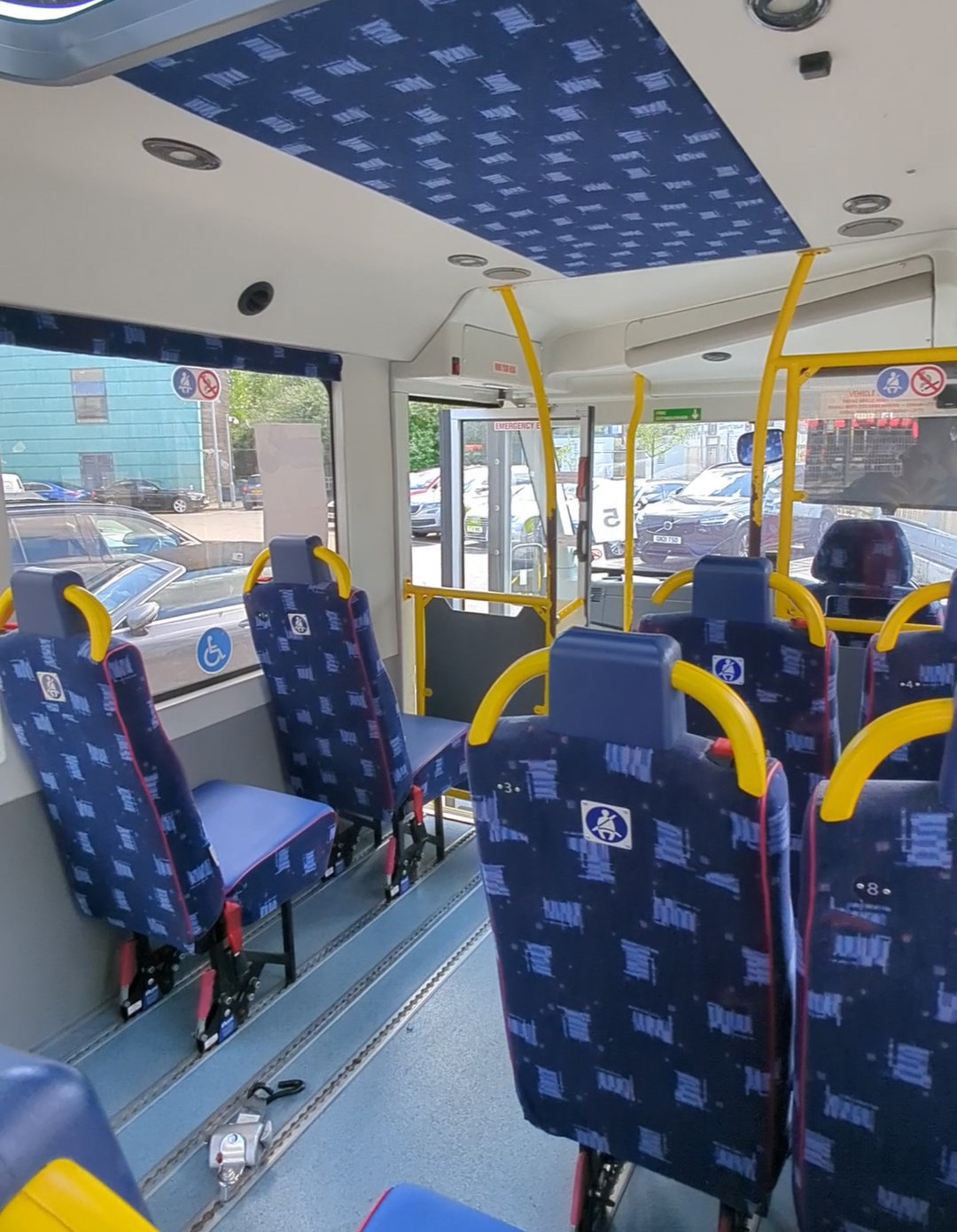
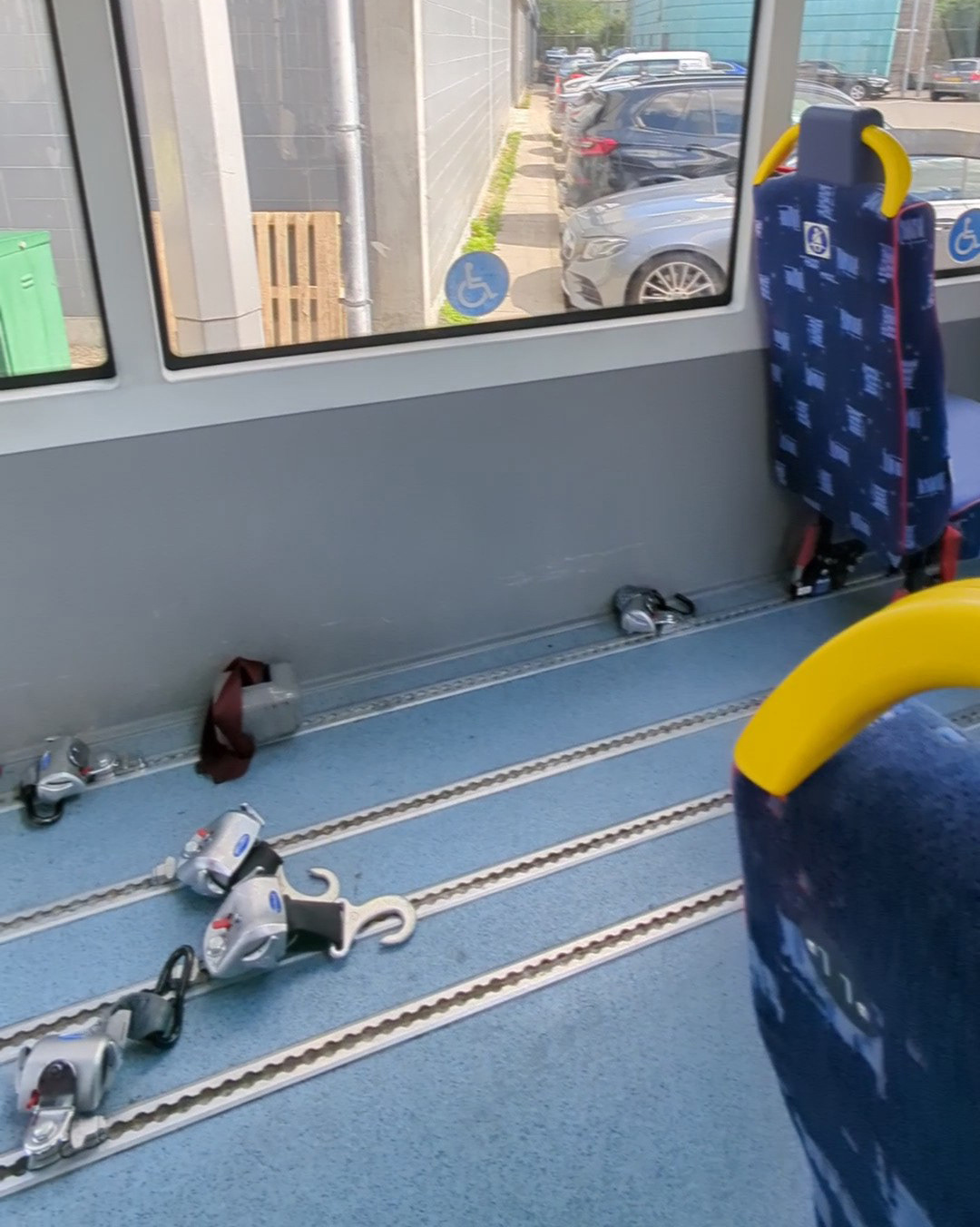
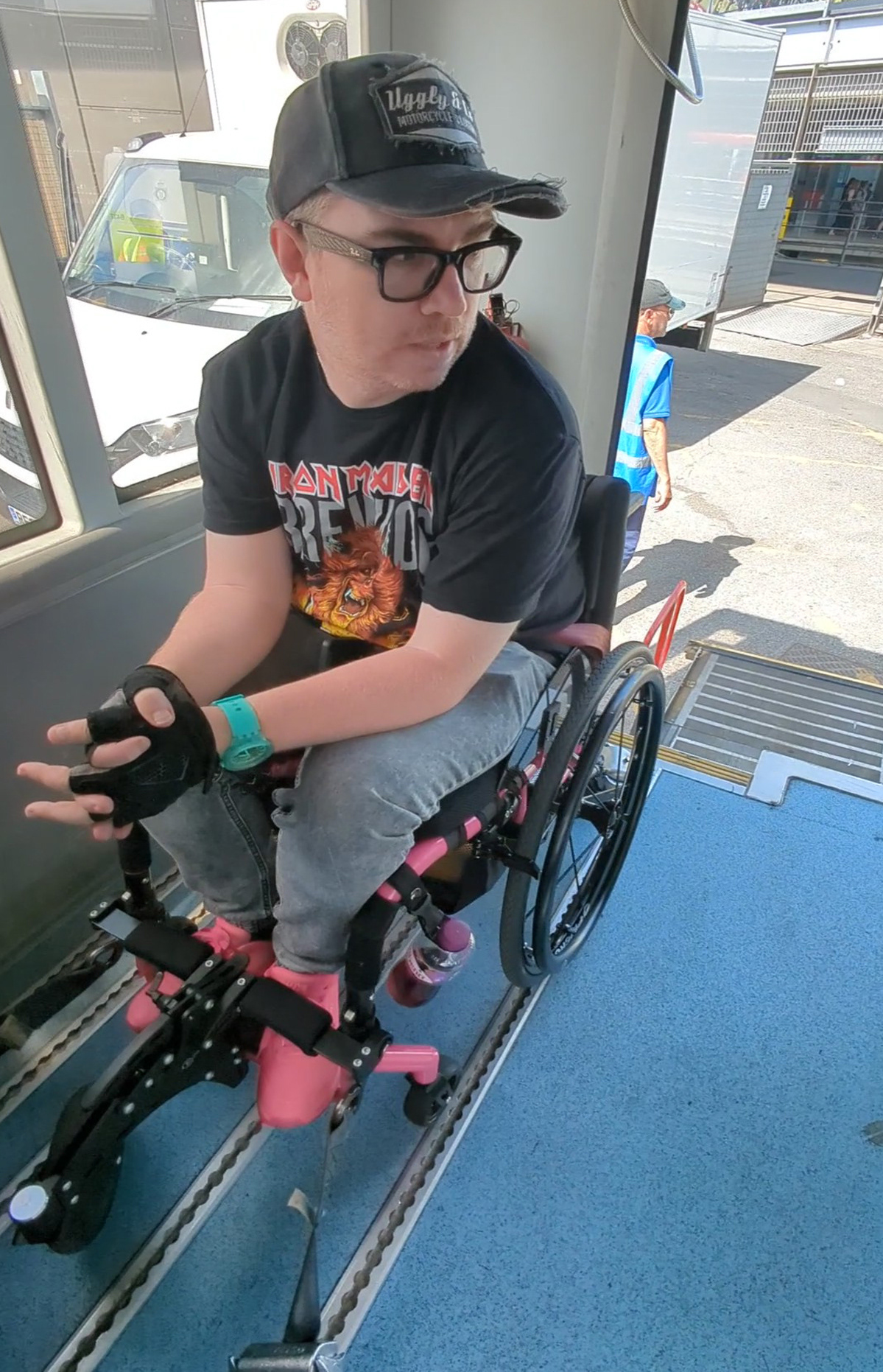
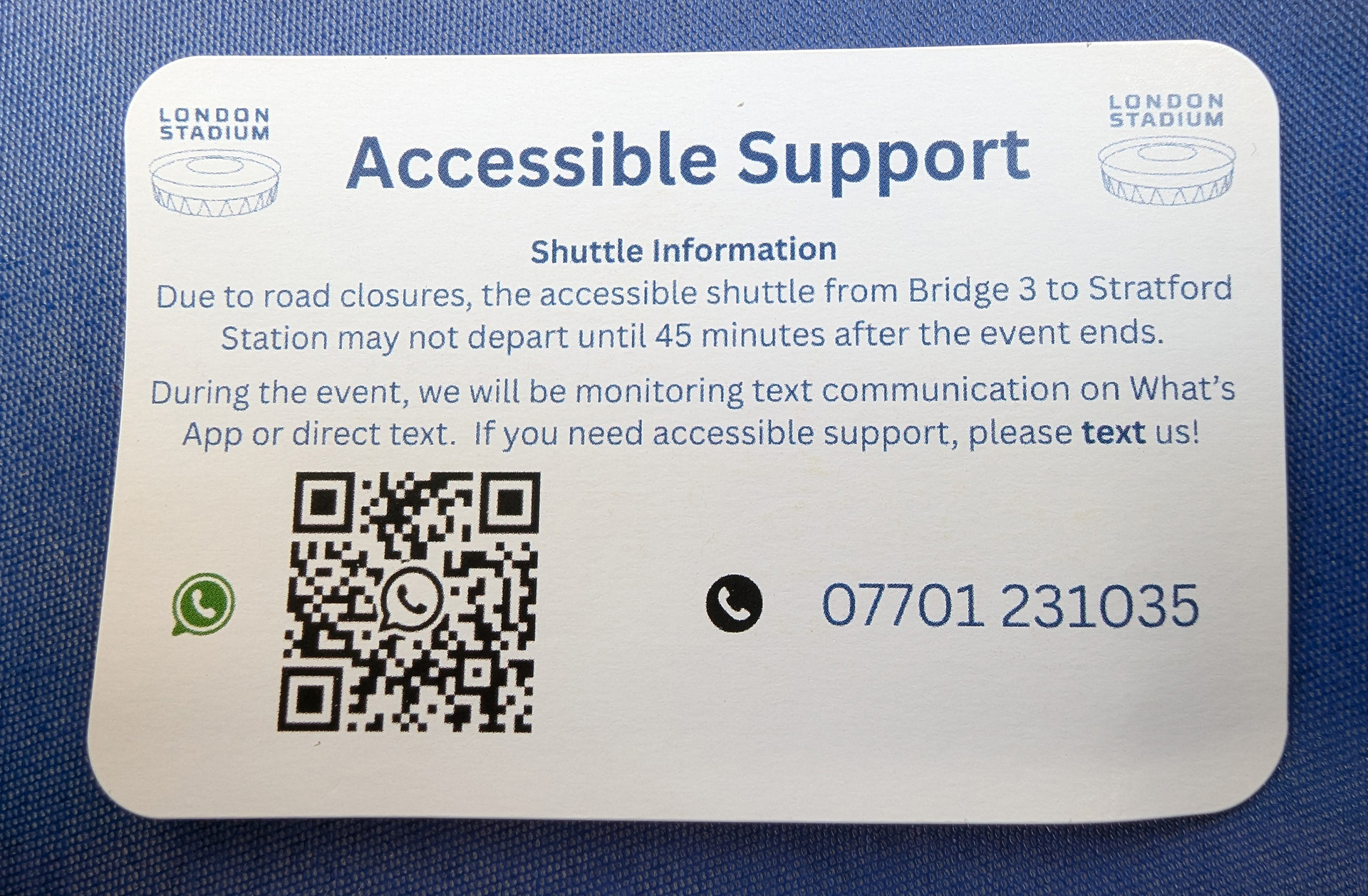
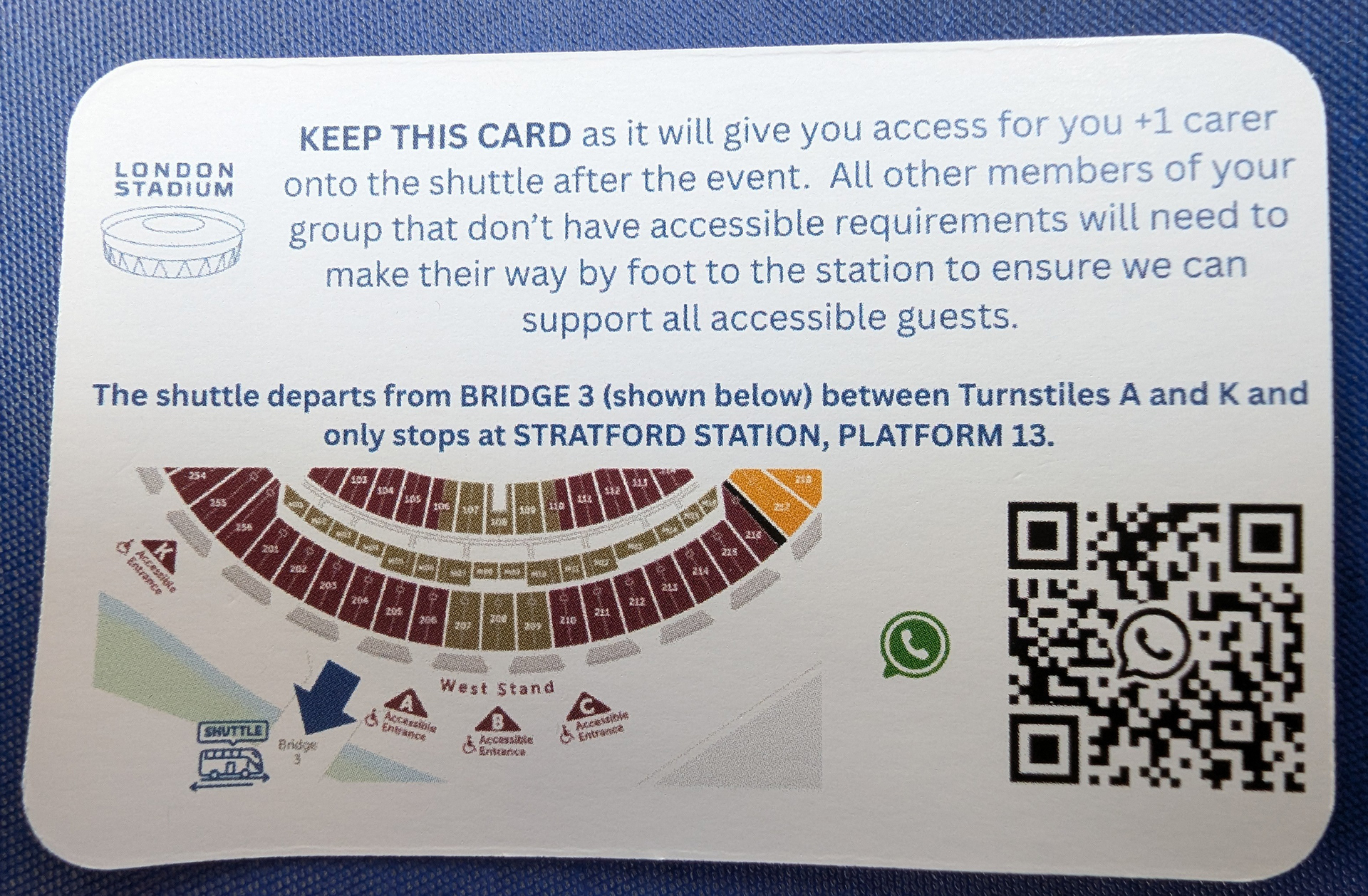
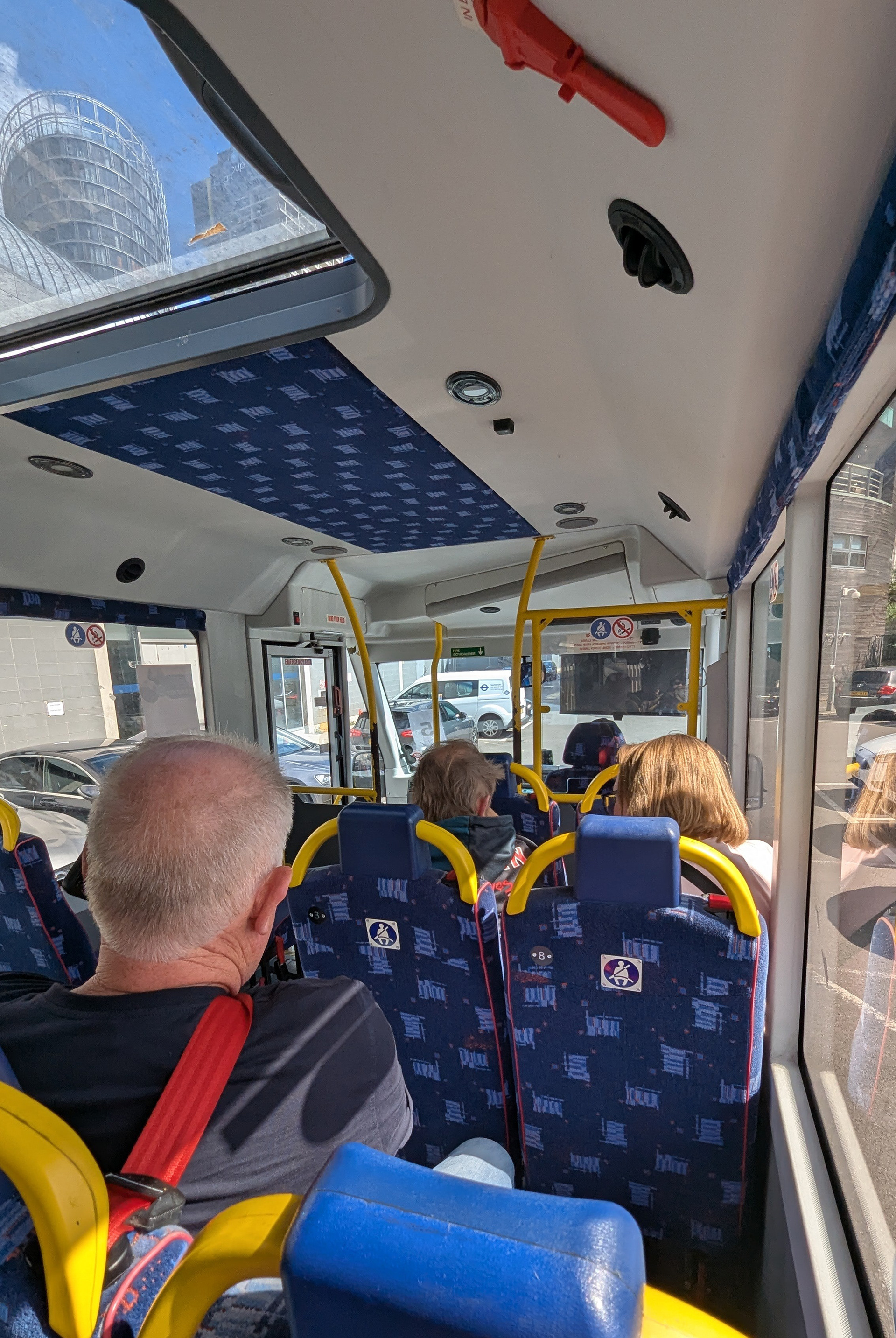
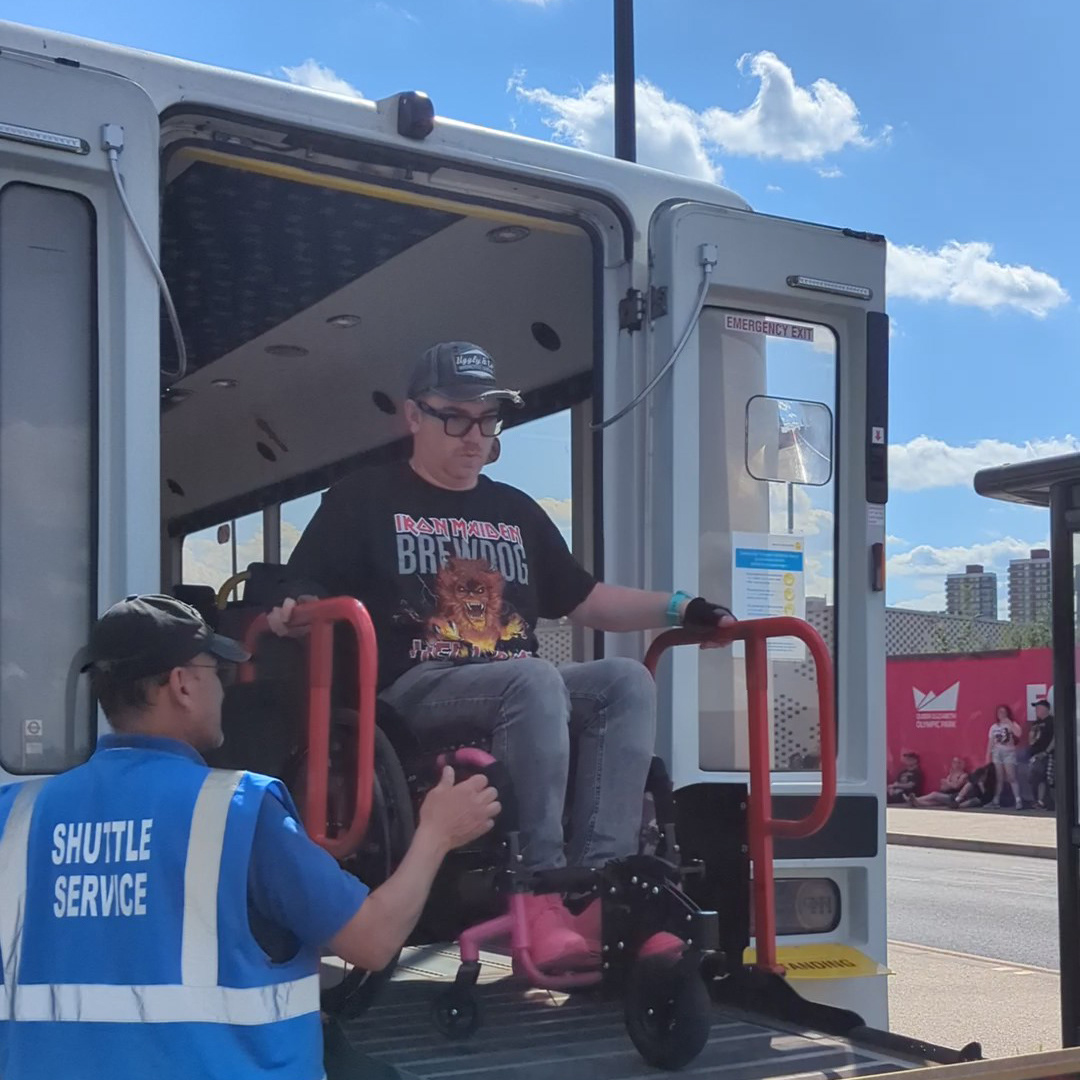
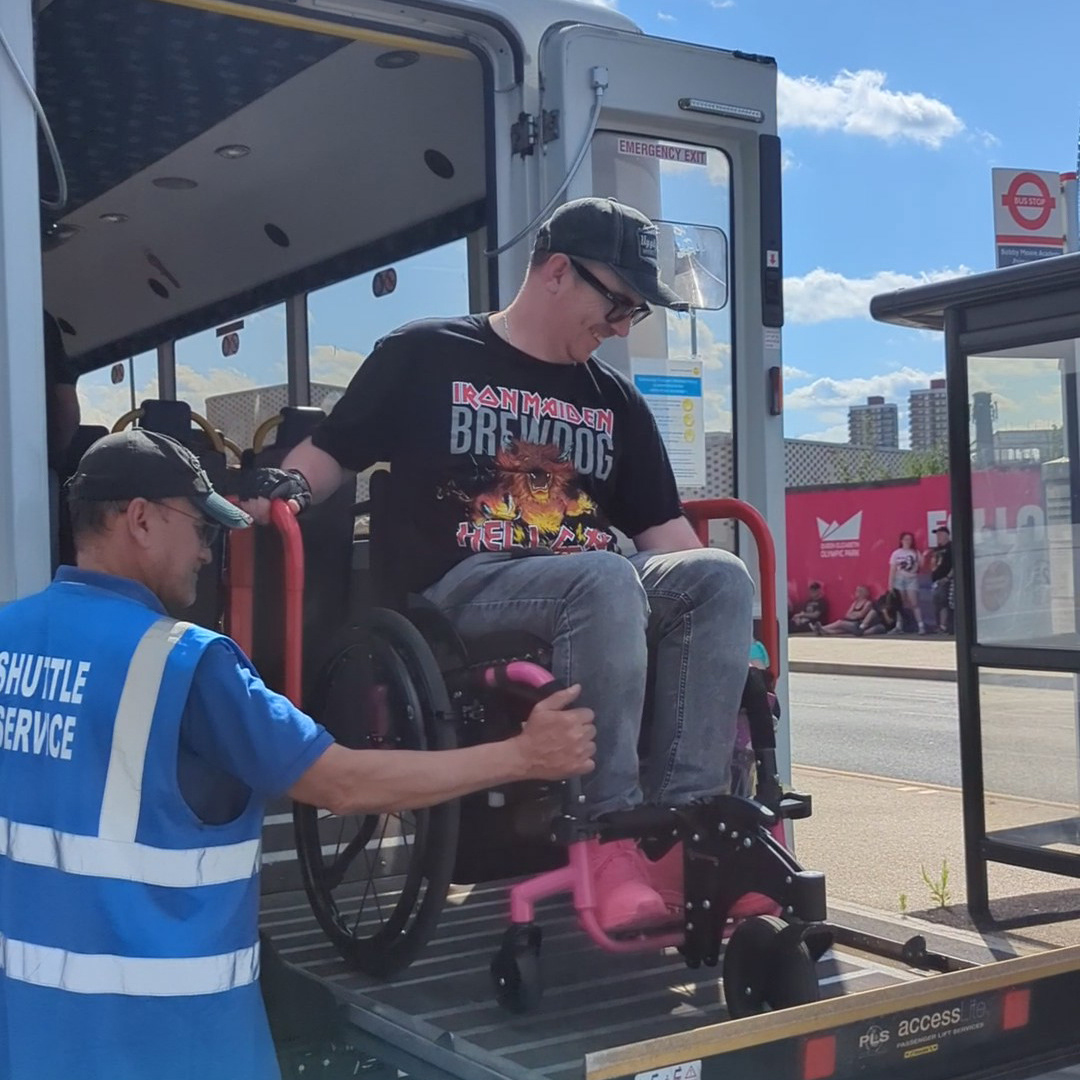
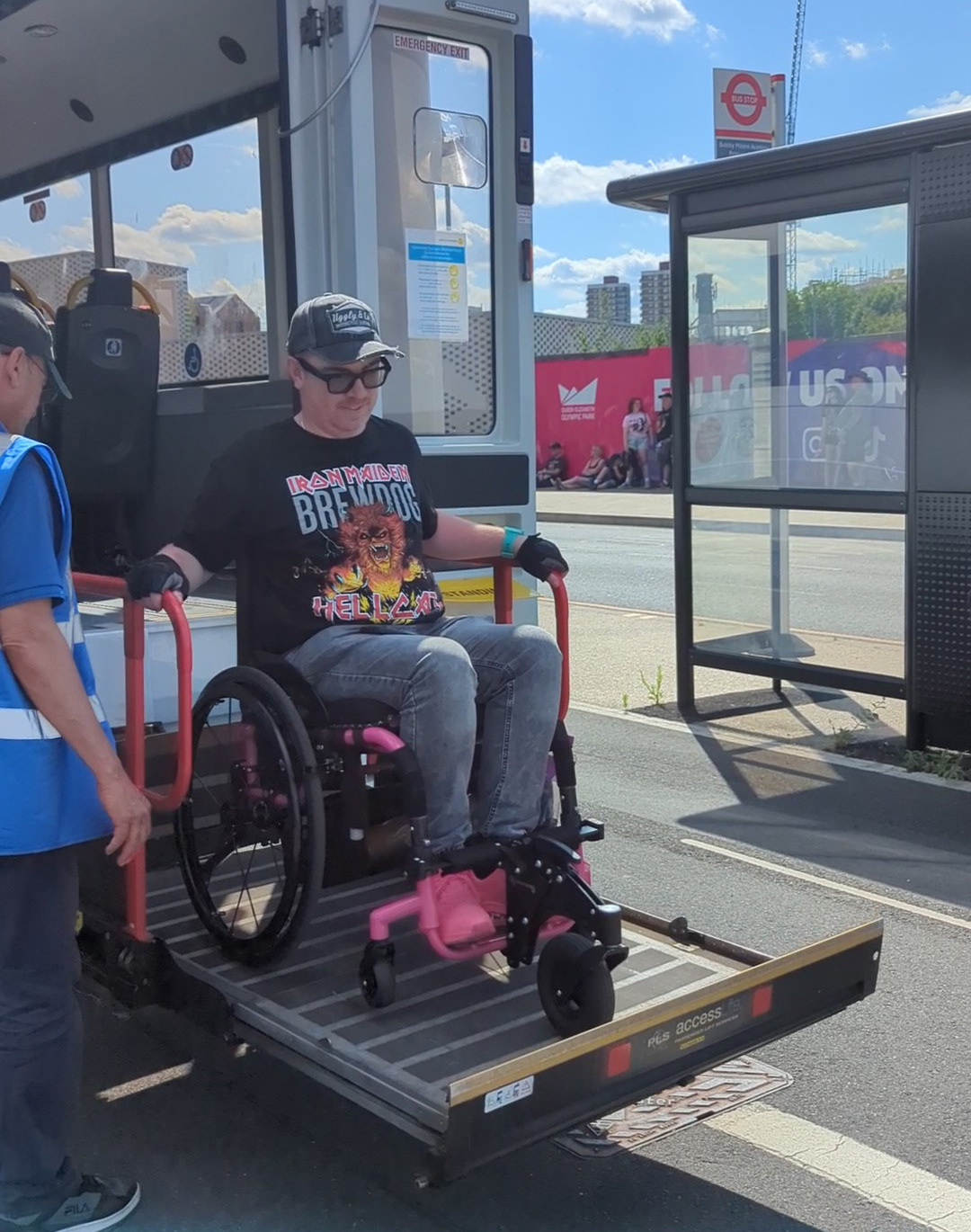
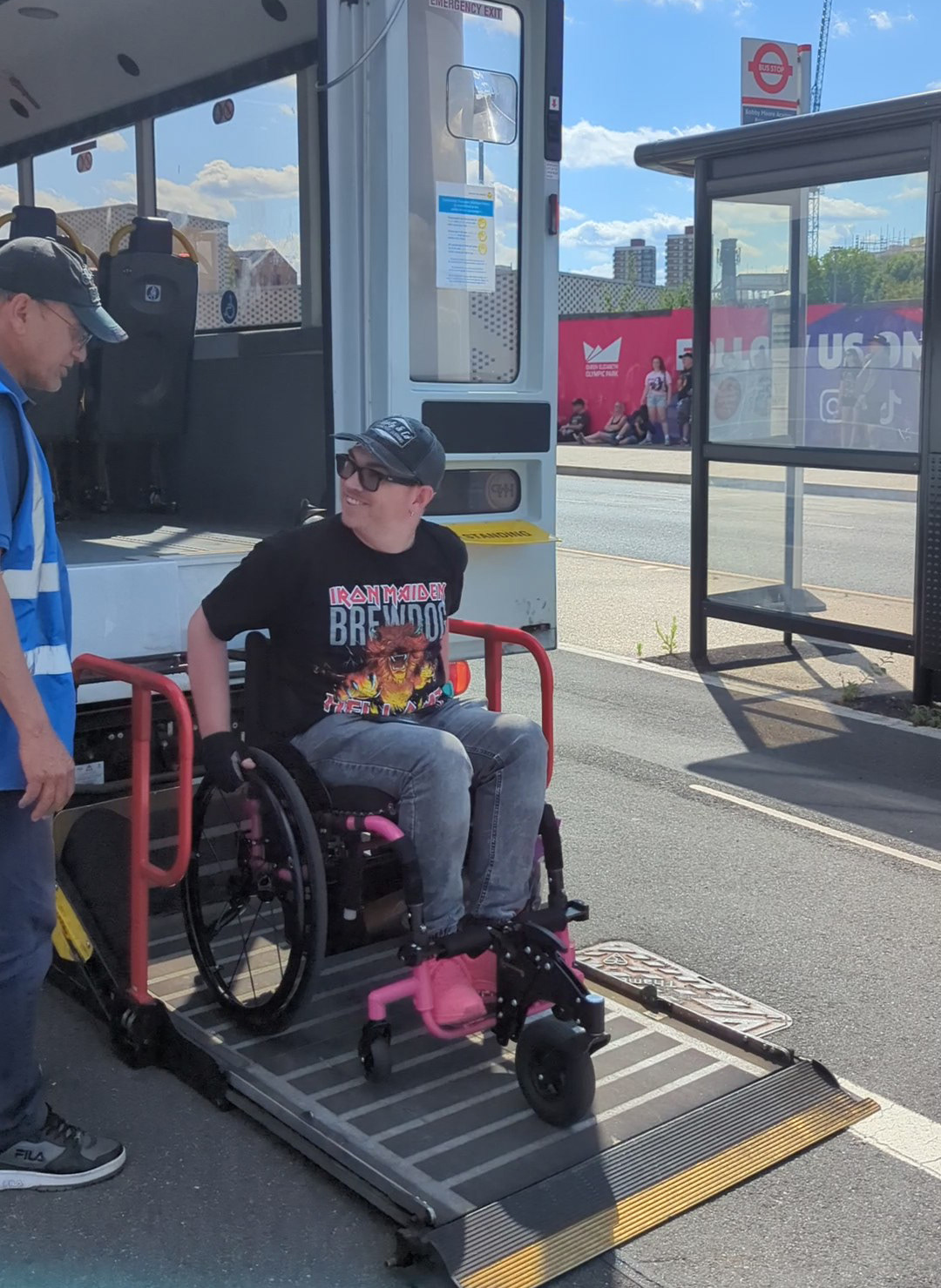



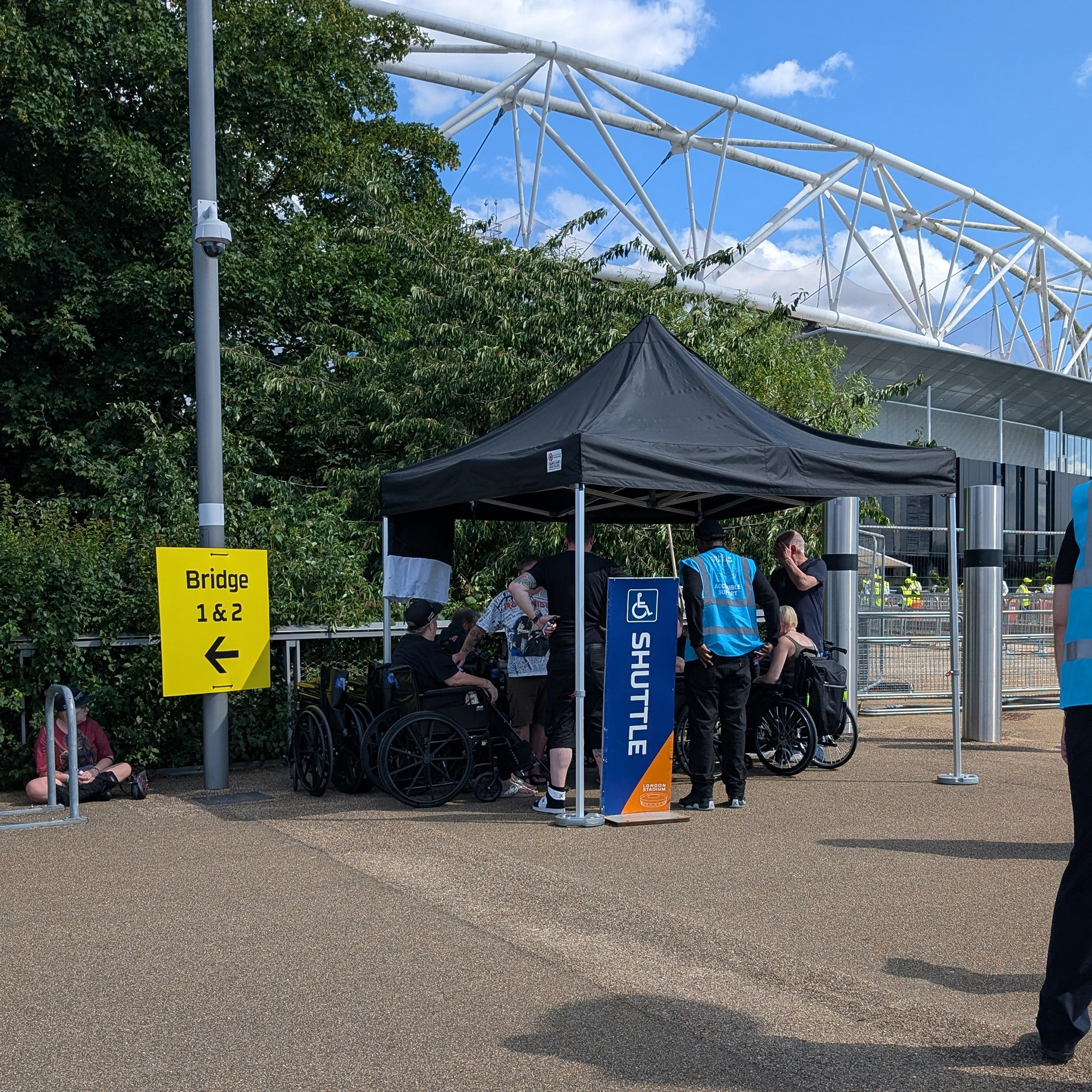
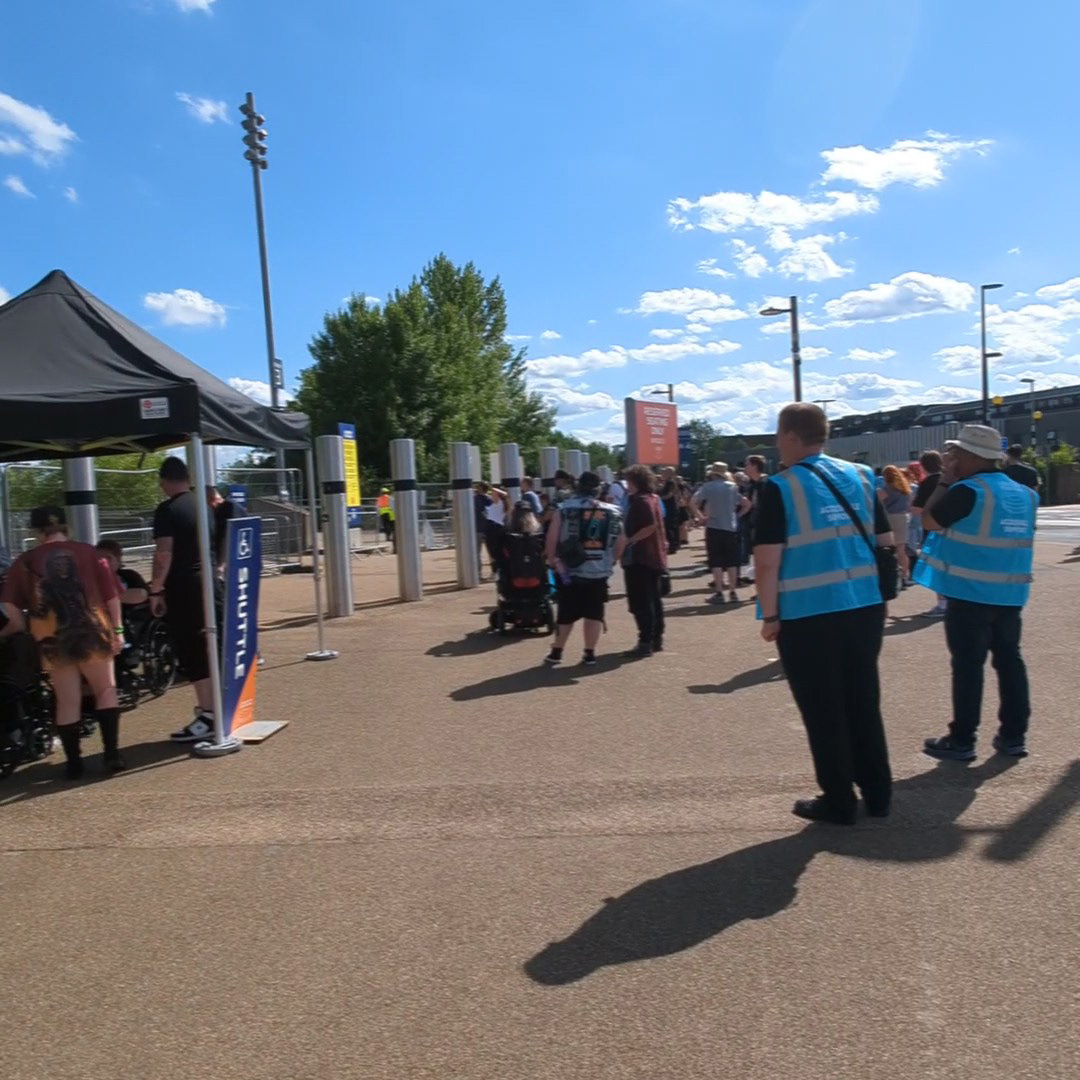

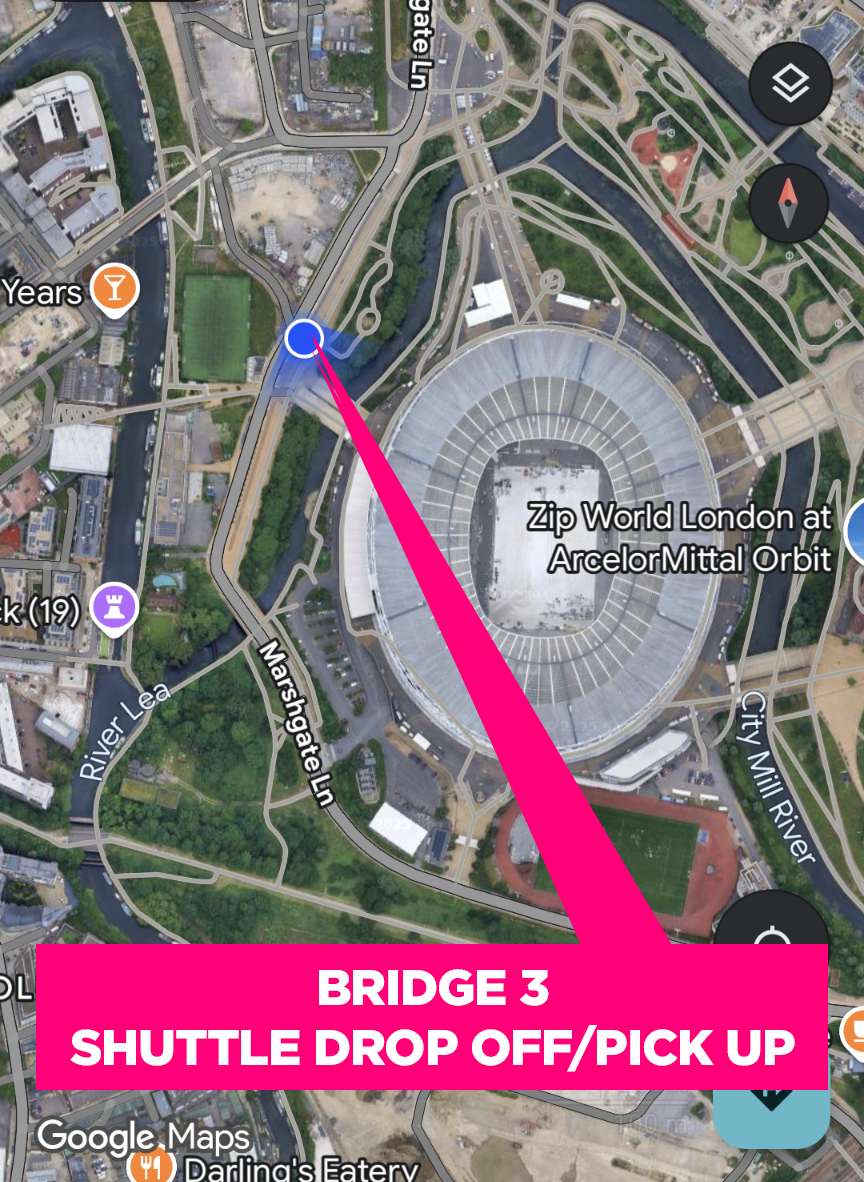

GETTING IN
Your ticket will indicate which entry bridge and turnstile you need to use. The bridge and turnstile will be the closest access to where you are seated, but you will be free to move around the stadium island for food and drinks and to meet friends. If you don’t have a bridge specified on your ticket, you can use any entrance bridge, as they should all have an access lane.
Although the stadium has turnstiles for matchdays, these aren’t used for concerts.
Your tickets will be scanned at the entrance bridge to gain entry to the stadium island. You can then make your way to your seating area when the stadium doors are opened. The turnstile number on your ticket will be the closest to your seating. If you have any problems finding your way, the staff are always on hand to help and advise.
Our tickets stated Bridge 3, which is the main accessible entrance. We used the shuttle bus from Stratford station, so the drop-off point was right where we needed to be.
When we arrived at the bridge, the stadium island wasn’t open. So we were queued outside. There was minimal shelter from the sun, and no refreshment facilities were available. There was a small amount of seating.
Several members of the access staff were wearing blue jackets that read ‘Accessible Support’.
The bridge number was clearly displayed, and signage indicated the accessible lane on the right-hand side. The bridge was also used for seated ticket holders on this side of the stadium, not exclusively for access customers.
The access staff filtered the queue to ensure wheelchair users were given priority and directed to the front and into the access lane first. We were grateful for the small amount of shade, which protected us from the scorching heat.
The staff were really good and had a bit of banter with the people in the queue, which helped pass the time.
Once the stadium island was open, we could proceed to the security check. There were tables for bag checks and large bins for discarding prohibited items. Bags can be no larger than A4, and you are permitted to take in an empty 500ml bottle to use at the water refill points. There is a substantial list of prohibited items.
The security check was literally a quick look in the top of my bag.
I’d tried to contact the venue in the weeks leading up to the event to obtain a food exemption certificate for food allergies, but couldn’t get any help. I was just told that all dietary requirements would be catered for, and that no food or drink was allowed into the stadium. I’d taken a punt and popped a few small snacks in my bag, but nothing was said about them (that’s if security even saw them!).
It wasn’t until we got through security that it dawned on my wife we’d brought a sandwich in with us! We’d bought one to eat before we went in, but with it being so hot, we’d just been drinking lots of water and not thought about it. The sandwich was in clear view in the basket underneath my wheelchair, and I wasn’t pulled up on it.
Next stop, before entering the stadium, was the ticket scan. The staff with scanners were under gazebos out of the sun. They scanned our tickets and waved us onto the island.
On the island, there was lots of clear signage to help you find your way around, plus lots of food and drink options.
Getting into the stadium itself was trickier than we’d expected. We went to the turnstile noted on our tickets (turnstile C) and through the gate into the concourse.
In front of us was the entrance to blocks 110 and 111. To the right of here, the block numbers increased. To the left of here was a gents toilet block, then large double doors leading into the hospitality suites.
Our seats were in Block 108, but we couldn’t find any signage to get to 108, which was, in theory, to our left. Another wheelchair user and his companion were in the same position as us - turnstile C, block 108. How do we get there?
We looked around and found a member of staff to help us.
It turns out that there aren’t any concourse entrances to blocks 107, 108, and 109, as the wheelchair platforms and rows of seating leading down to the pitch are located in front of and below the hospitality suites. We could enter through the 110/111 entrance, then proceed along the pathway, past the hospitality suites, and follow the steps and ramps up to the wheelchair viewing platforms. You could also come in from the other end. You could also go up onto the wheelchair platform by the ramp nearest to you and make your way along to your seating.
Once we’d figured out how to get to the blocks, it was easy enough, but it wasn’t made clear, and there was no signage to help us. It was also a slightly longer walk or roll back out onto the concourse for the bars and toilets.

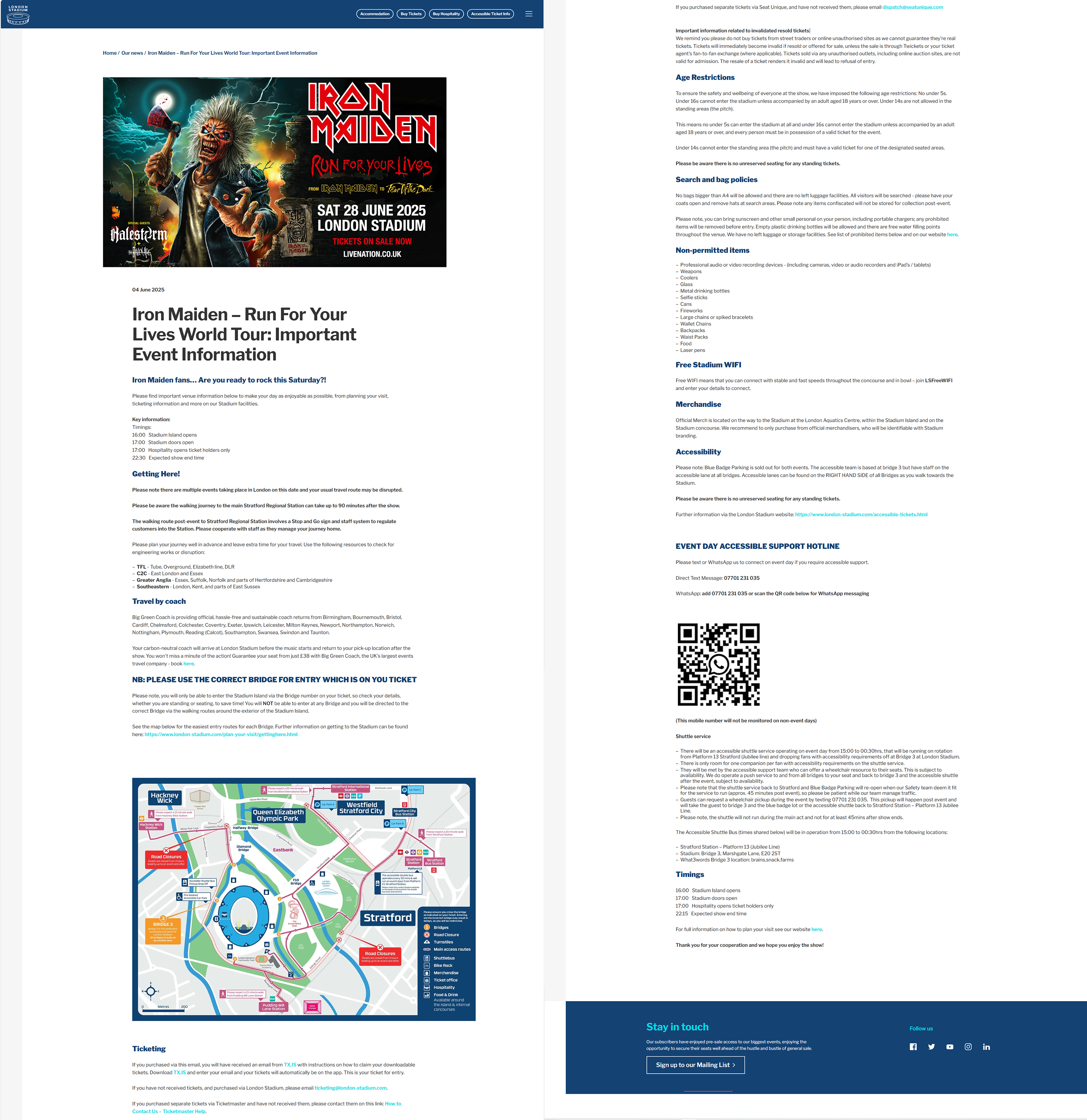
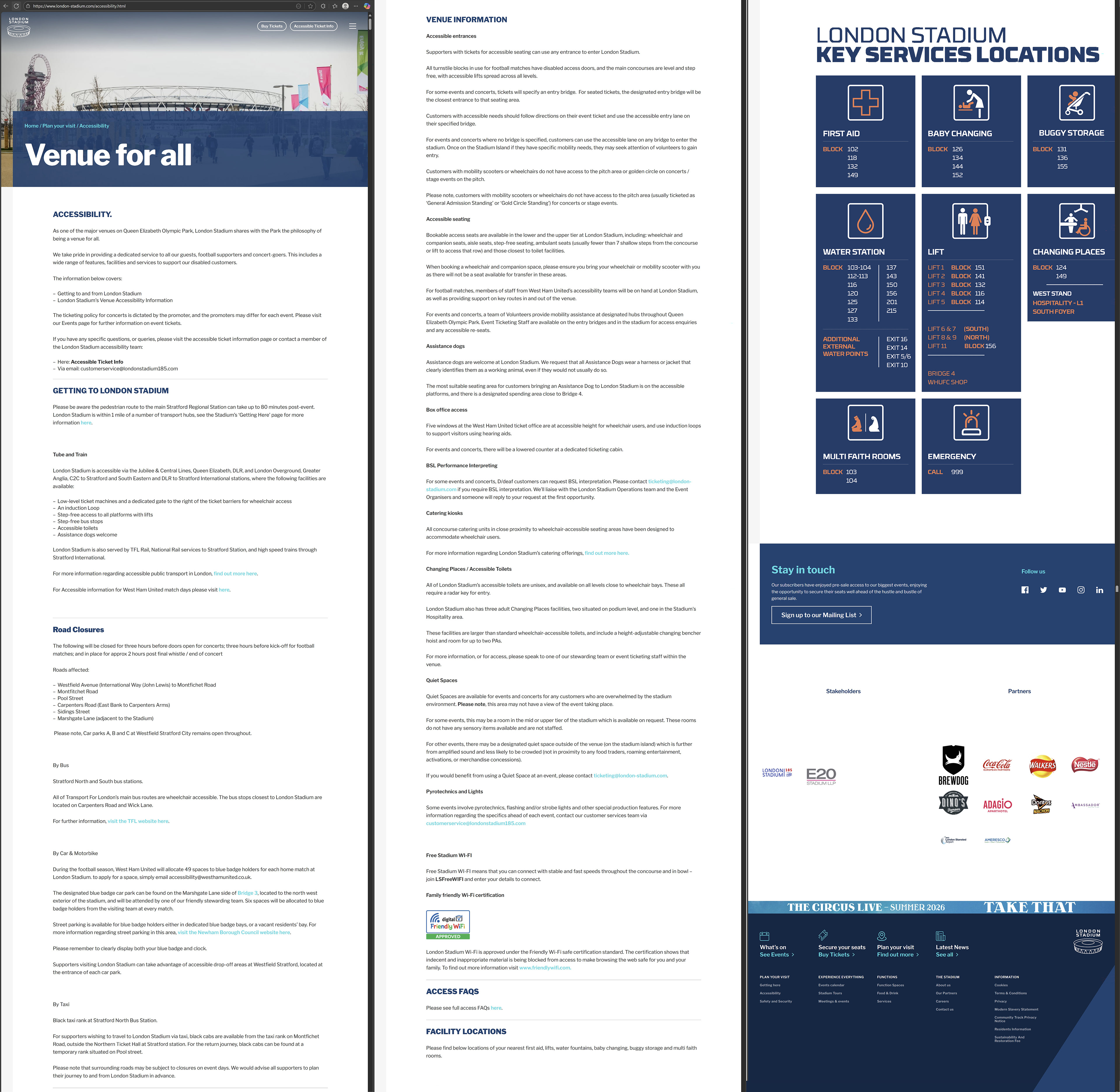


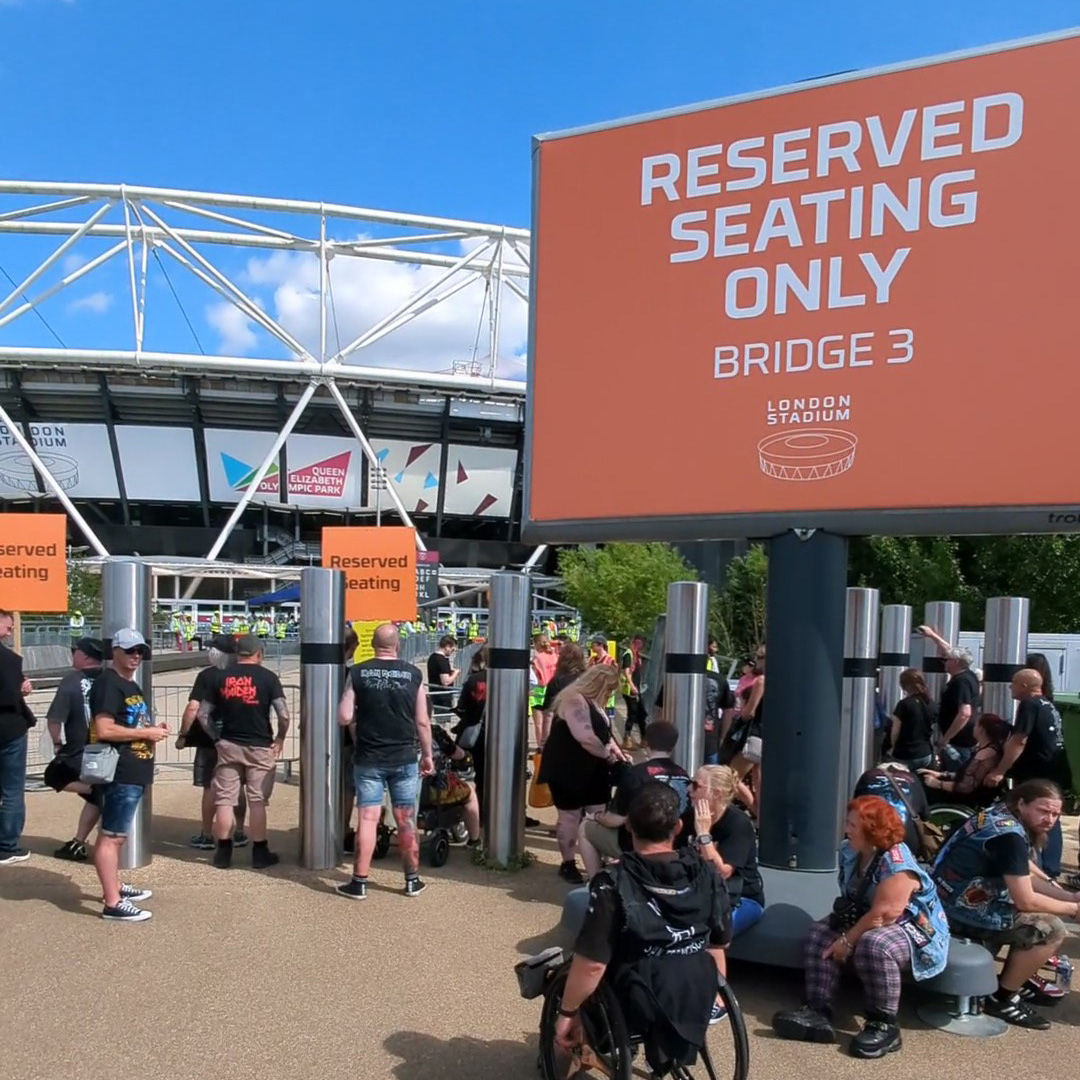

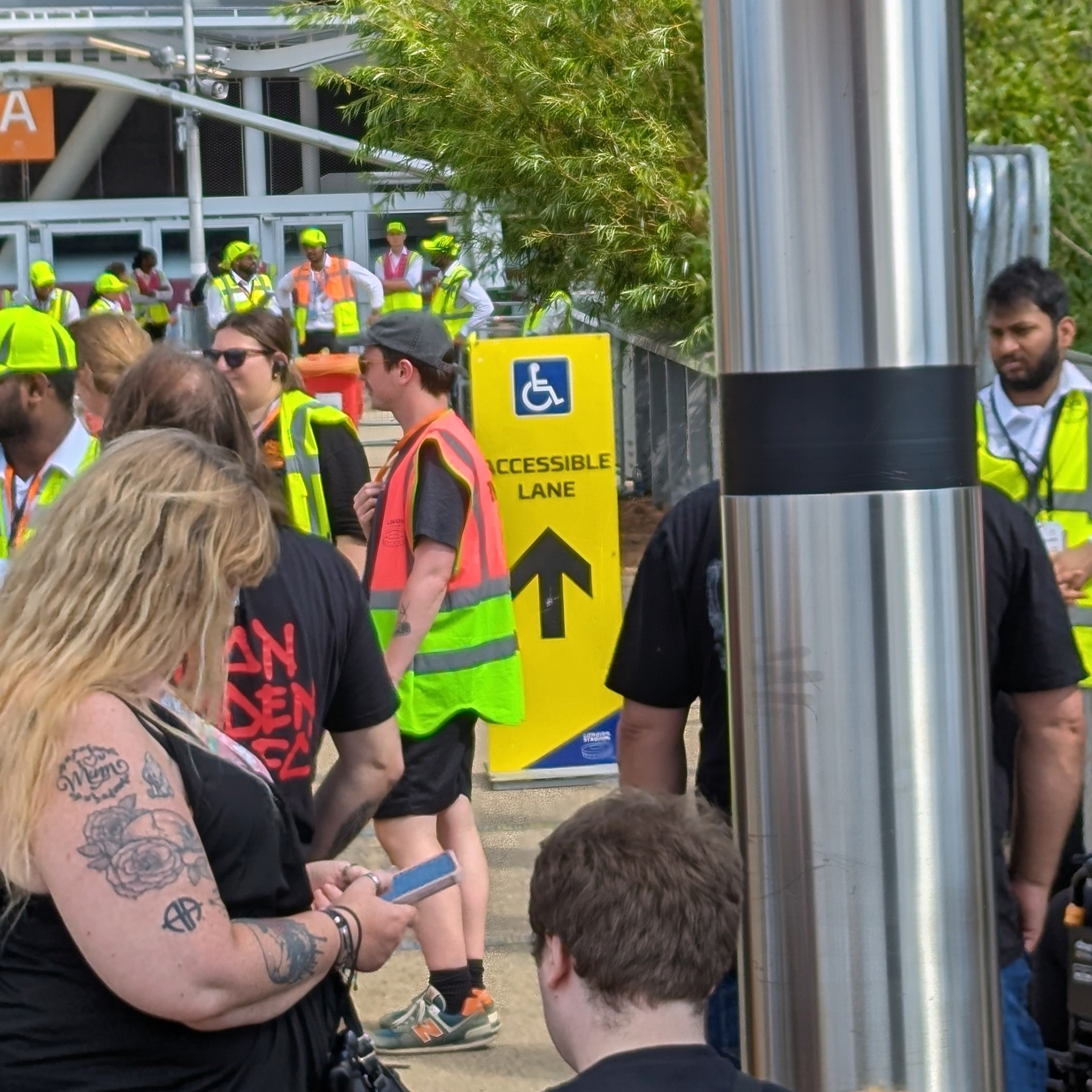
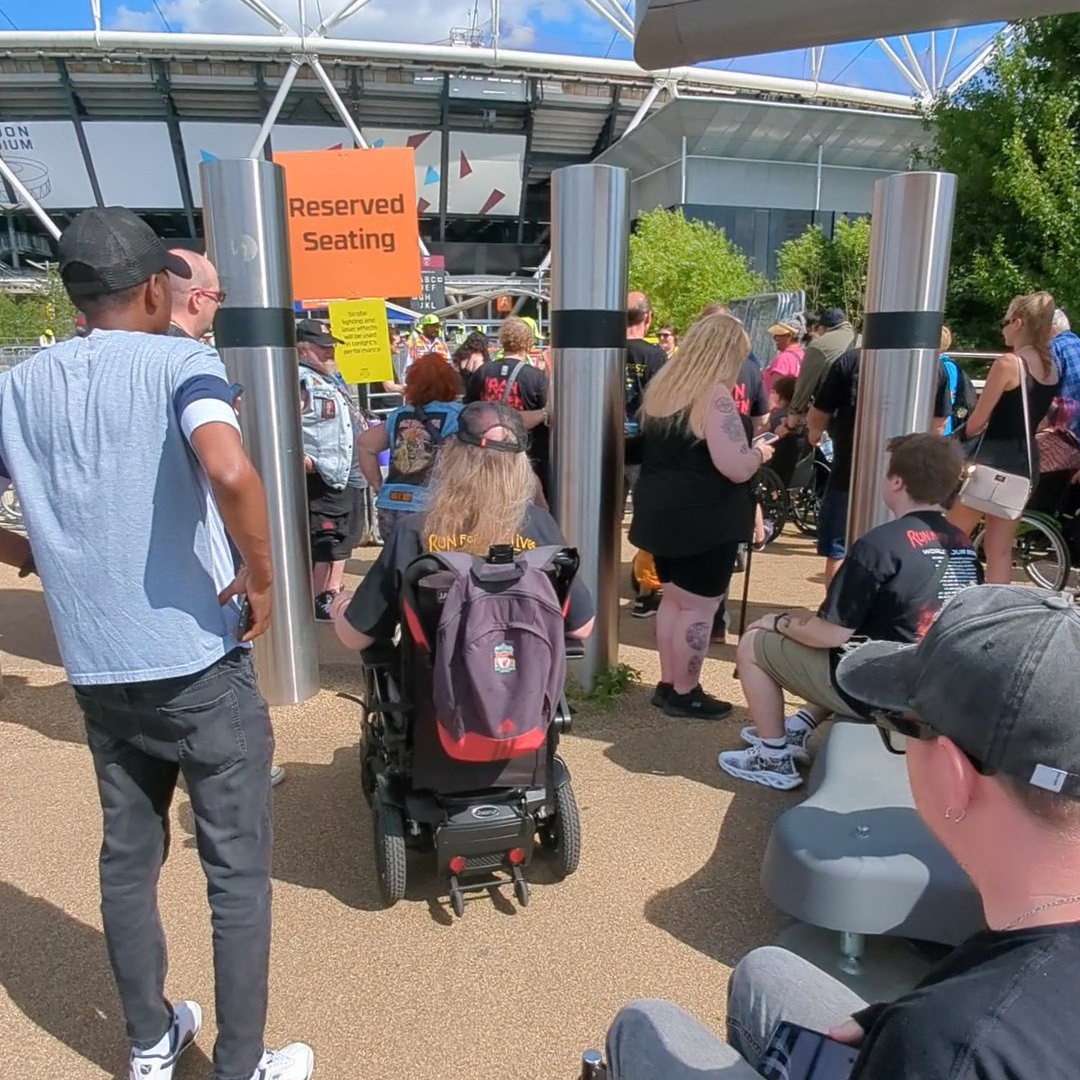
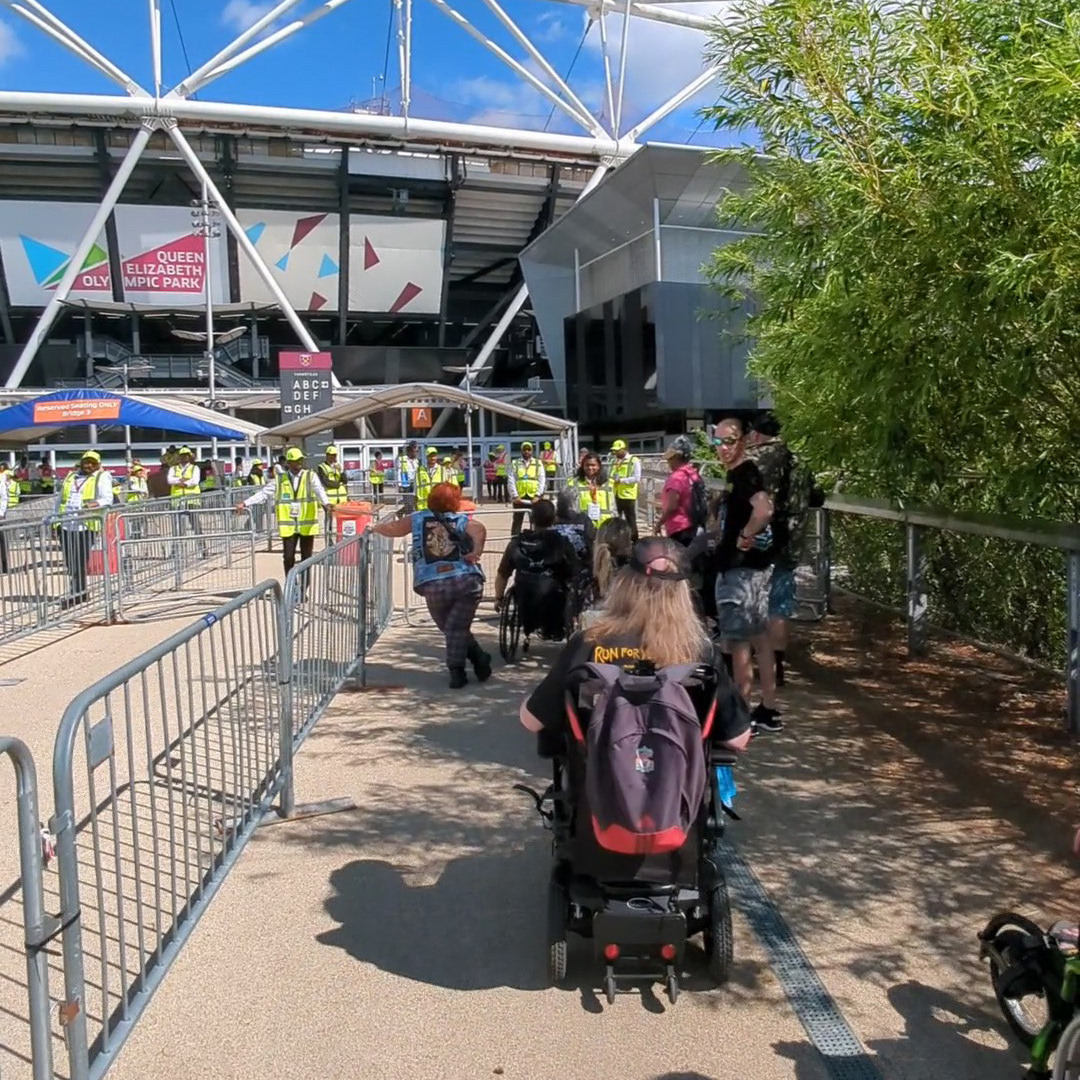

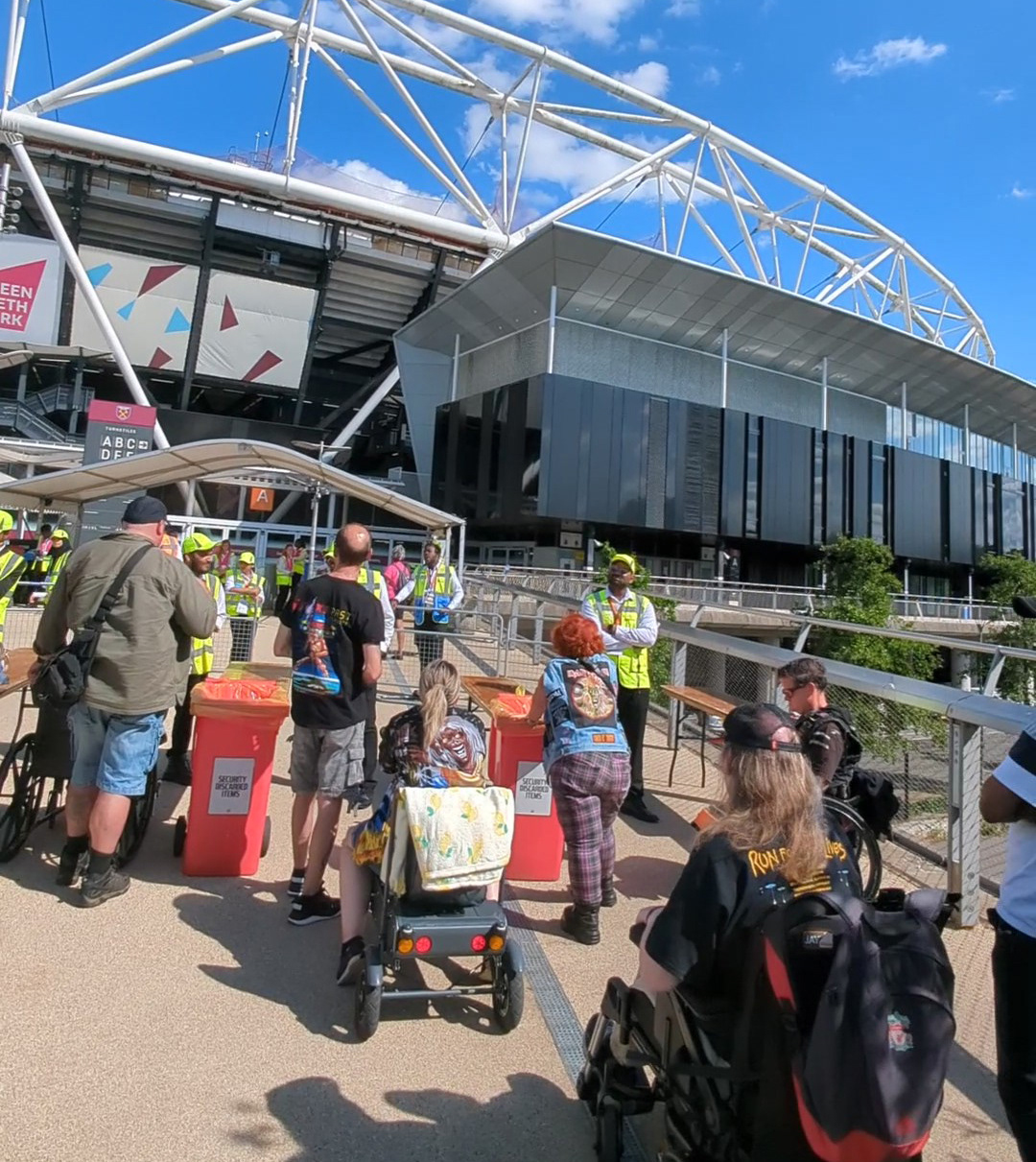
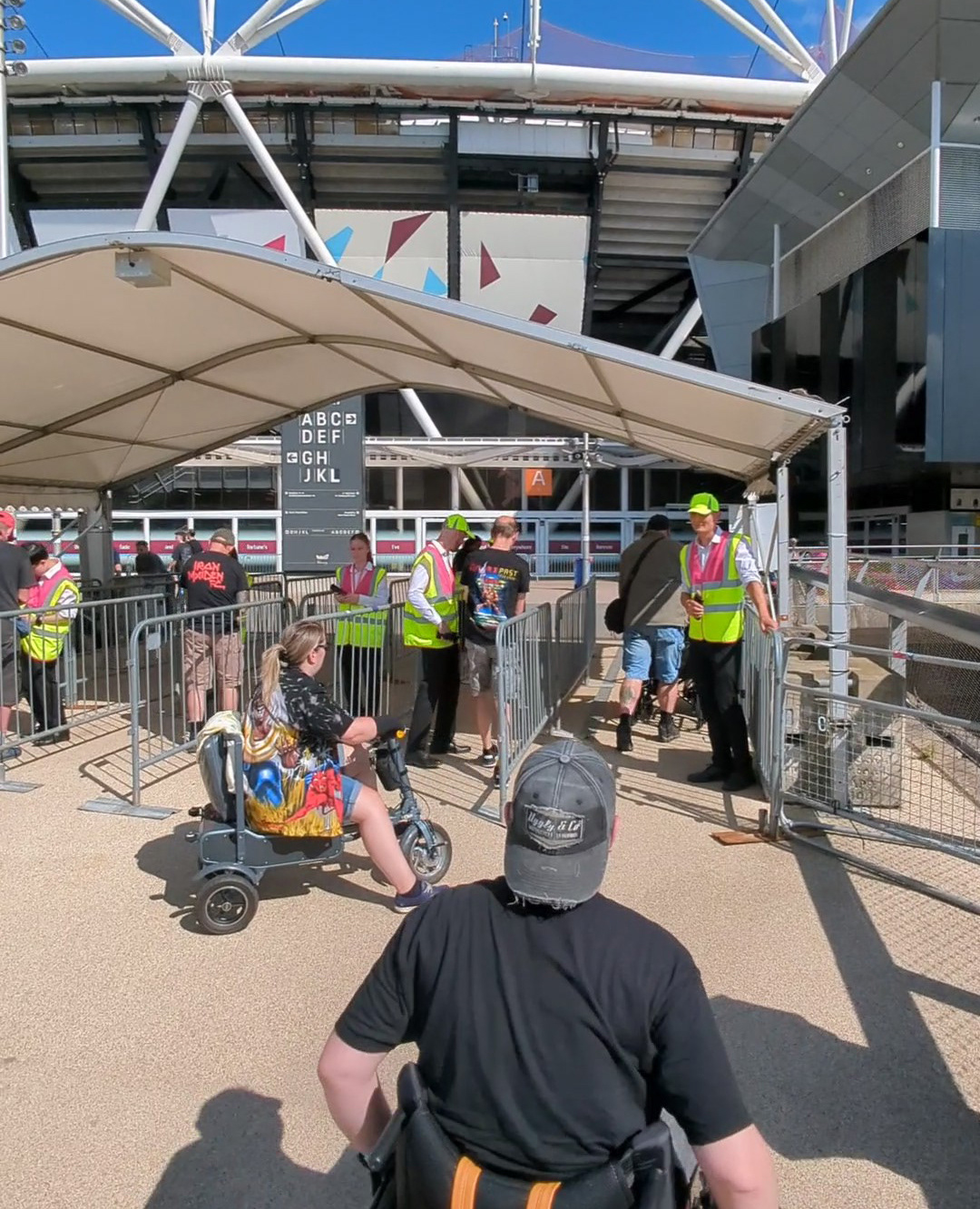
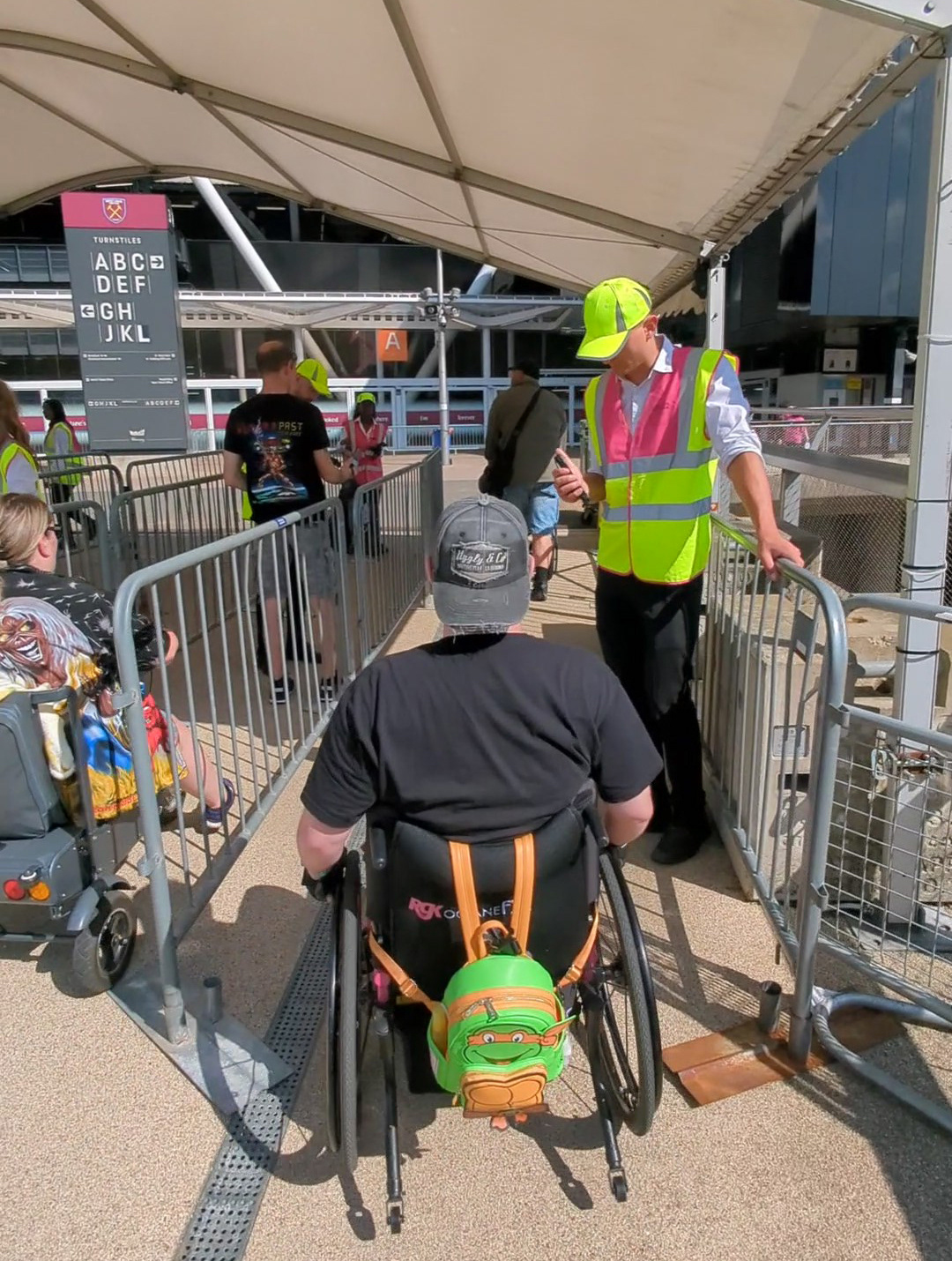

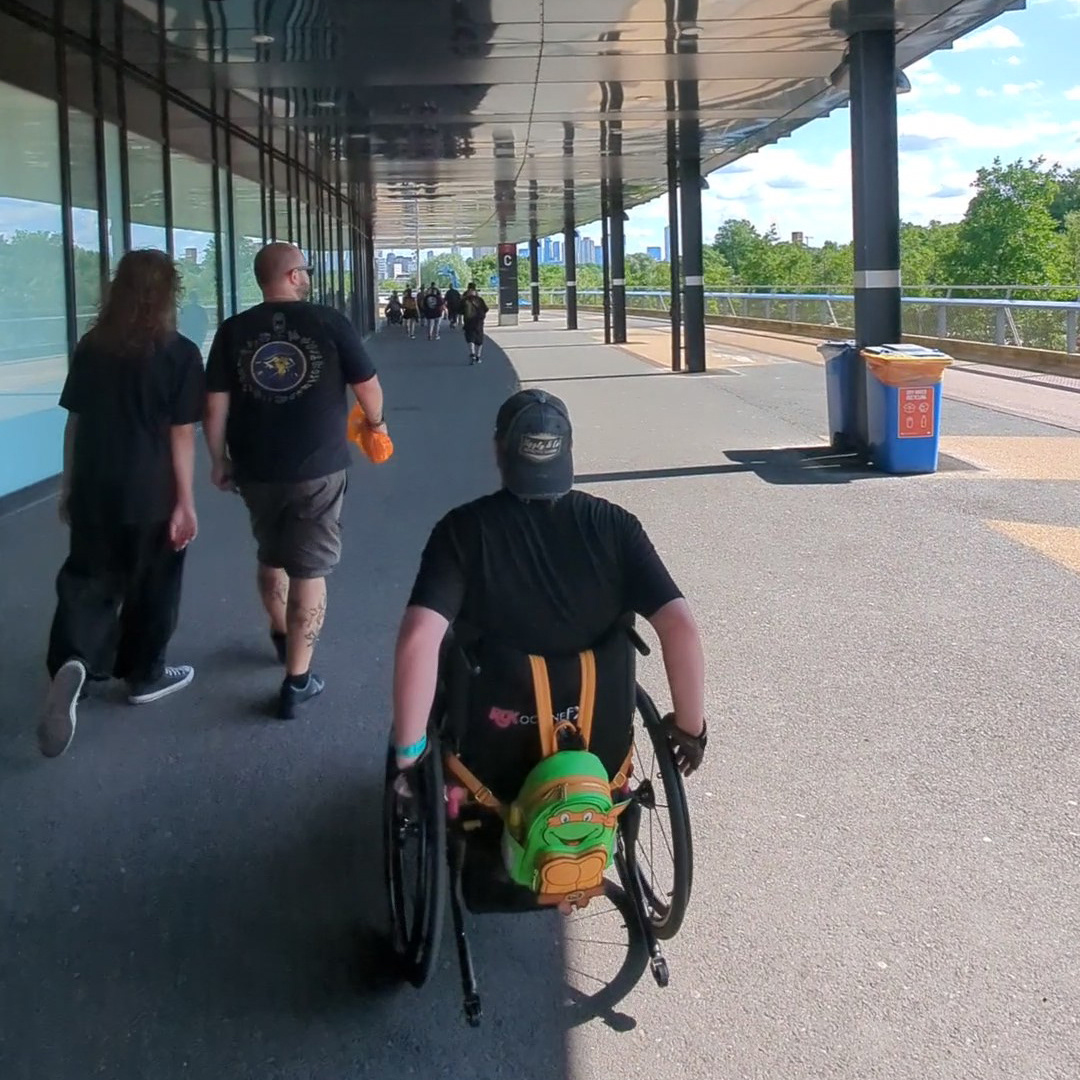
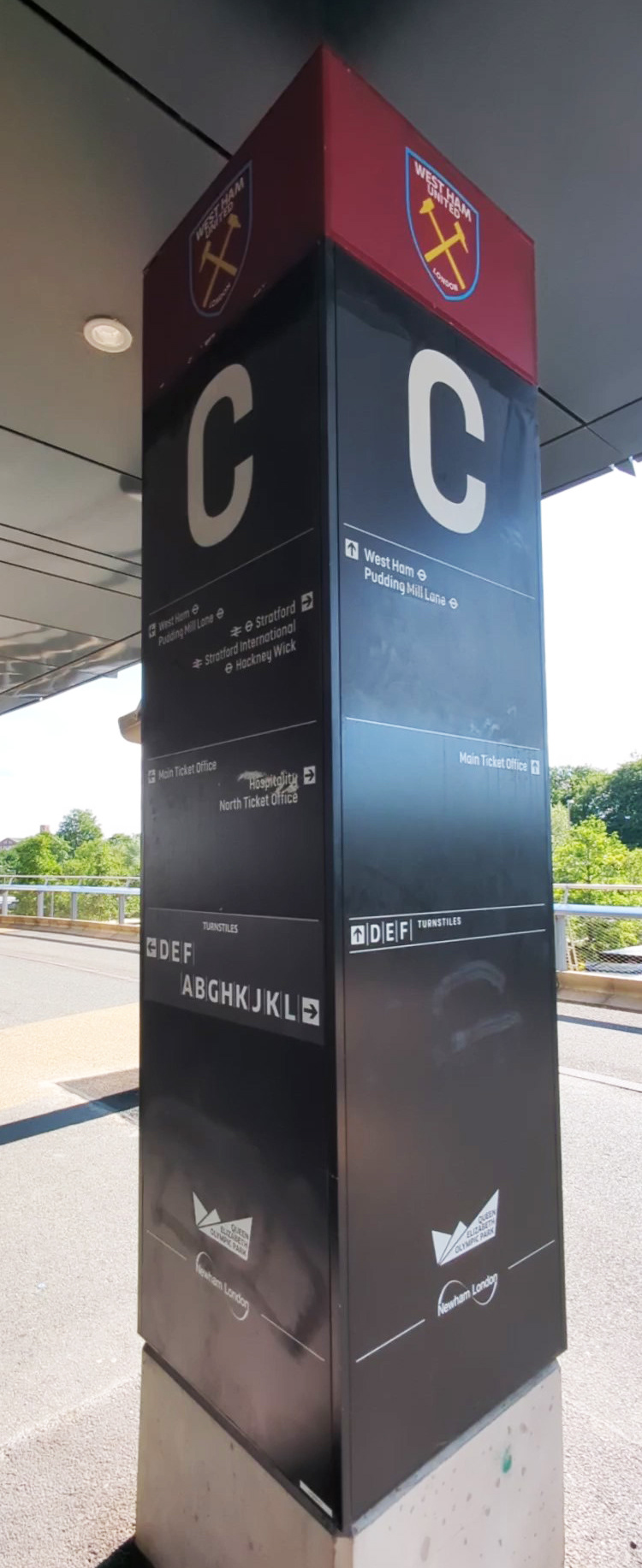
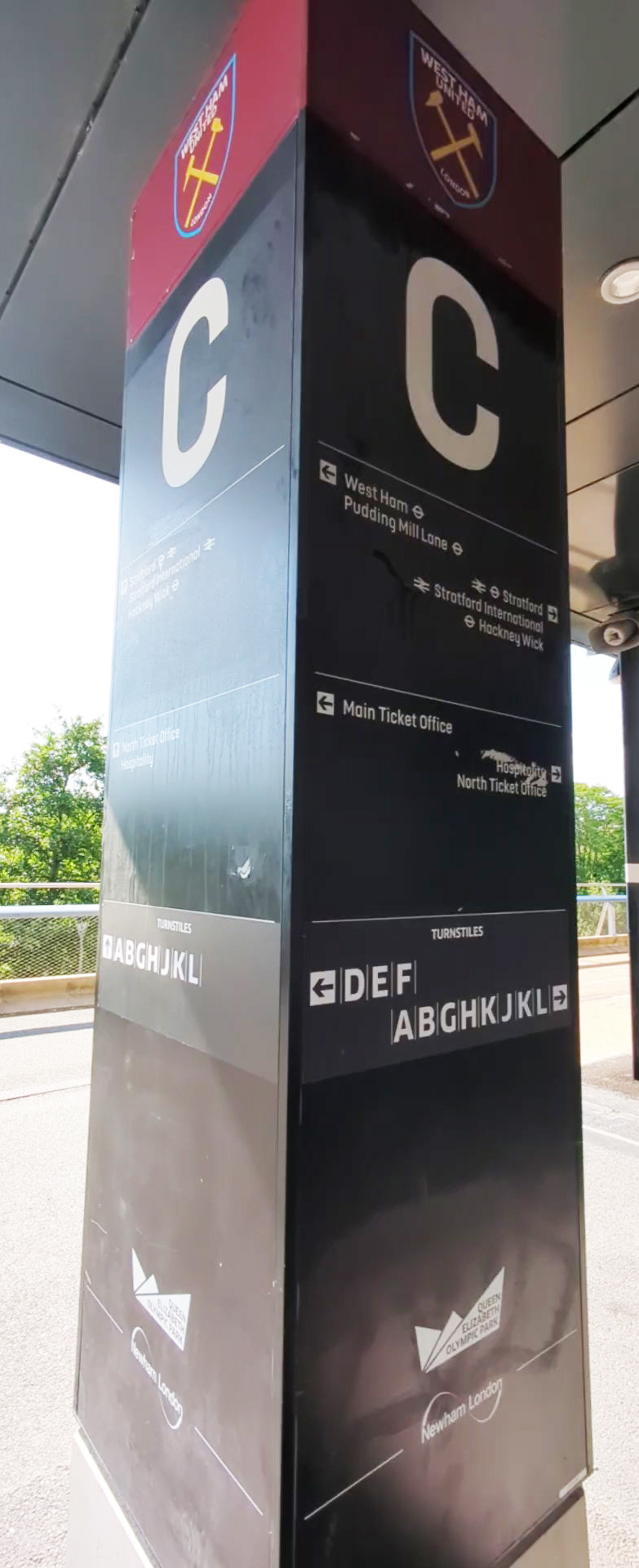
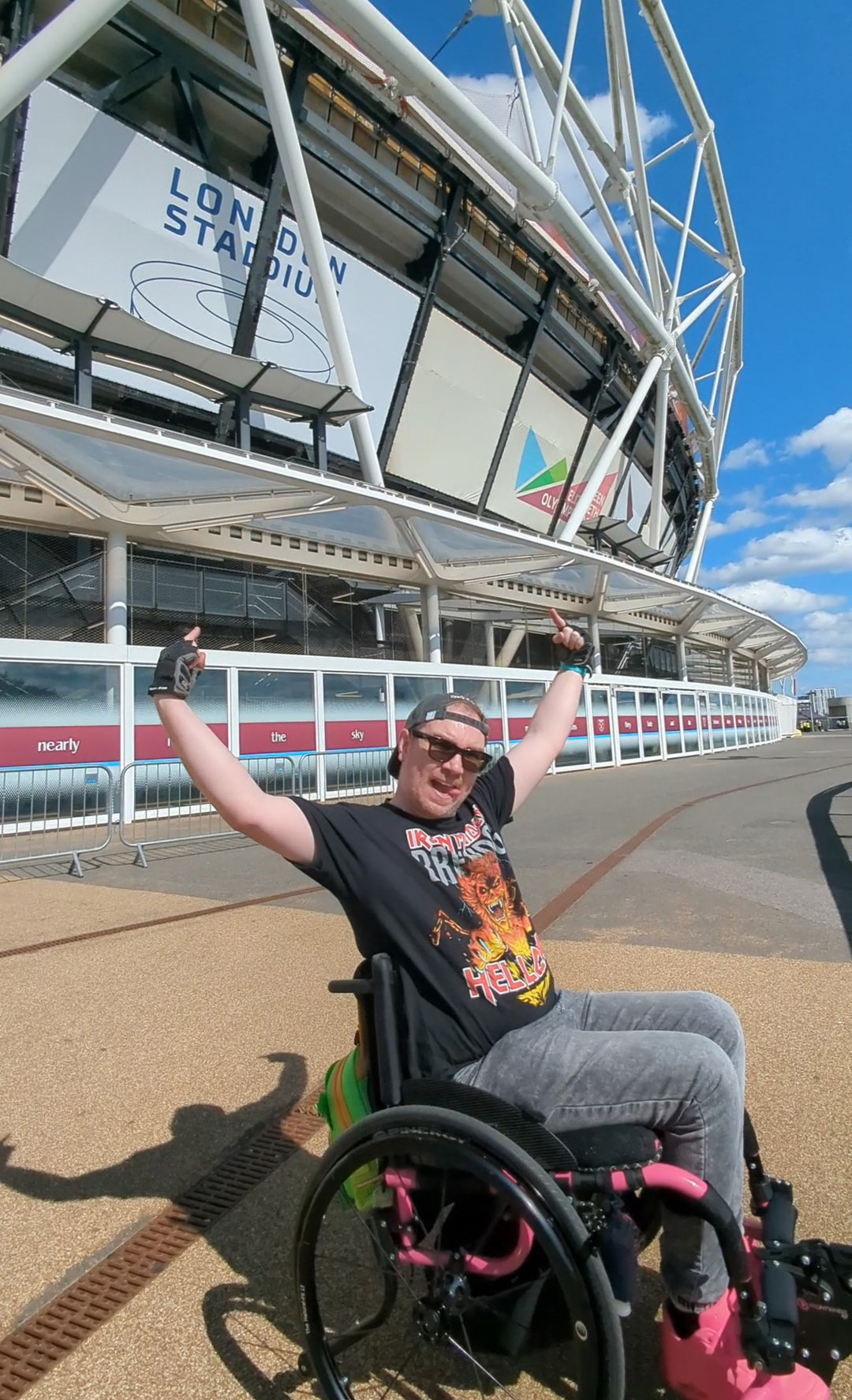

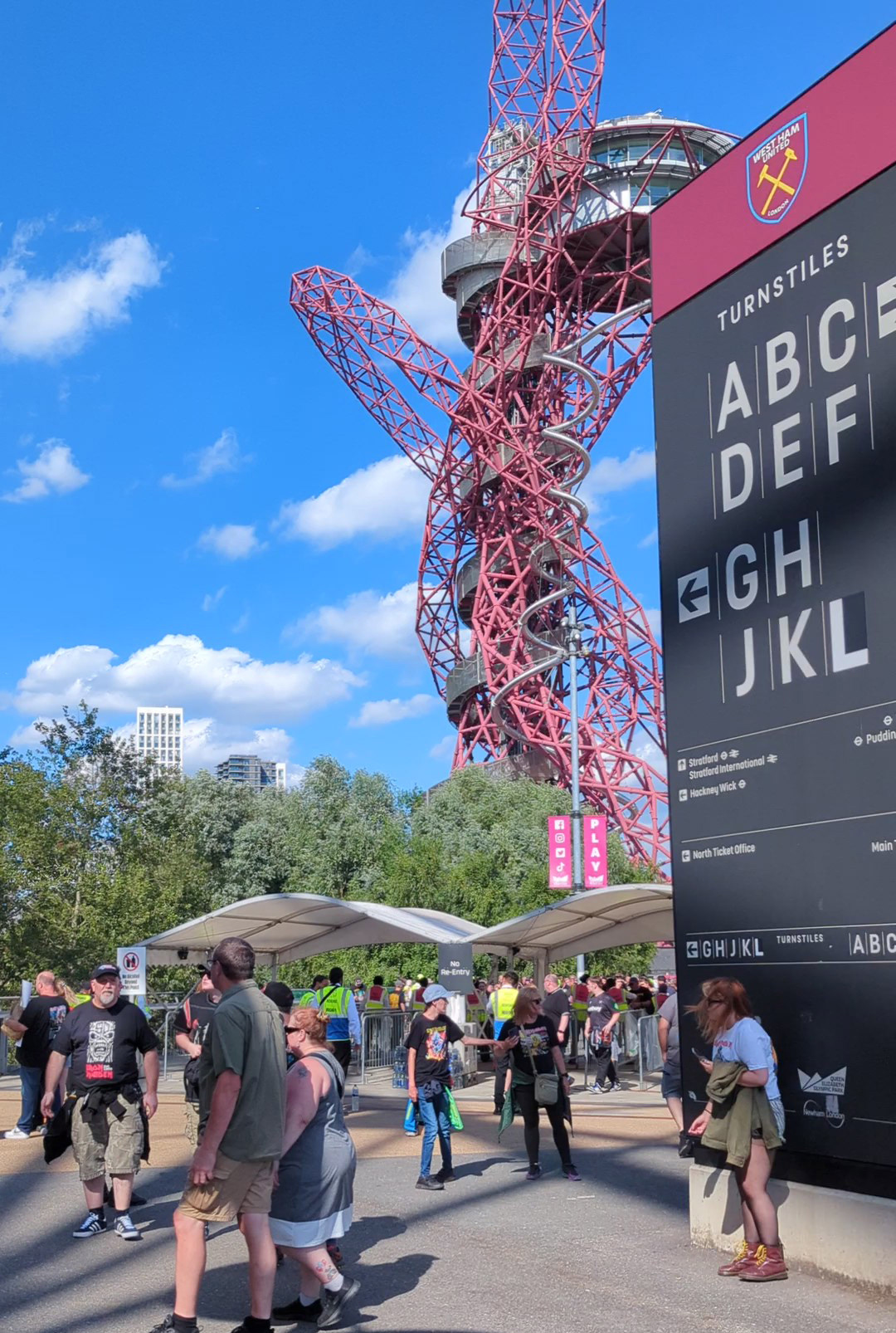




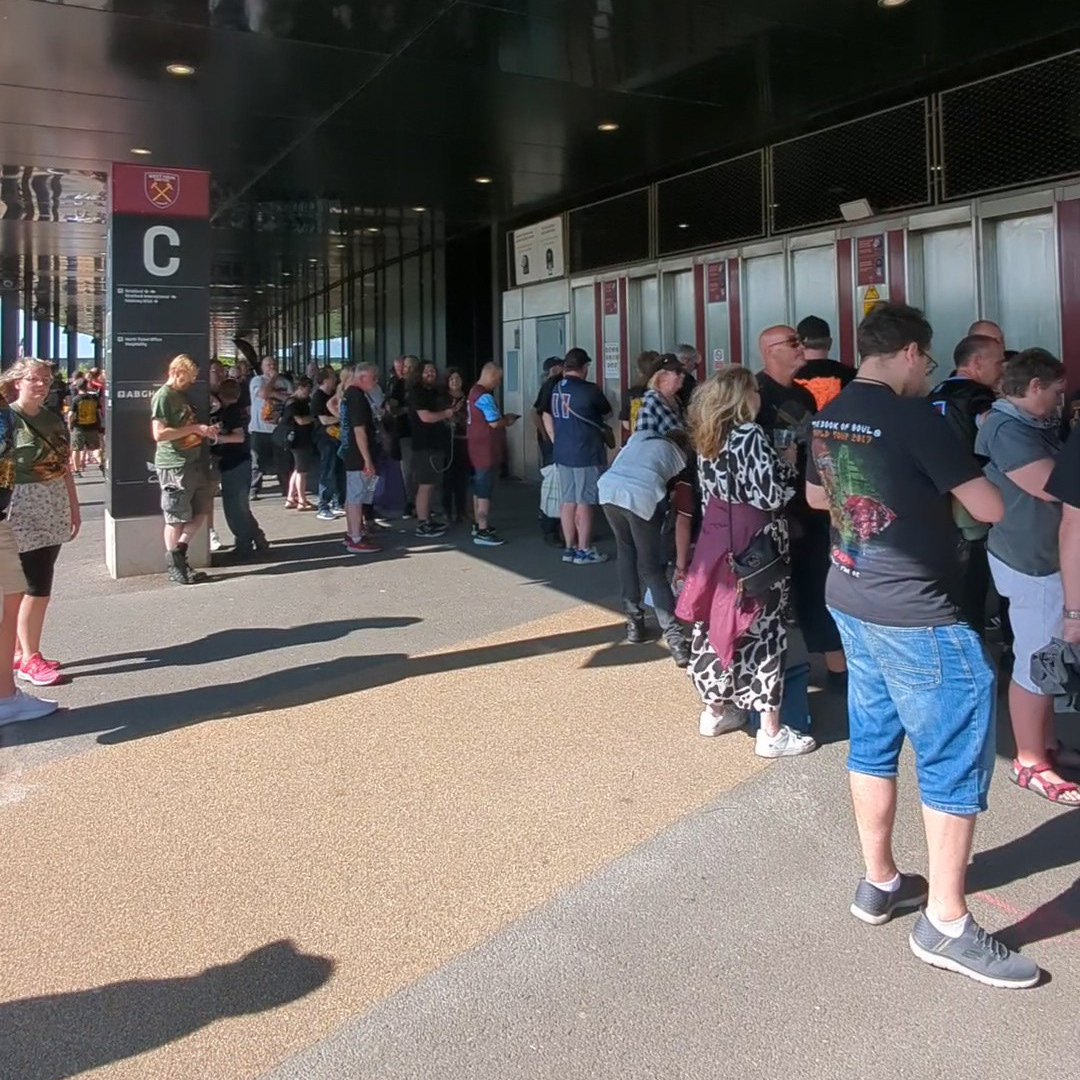
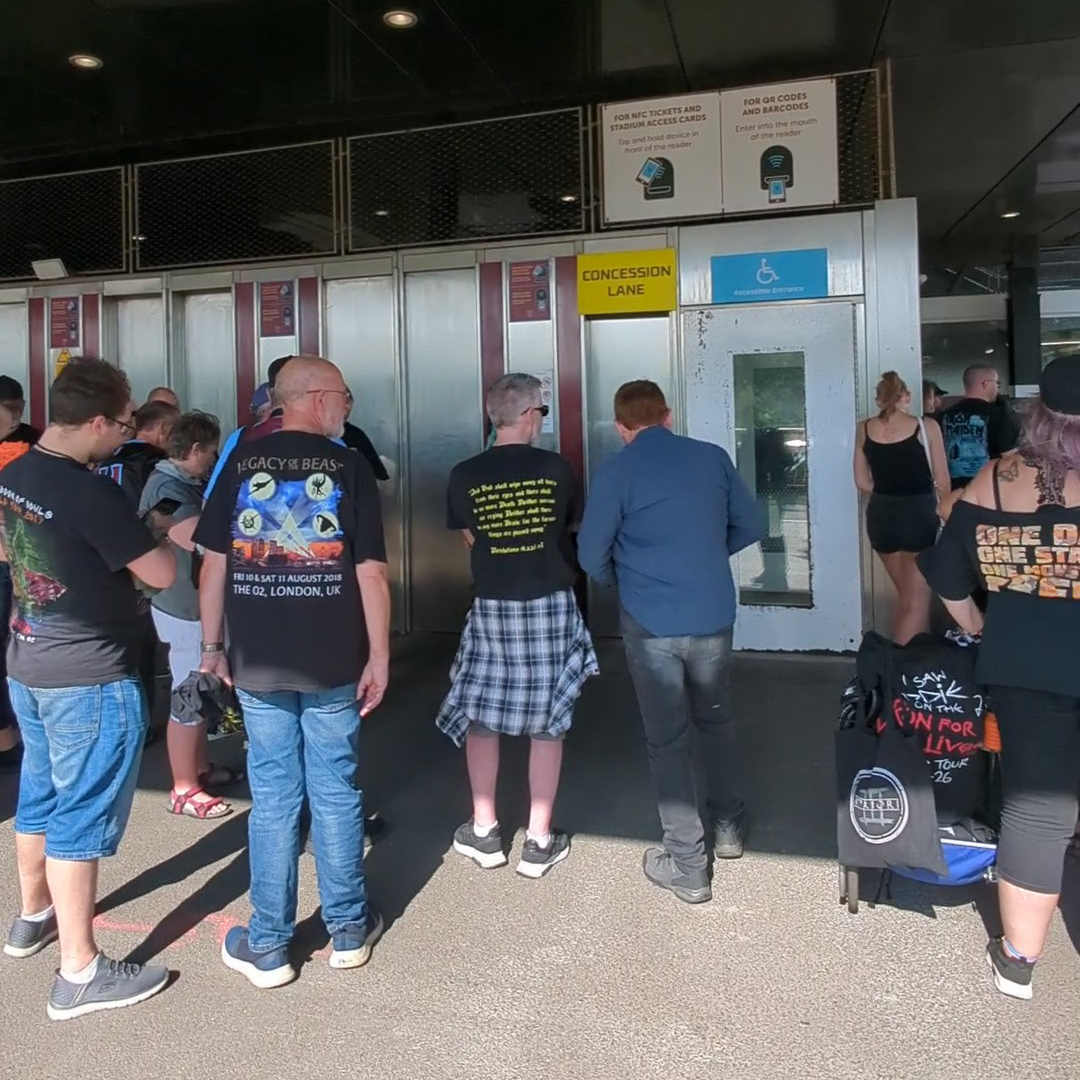
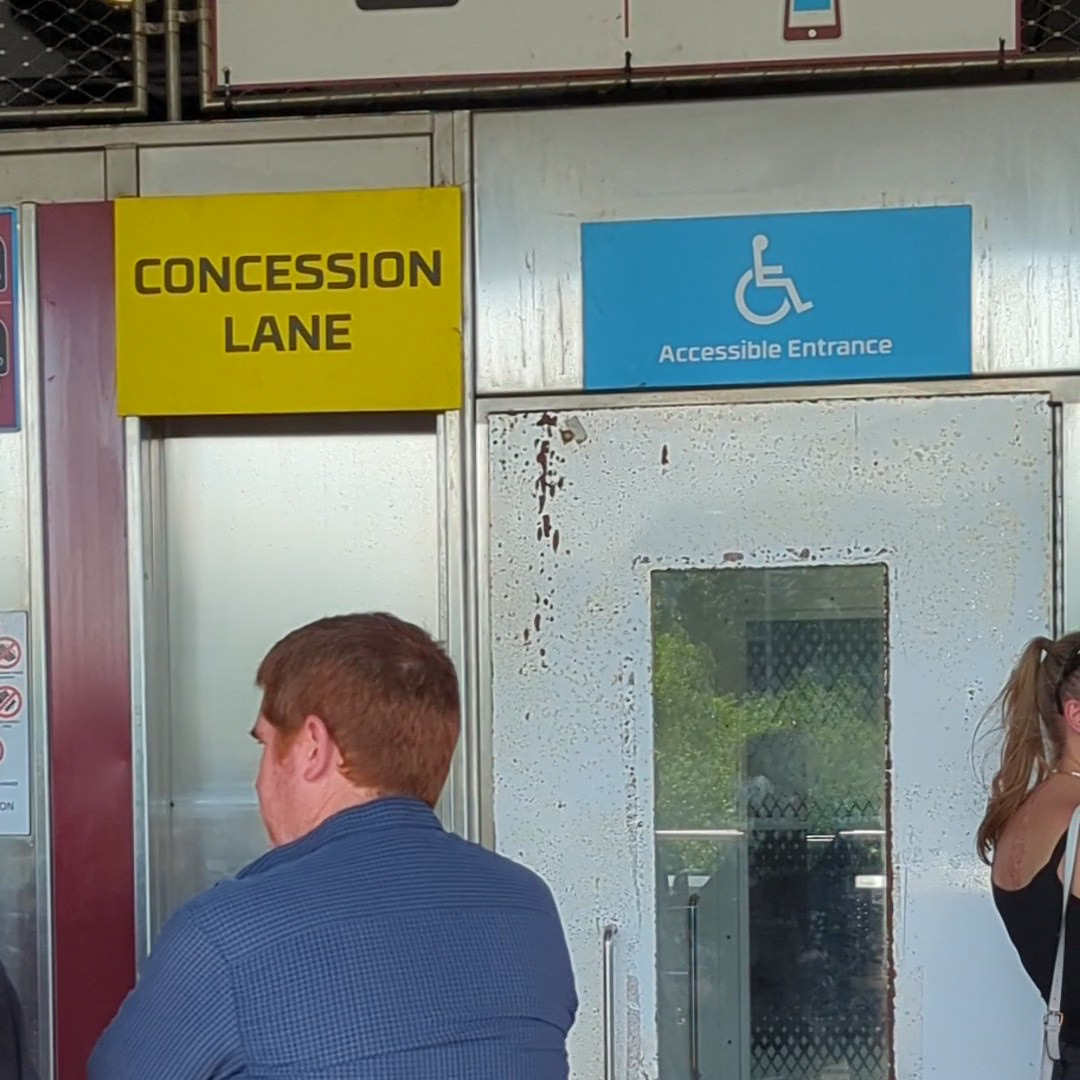
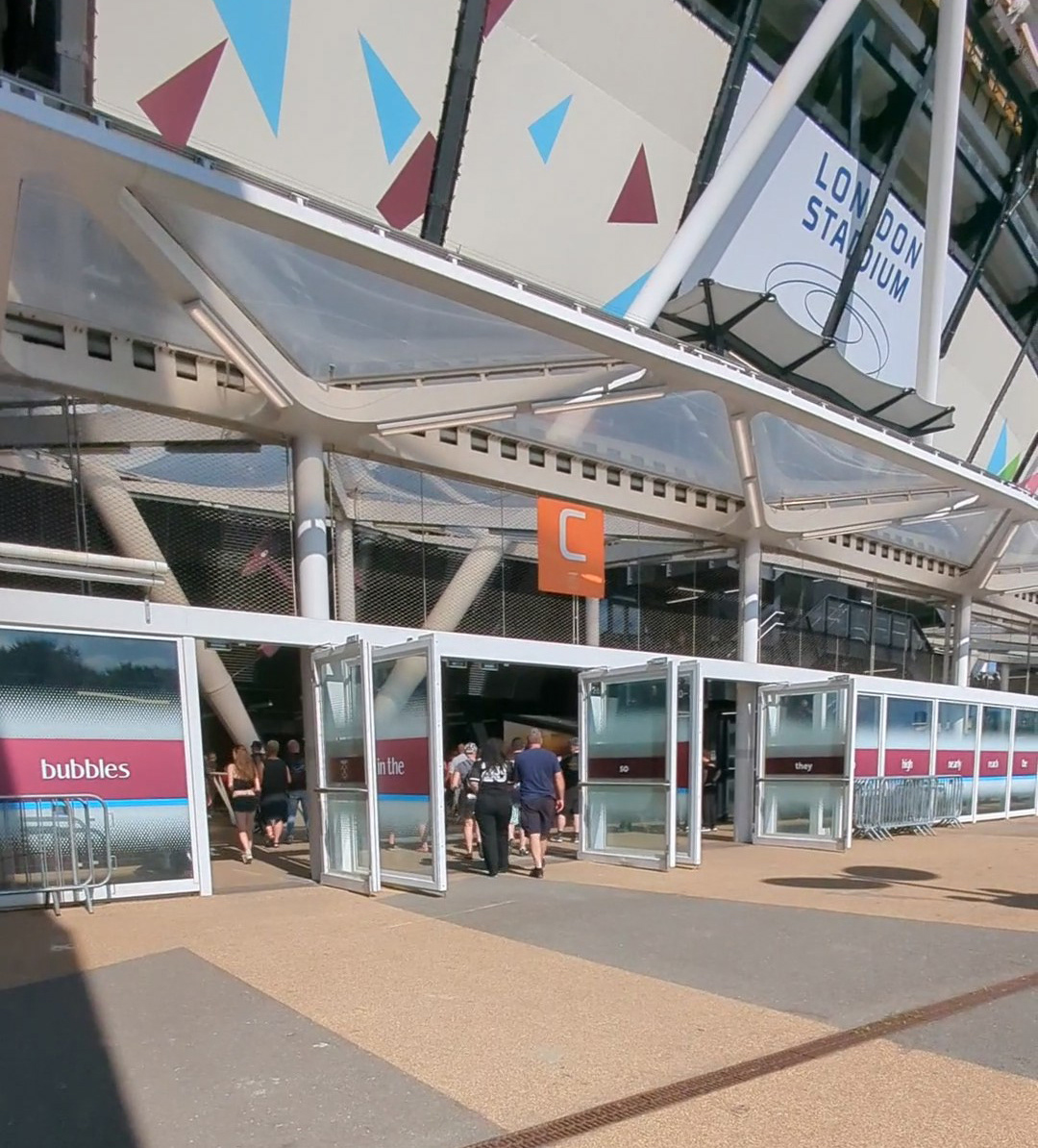

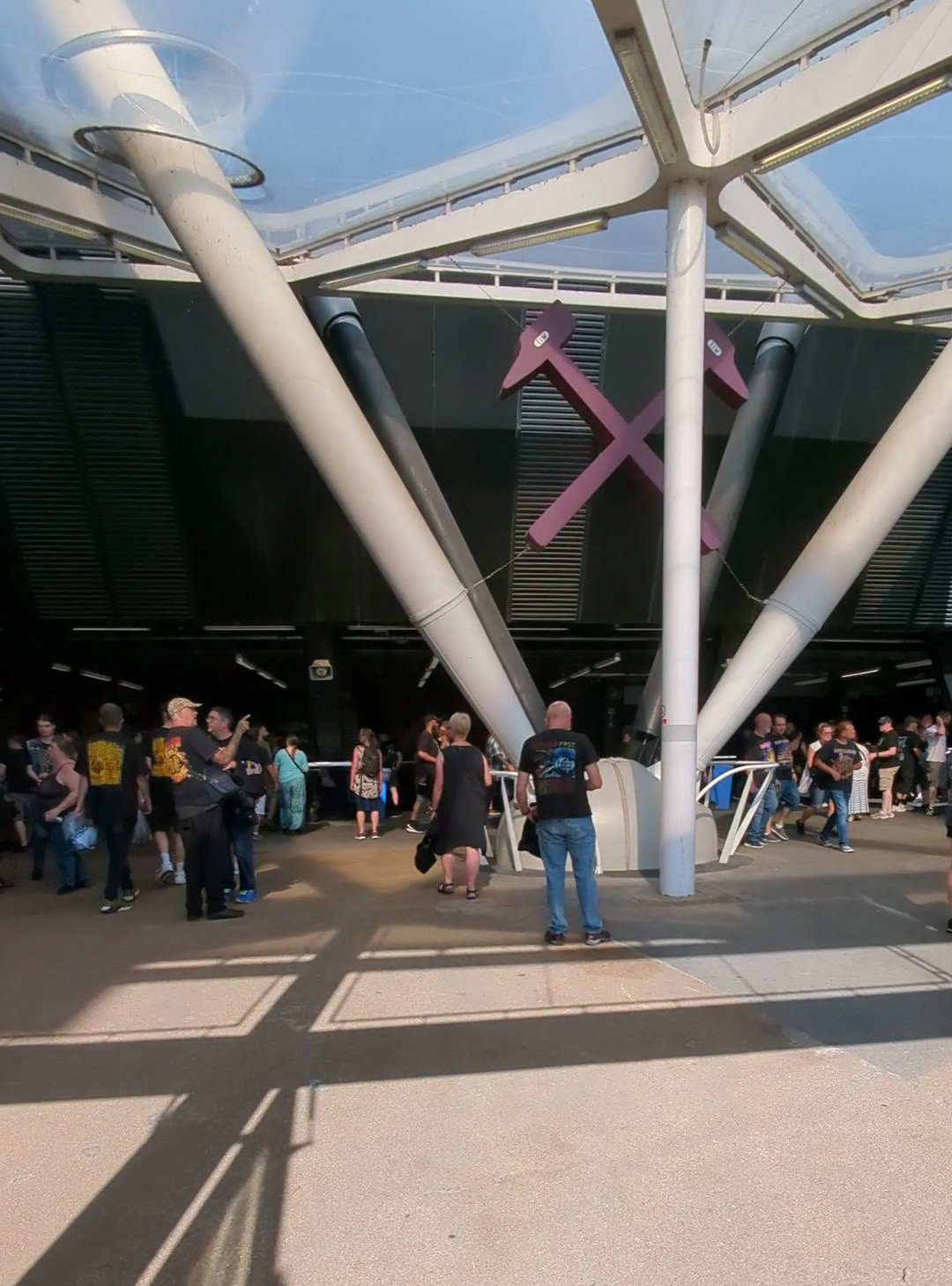
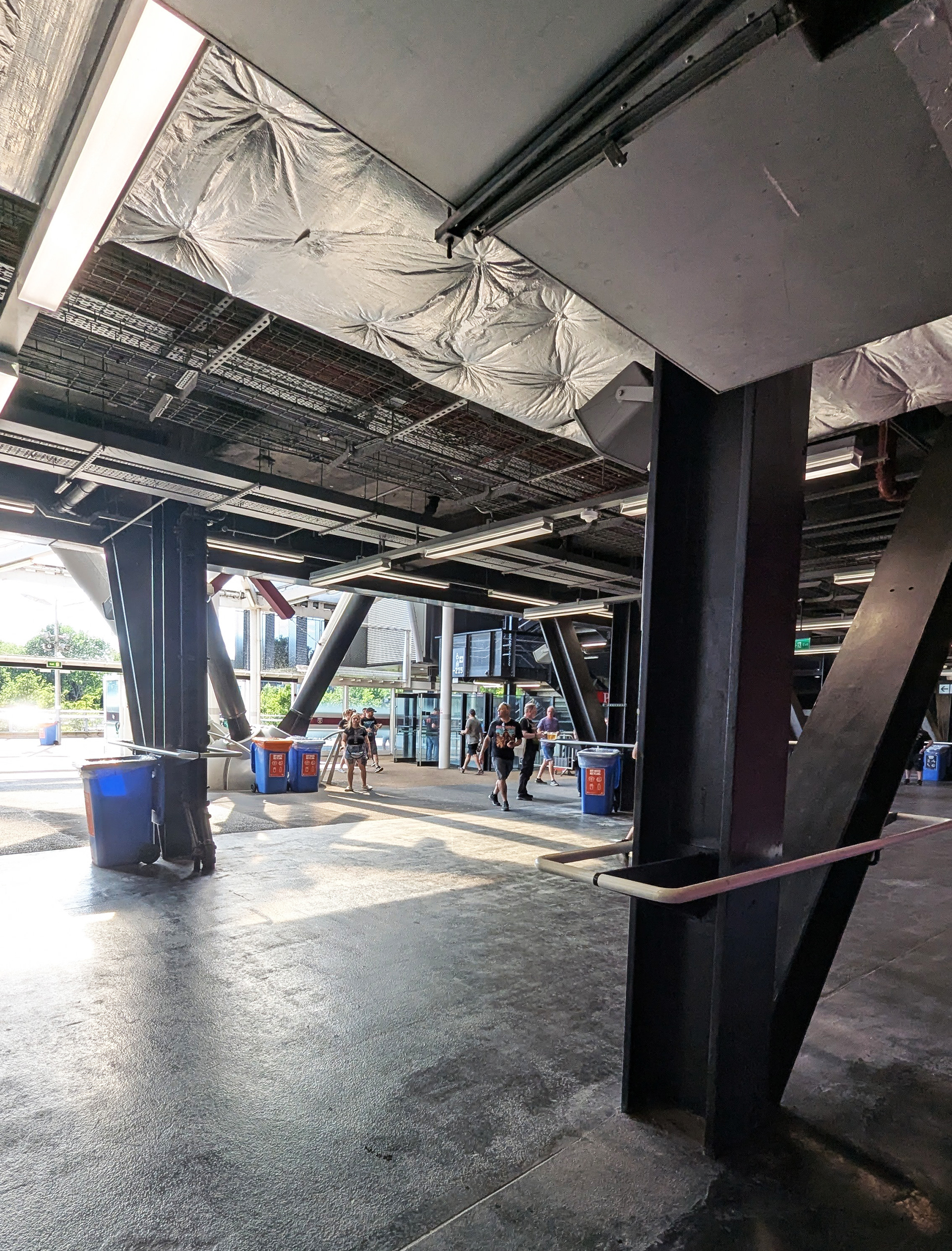

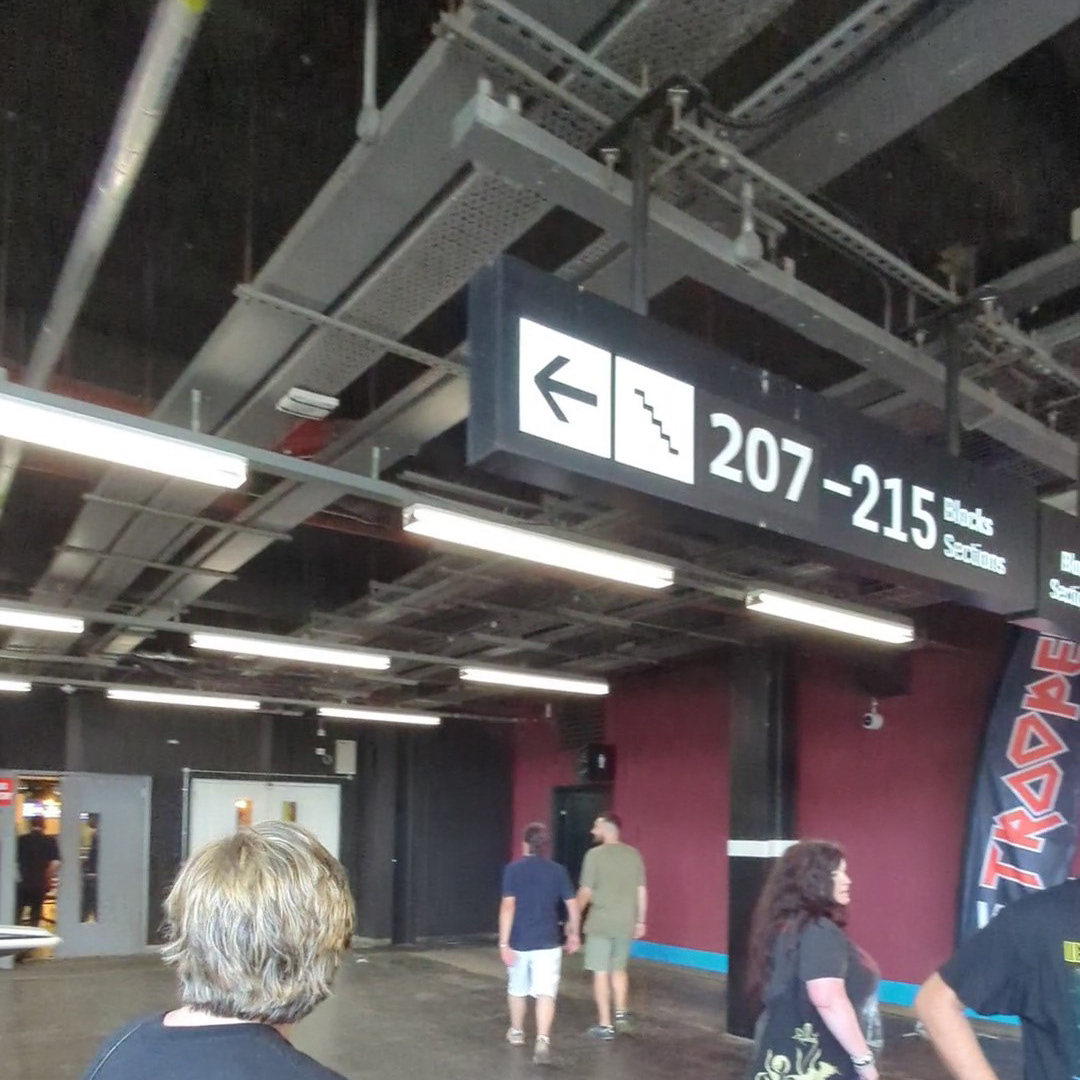

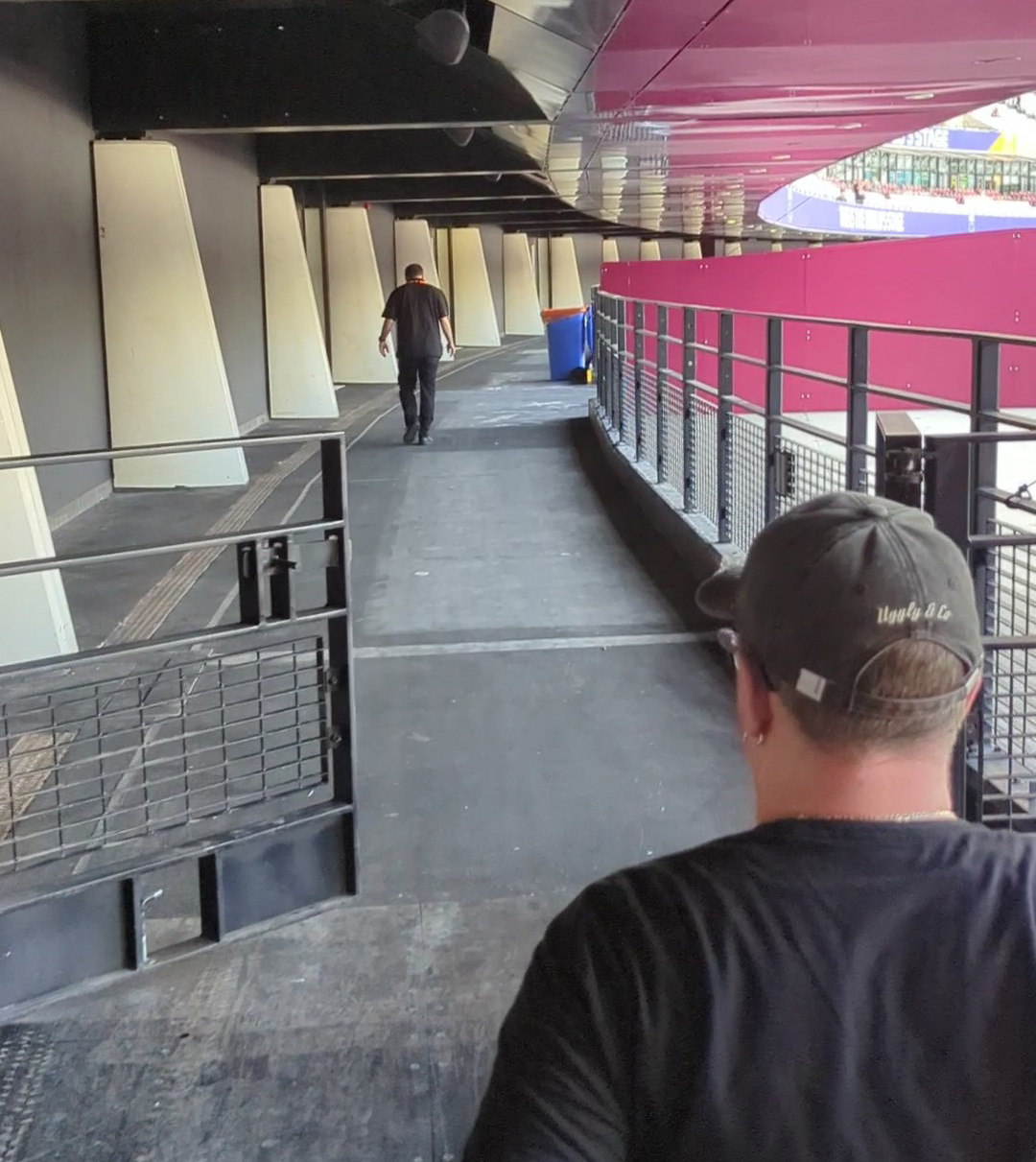


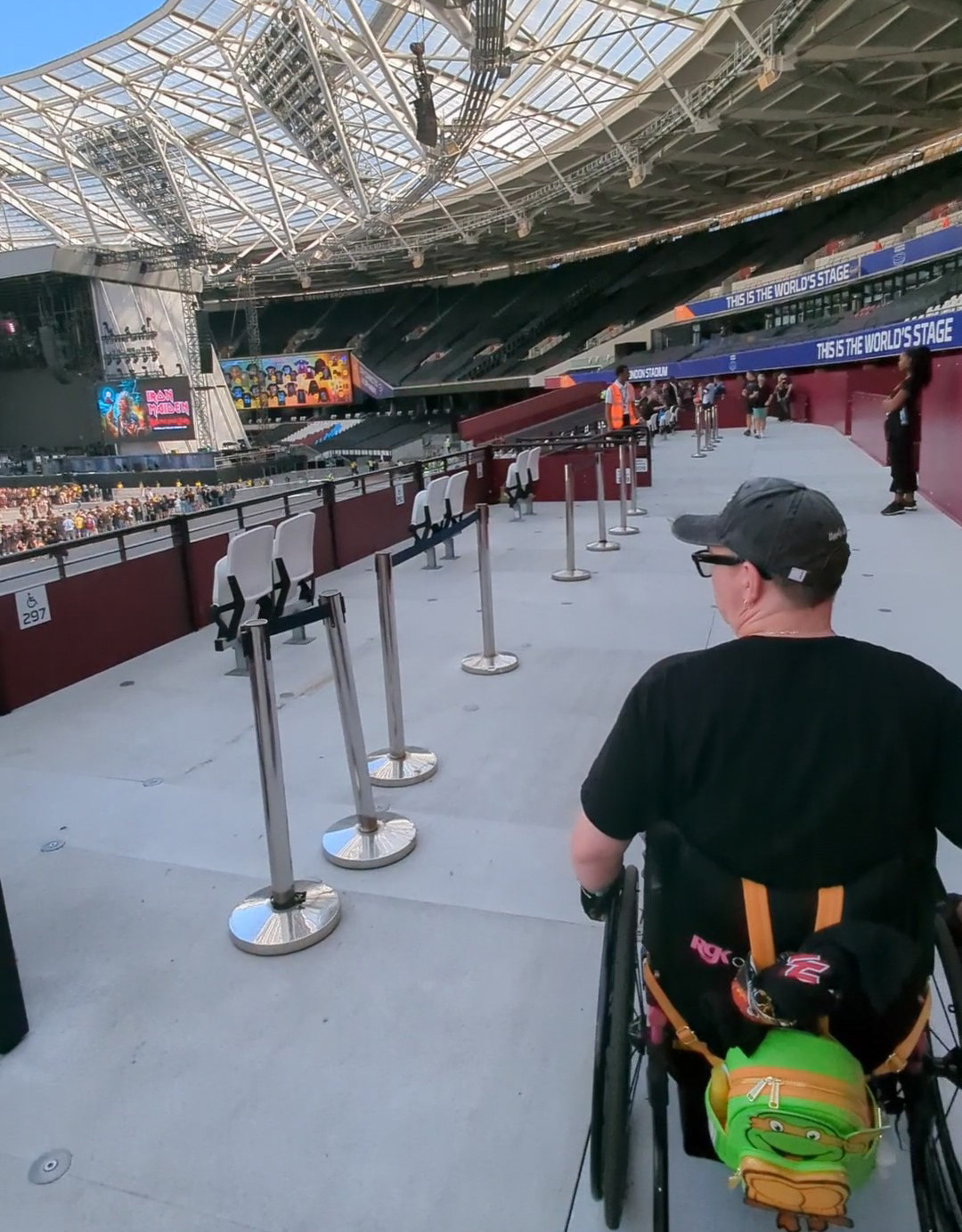
FACILITIES
Outside, on the stadium island, a selection of food and drink vendors and merchandise outlets was available. The merchandise outlets featured metal fence panels across the front of the tents, allowing customers to view the items for sale and make purchases easily. There was also a massive advert for the merchandise displayed on the big screens in front of the stadium.
The majority of the food vans had high, inaccessible counters. There was a self-service Brewdog bar usable by some wheelchair users, but the screens were relatively high. There were quite a few options for vegans, but options for other food allergies weren’t clearly advertised. There was a gluten-free chicken nugget van that we’d used a few weeks before at Silverstone, so we knew they were good and safe.
There are also water bottle filling points on the island, located at gates 5/6, 10, 14, and 16, which were very popular the day we visited, with very long queues.
There were a limited number of portaloos scattered around, including some accessible ones.
There is some shelter from the weather under the narrow canopies around the stadium, but I recommend coming prepared if you plan to be on the island for any length of time, whether it's hot or cold.
There is a lot of signage on the stadium island to help you find your way around. The signage included turnstile letters, transport stations and facilities such as the box office.
On the concourse, you’ll find all the regular matchday facilities, including bars, snack bars, and toilets.
The bars have digital screens above advertising the available items, and there are tills dedicated to ‘customers with additional needs’. There are no lowered counters as they are all relatively low-level anyway.
The stadium has free water bottle filling points on the concourse at the entrances to Blocks 103-104, 112-113, 116, 120, 125, 127, 133, 137, 143, 150, 156, 201 and 215. These are stainless steel water fountains with two push-button taps to make filling bottles and cups easy.
There are additional external water points out on stadium island at Exits 5/6, 10, 14 and 16. These are standard turn taps with stainless steel troughs below. Some users may struggle to operate these taps.
Accessible toilets are available on all levels of the stadium, conveniently located near the wheelchair bays. They all require a radar key for entry and are all unisex. The two nearest to where we were seated were on the concourse, where we entered the stadium bowl.
The stadium also features three adult Changing Places facilities: two located on the podium level and one in the Hospitality area.
A family-friendly, certified Wi-Fi connection is available on the concourses and in the arena bowl. Still, the connection can become unstable when the stadium is at full capacity.
You can request BSL interpretation at selected stadium concerts. You’ll need to email the ticketing team in advance.
There are quiet spaces with sensory equipment available during stadium events. The spaces don’t all have a view of the event and may be on a level away from your seating. Again, please speak to the ticketing team in advance if you will require the facilities.

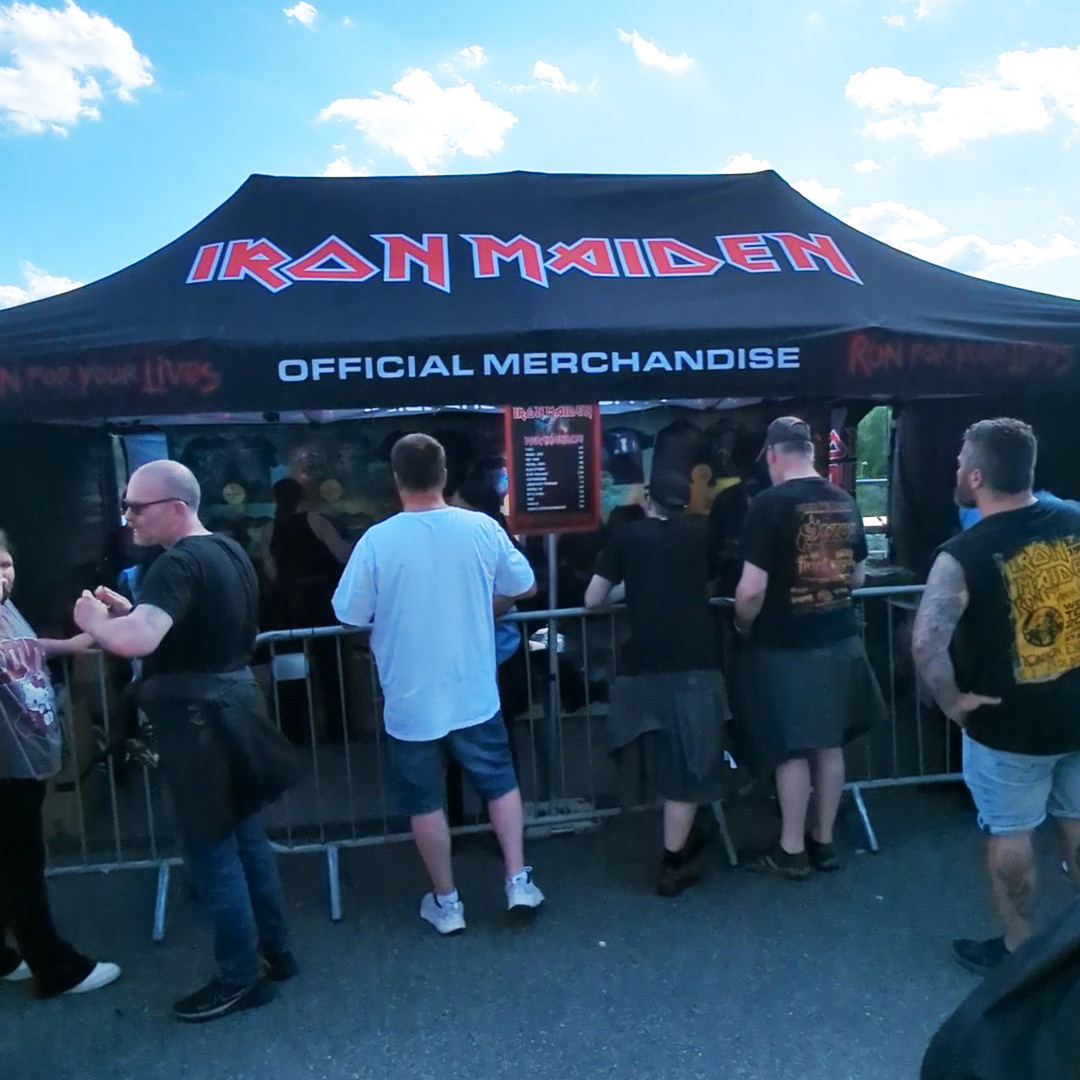

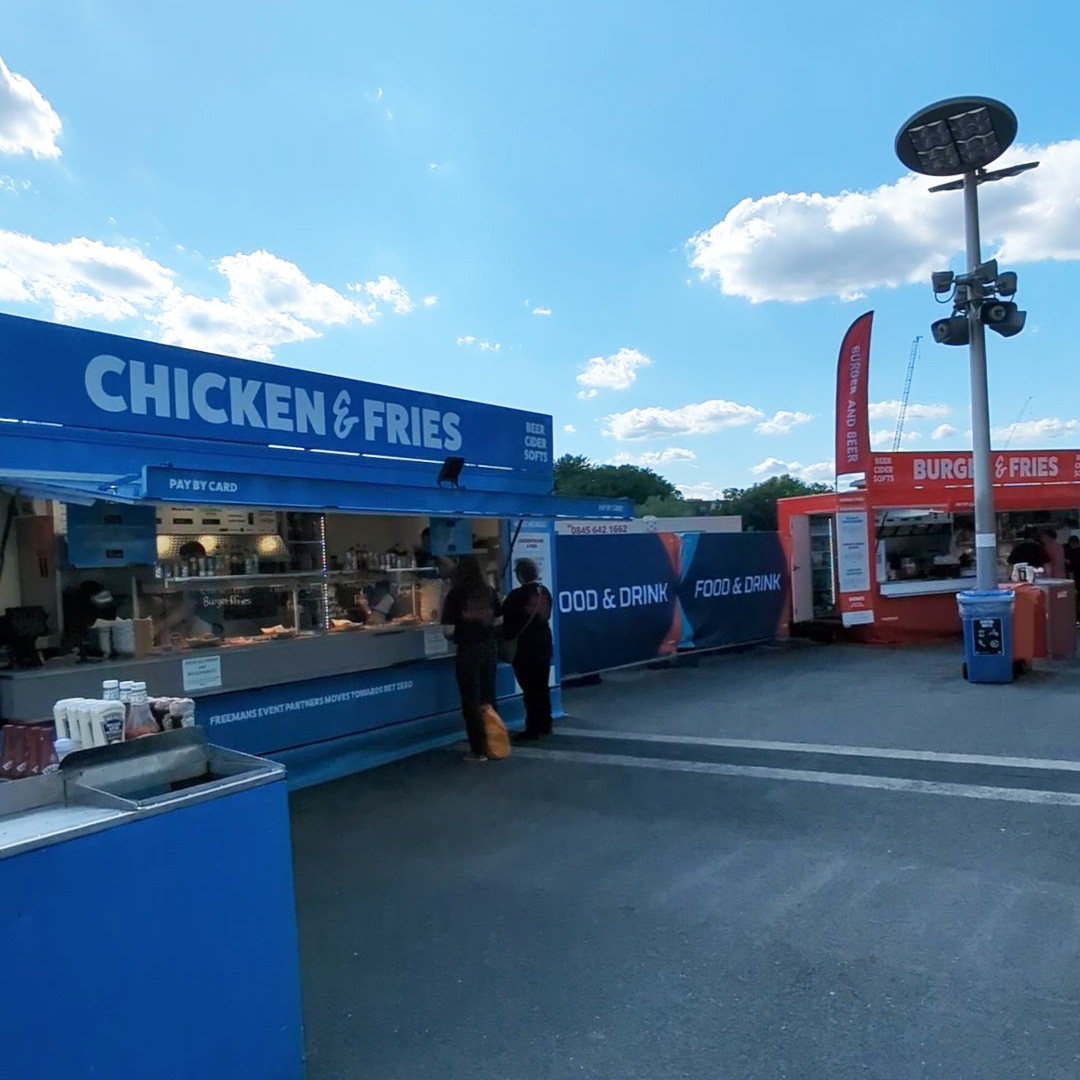
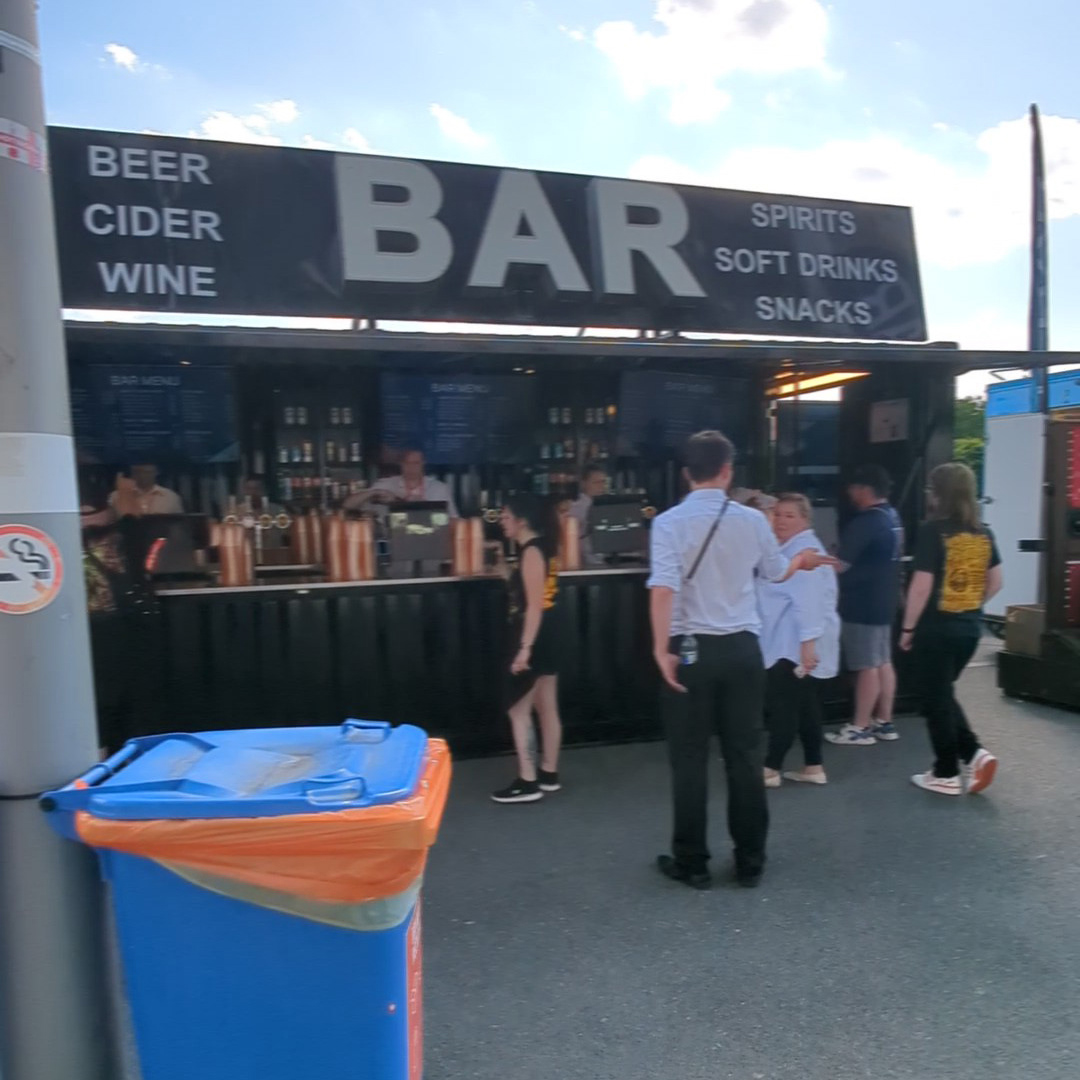
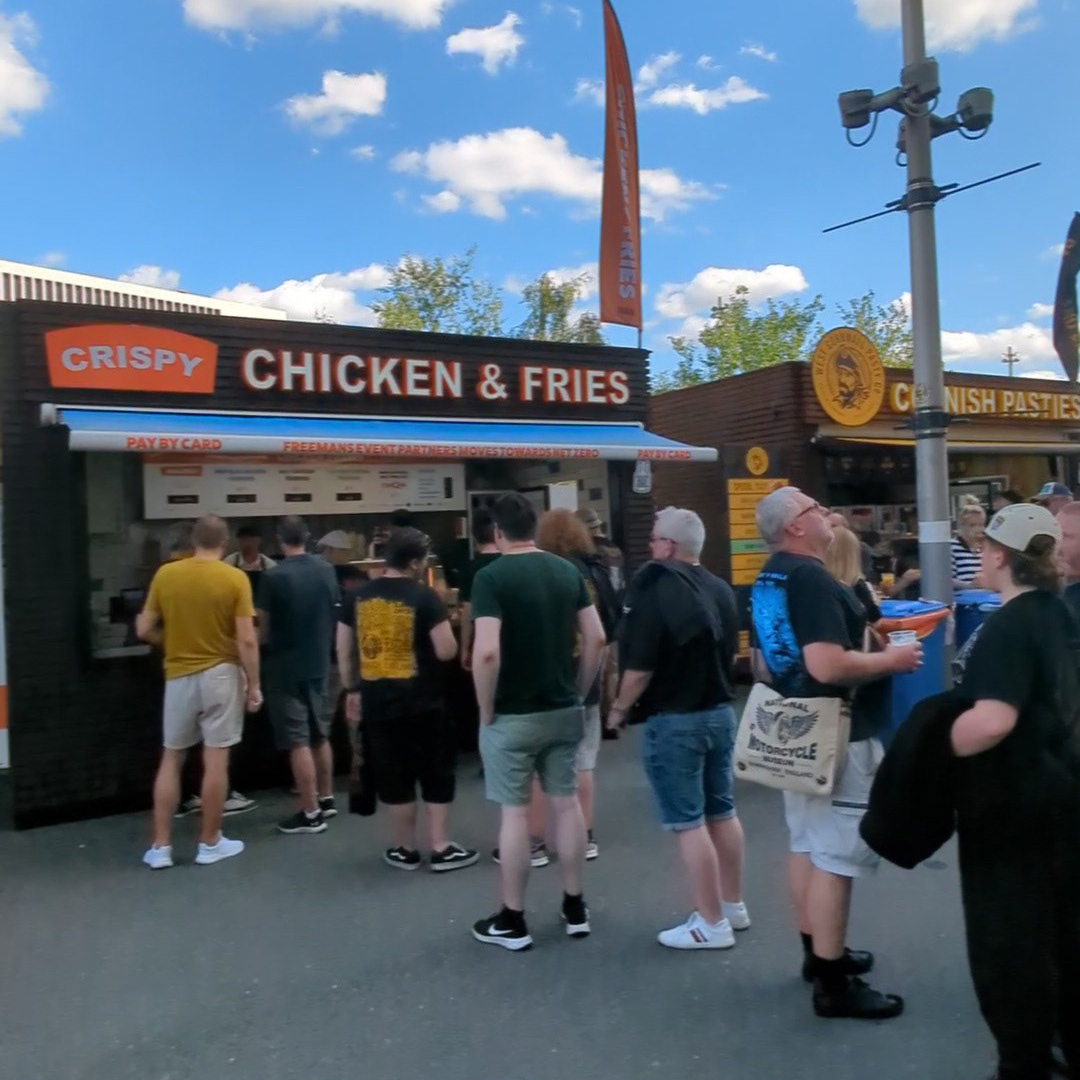
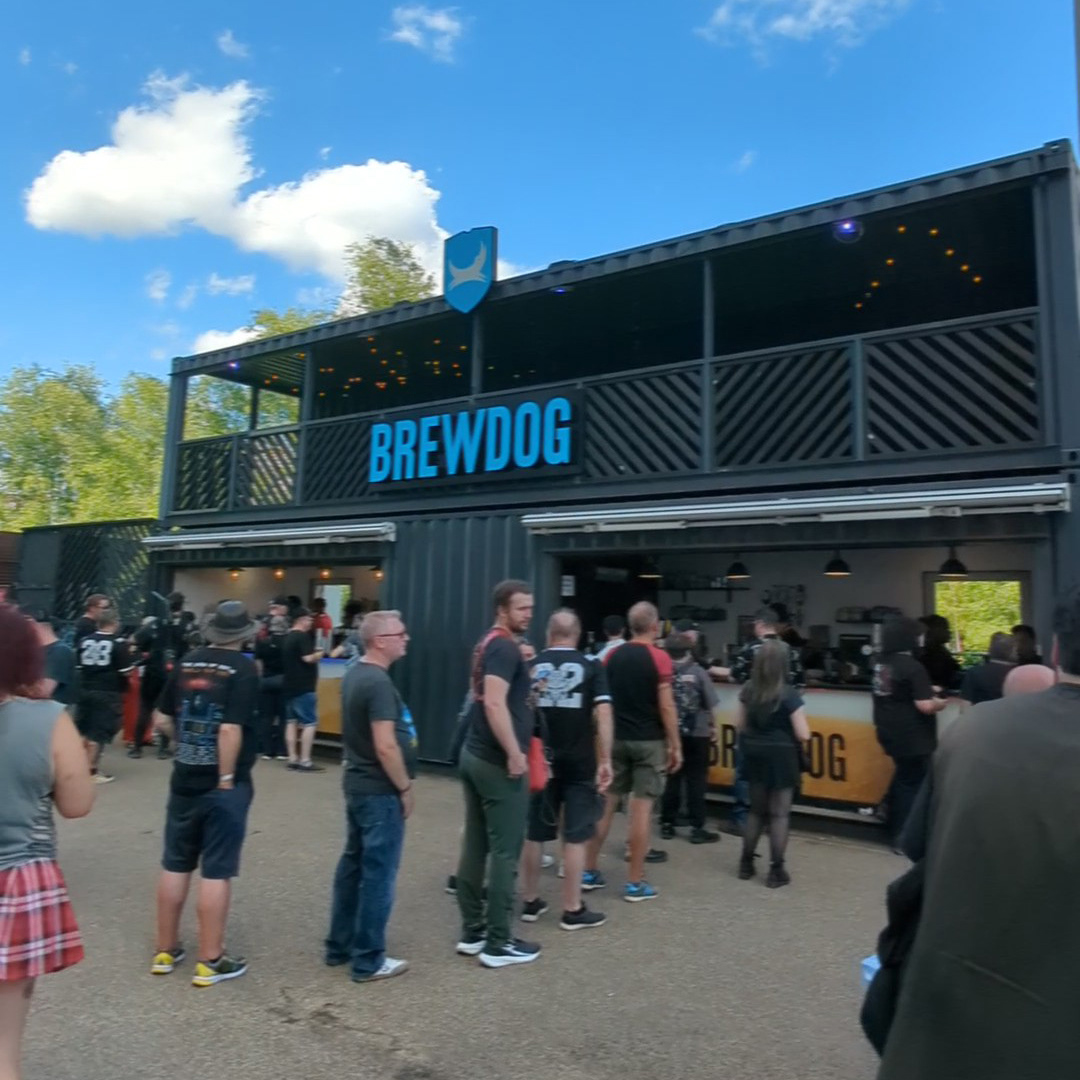
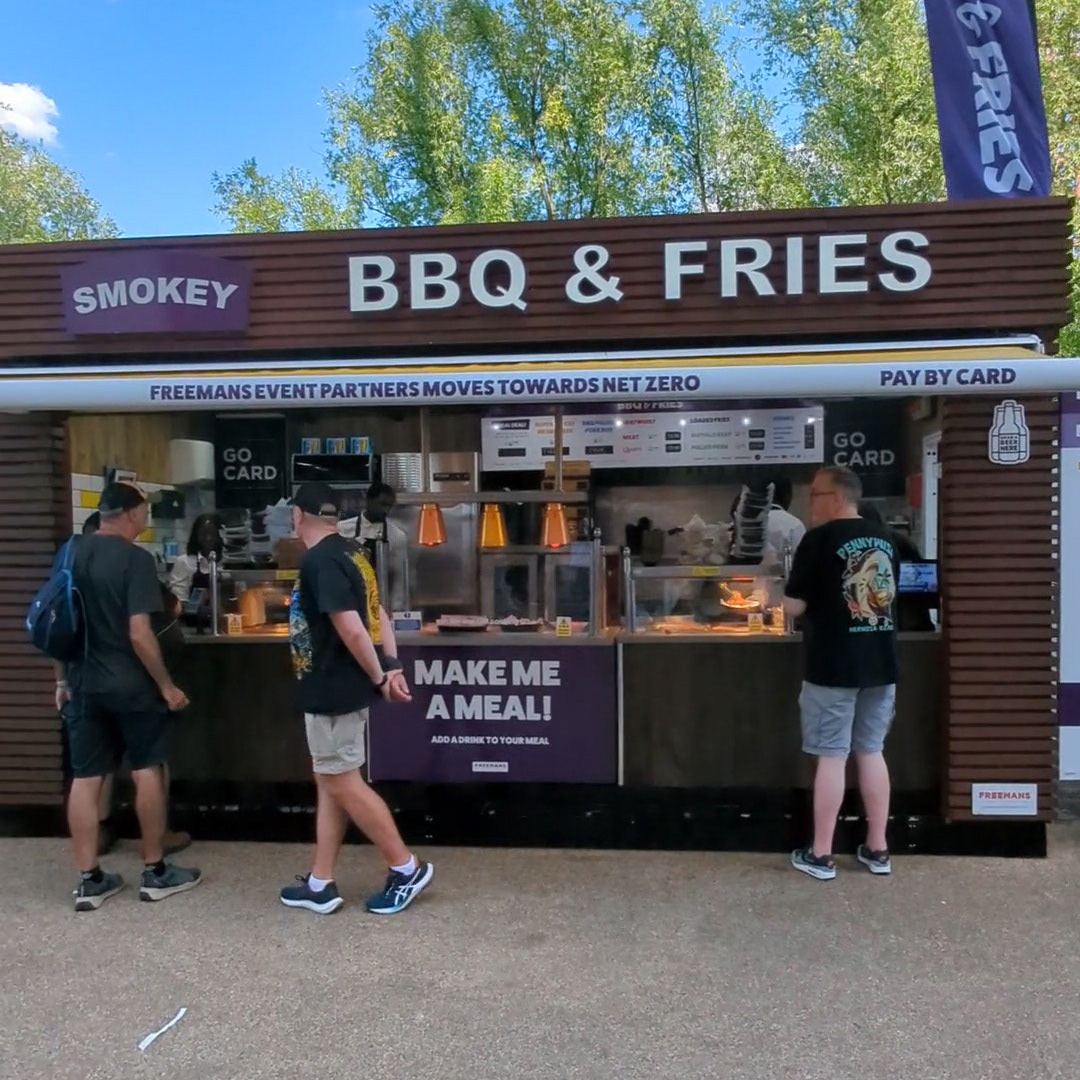
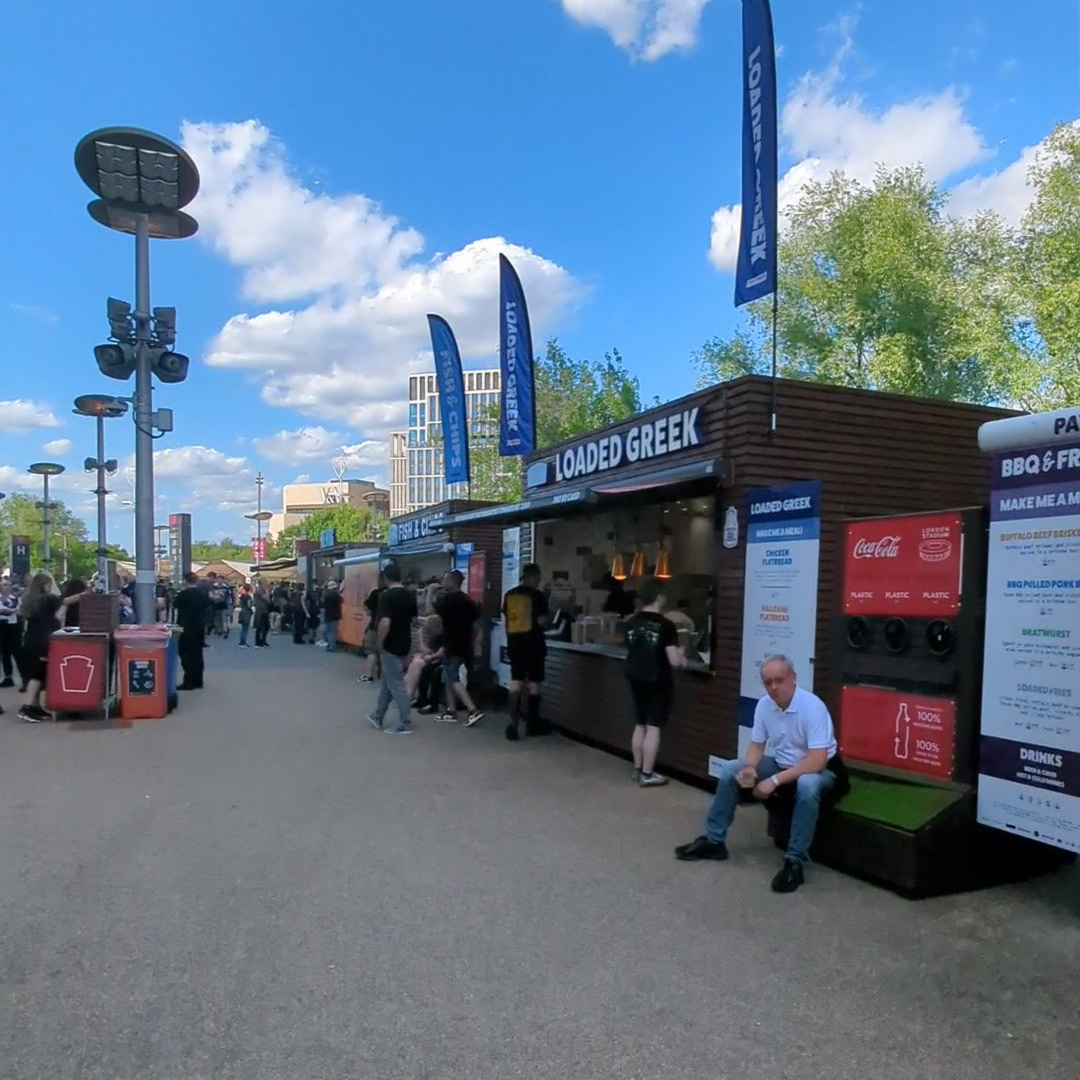
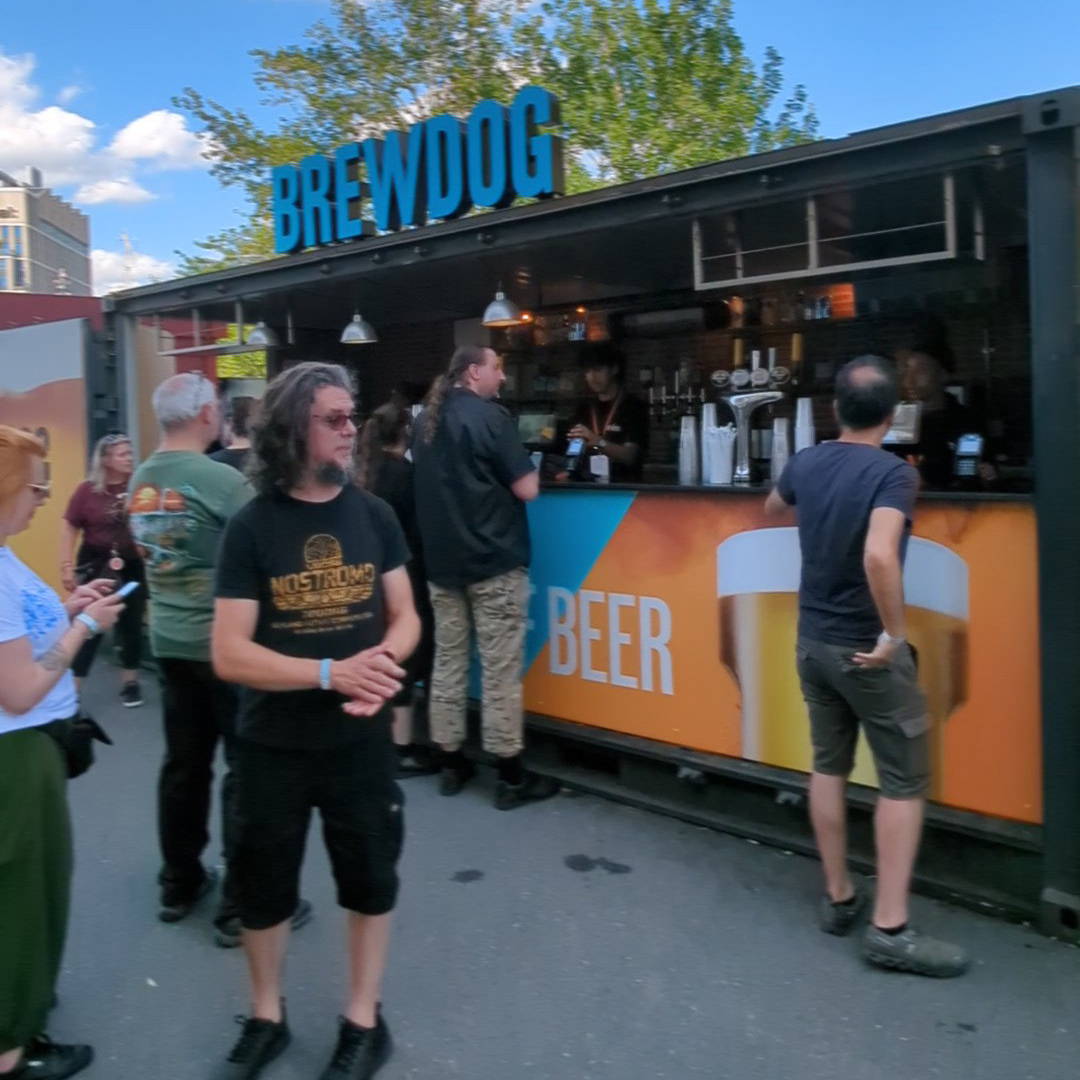


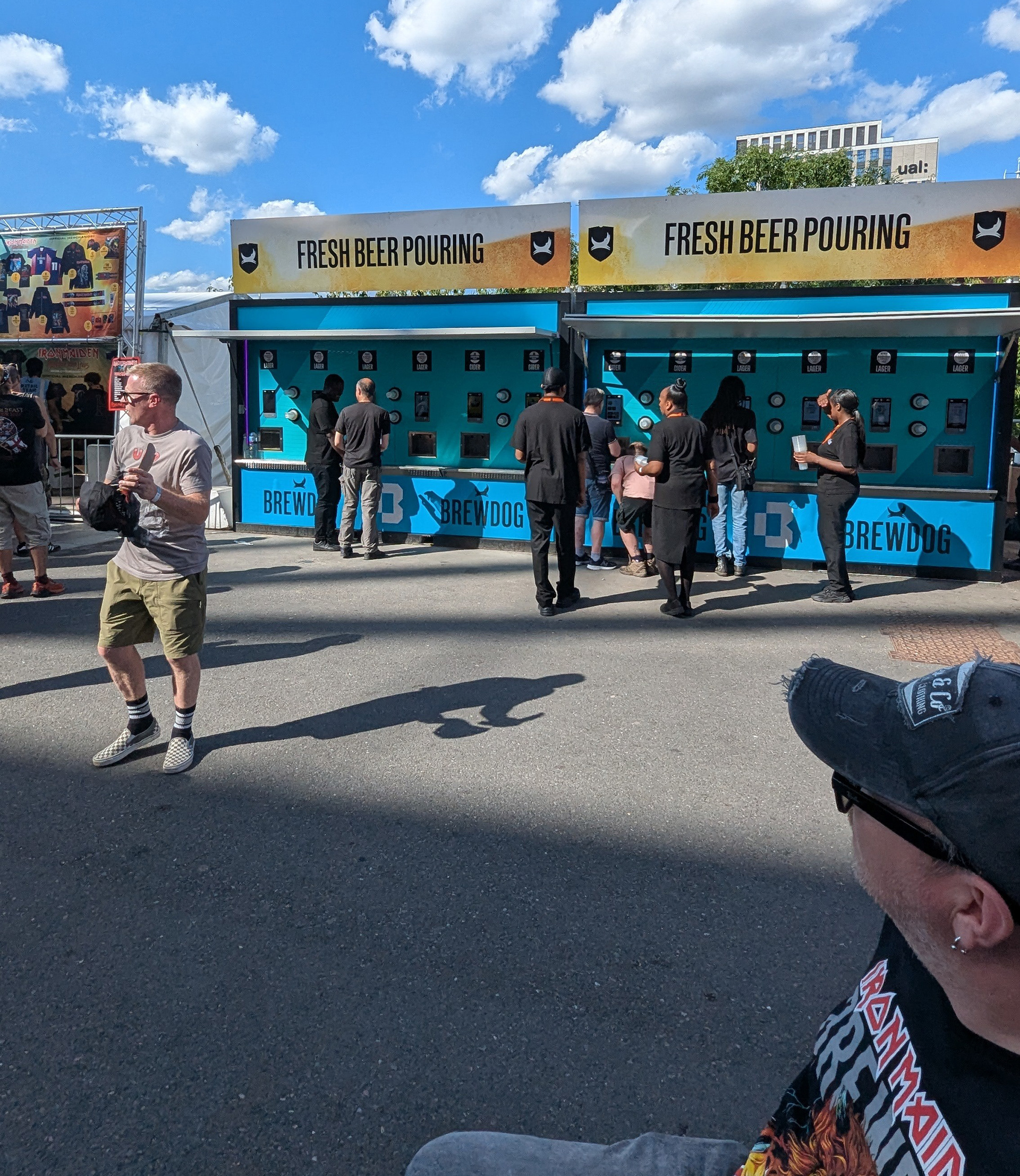

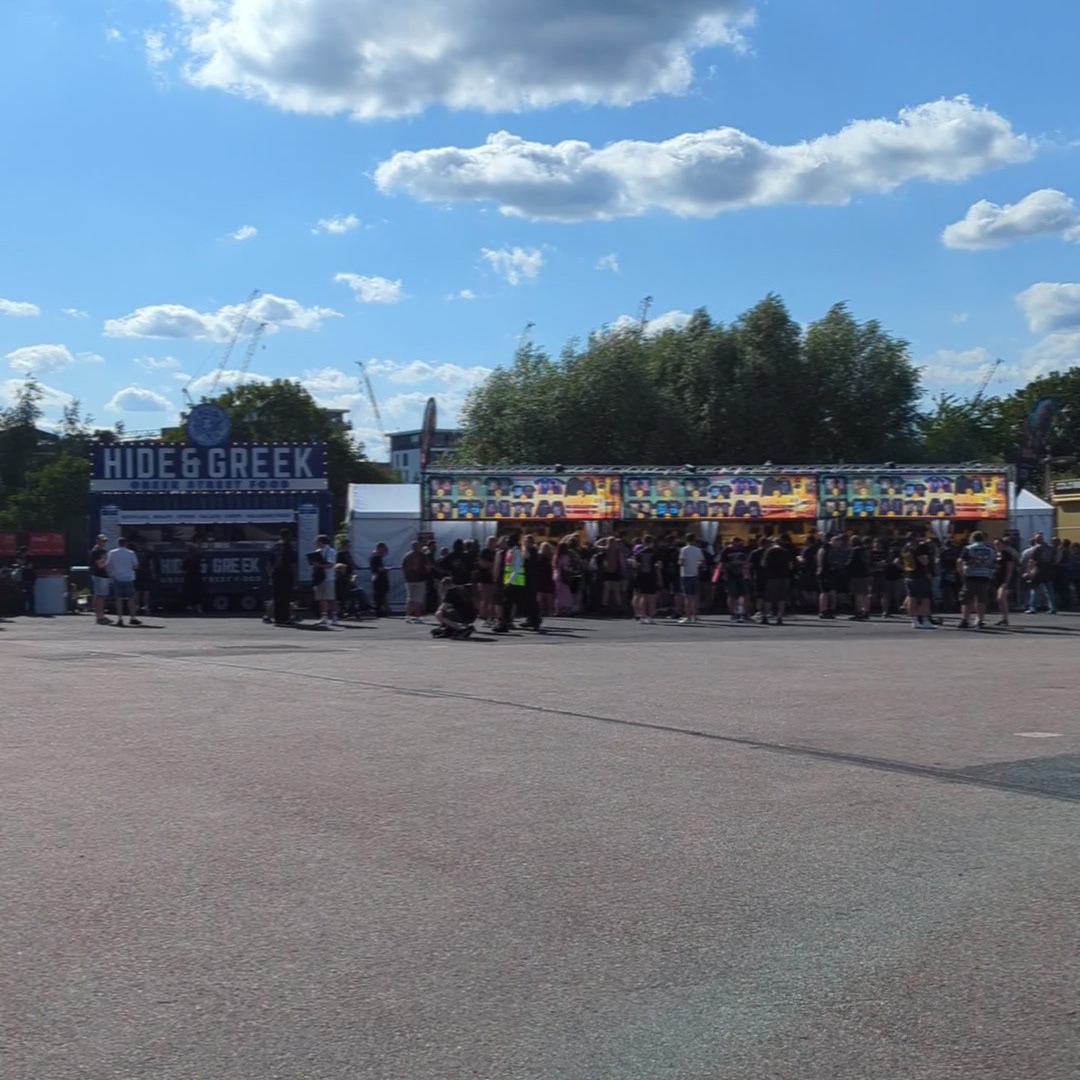

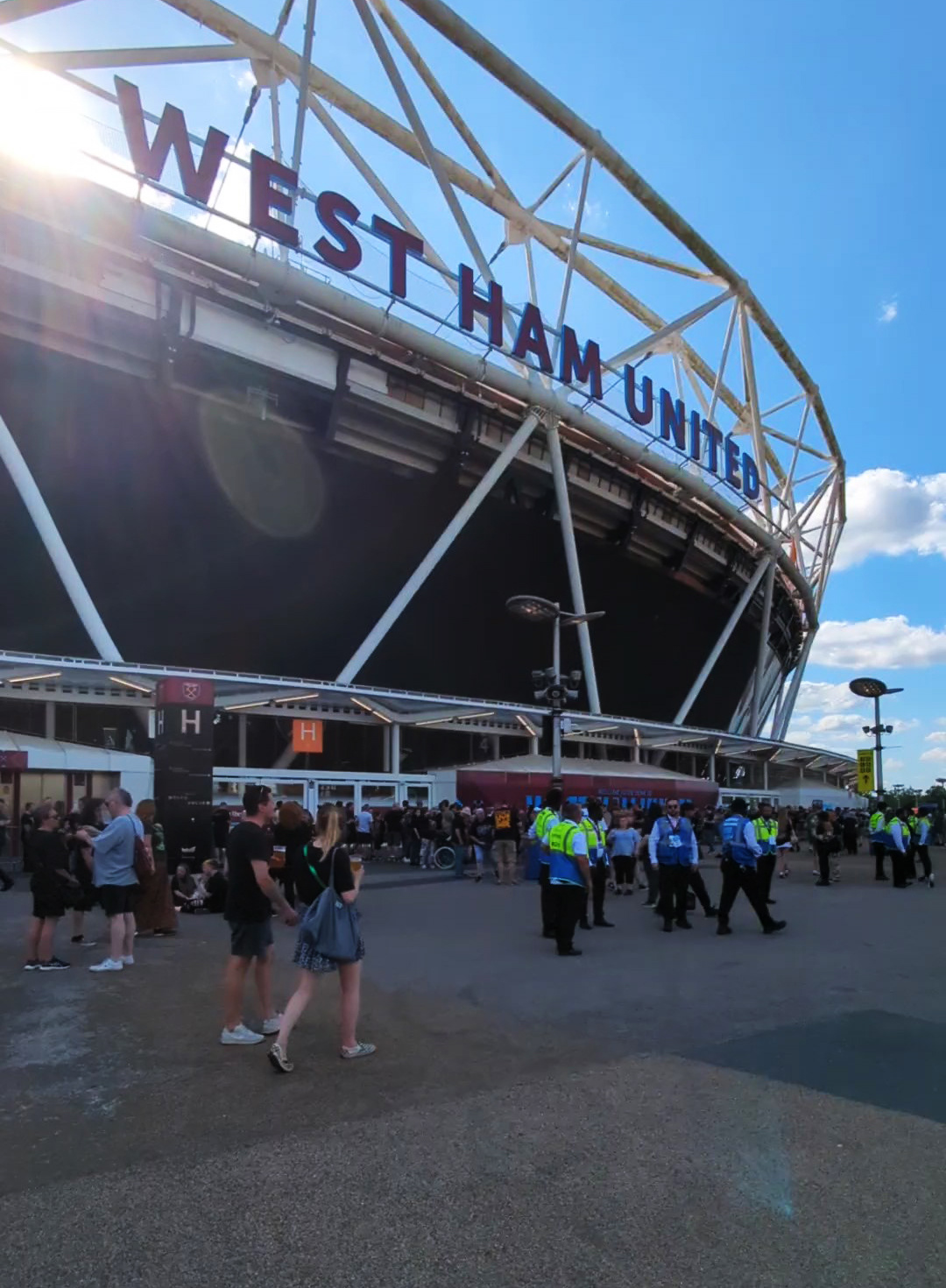

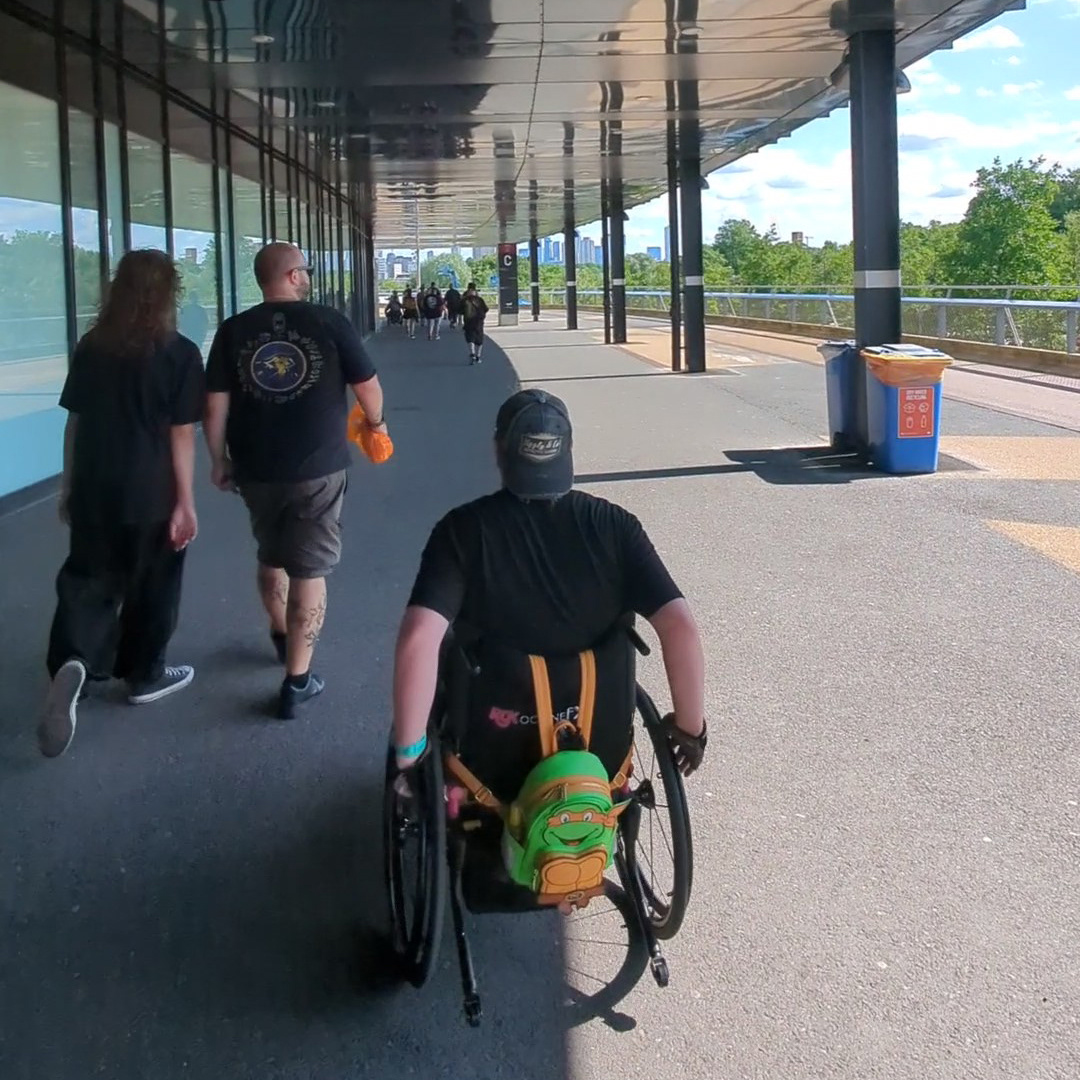
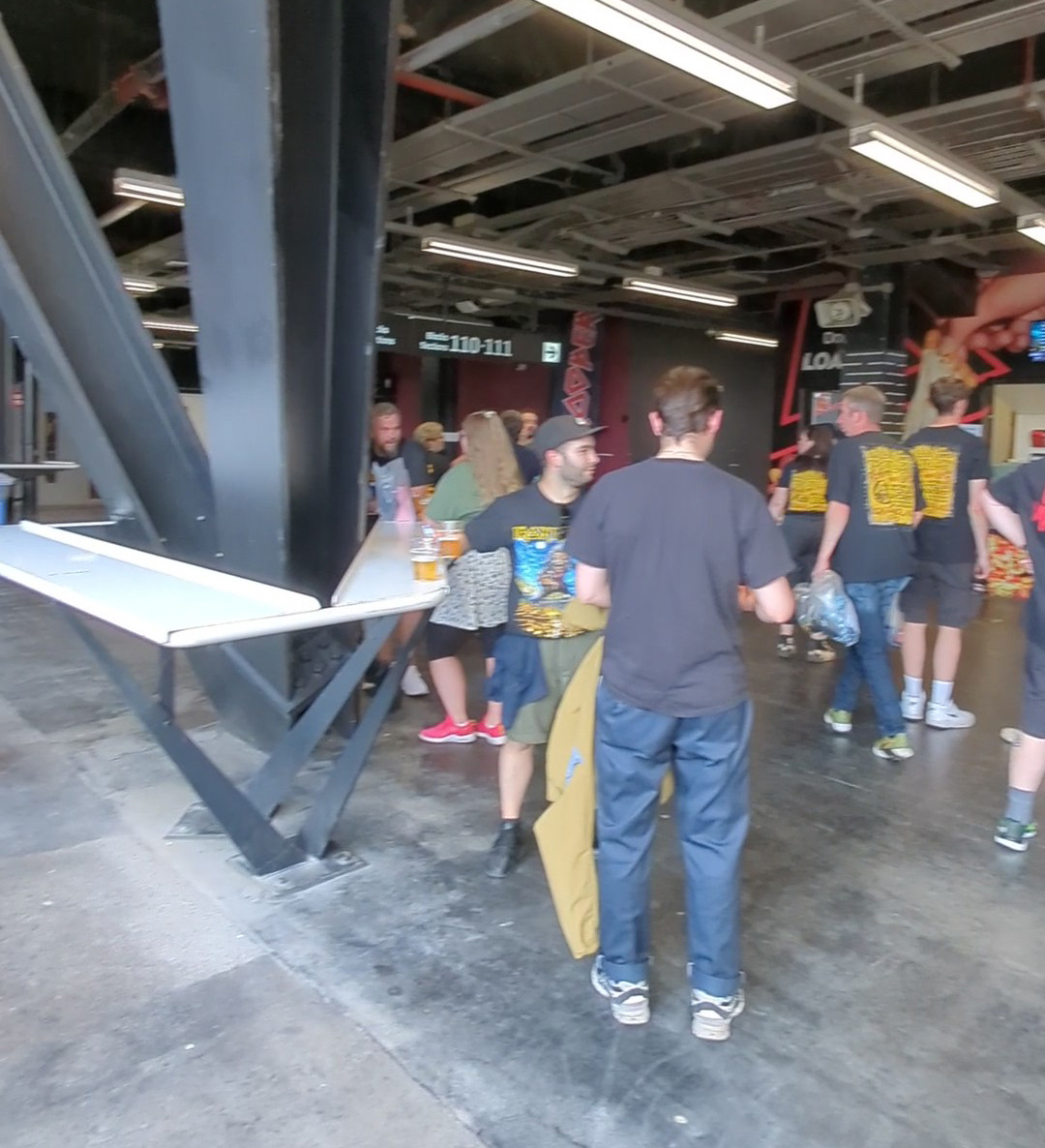
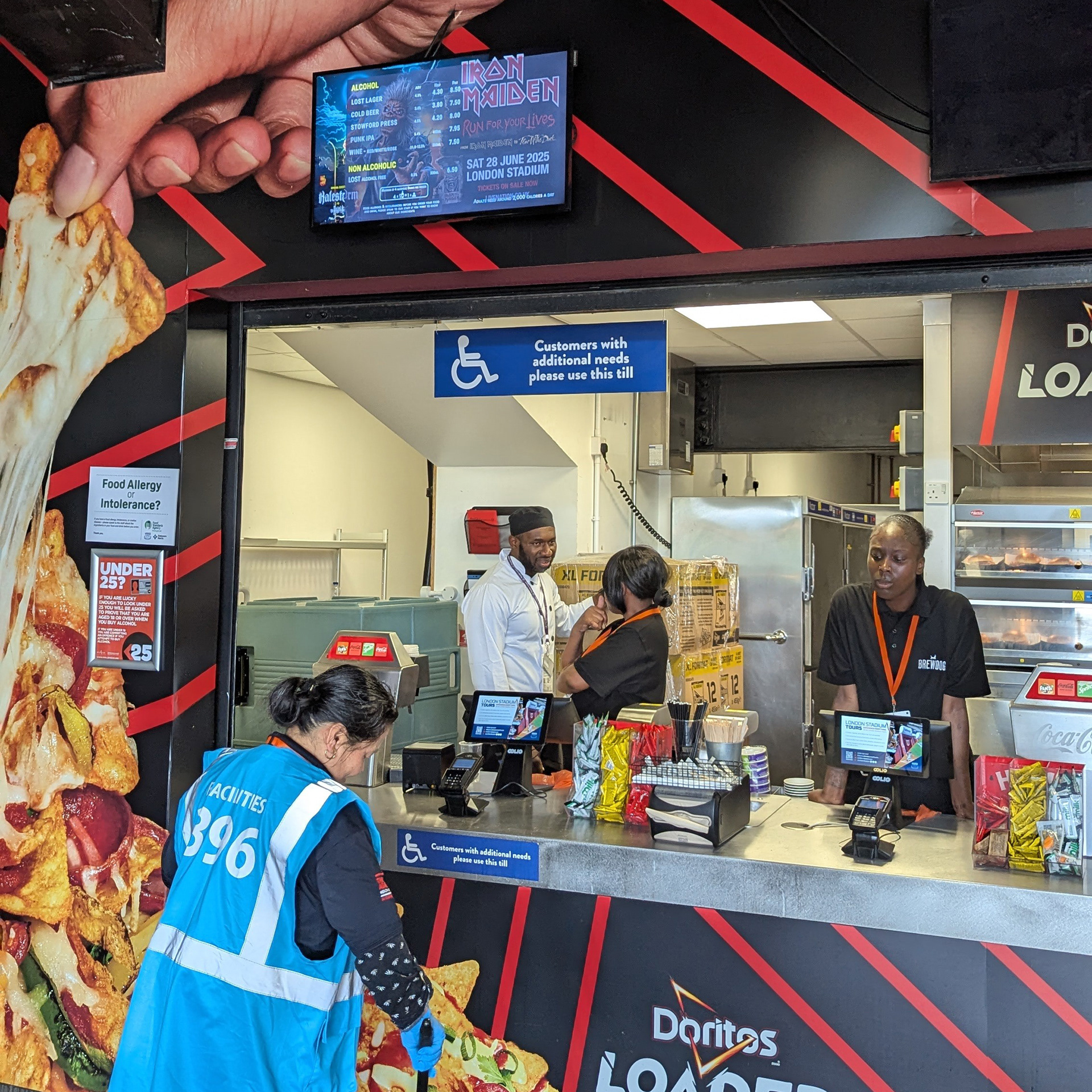
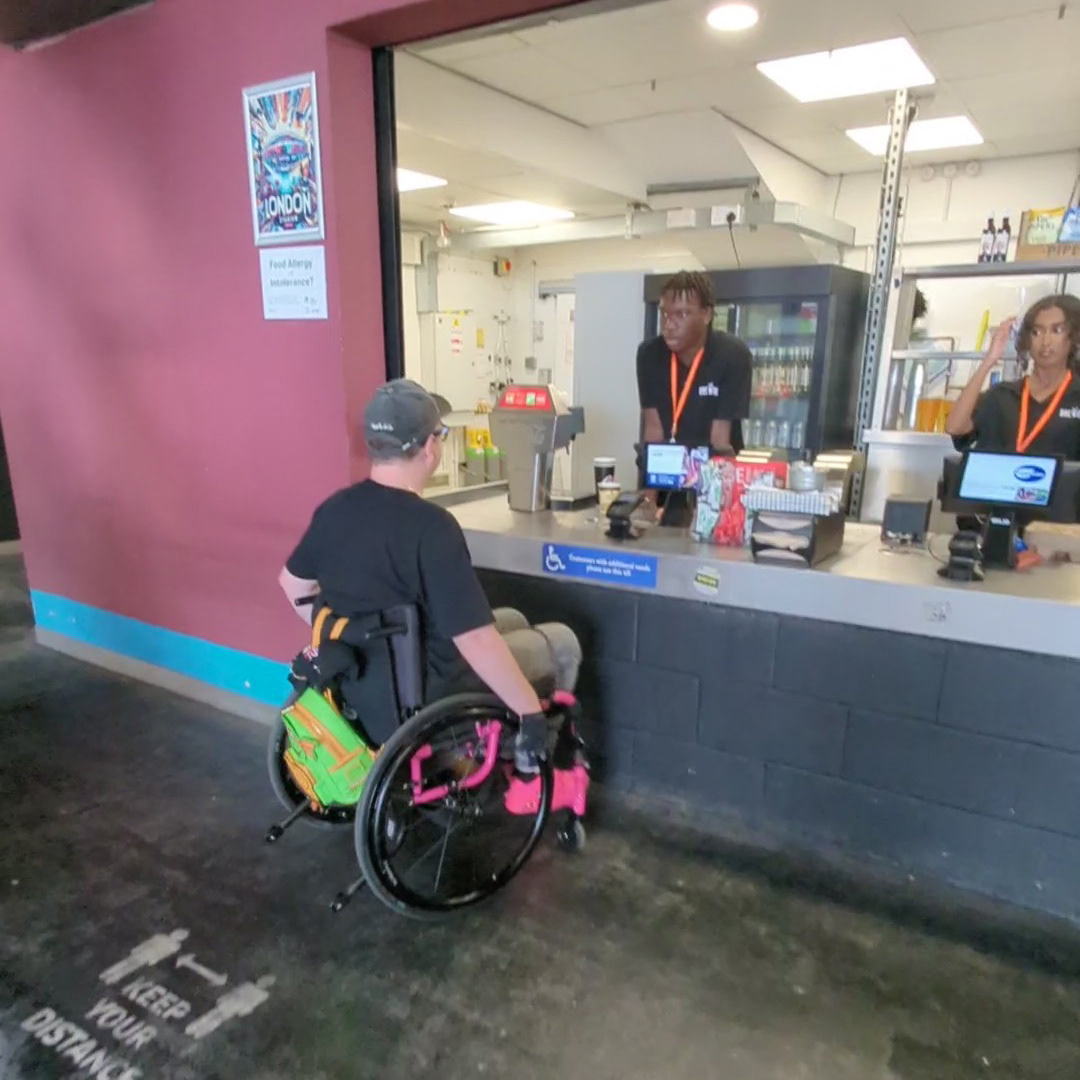

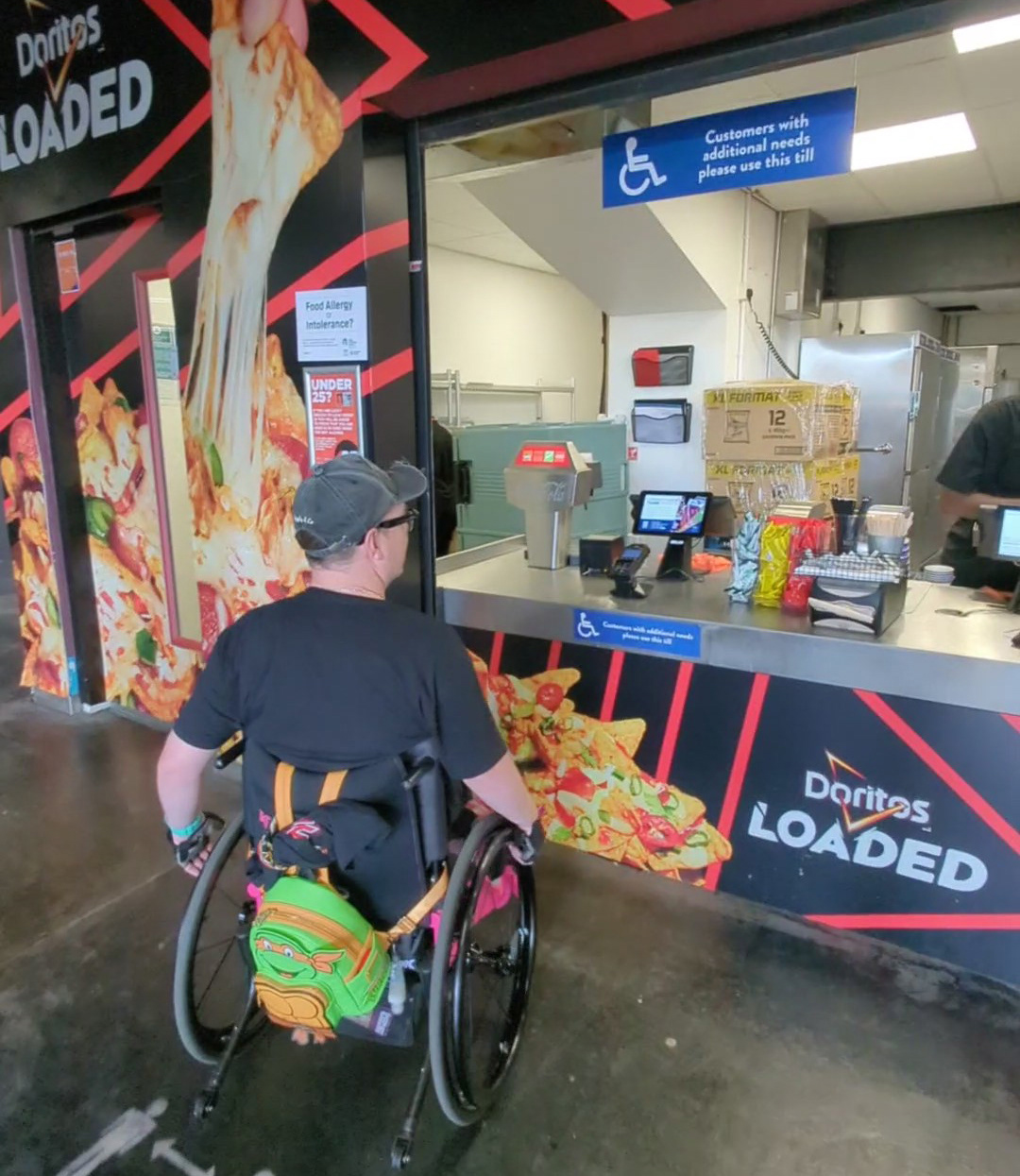

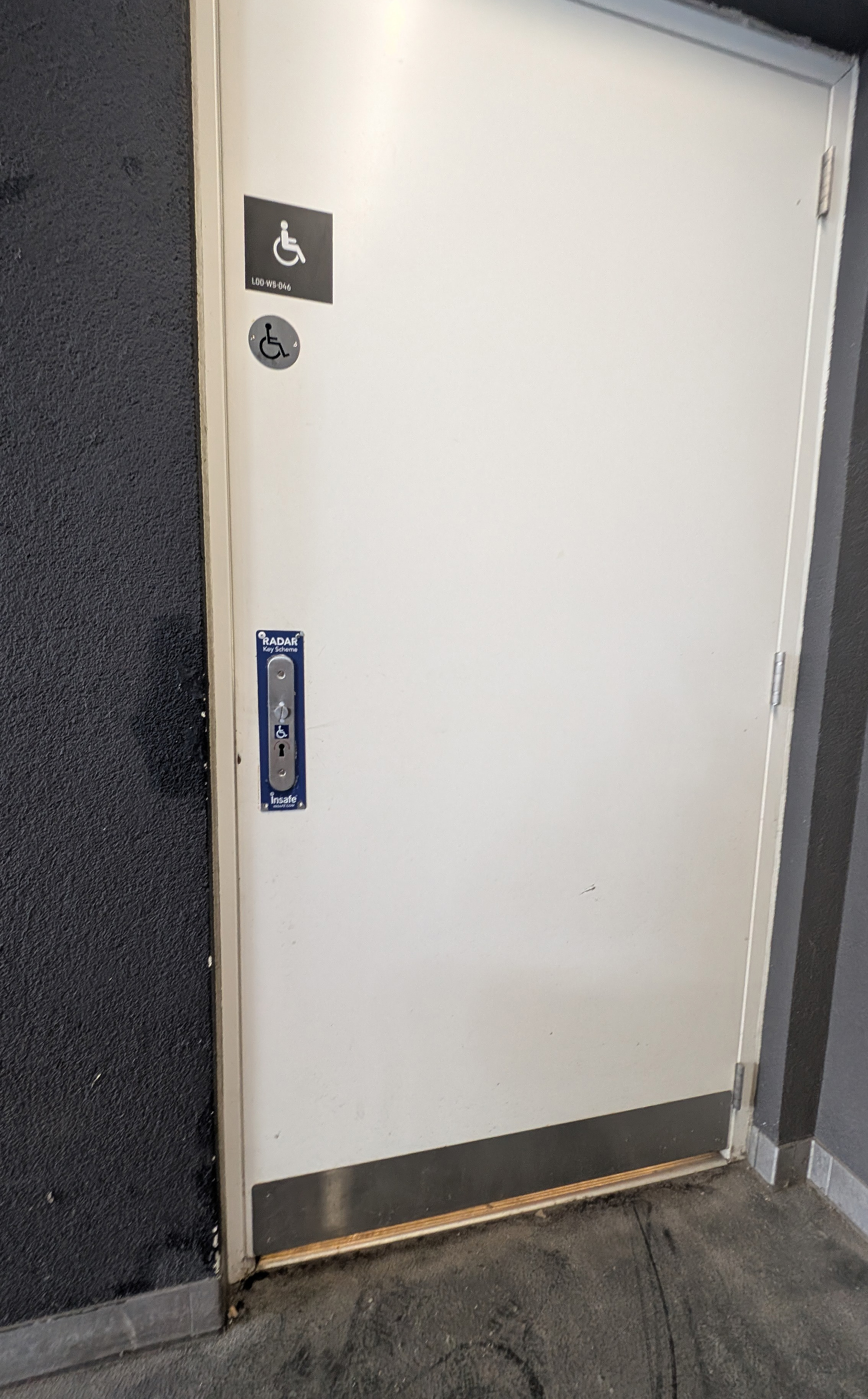
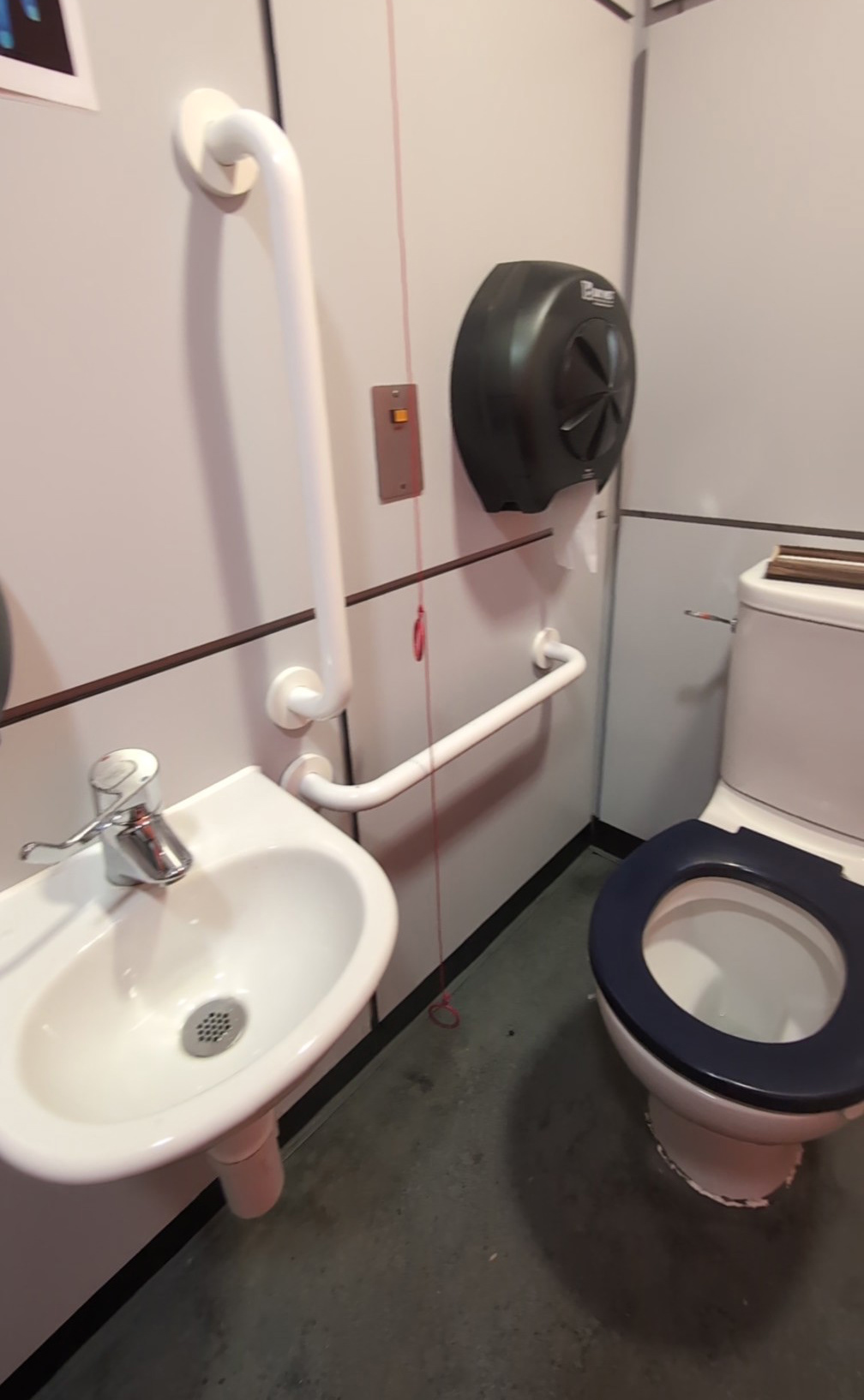
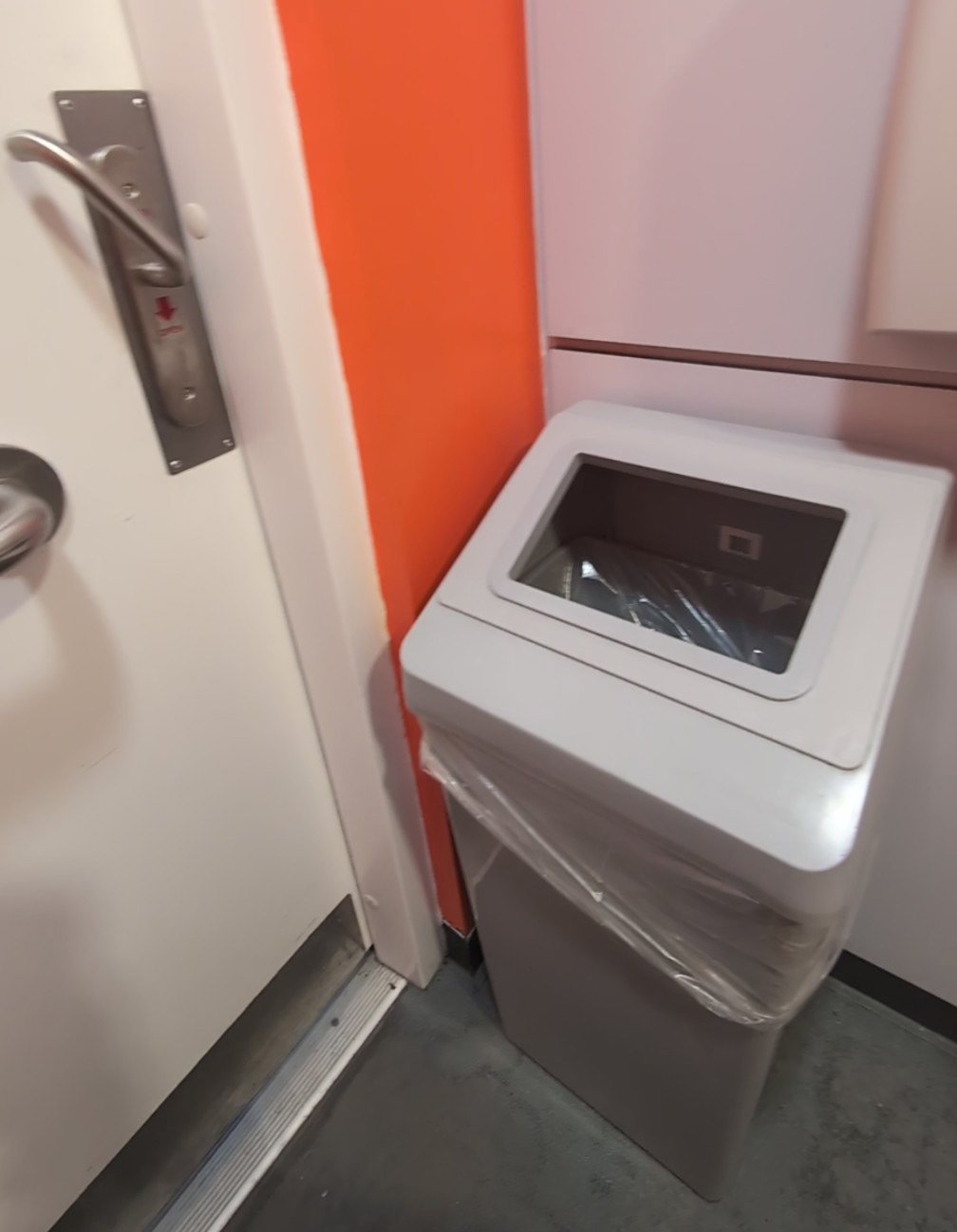
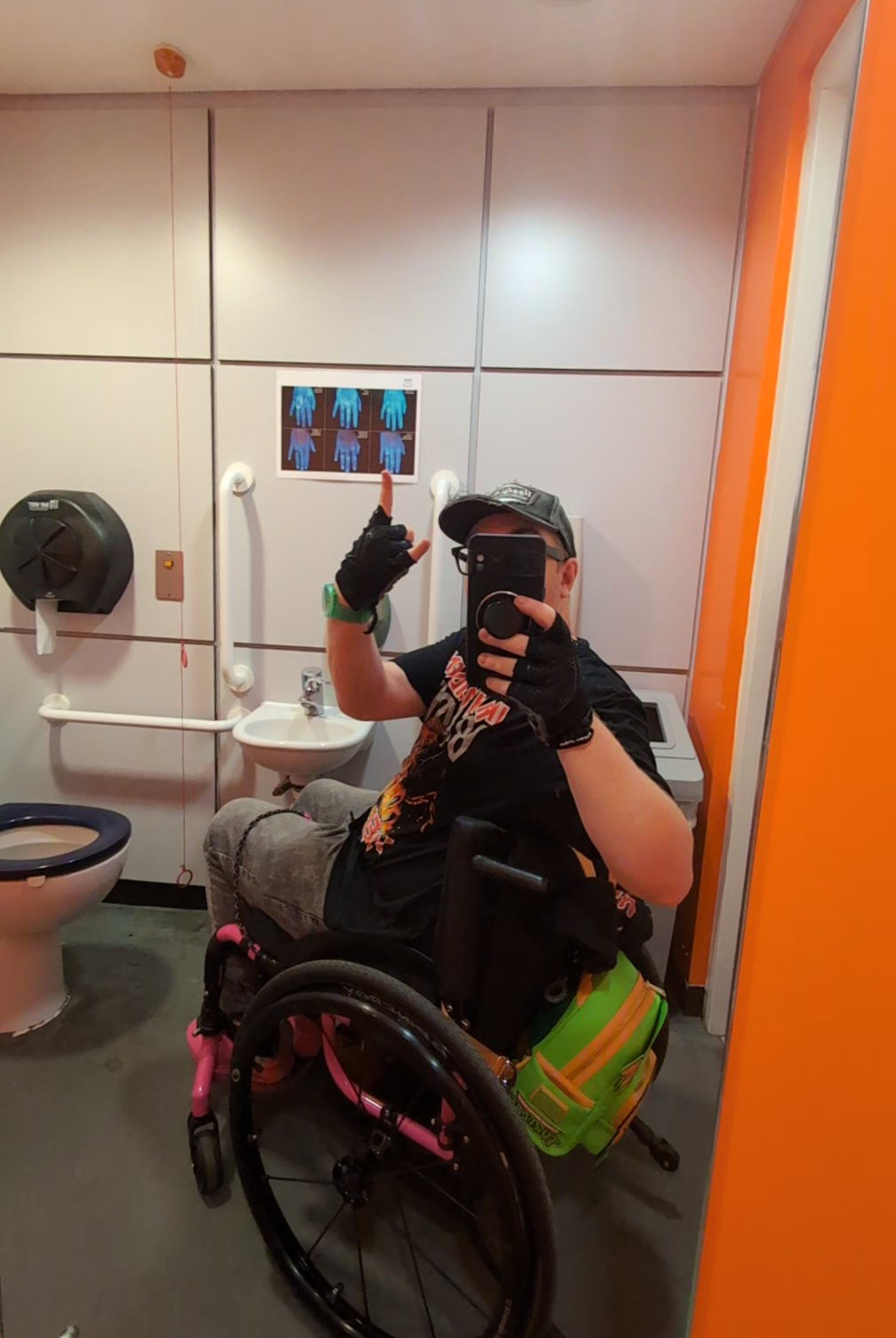
SEATING
Our seats were located in Block 108, behind the matchday dugouts, on the western side of the stadium. We were seated behind Row 27 of the fixed stadium seating, which was raised three shallow steps above. The platforms for each block were separated by stairs leading down to the rows of seating, and the block numbers were clearly displayed on the staircases.
The platform area was very wide, featuring fixed, fold-up stadium seating for companions in pairs, with ample space for wheelchairs in between. The seating numbers were clearly displayed.
The London Stadium website states: “When booking a wheelchair and companion space, please ensure you bring your wheelchair or mobility scooter with you as there will not be a seat available for transfer in these areas.” This is beneficial as it ensures the spaces are reserved for those who need them and are unable to use other areas of the stadium. There are several options for step-free, aisle and ambulant seating throughout the stadium, so all needs can be accommodated.
A fabric pull-out barrier was positioned a distance from the seats to keep the area clear of people who didn’t need to be there.
At all times, each platform had at least one member of the security staff present, and several members of the access team were also in the area throughout the evening. The staff ensured that no one was in the platform areas who shouldn’t be, guiding people to their seats and stopping others from standing around in the area behind us. They allowed you time to take some selfies or pictures of the stadium and stage, but then you were moved on. This meant there was no crowding and no issues getting out to the concourse when needed.
We had no one sitting directly behind us. Above the wall behind us, raised up, was the seating for some of the hospitality suites.
The stadium bowl itself is very wide, so the platforms are very open and airy, and you don’t feel crowded. The stadium roof also extends a long way over, providing some protection from any wet weather.
There are additional wheelchair spaces and companion seats in a similar position to those we occupied, located around the stadium. Where there are no hospitality suites, seating is located at the back of the tiered seating area, under the balcony above, with more direct access to the concourse. I’m guessing the view will be pretty much the same wherever you are seated on this level in the stadium. Obviously, your angle to the stage will vary.
Being just those few small steps above the seating in front, we were high enough above the back row to have an unobstructed view throughout the show, even with people standing up. We had a clear view of the stage and the video screens, so we were pleased with our seating option.


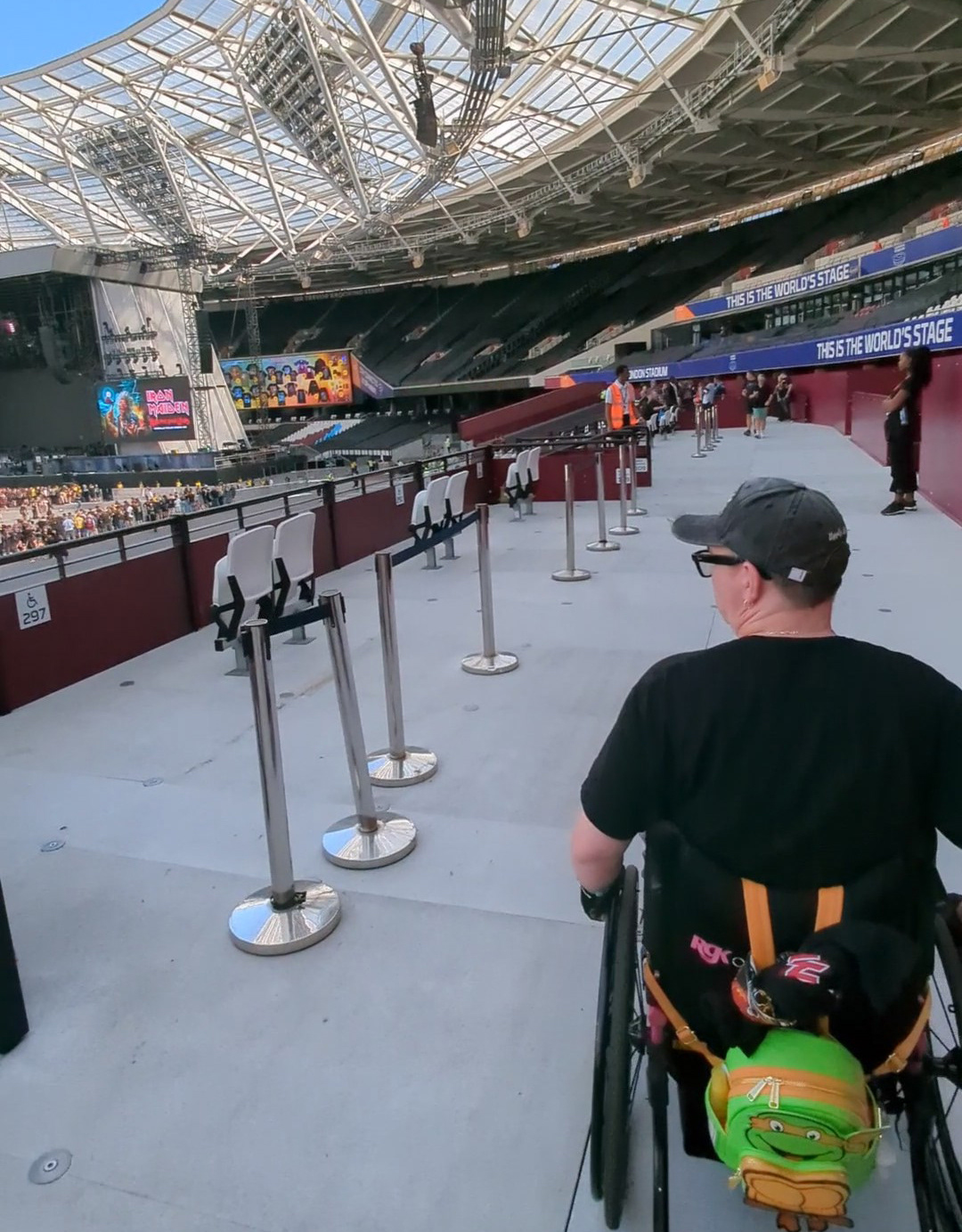
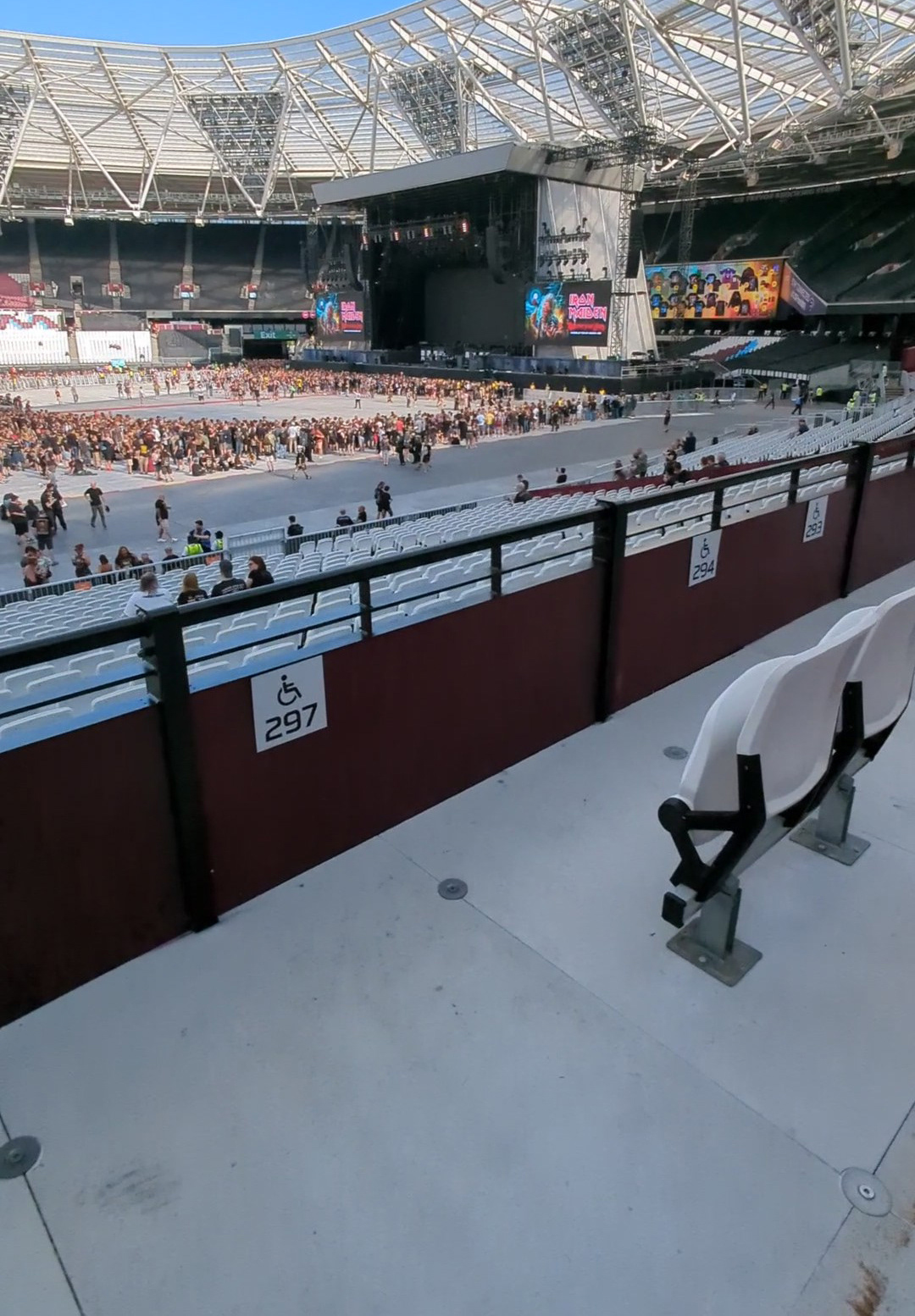
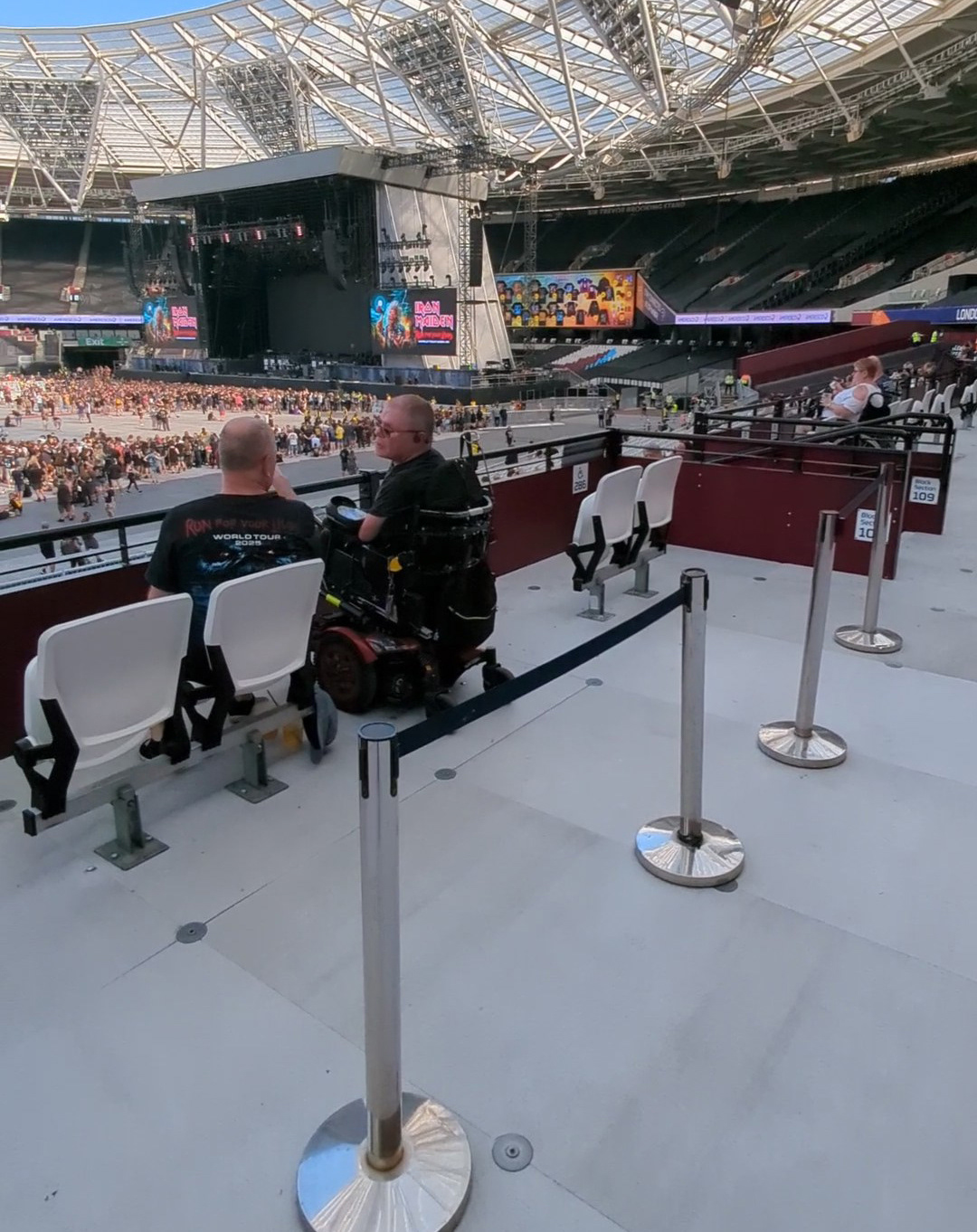
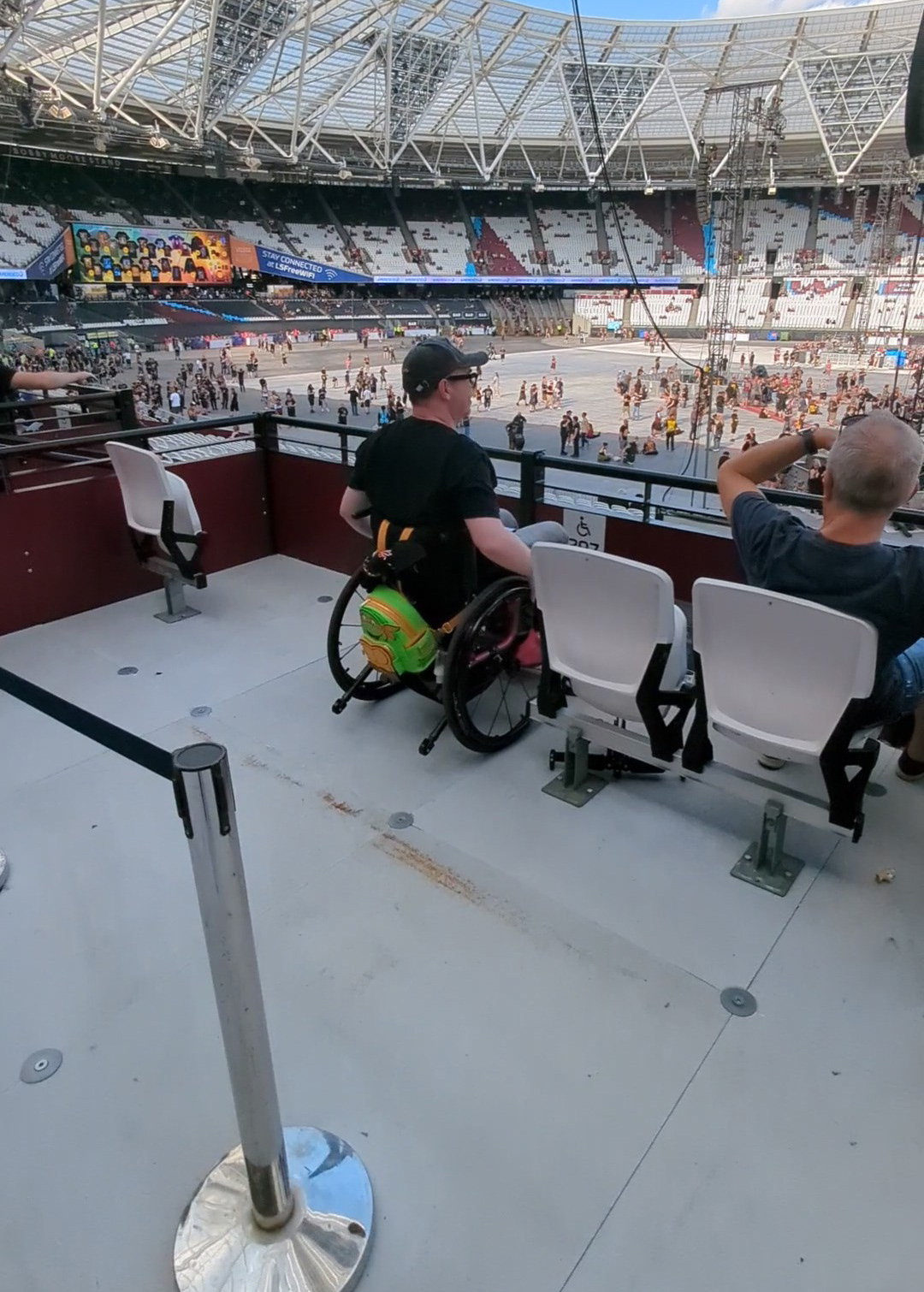
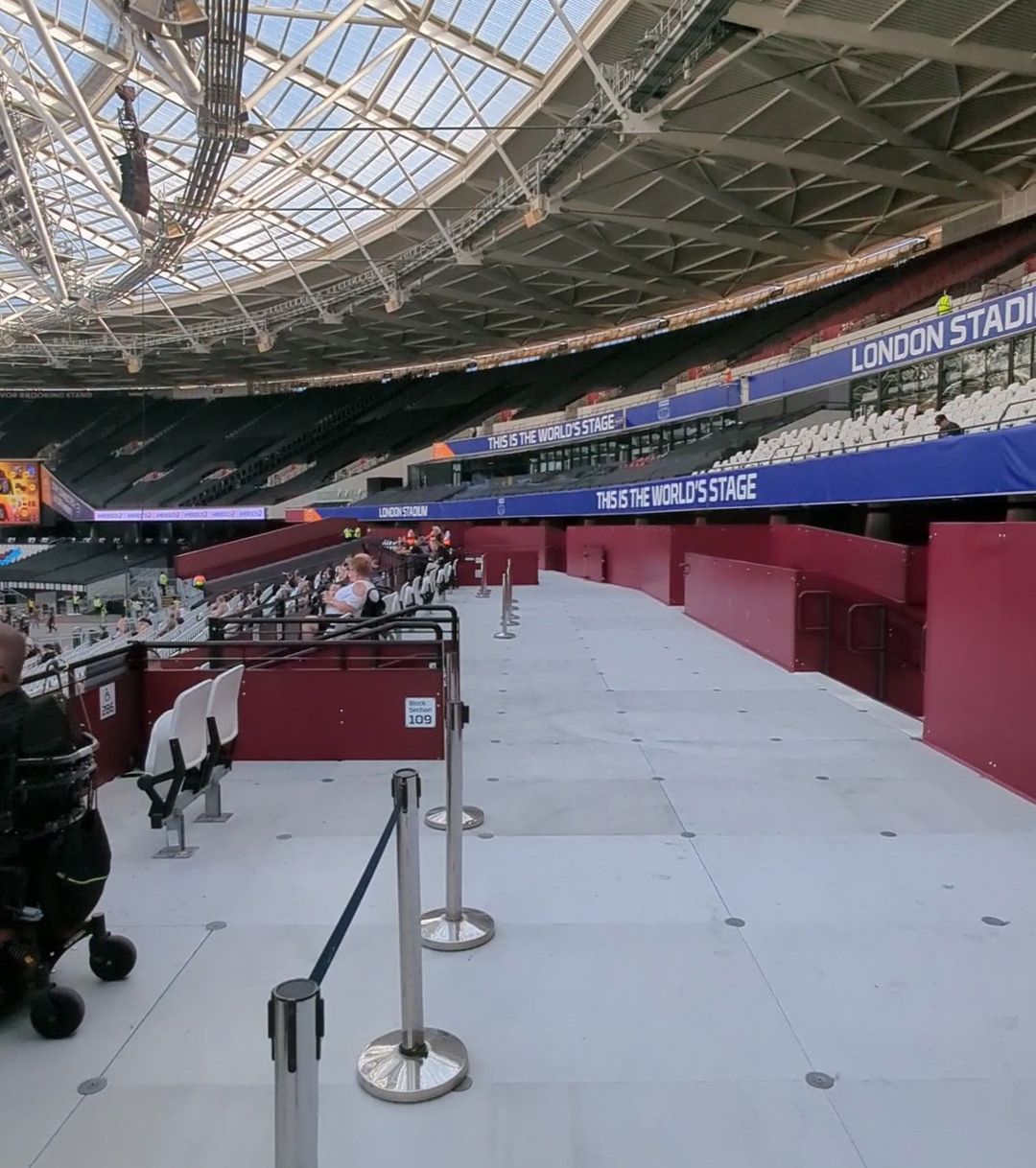

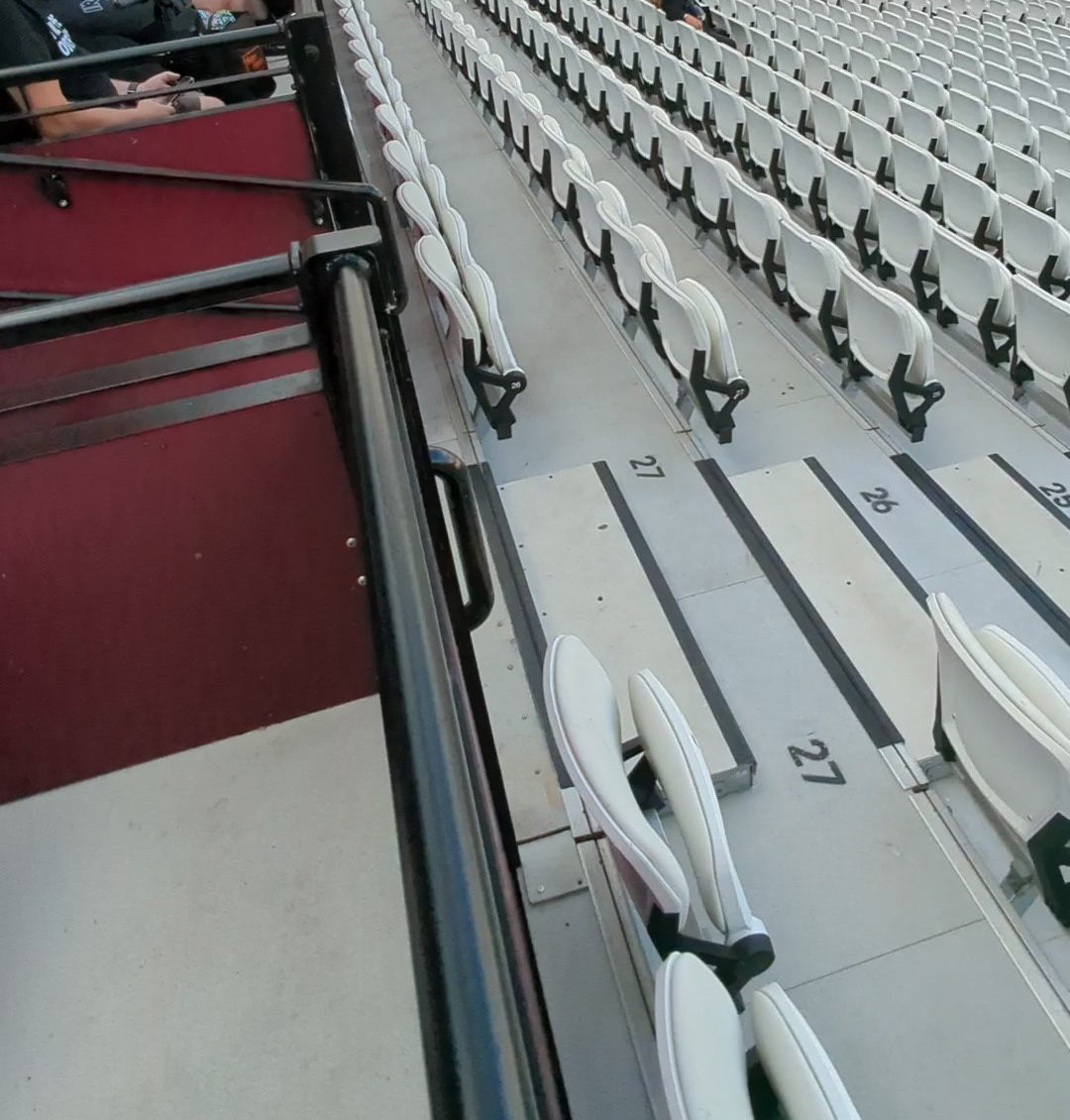
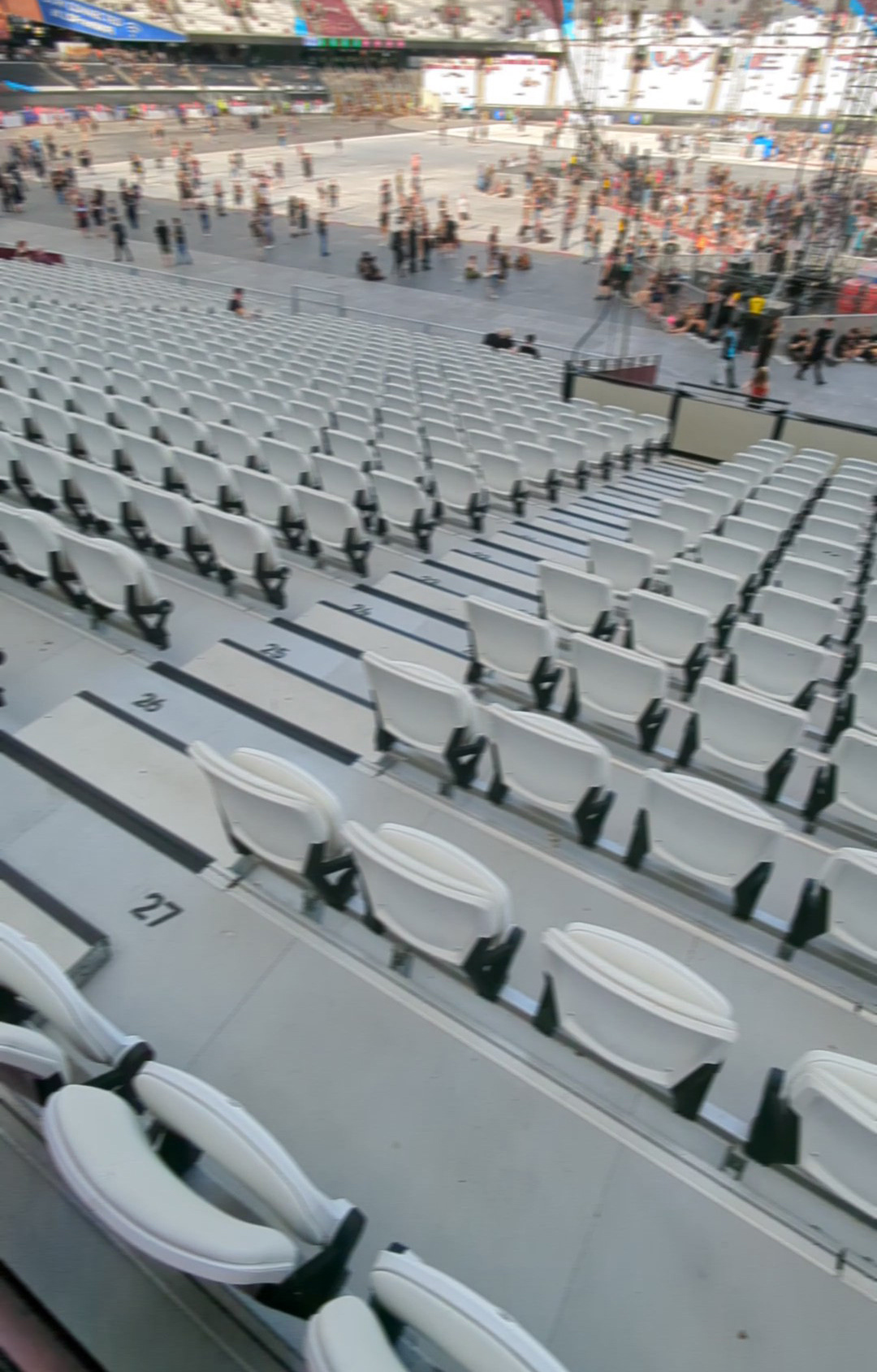

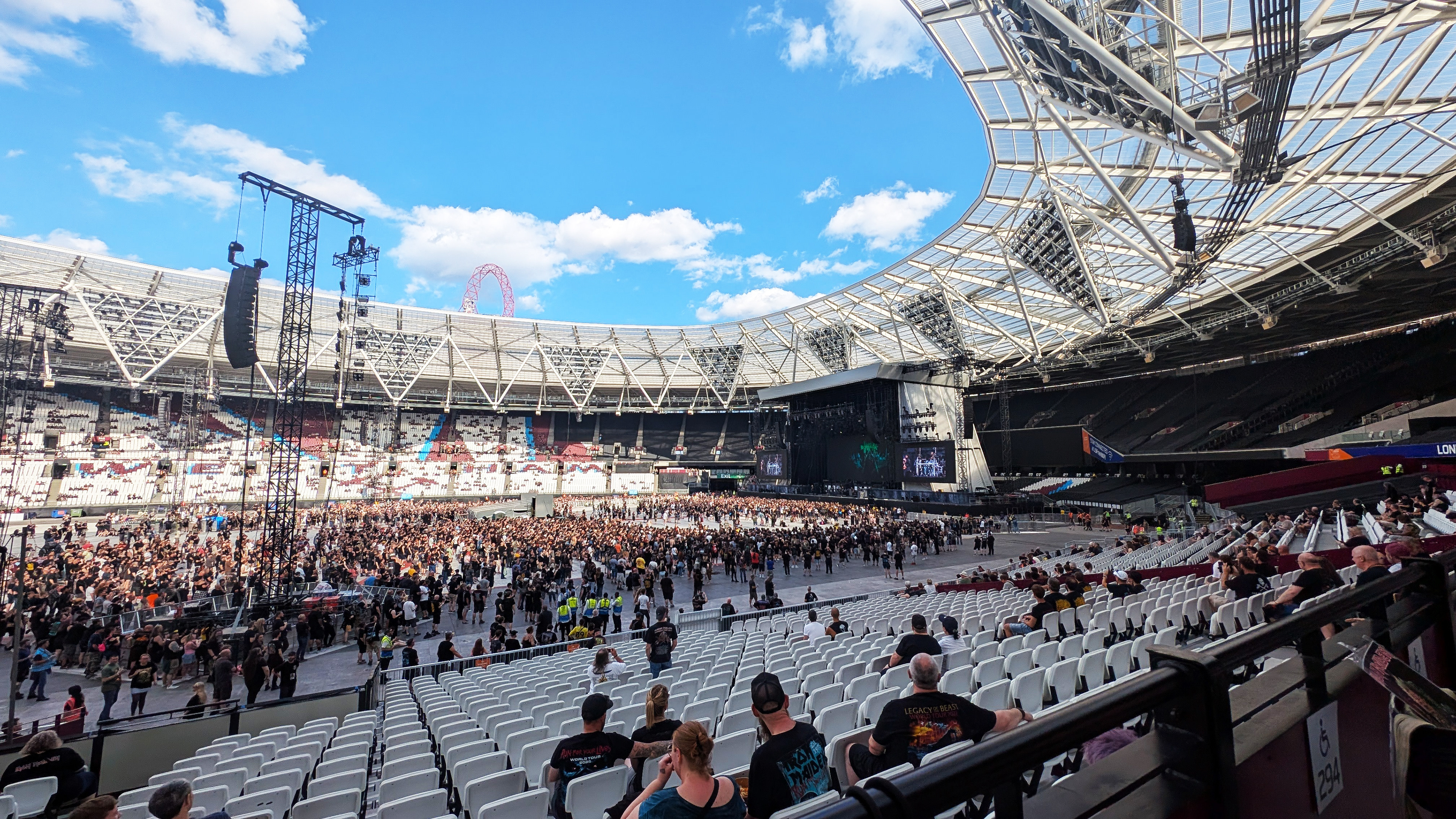
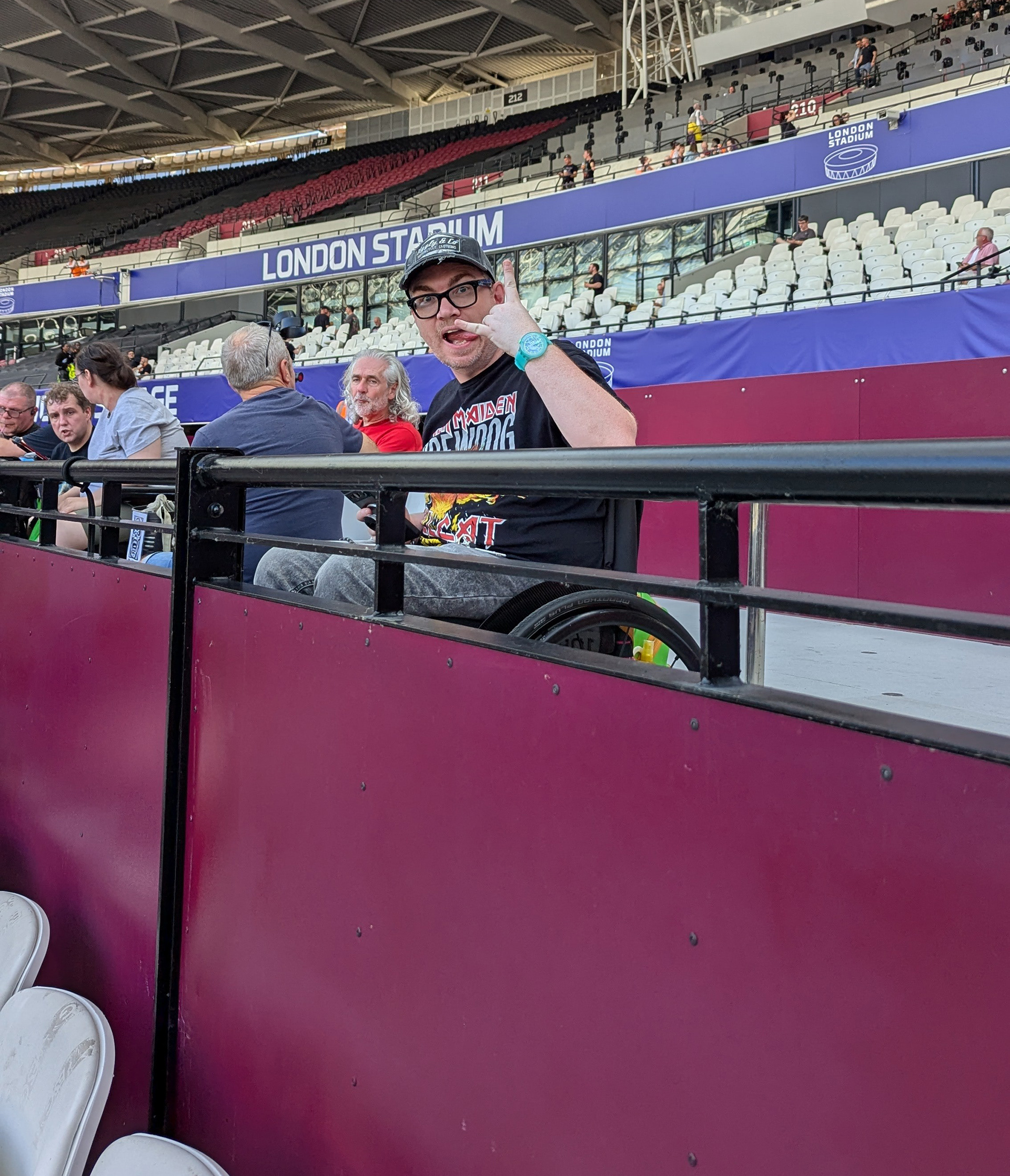



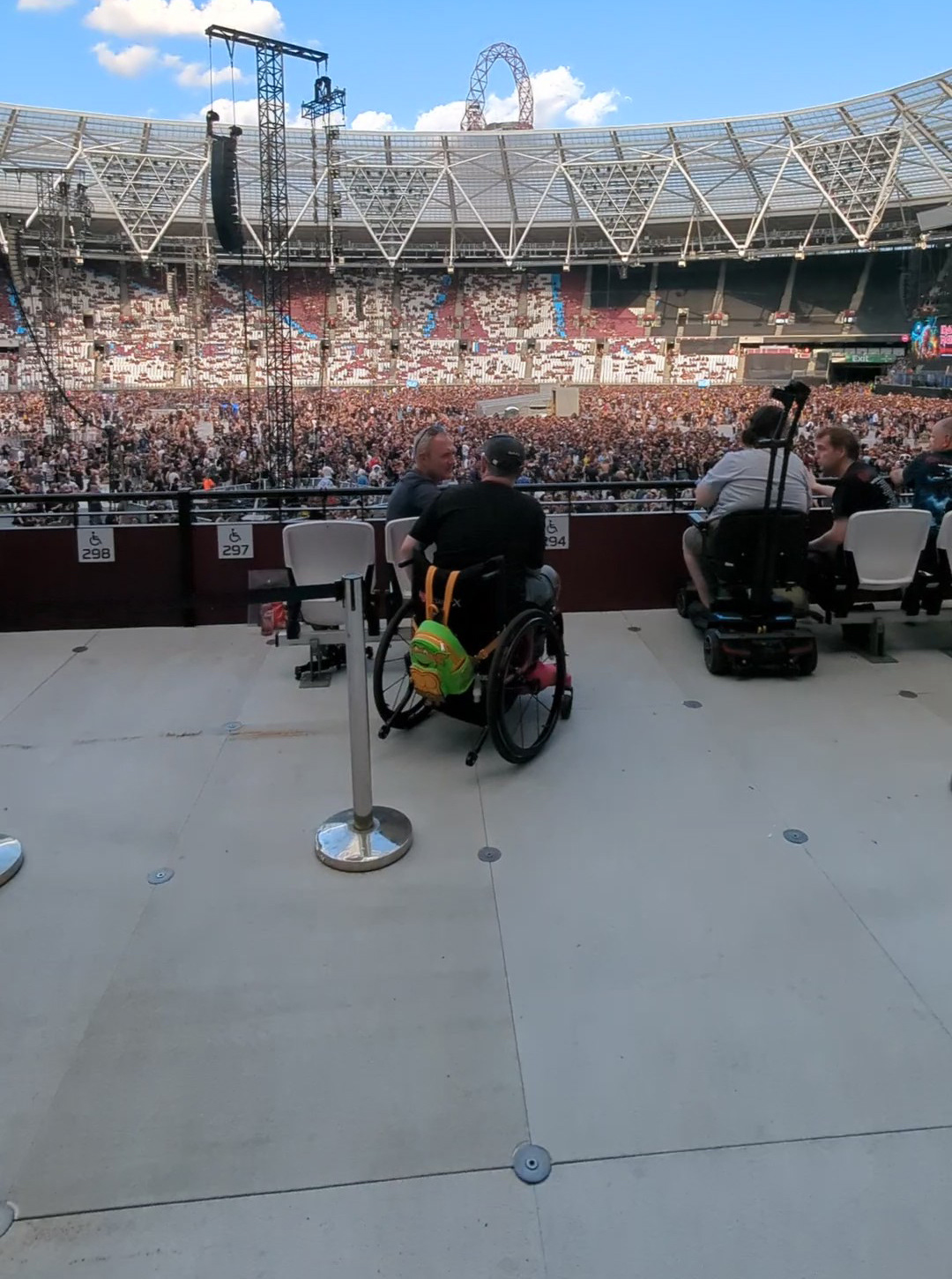
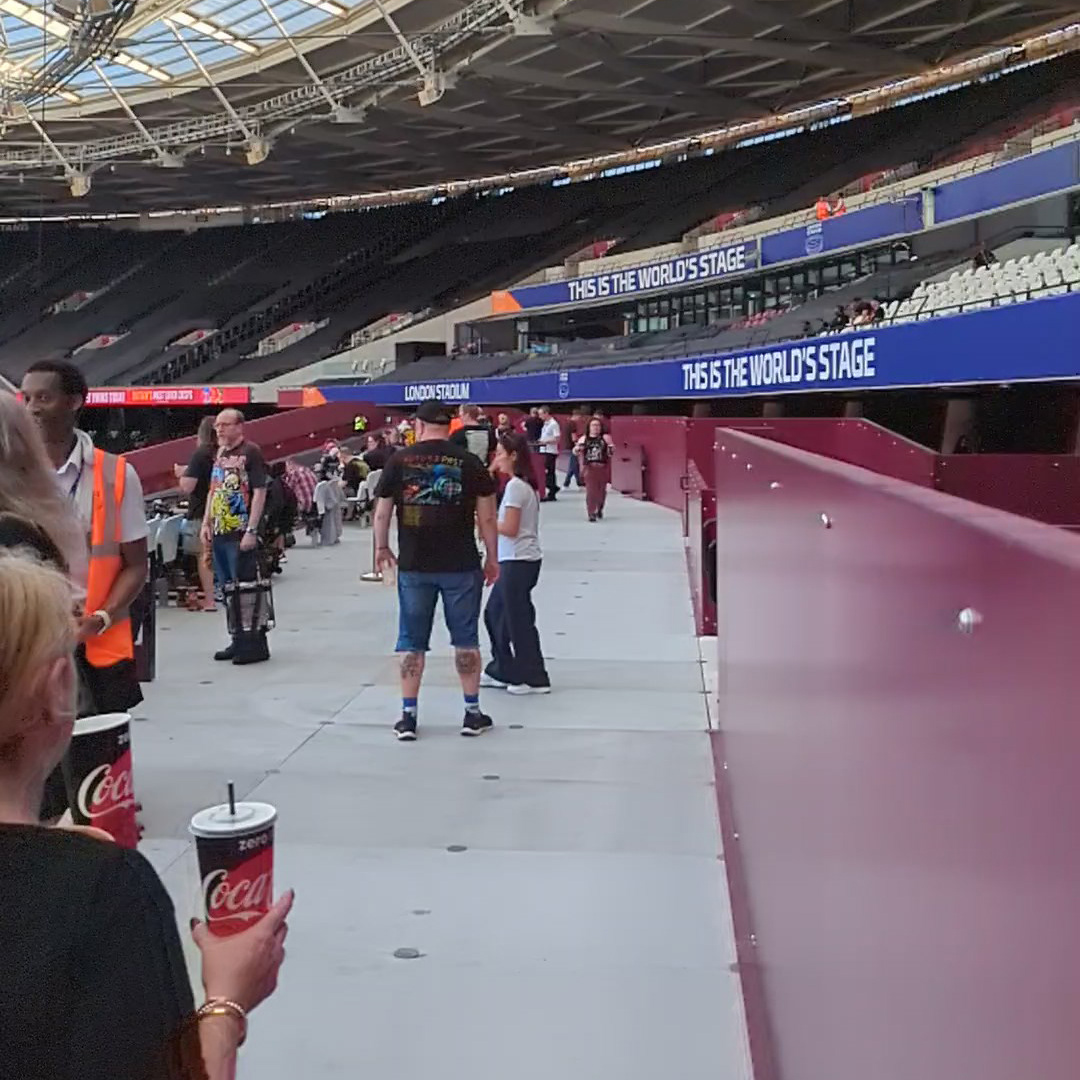
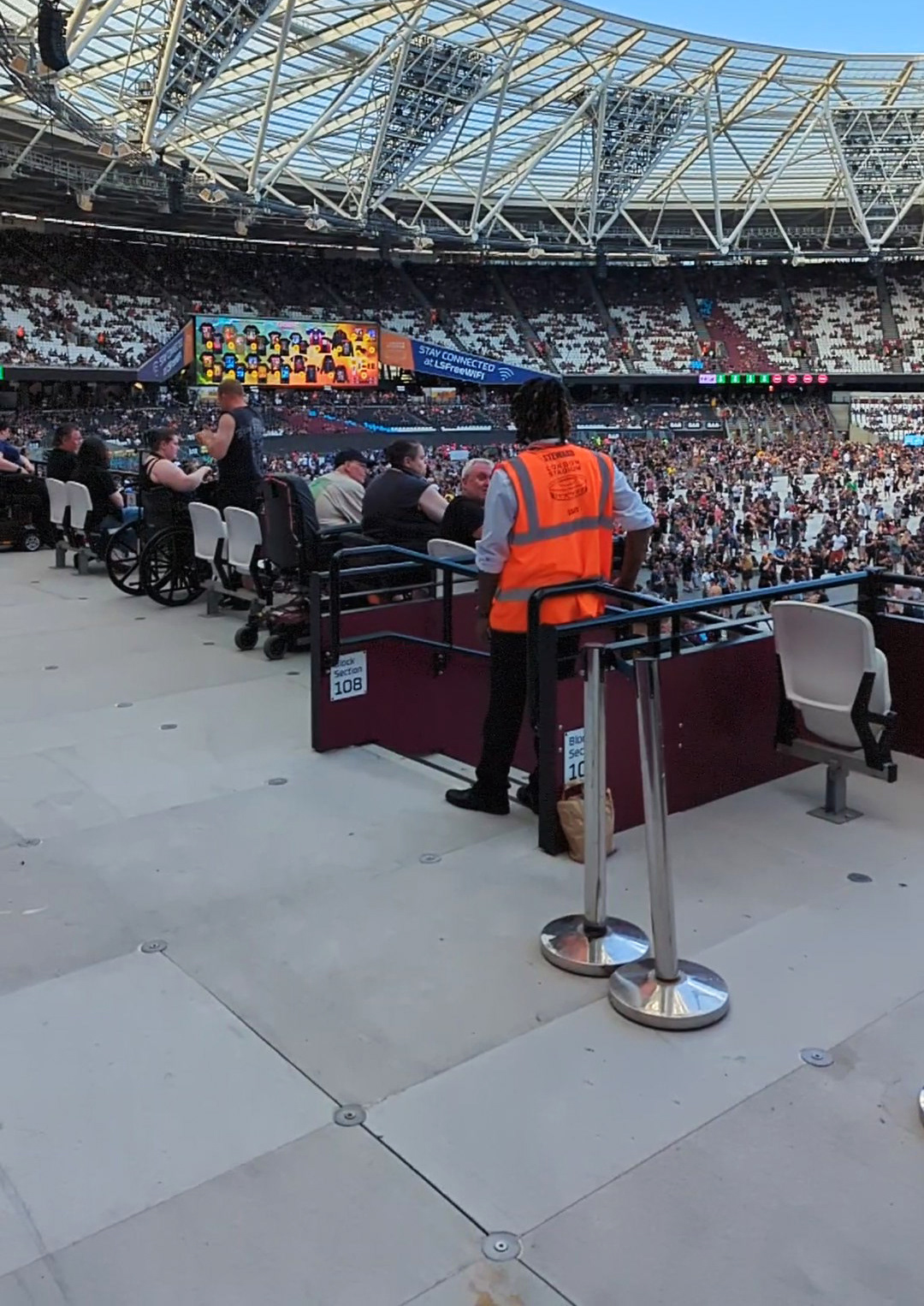
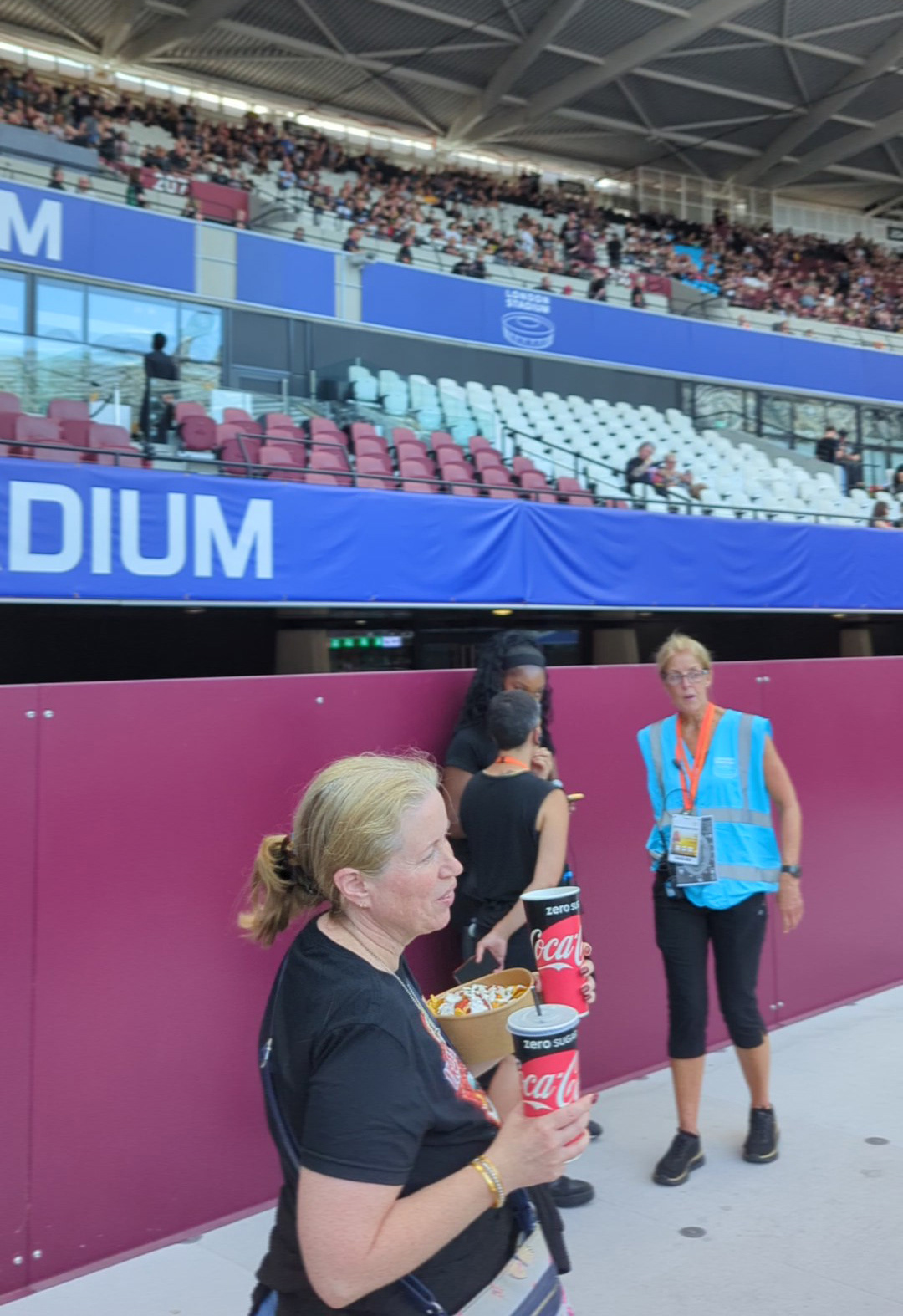
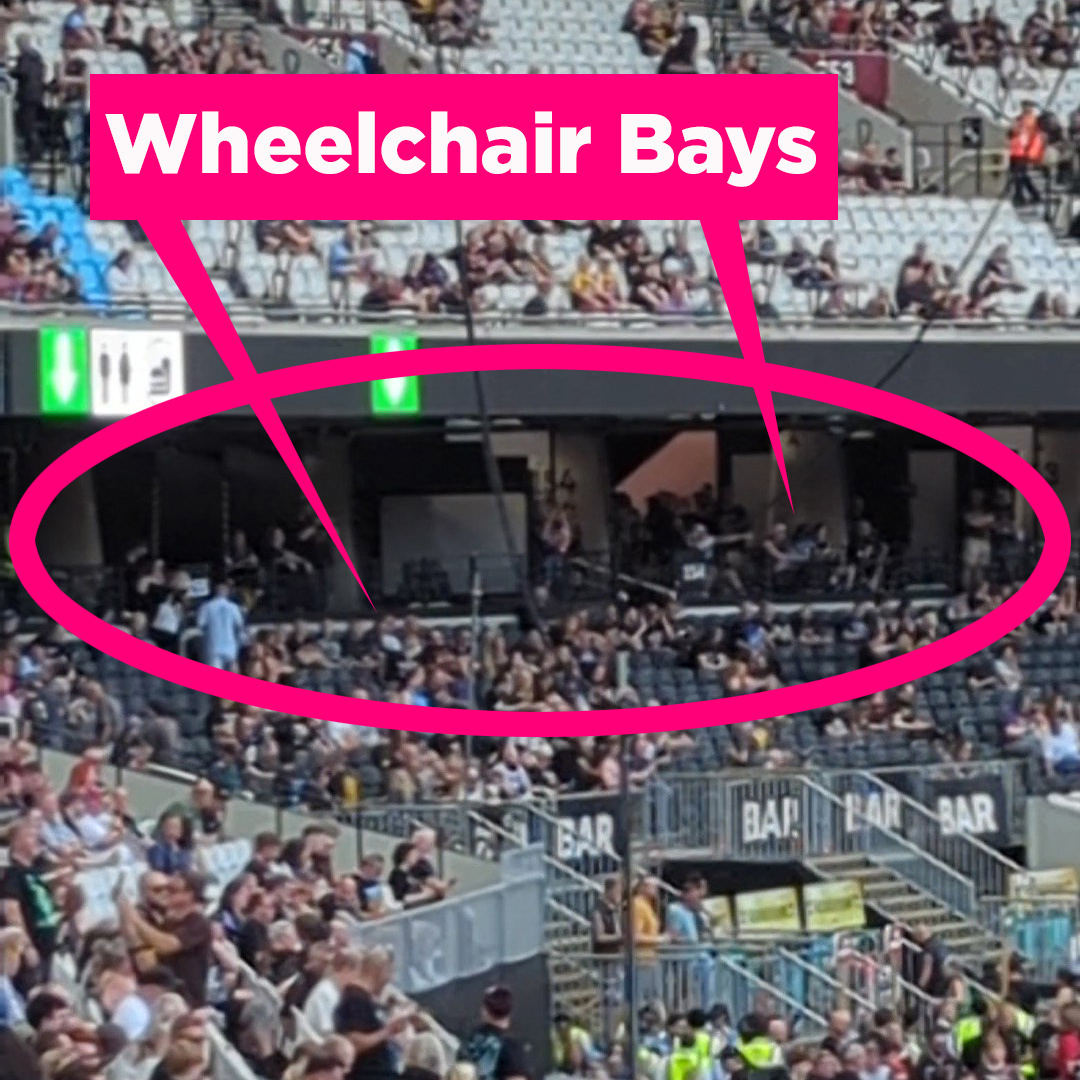
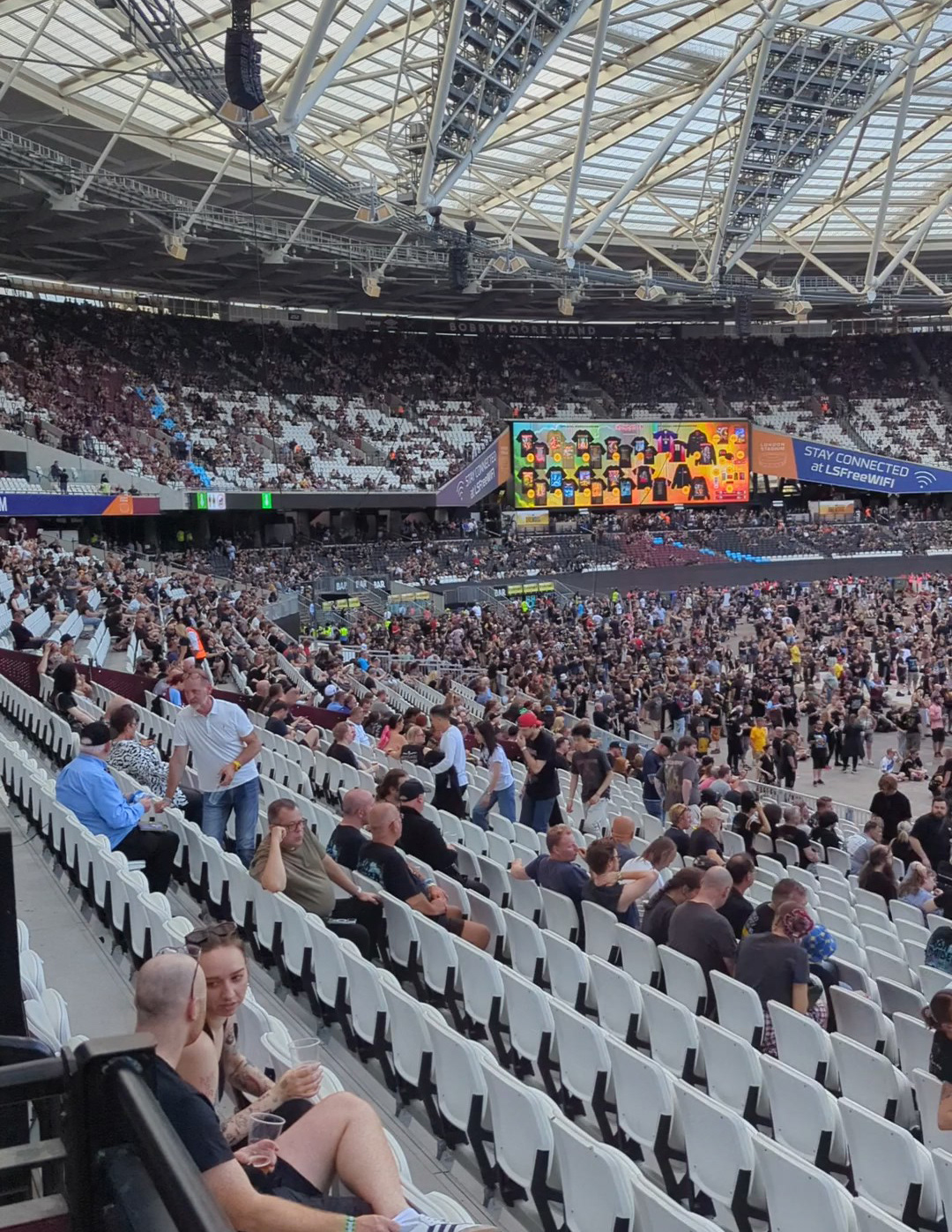
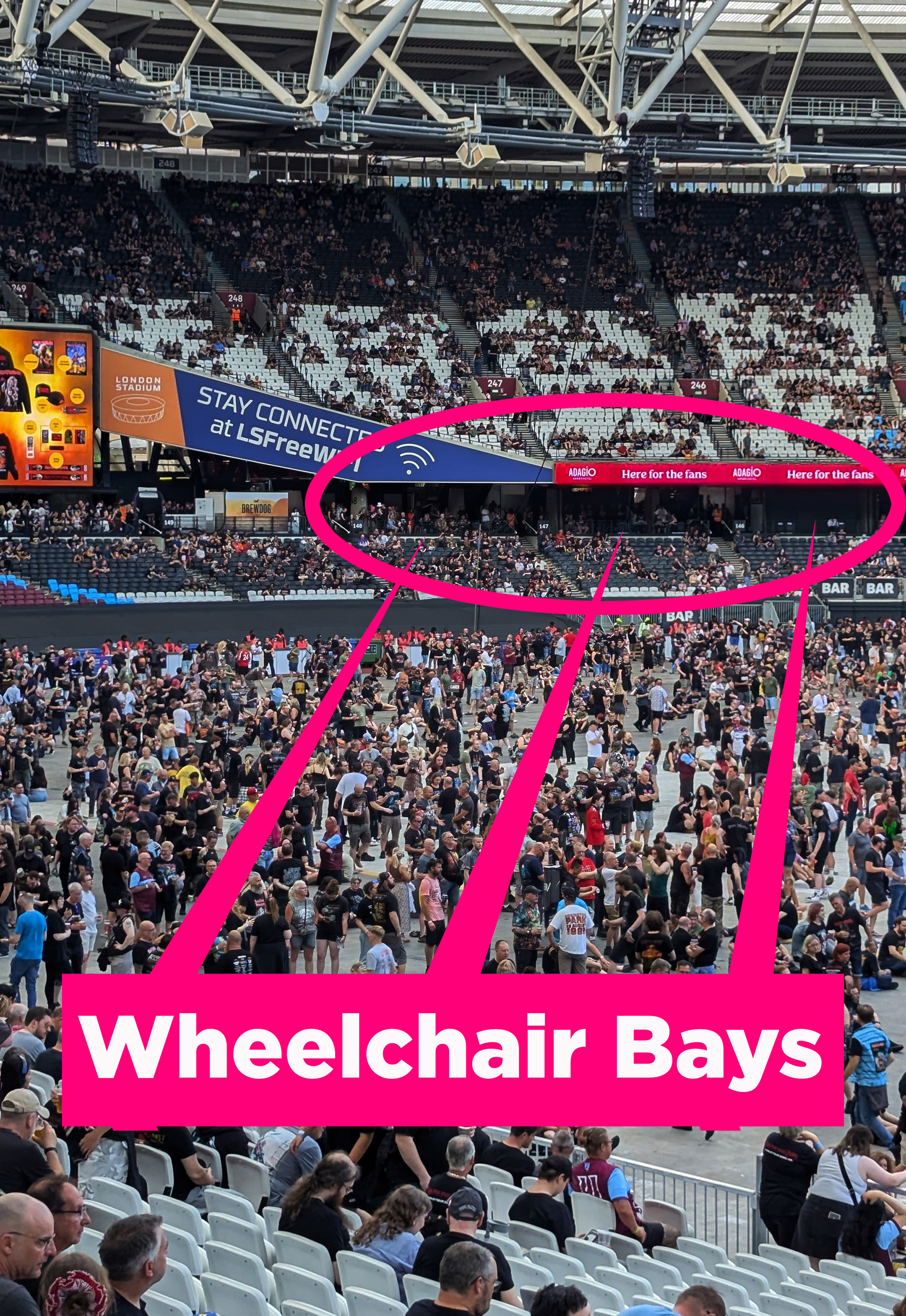

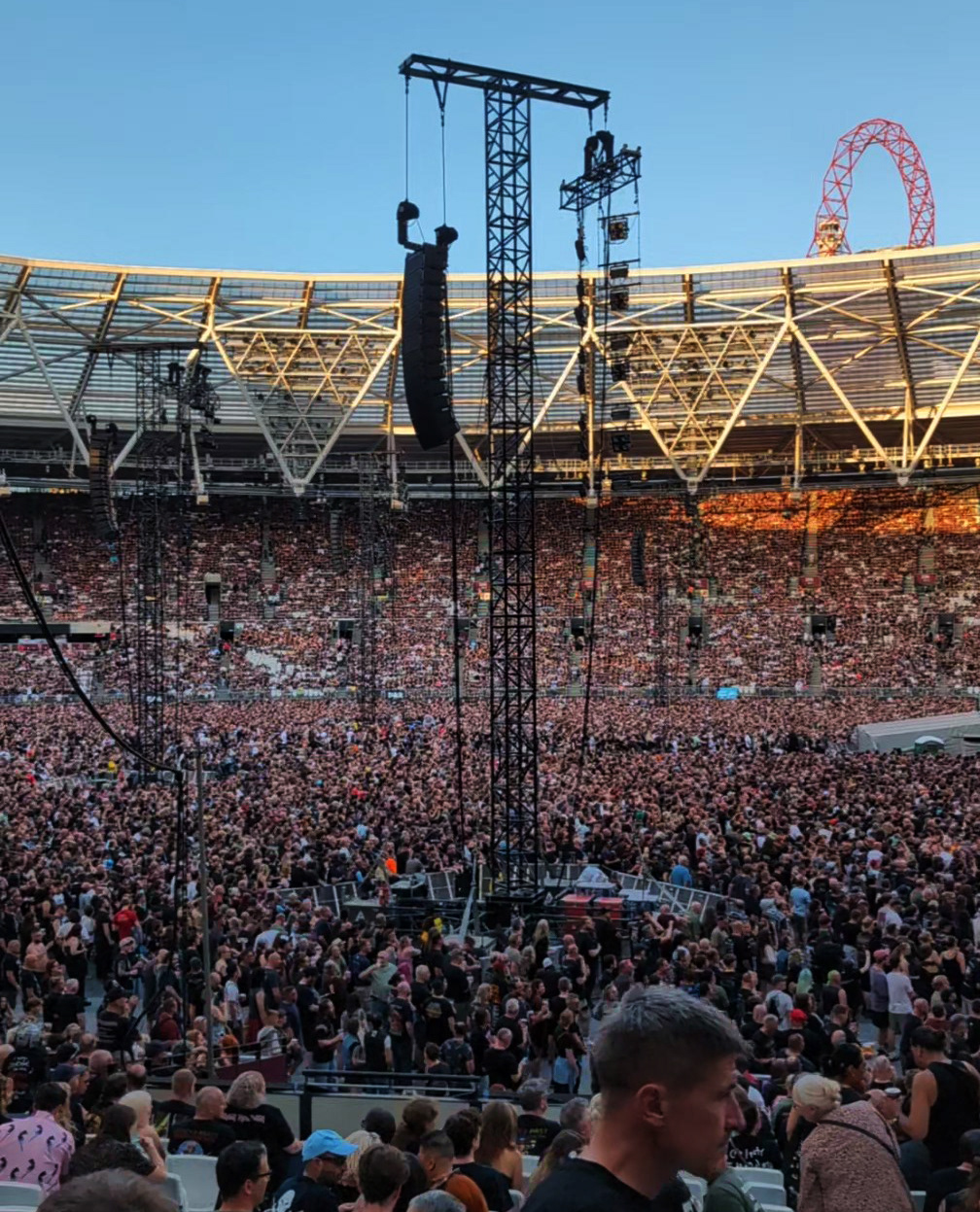
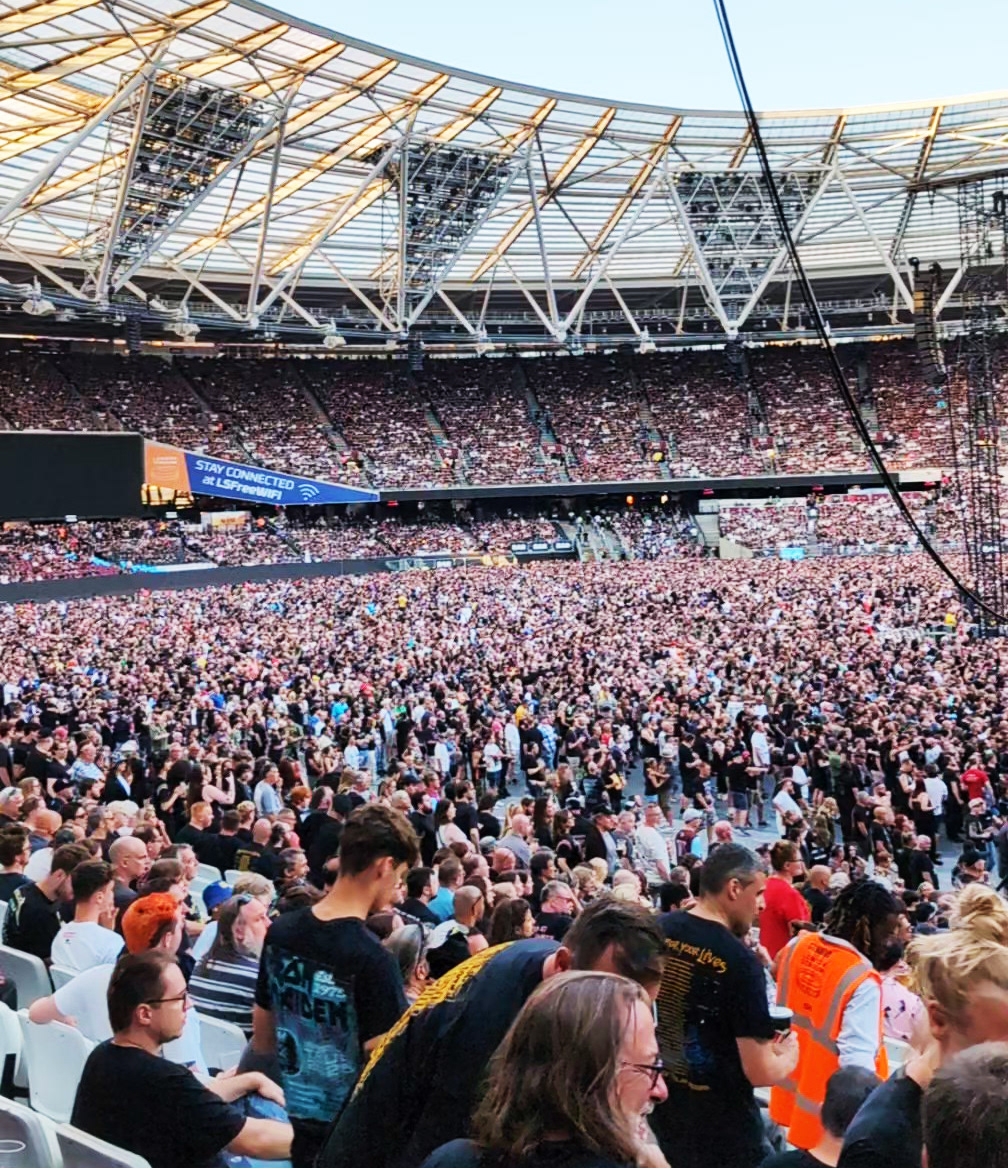
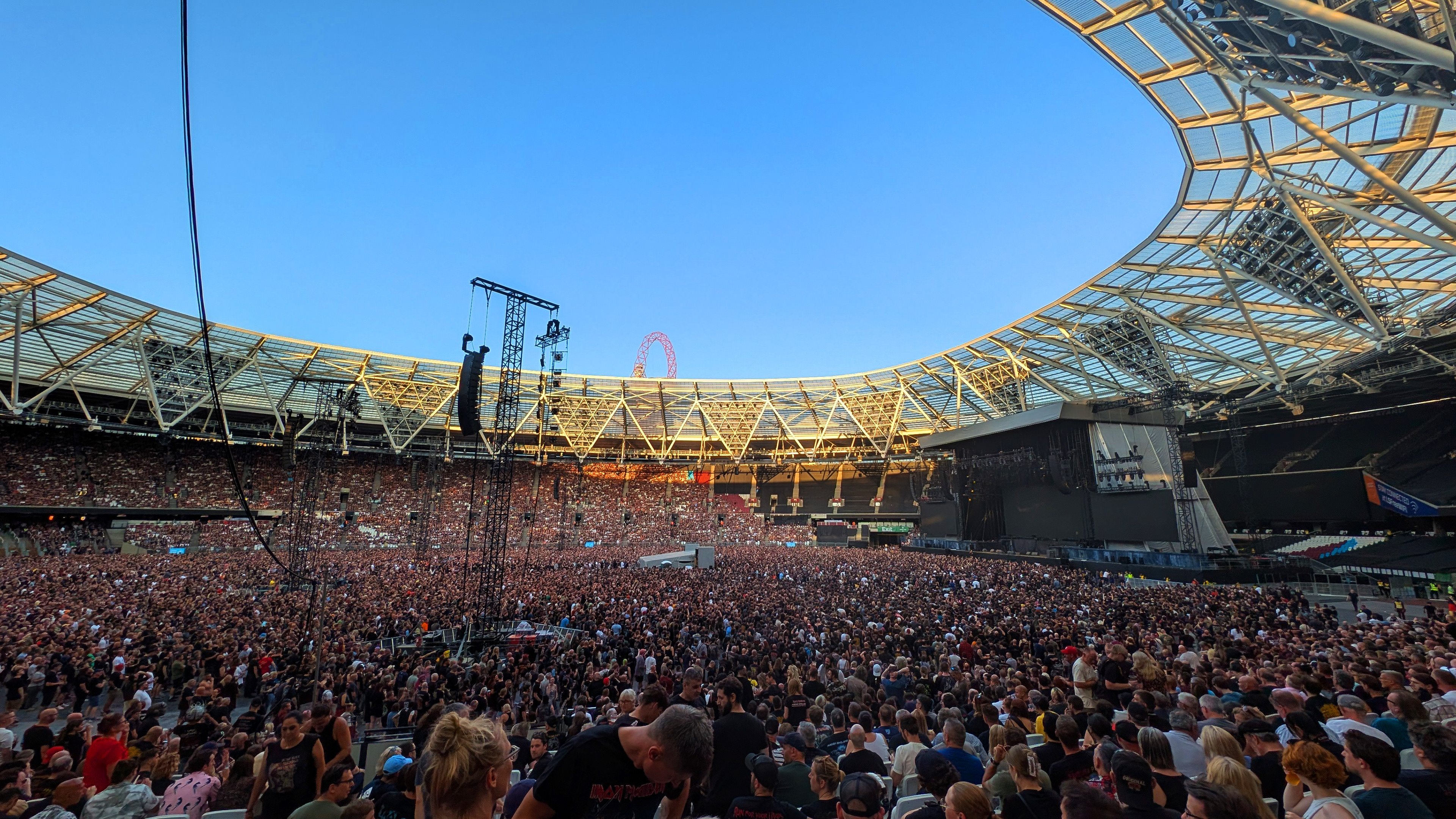
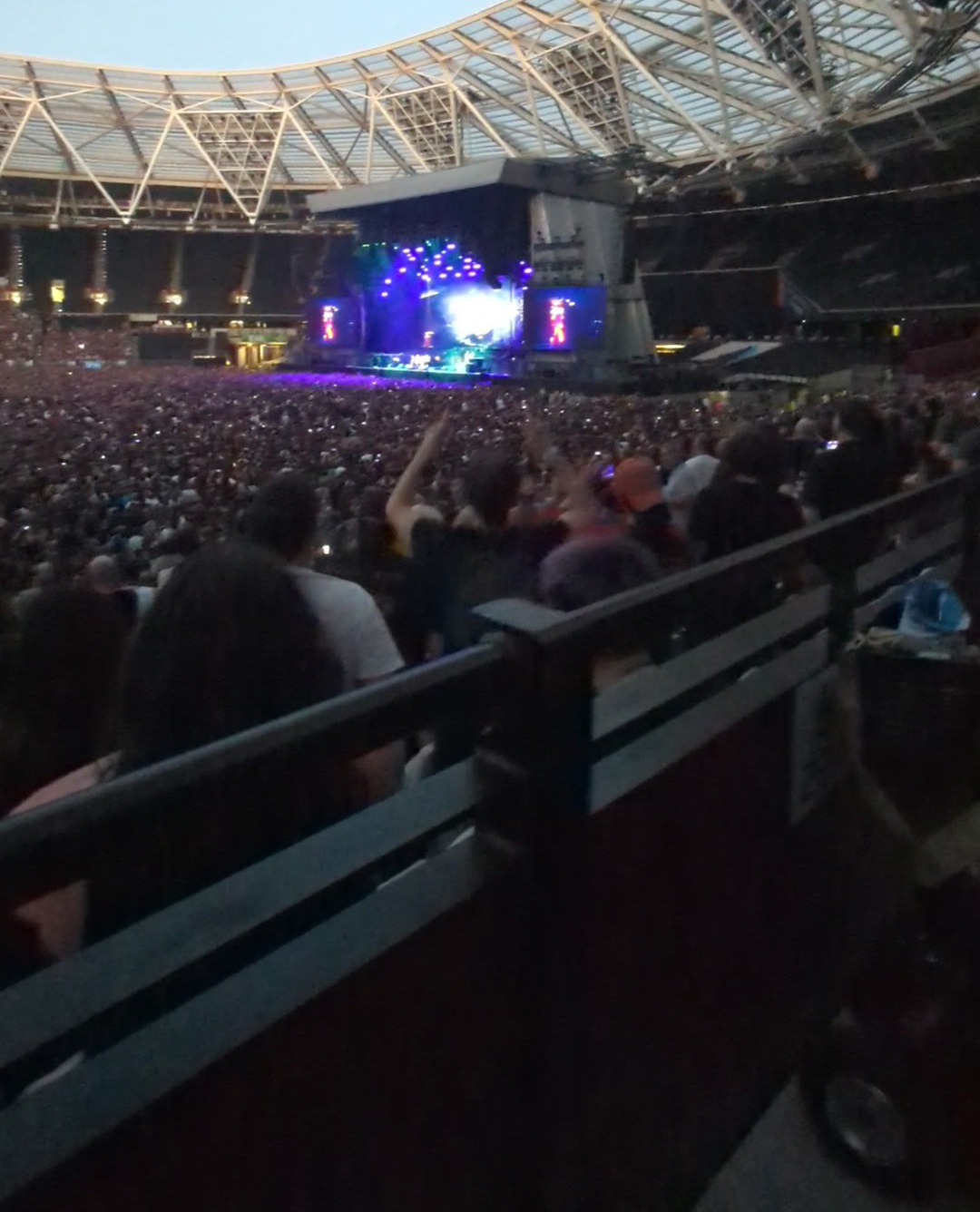
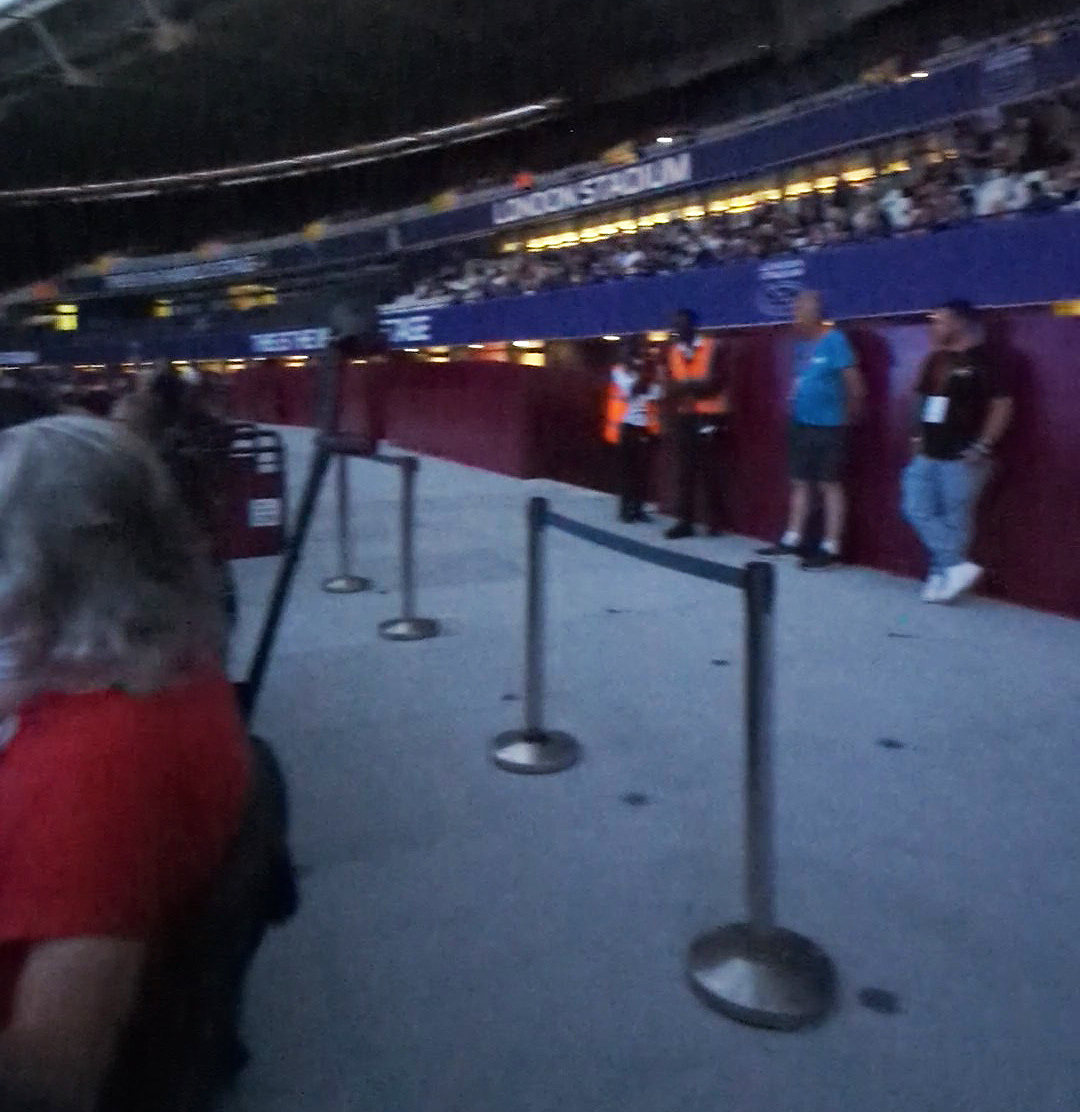

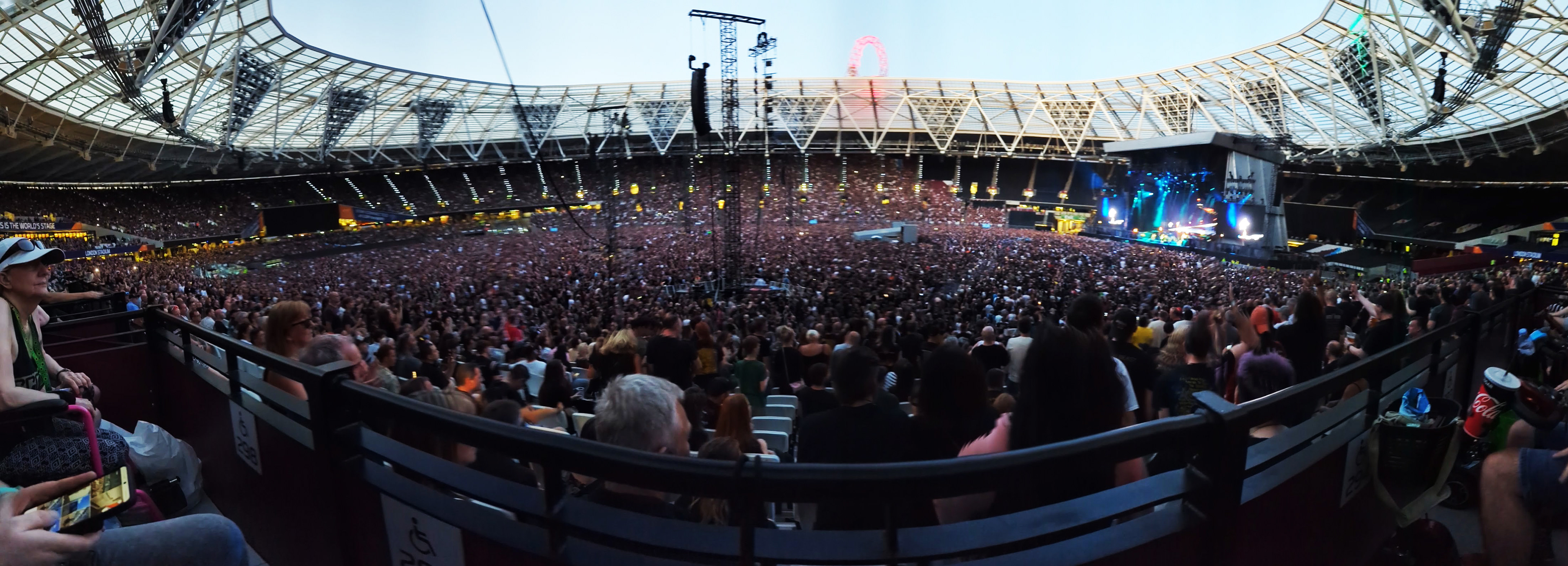


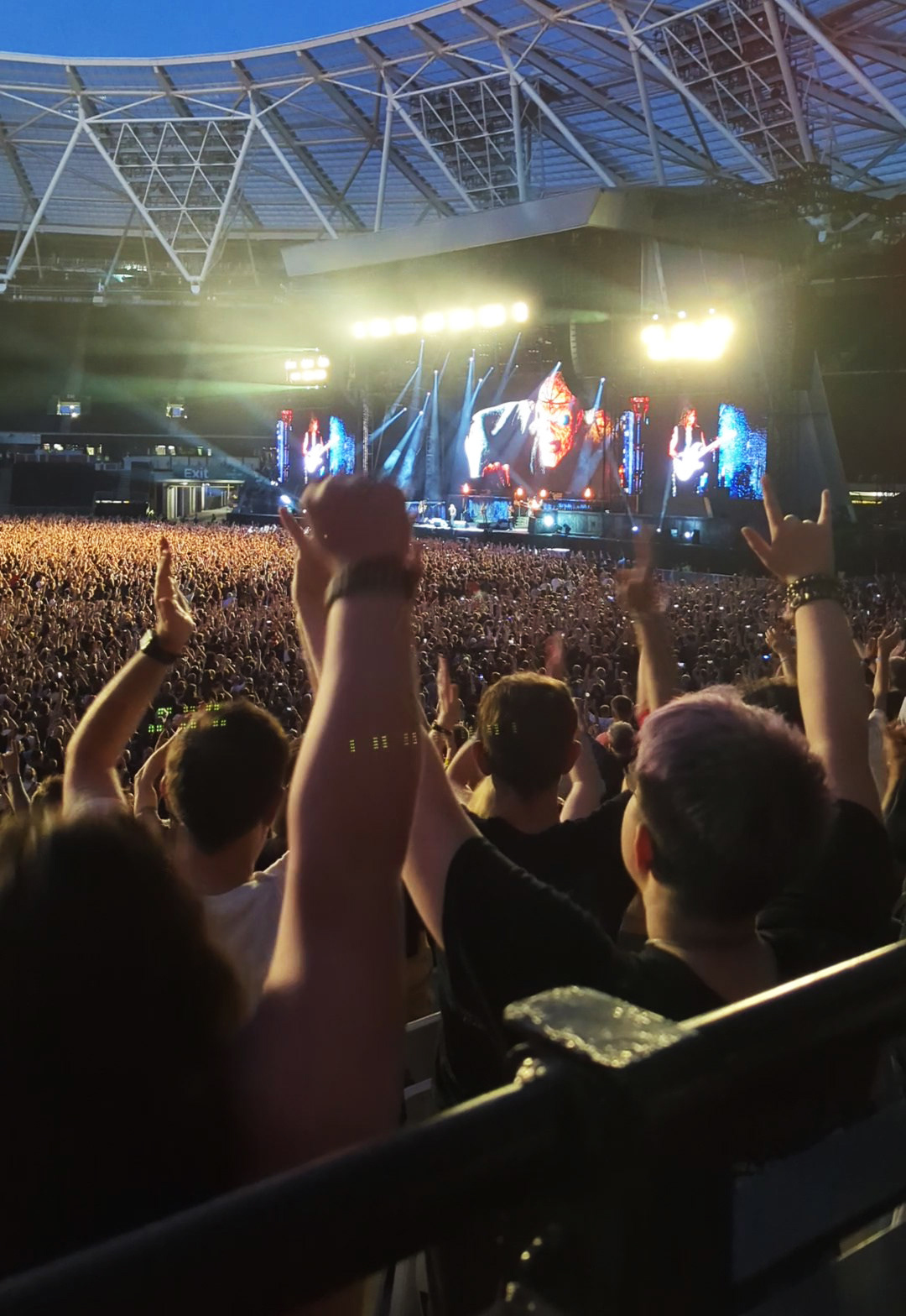
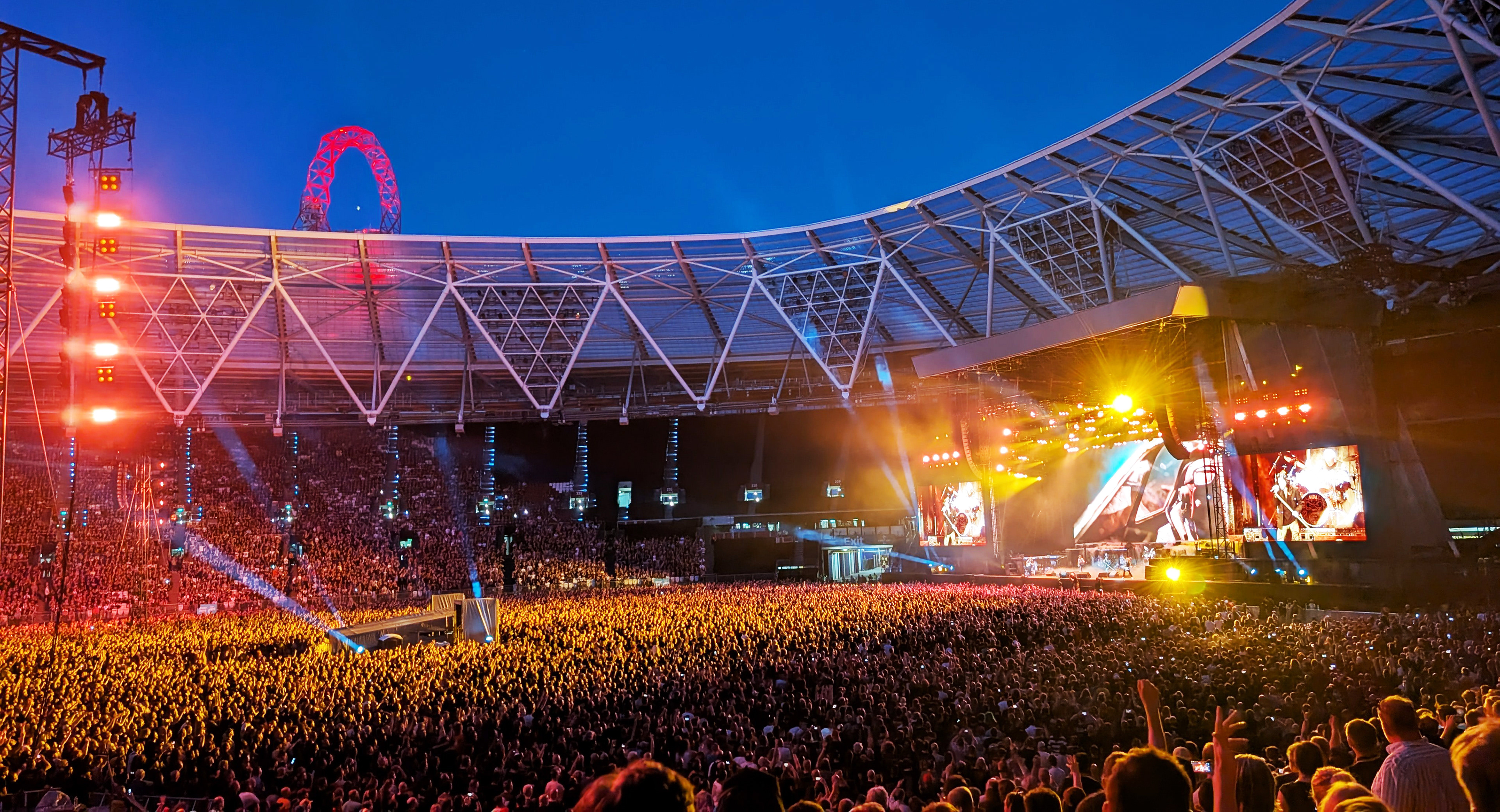
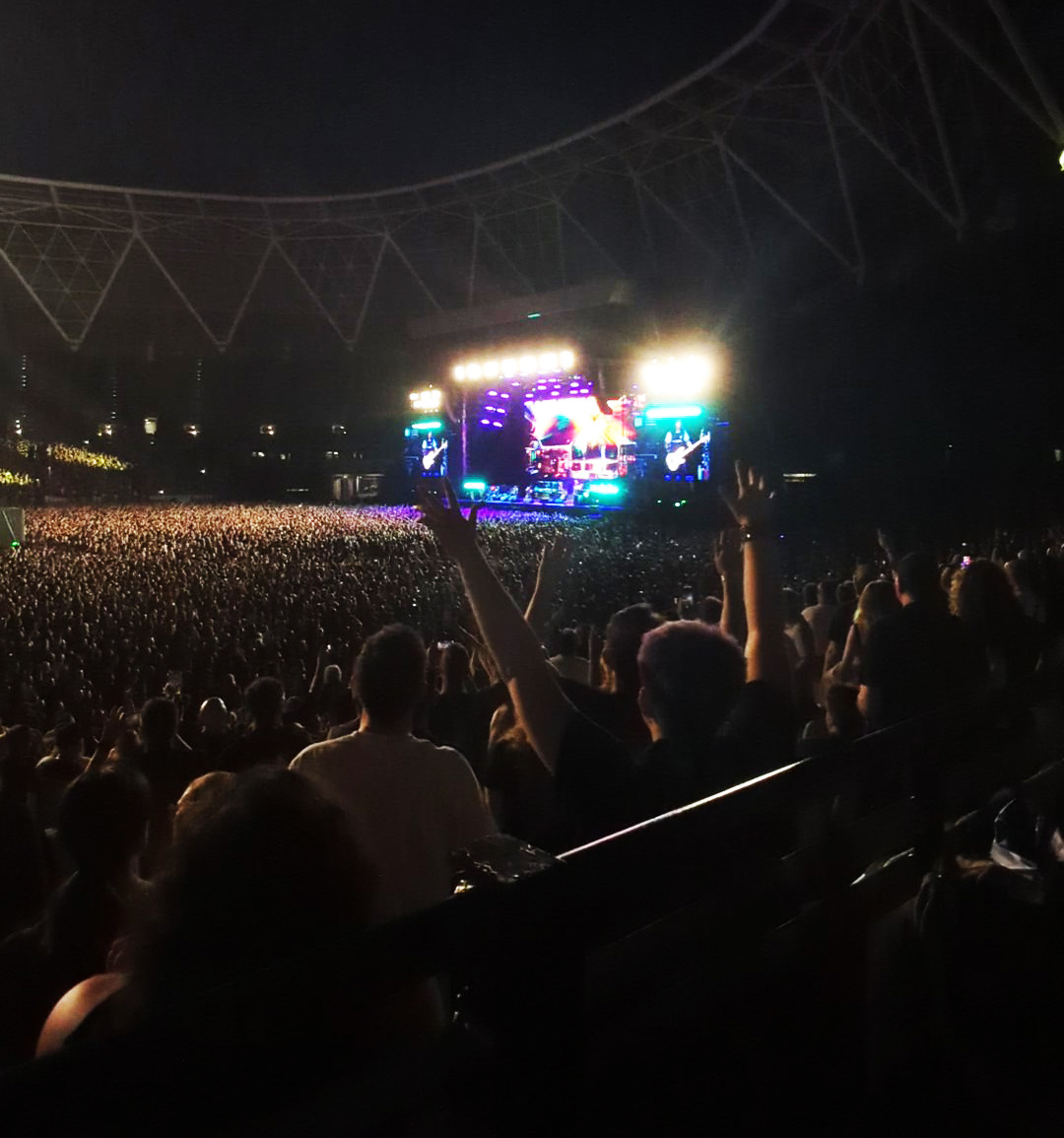
GETTING BACK OUT
Once the show finished, the stadium and concourse were well illuminated to help you find your way around easily.
With no one coming down from the seating behind us, we only had people from the rows between us and the pitch coming up to our level, and heading out to the concourse.
As always, we waited a few minutes to let the rush die down, but we also knew there was no rush heading for the shuttle bus, as they don’t set off running again immediately after the show.
With multiple bridge exits from the stadium island, the stadium’s perimeter doesn’t get too crowded, but if you are heading back towards Westfield or the Stratford stations, be prepared for it to be extremely congested. Safety staff use Stop and Go boards to try to keep the area safe and prevent the stations from becoming crowded, but the stadium advises that your journey on foot or by wheels can take around 90 minutes.
As we left the stadium, we headed straight back to Bridge 3, where we’d come onto the stadium island and got dropped off by the shuttle bus. We followed the moving crowd back down to the gazebo with the shuttle bus sign and asked a member of staff in a blue jacket where the shuttle bus queue was. They replied with “up there”, pointing back towards the stadium. It was difficult to see through the crowd to where they were pointing, but as we tried to make our way back, moving against the tide of the crowd, we saw a blue vest near the ong bench running up the entrance bridge. The queue began at the end of the bench nearest to the bus stop and ran up towards the stadium.
Lots of other people were making the same mistake as us and having to double back through the crowd to join the queue.
It would have been helpful to have had one or two members of staff wearing blue bibs at the stadium end of the bridge to direct us to the queue, rather than having to struggle back from the bus stop.
There were three accessible buses lined up at the bus stop, and staff were working from the front of the queue, filling each bus. Wheelchair users and their companions were put on the buses first, as space for them is limited, and the remaining seats were filled with non-wheelchair users and their companions.
As stated on the card we’d been given on the outbound journey, each access customer was limited to one companion with them on the bus.
Most of the staff were working well together, efficiently loading the buses, but one particular member of staff was barking instructions through a megaphone and confusing the situation.
At one point, I was asked if I’d be happy to travel alone on one of the buses, while my companion would travel on the next one. We declined and said we’d rather wait and travel together, which wasn’t an issue.
It had been made clear on the card we’d been given and by staff at the accessible bus stop, that the buses would be held for around 45 minutes to allow the crowds and traffic to die down before departing back to Stratford station.
The show finished at around 10.25pm, we were put onto the bus at 10.50pm and arrived back at Stratford station at around 11.25pm, which, on the broader scope, was likely a very similar time to those who’d travelled on foot.
On the bus, I felt safe and protected and avoided the crowds.
When we arrived back at the station, I was unbuckled and assisted down the lift and back into the station through the door we came through earlier in the day.
Back in Stratford station, it was still jam-packed. There was a steady stream of people walking to the platforms.
The upper level had been divided into two halves by rope barriers to prevent overcrowding. This worked fine until we needed to be across to the other side of the concourse for the lift! The first lift was then out of order, so we had to continue to work our way through the oncoming crowd to the next lift.
Saturday night in a train station in London — you kind of know to expect that the lifts will be misused and some people can take the pi$$ a bit — but we didn’t expect the person in the lift before us to have done precisely that. Just what I needed on my wheels! Good job that I always carry antibac hand sanitiser!
The trains from the station were very busy, and we had to ask people to move out of the wheelchair spaces to let us in, even though they could clearly see that the spaces were marked as priority spaces and that we had nowhere else to go in the carriage.
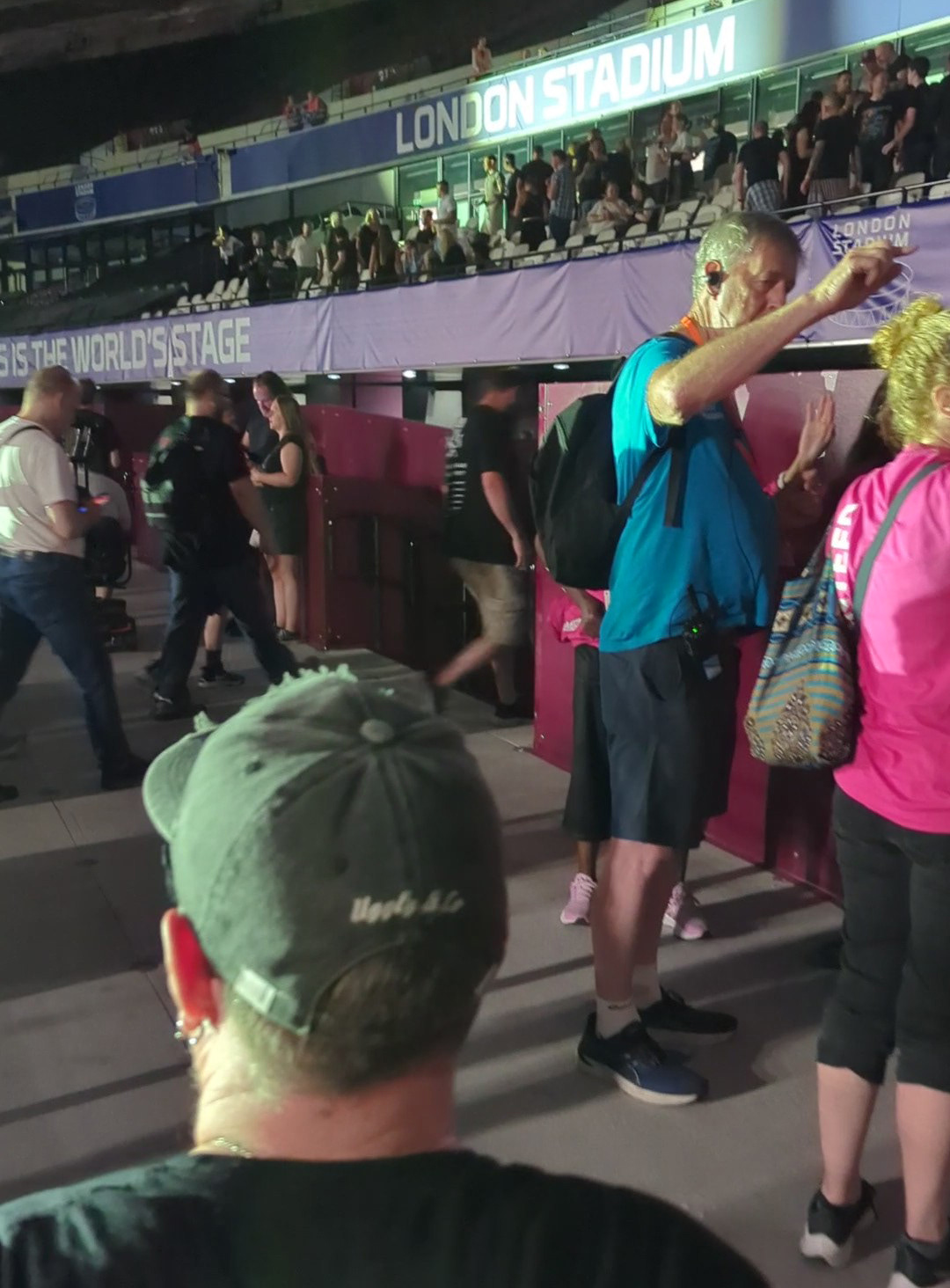
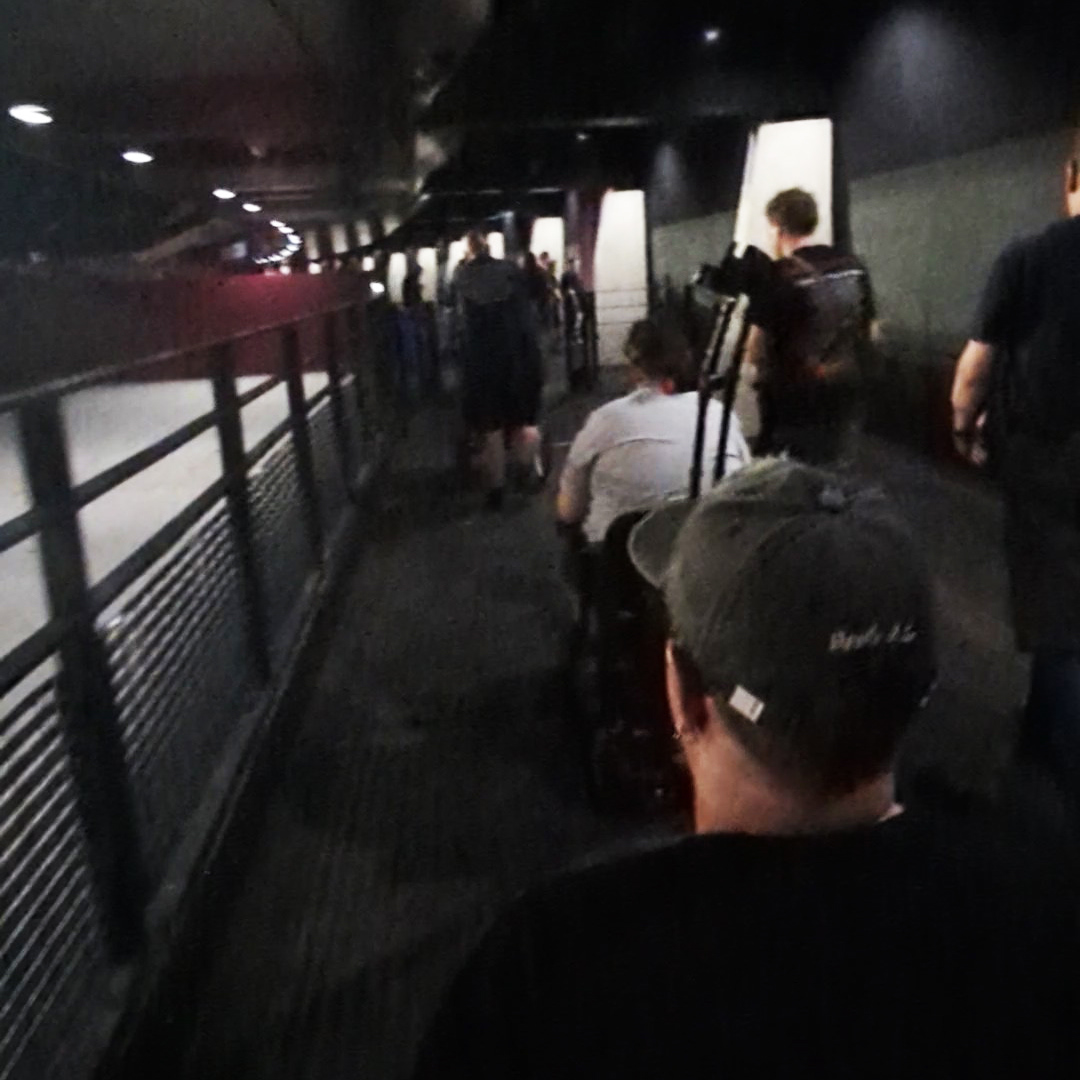
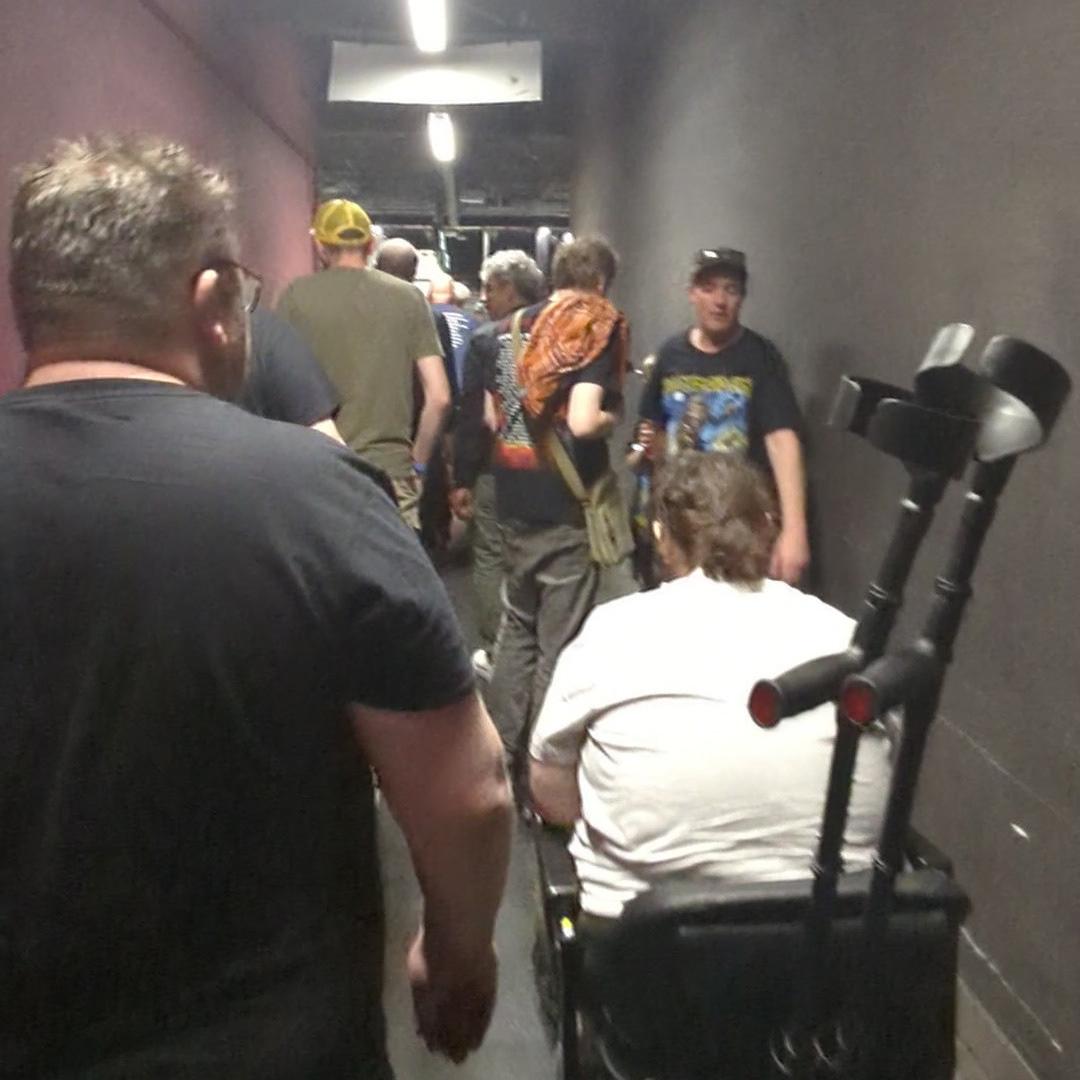


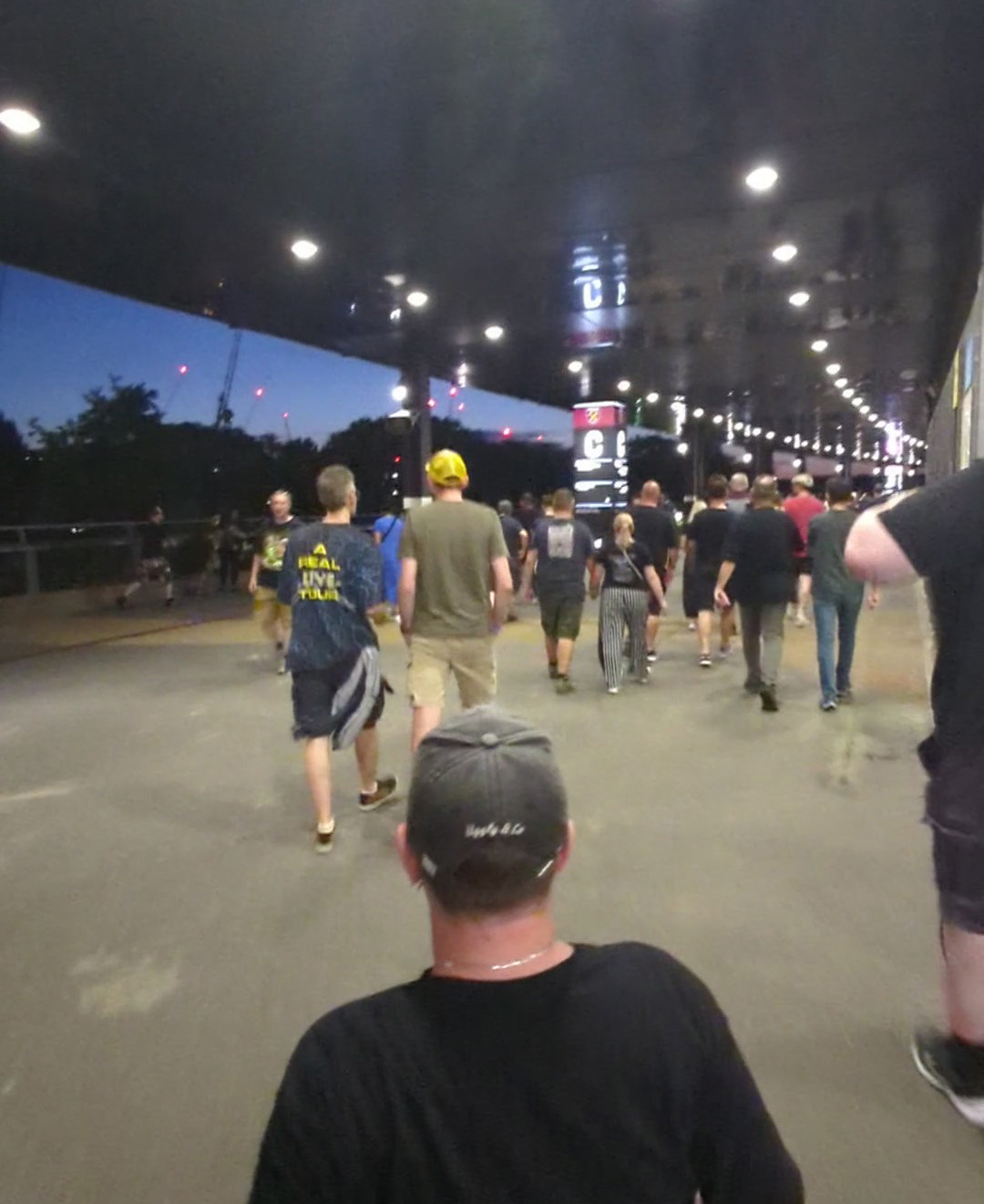
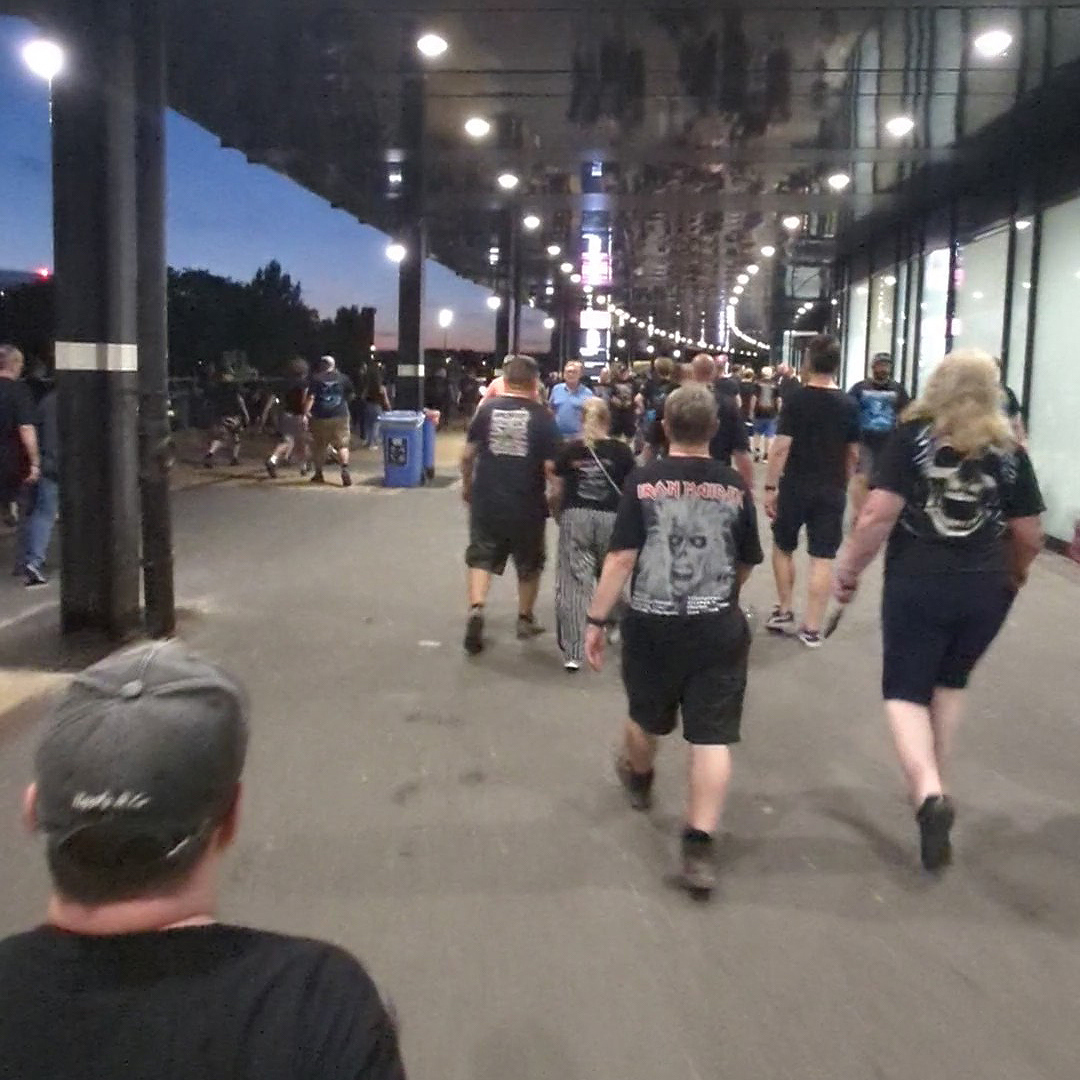
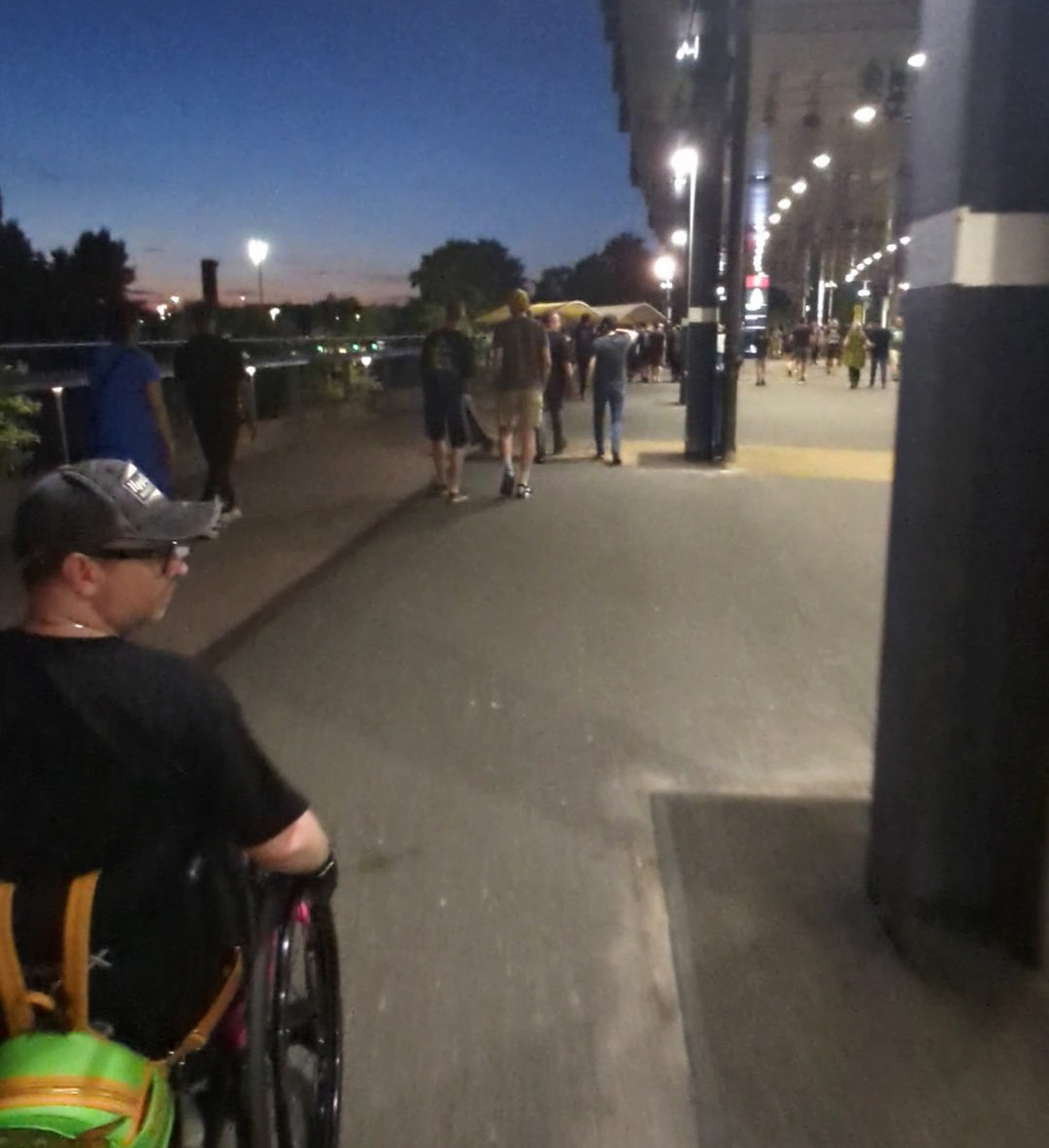

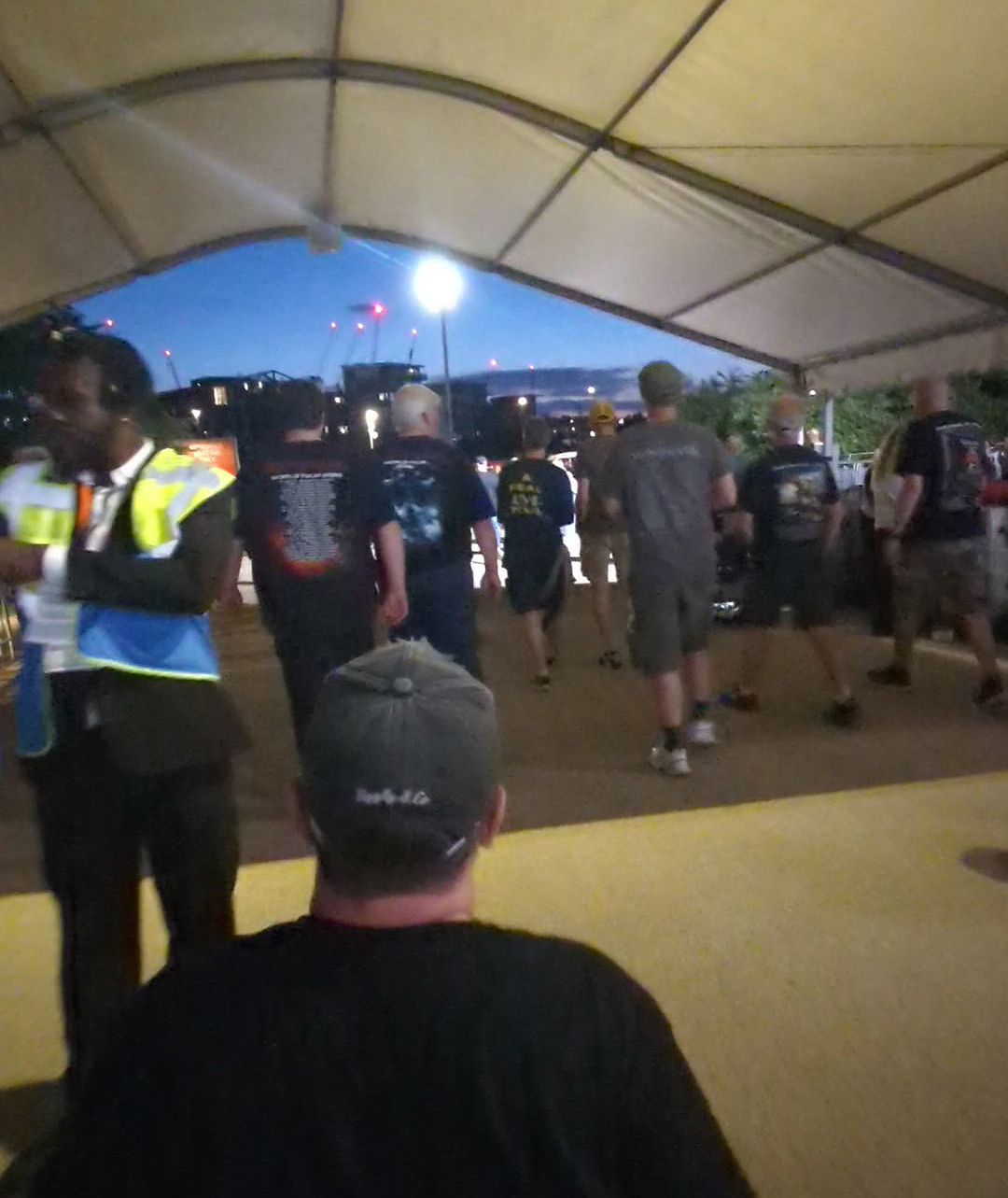


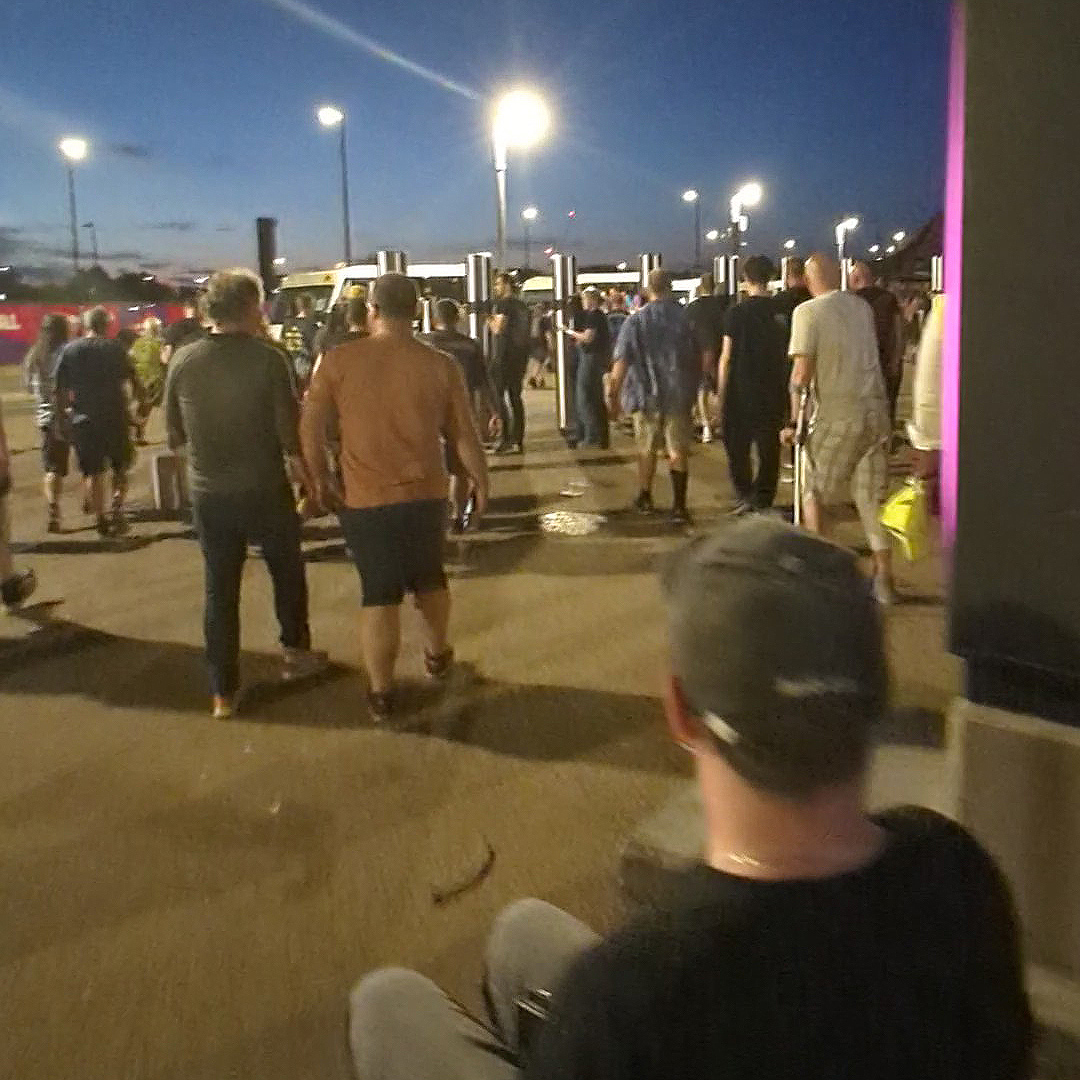
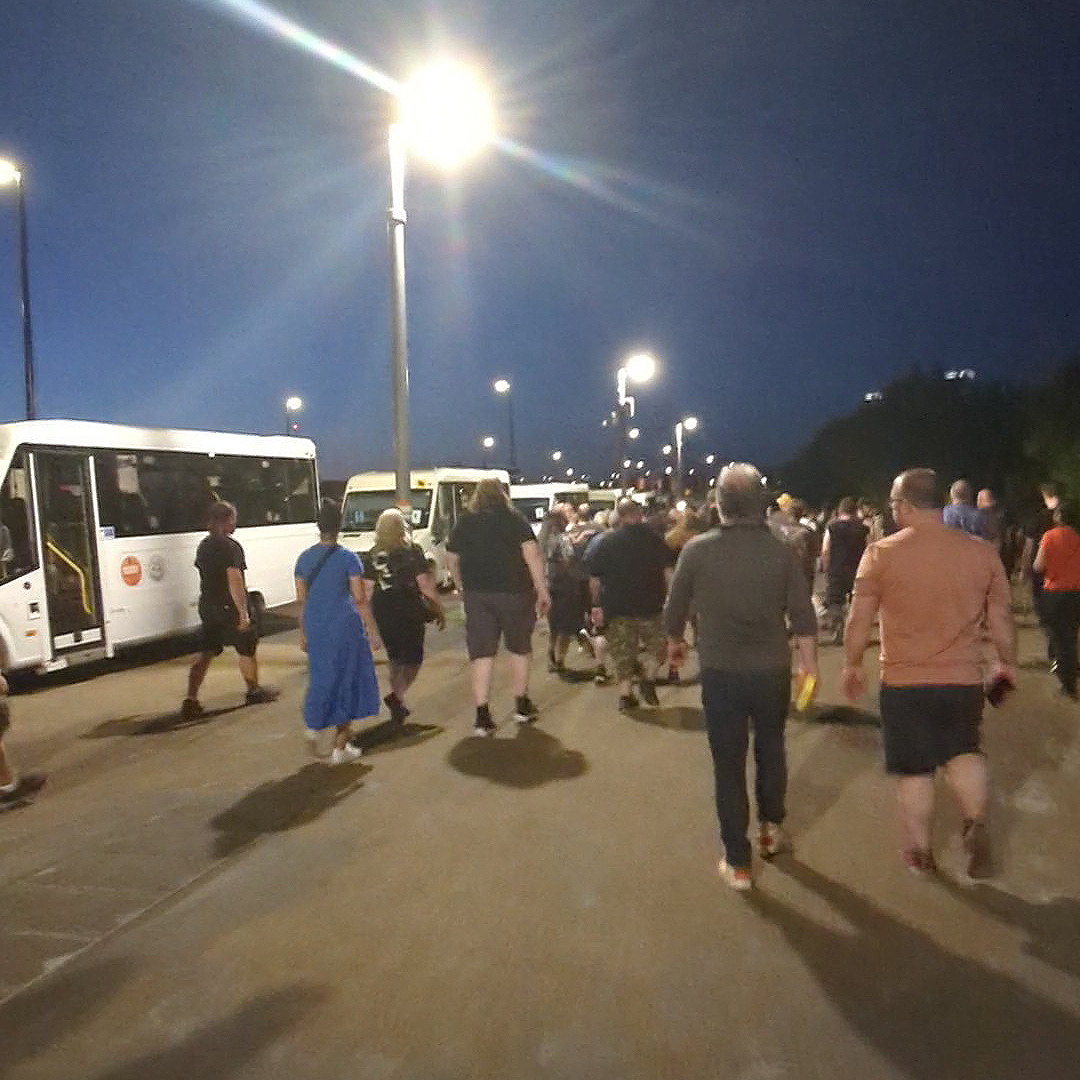
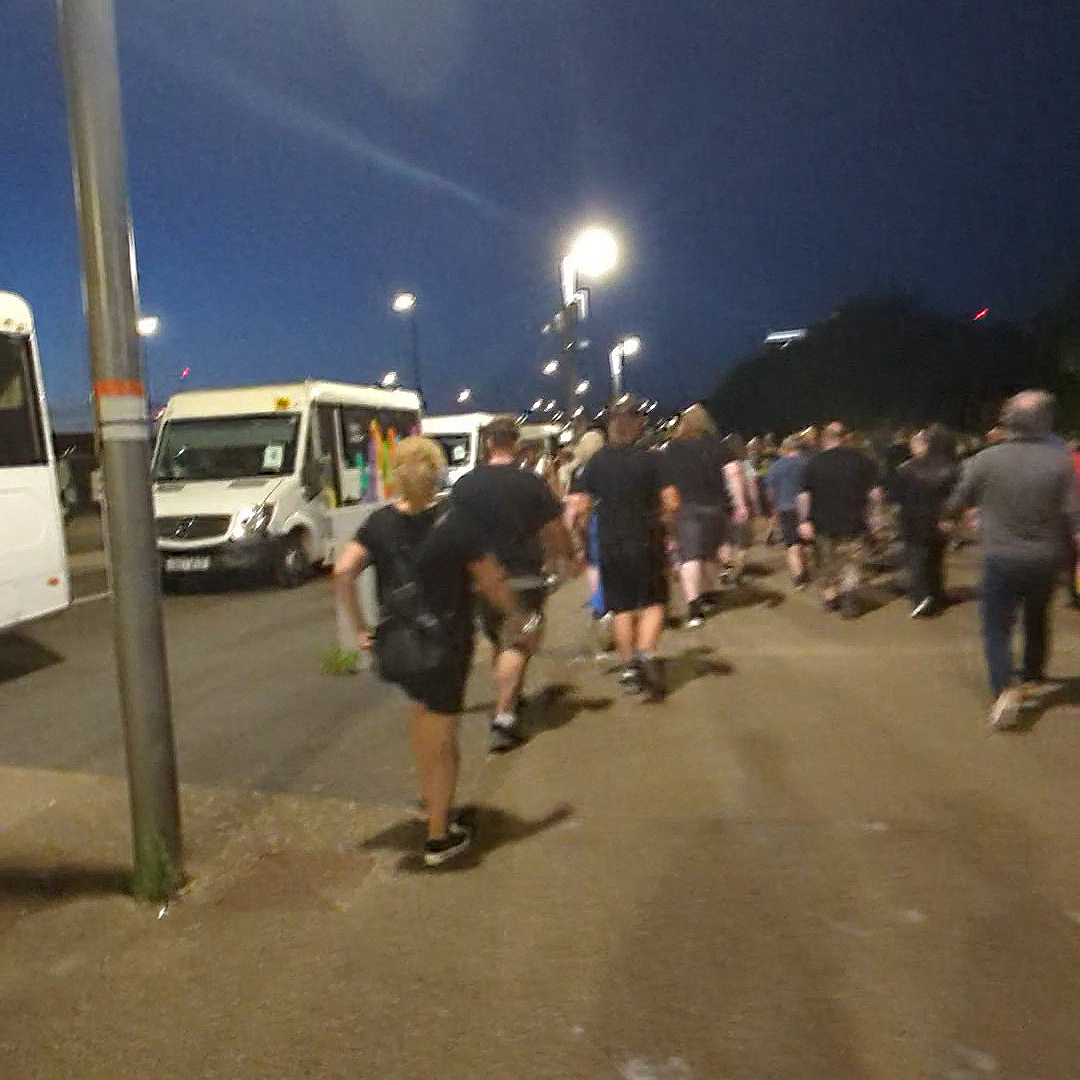

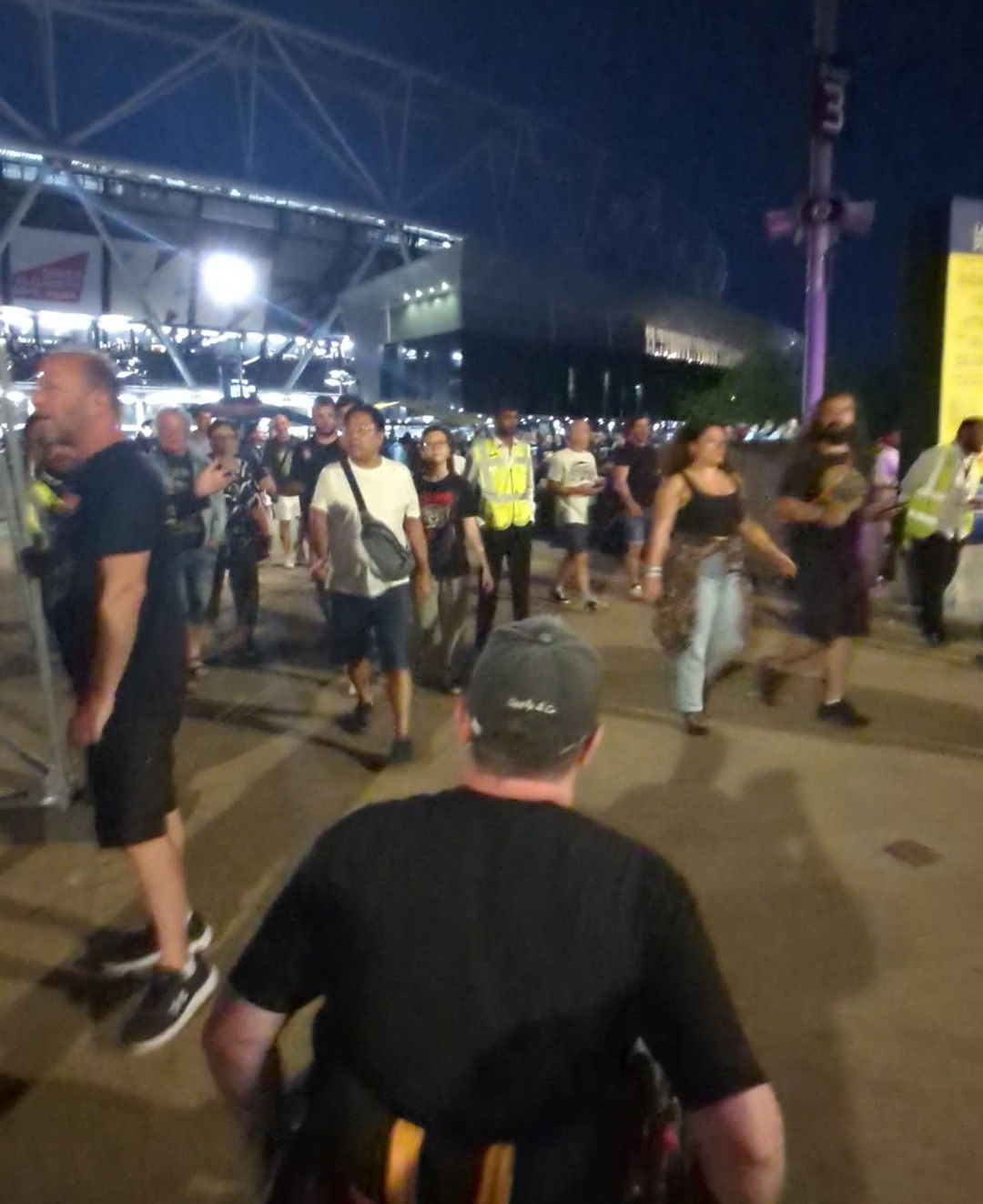
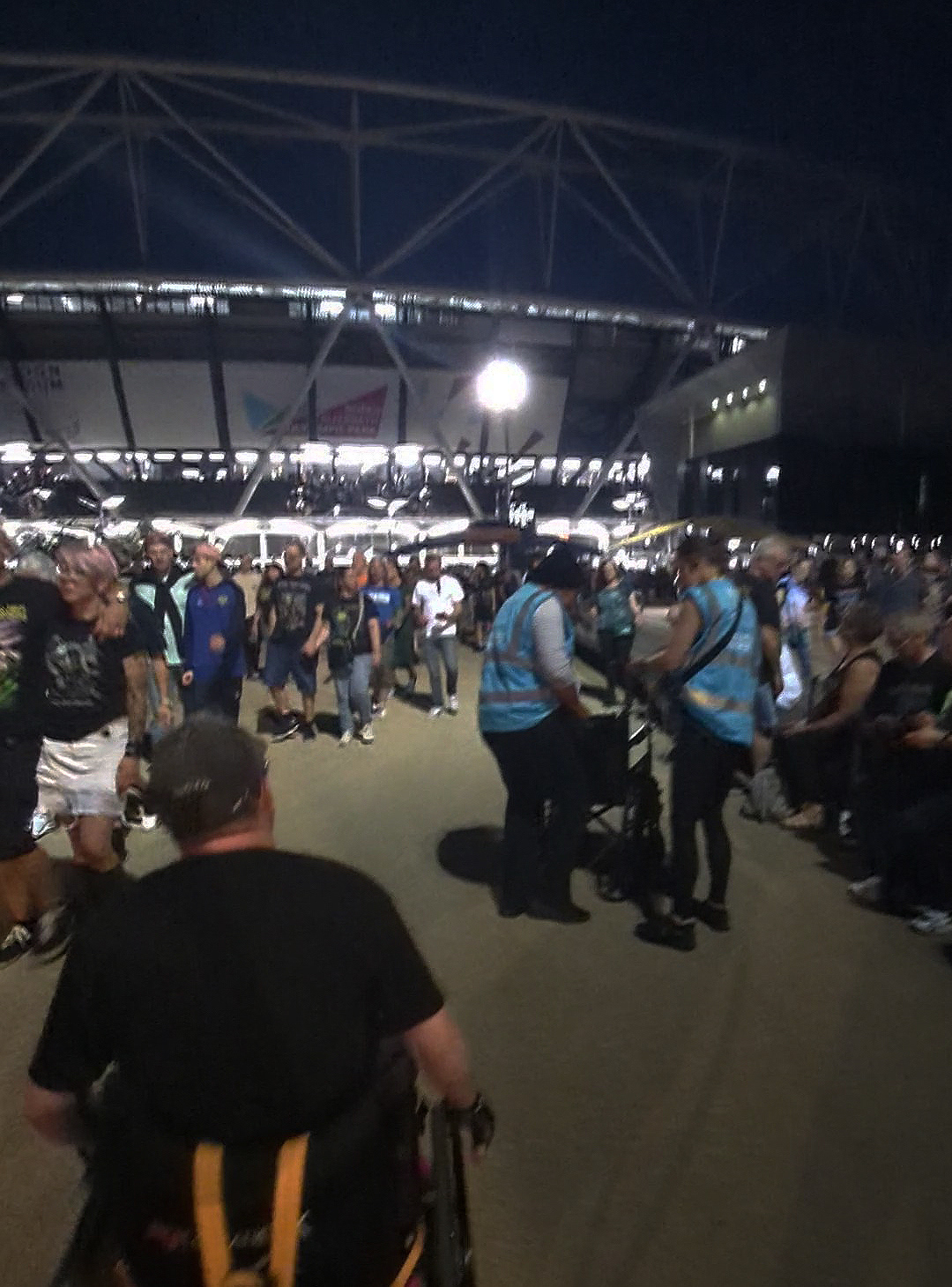
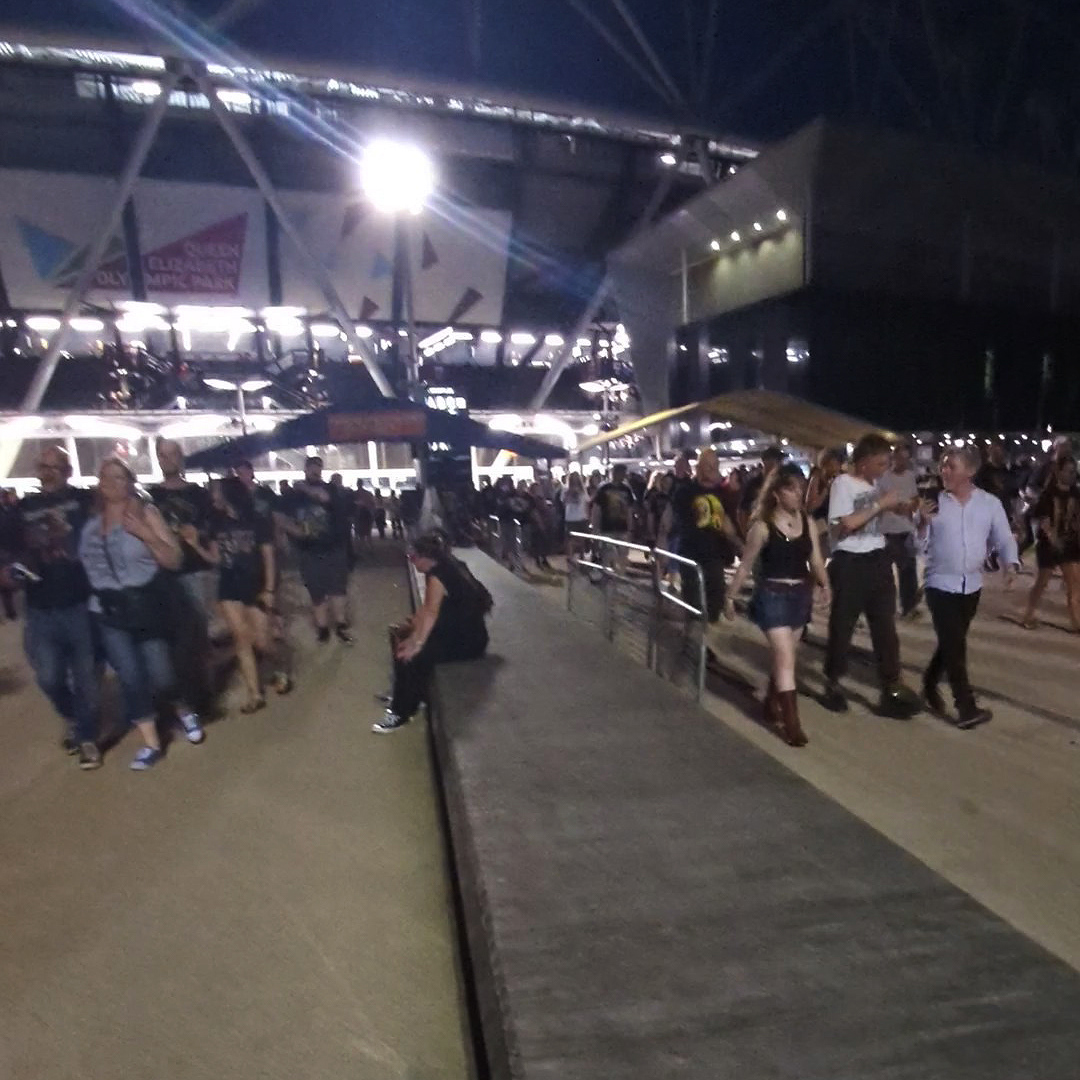

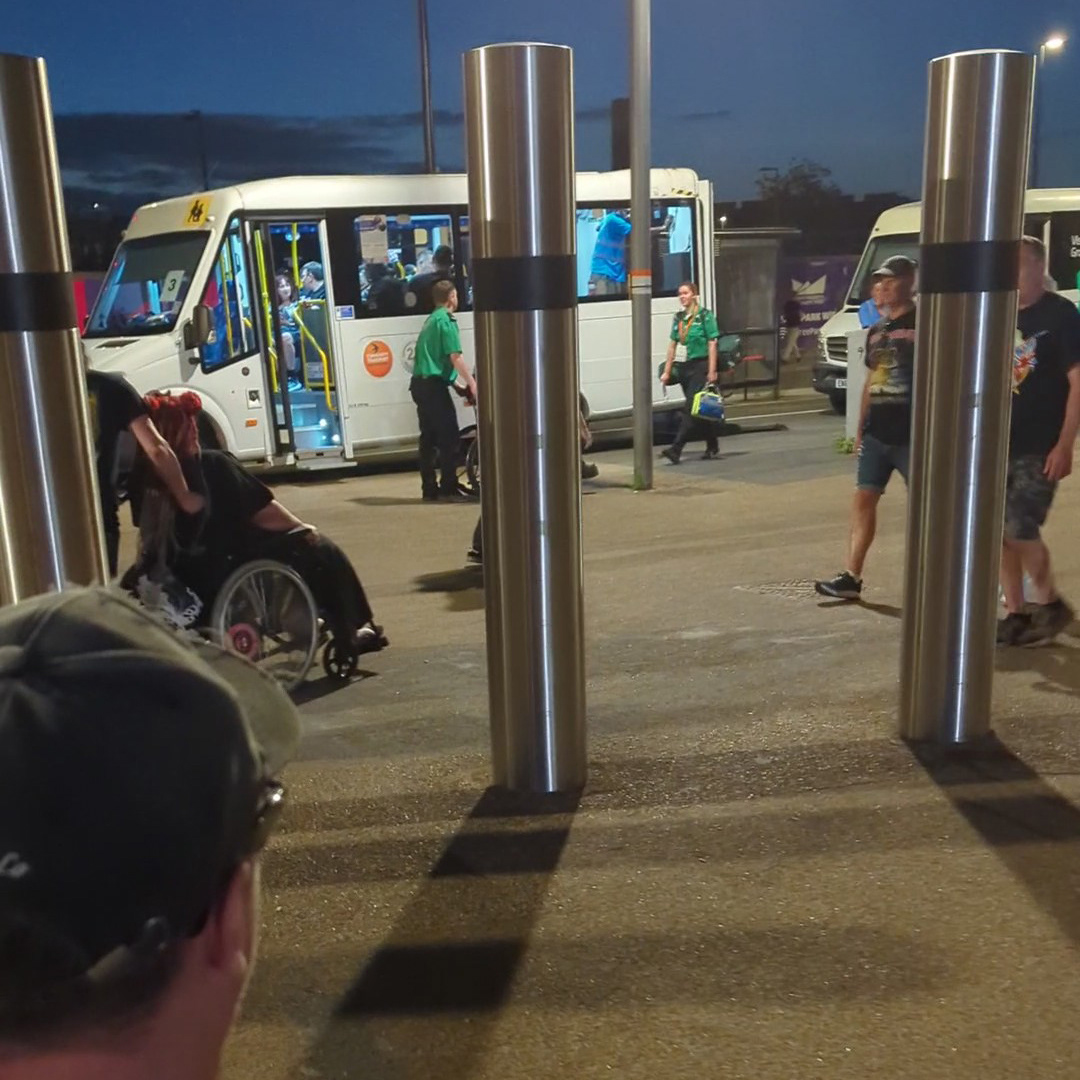
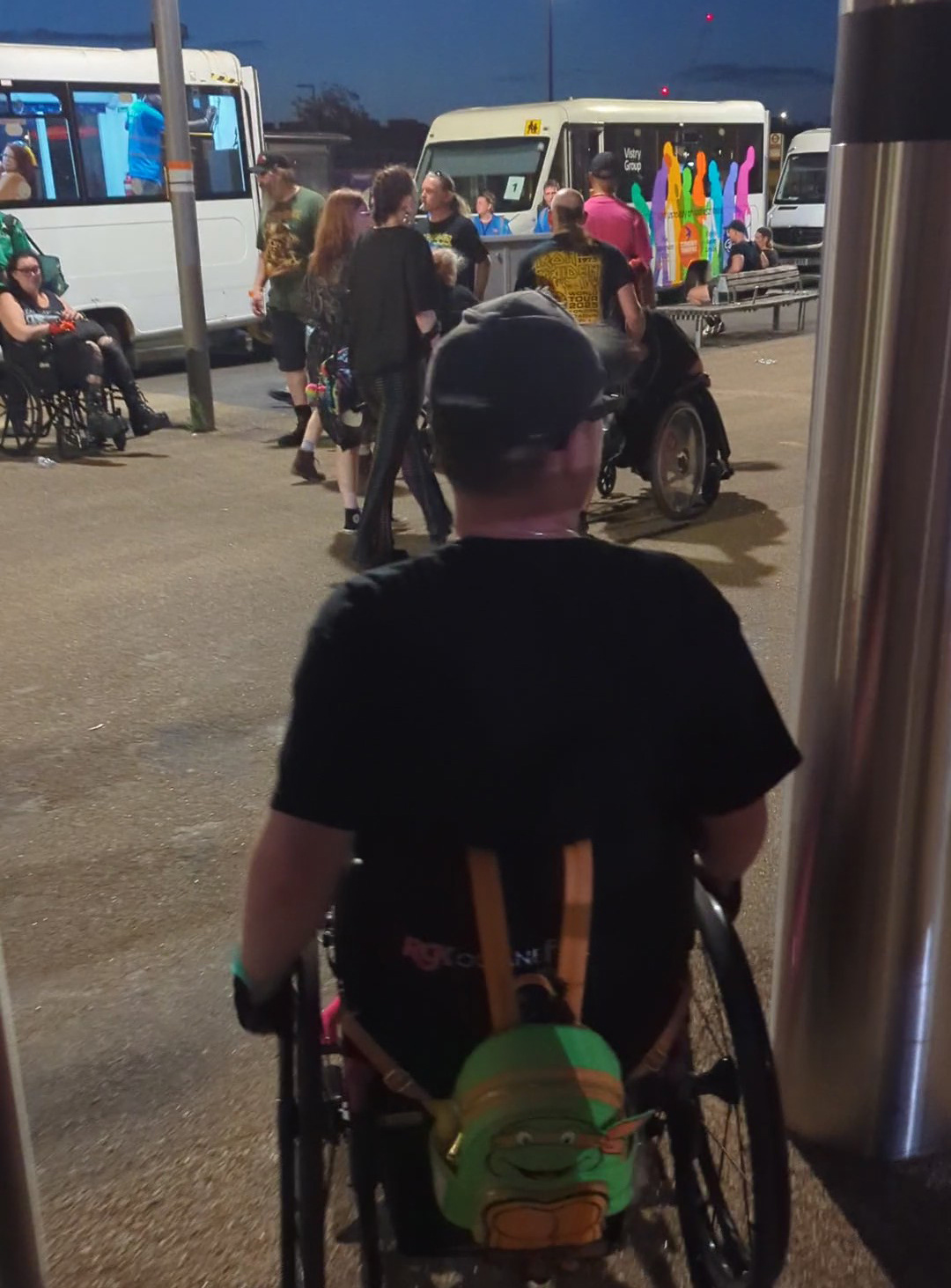
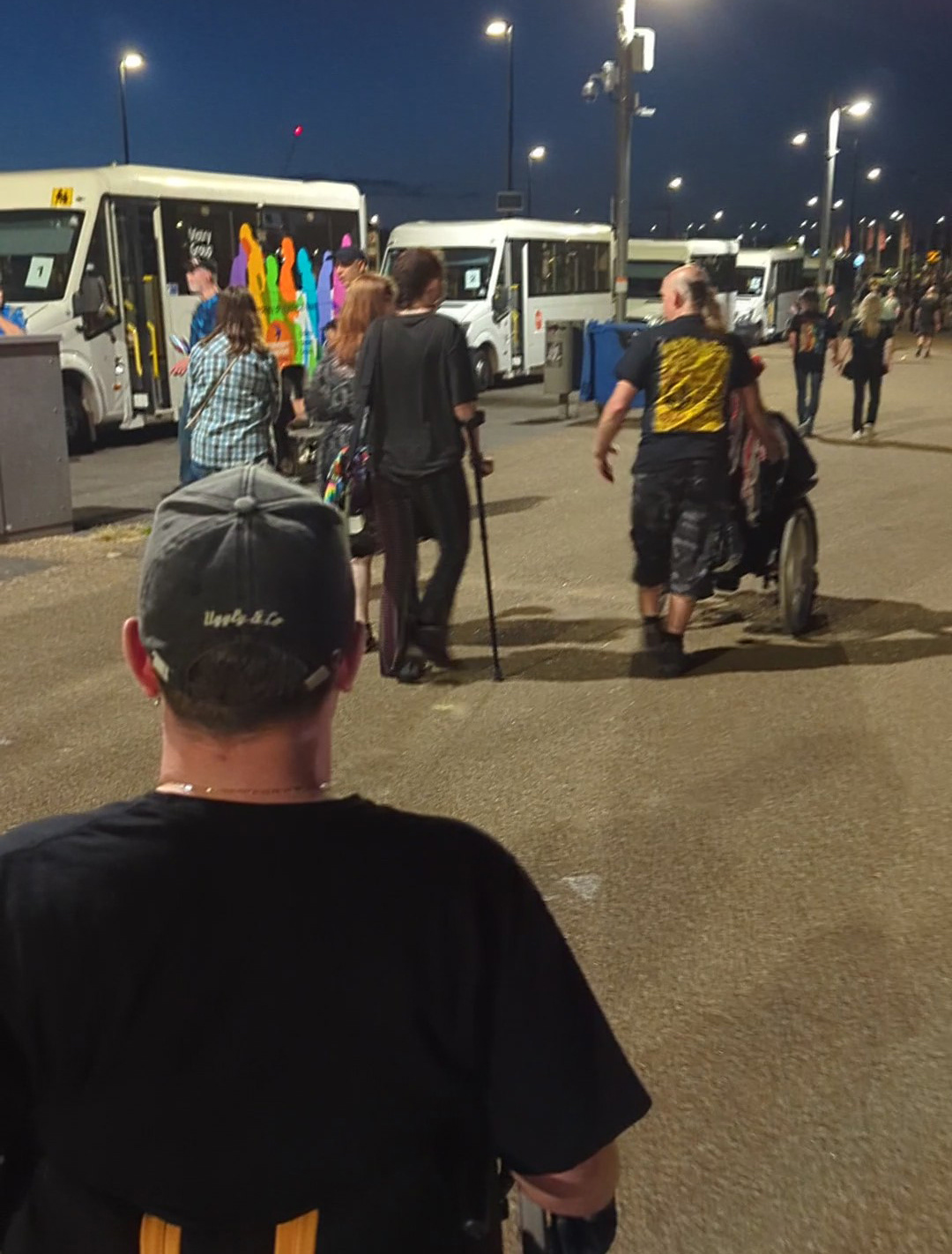


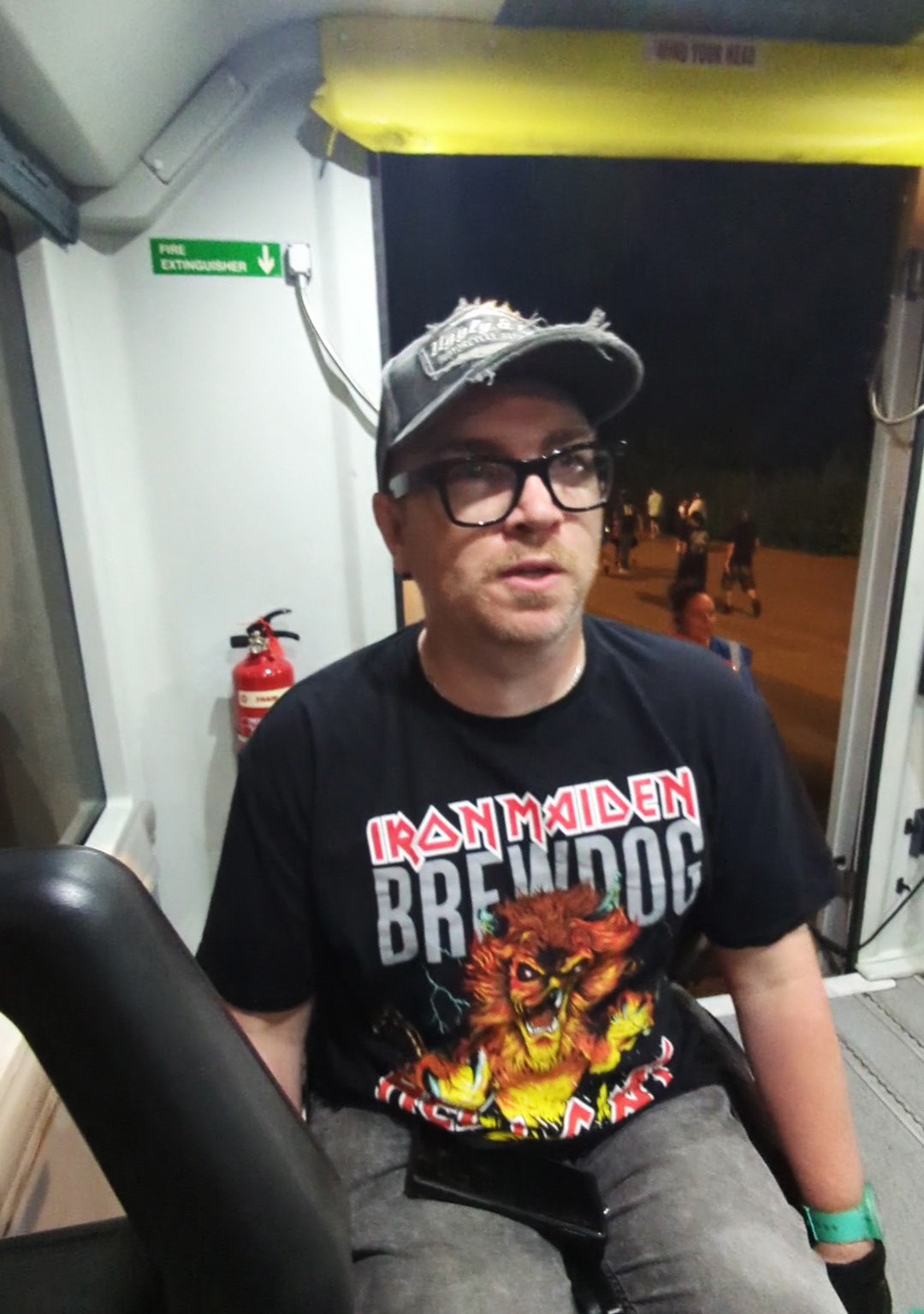
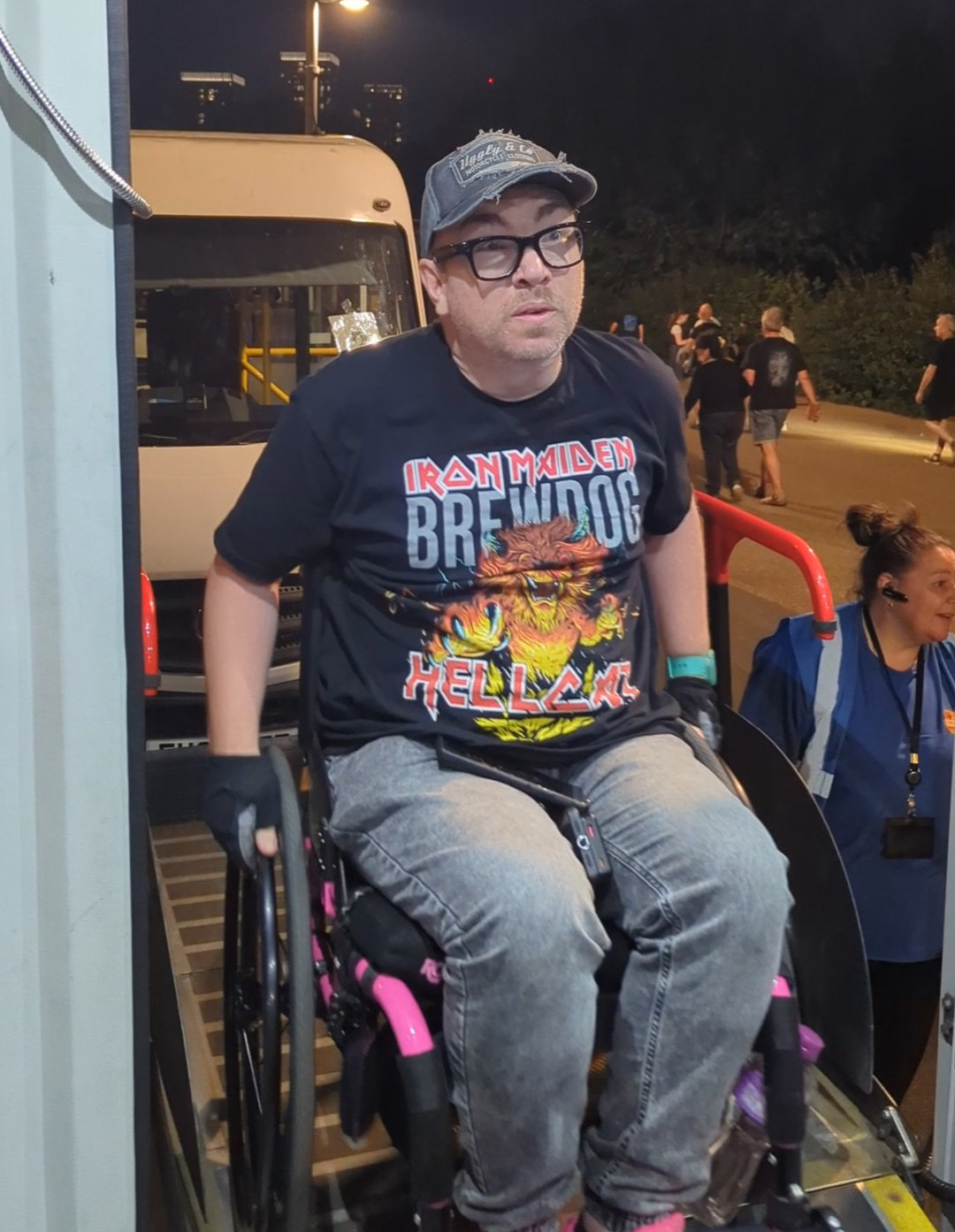
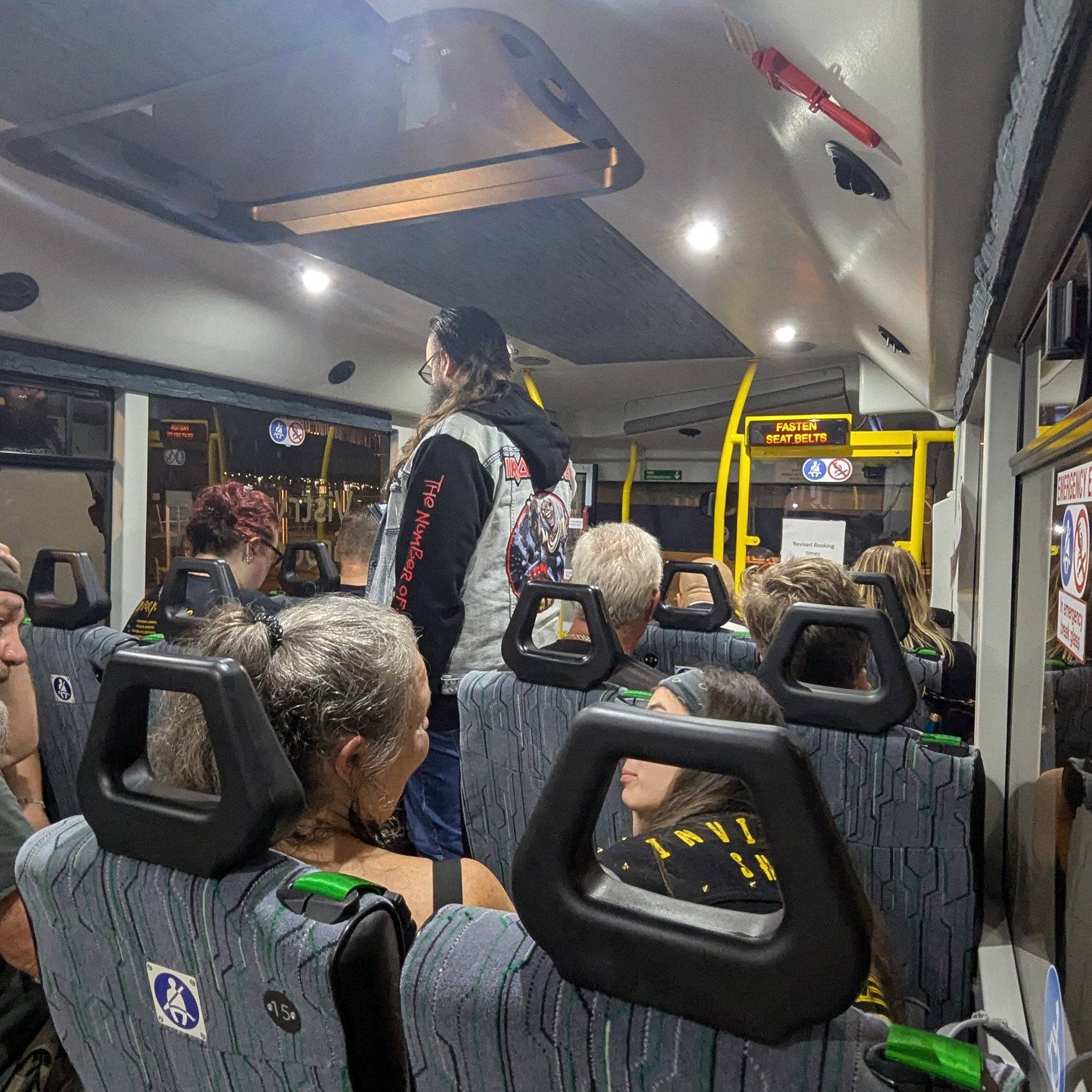
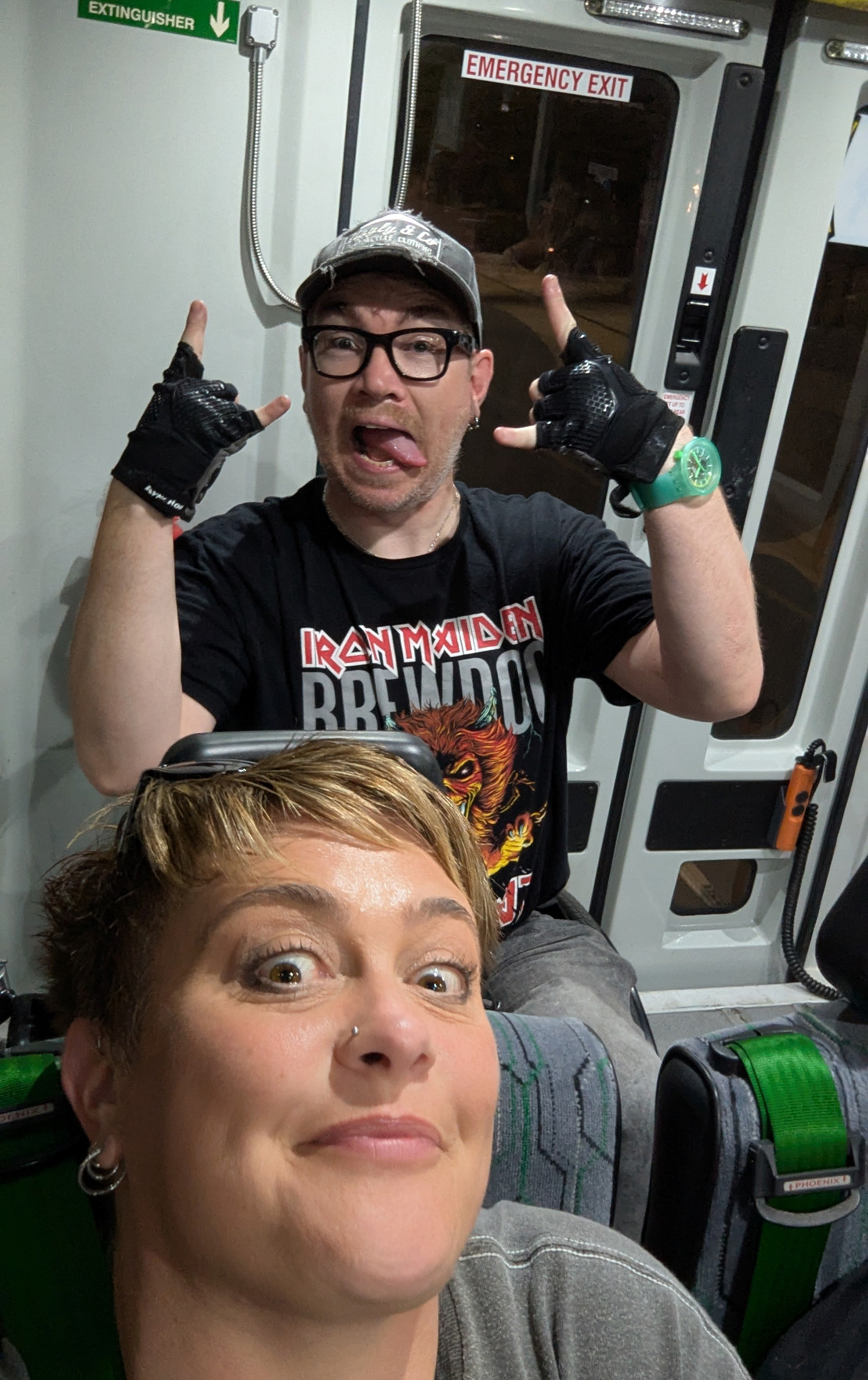

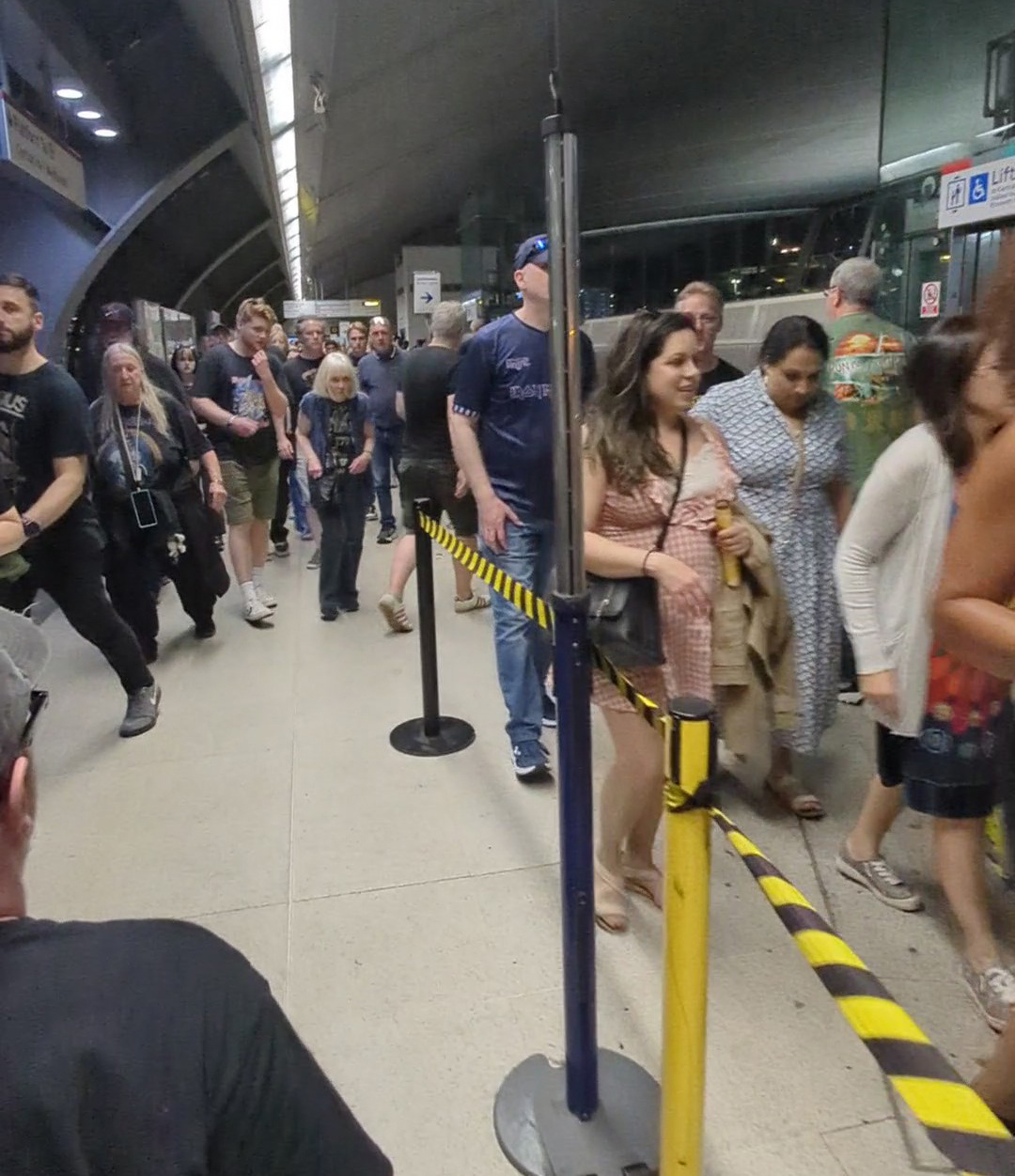
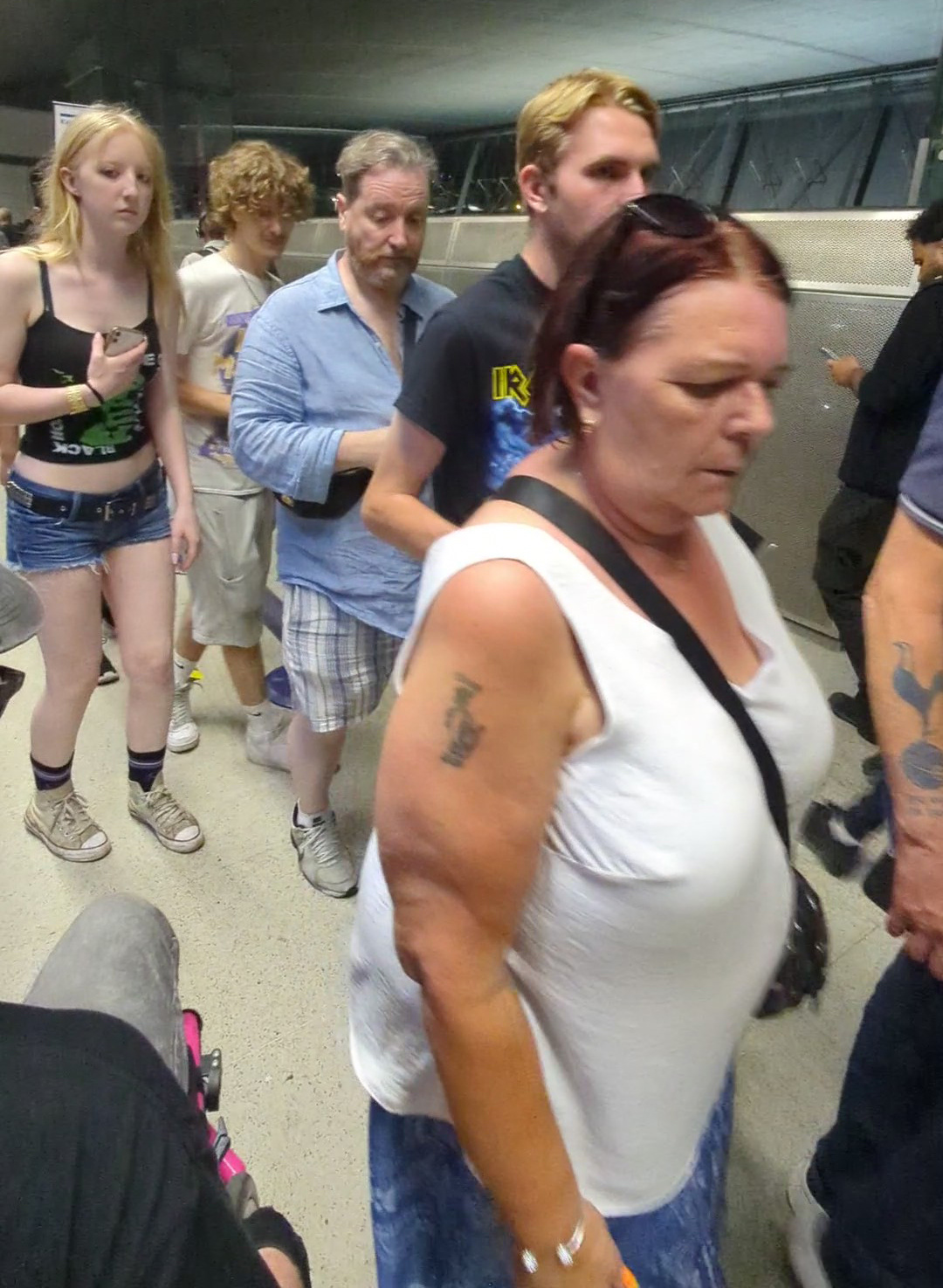
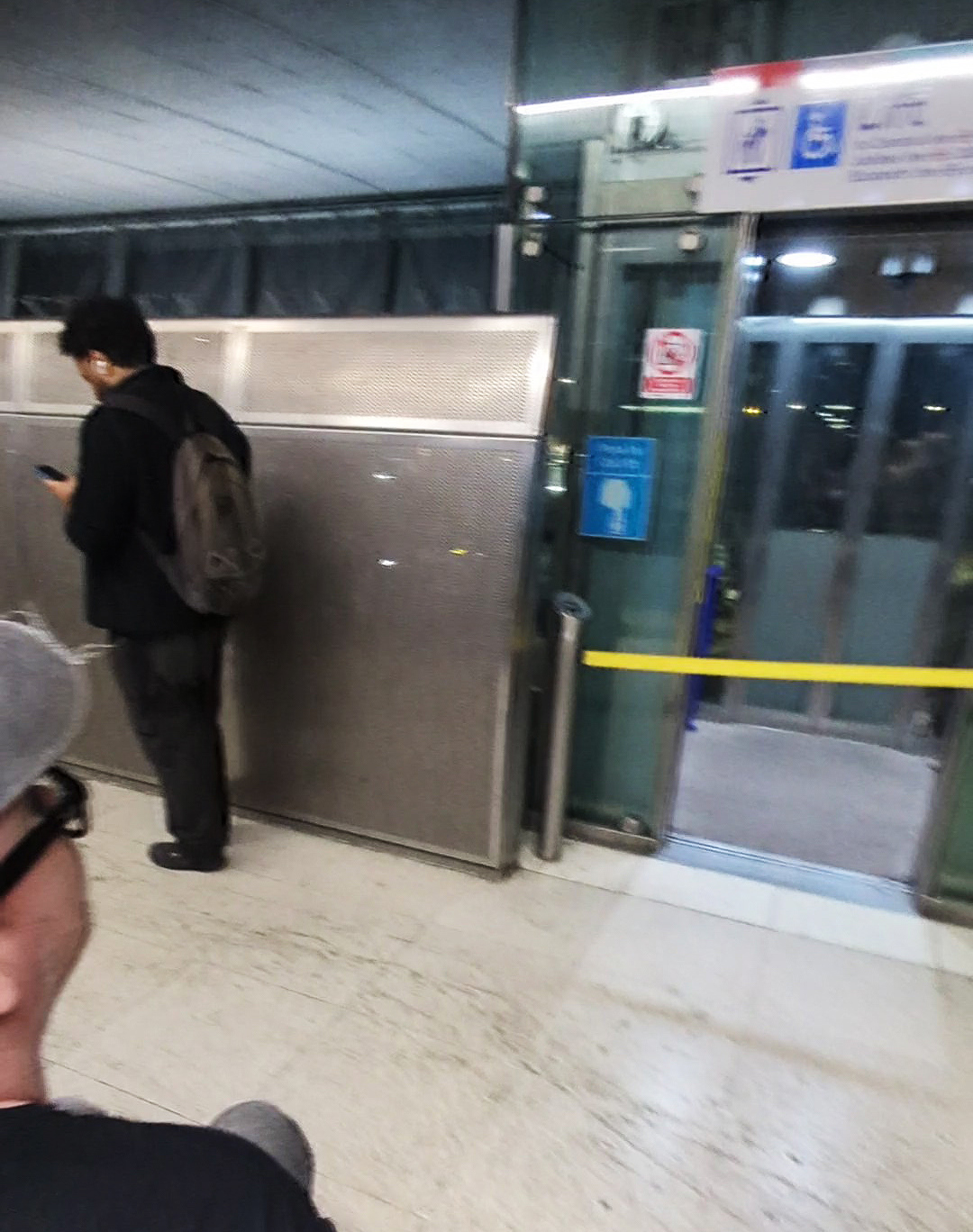

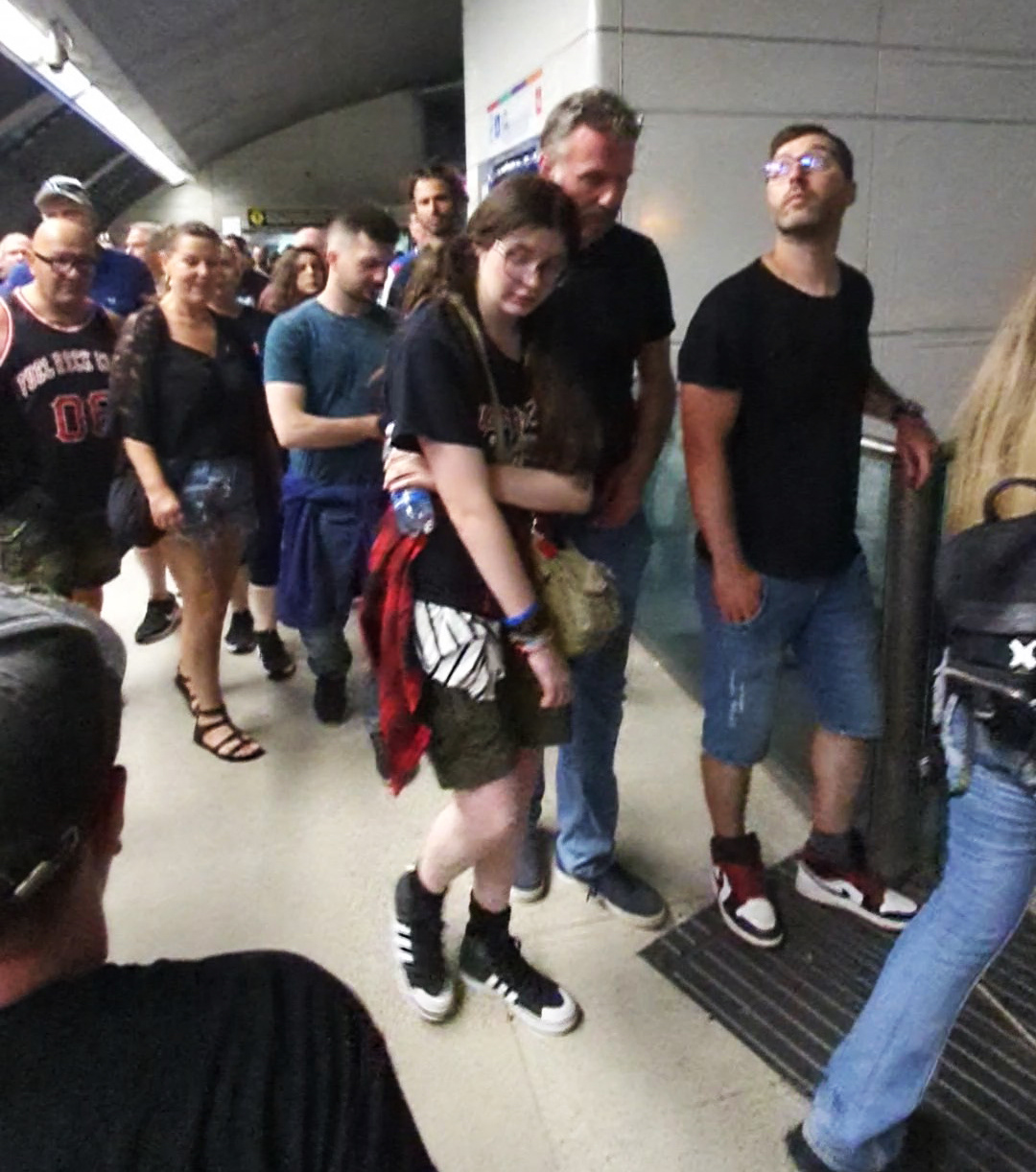

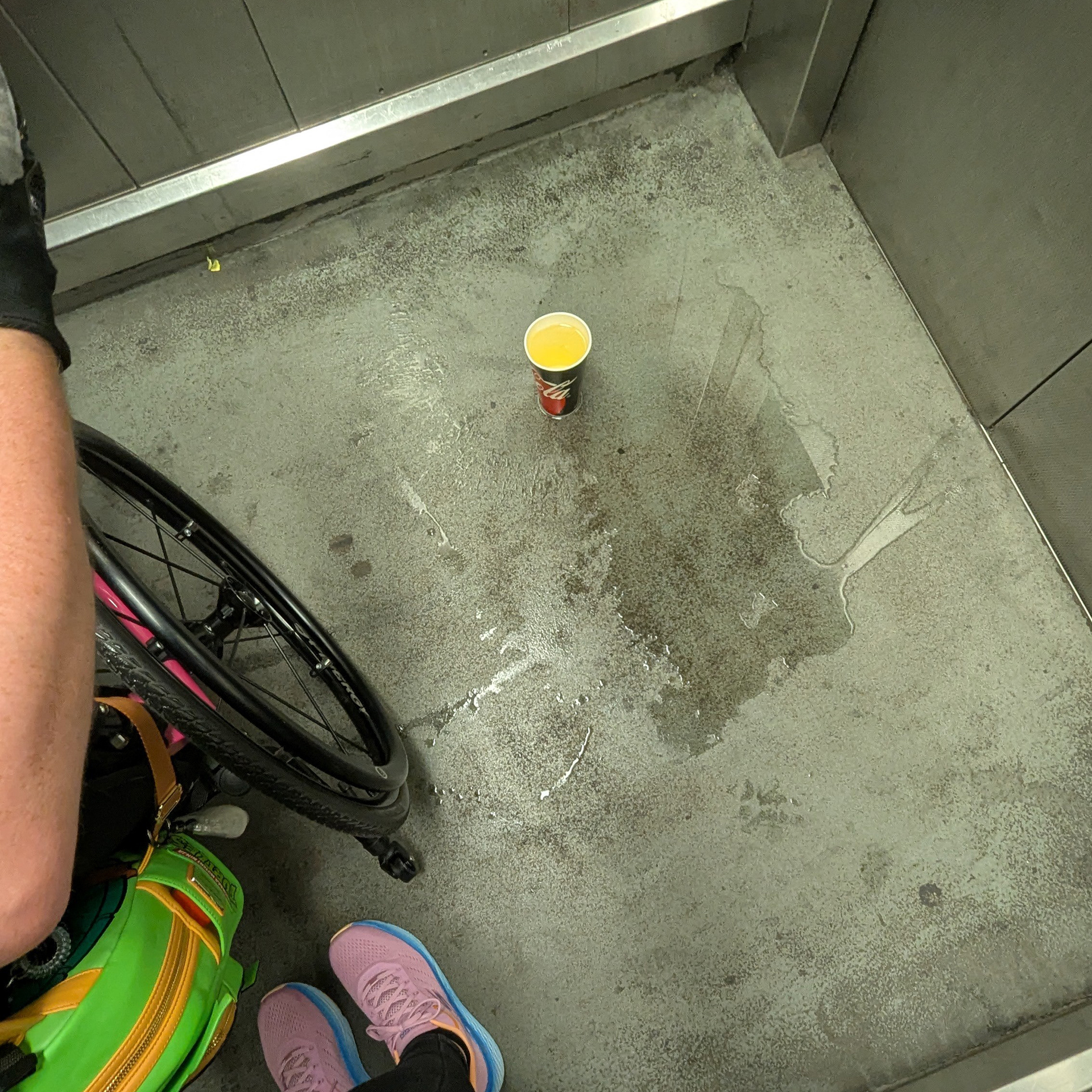
OVERALL EXPERIENCE
Much better than our previous visits. This was my first time here in my wheelchair, so I was pretty apprehensive knowing the issues we’d had before.
The accessible shuttle service works really well. It’s been well thought out that there’s seating available at the bus stop, and it’s a bonus to have a contact number in case you need any additional assistance.
Our seating platform was great. We had a good view but felt part of the crowd. It was beneficial that the platform area was kept clear at all times, making it feel much safer and easier to navigate.
The sound was good in the venue.
It was super hot in there. It was a very hot day, and the air inside the stadium was very still. When we were there in November 2015, it was the complete opposite - freezing cold and windy! Be prepared for the weather conditions!
I’d certainly consider visiting again for a concert, knowing the improvements have been made.
